You are using an out of date browser. It may not display this or other websites correctly.
You should upgrade or use an alternative browser.
You should upgrade or use an alternative browser.
Reviews by Jarlaxle
Filters
Show only:
Loading…
Jarlaxle
100+ Head-Fier
Pros: Clarity focused tuning
Good volume scaling
Inclusion of good cable
Nice pouch
Good volume scaling
Inclusion of good cable
Nice pouch
Cons: Slightly off timbre
A little bass light
A little bass light
Truthear is a relatively new brand in the IEM market, but everything they've released so far has been impressive. Their collaboration with Crinacle on the Zero IEMs has definitely helped, but their consistent quality suggests they are either very experienced or supported by industry giants.
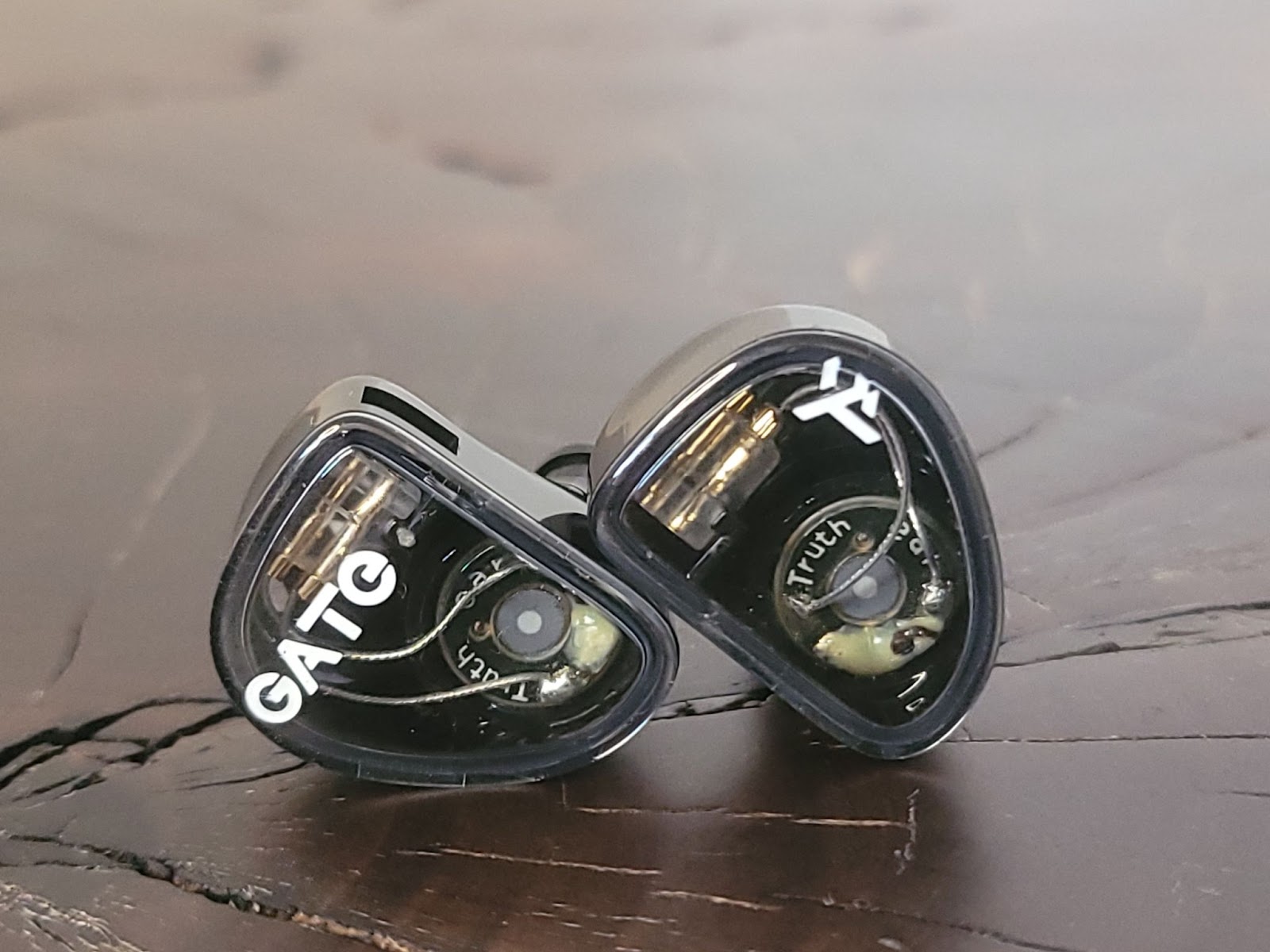
After the discontinuation of the Hola, a successor was anticipated, and Truthear answered with another ultra-budget IEM, the GATe. Priced at $18.99 ($19.99 with a mic), the GATe has big shoes to fill and stiff competition to overcome.
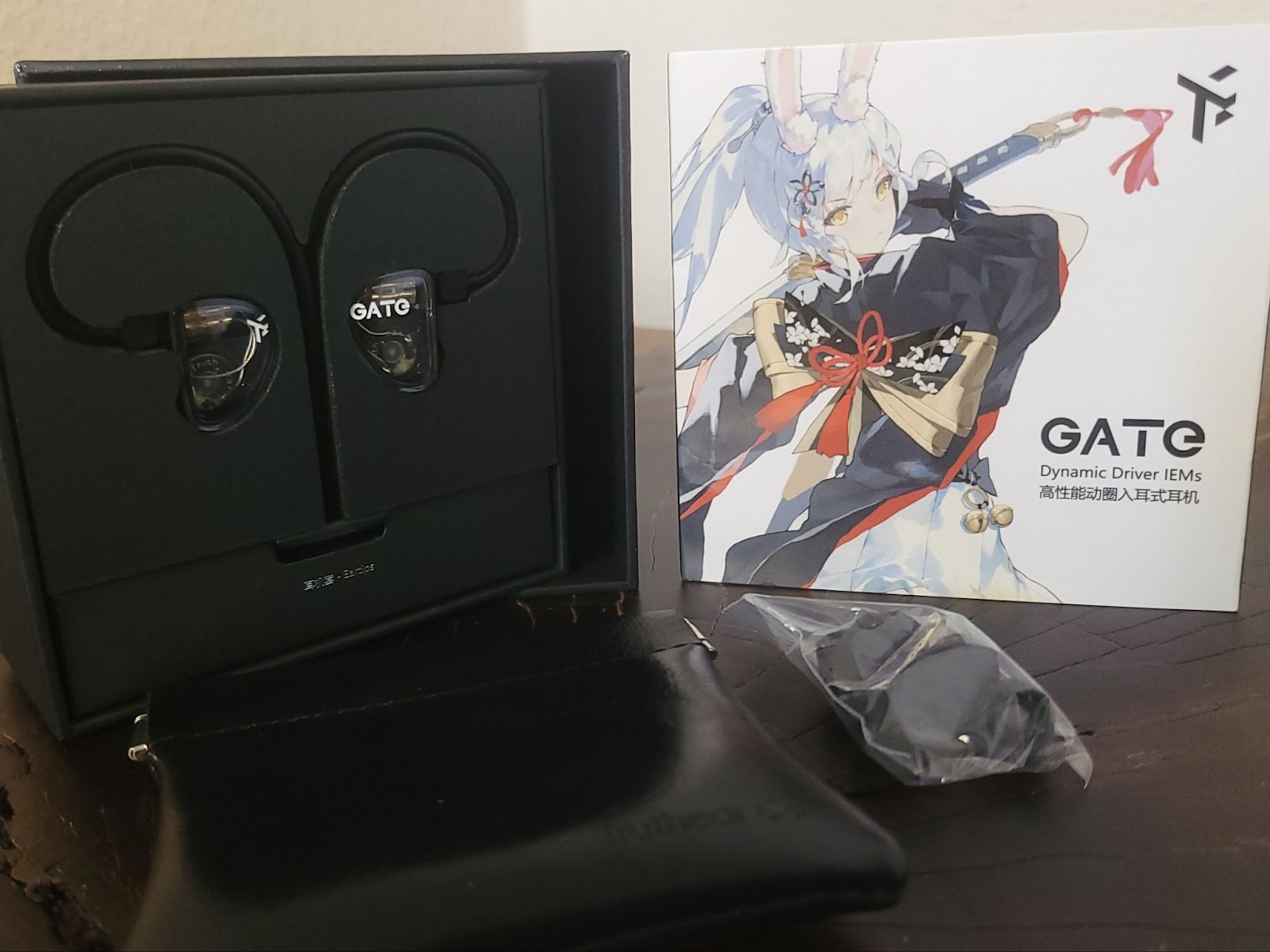
The GATe has a beautiful design with transparent faceplates. The insides aren't as attractive, featuring only a single dynamic driver, but I appreciate the look. The shells are entirely made of plastic, which might be a step down from the Hola. I don't mind it, but former Hola users might feel a bit betrayed. The shells have a small wing that helps with fit security without being annoying.
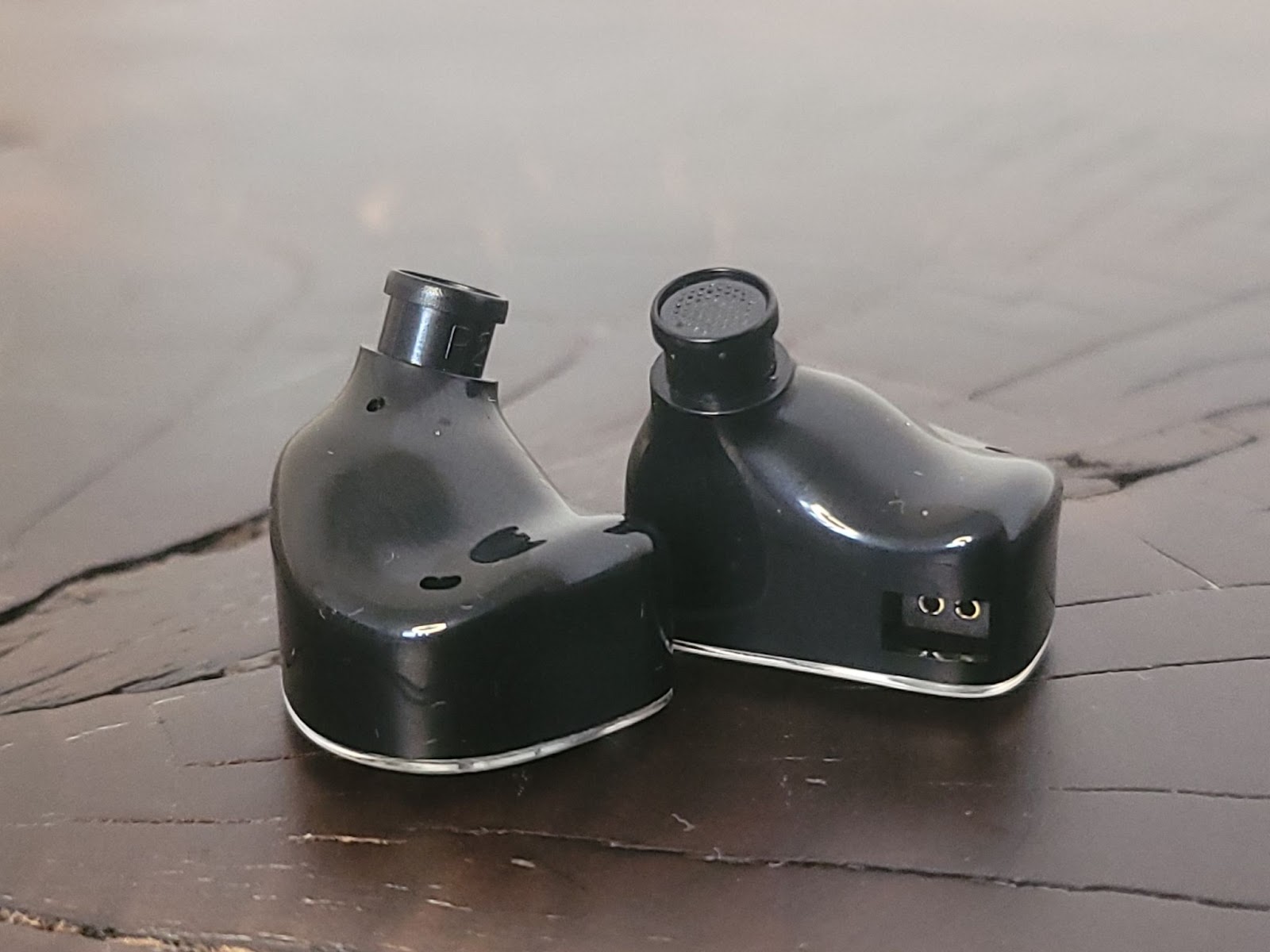
This time around, Truthear went with a clarity-focused tuning for their ultra-budget offering. On first listen, the clarity and vividness stood out, but it felt bass-light. The GATe isn't devoid of bass; it actually has more bass than some older ultra-budget IEMs like the Moondrop Chu and 7Hz Salnotes Zero. However, the upper mids and treble are more prominent than the bass. The GATe scales well with volume and comes alive, a sentiment confirmed by a few of my friends.
The mid frequencies on GATe are very well-tuned. As I mentioned, the GATe's clarity-focused tuning makes the mids its best feature. The treble isn’t harsh, peaky, or piercing, but there is a slight unevenness that affects the timbre a bit.
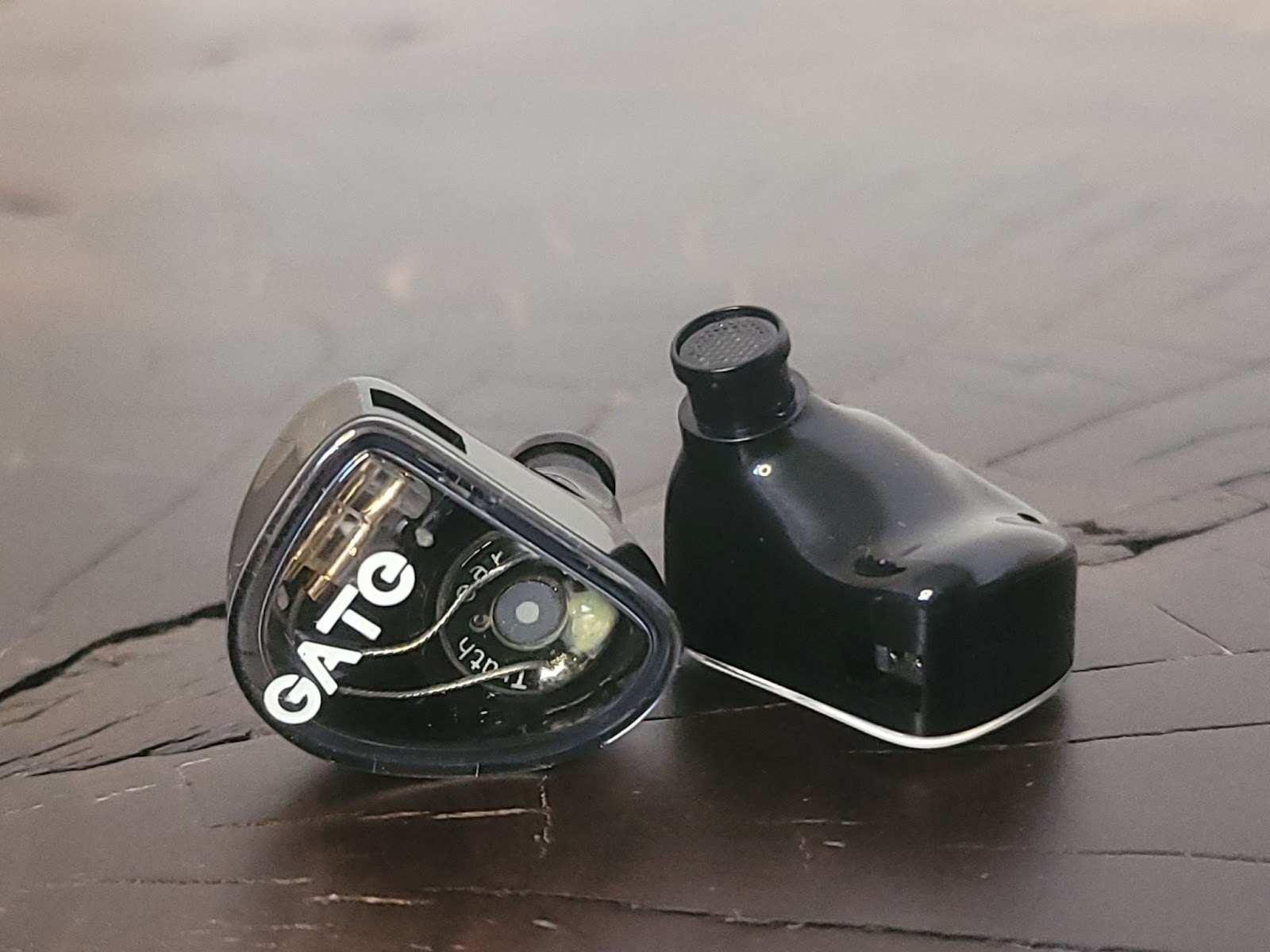
Discussing technicalities for ultra-budget IEMs might seem pointless. There are technically better or worse IEMs in this price range, but ultimately, you get what you pay for. In the GATe’s case, it has decent imaging and staging capabilities. The timbre is slightly off but not too bad. The clarity-focused tuning helps reveal a good amount of detail, but the drivers' resolving capability can barely keep up. However, these drivers are pretty good among other ultra-budget IEMs since the GATe scales well with volume.
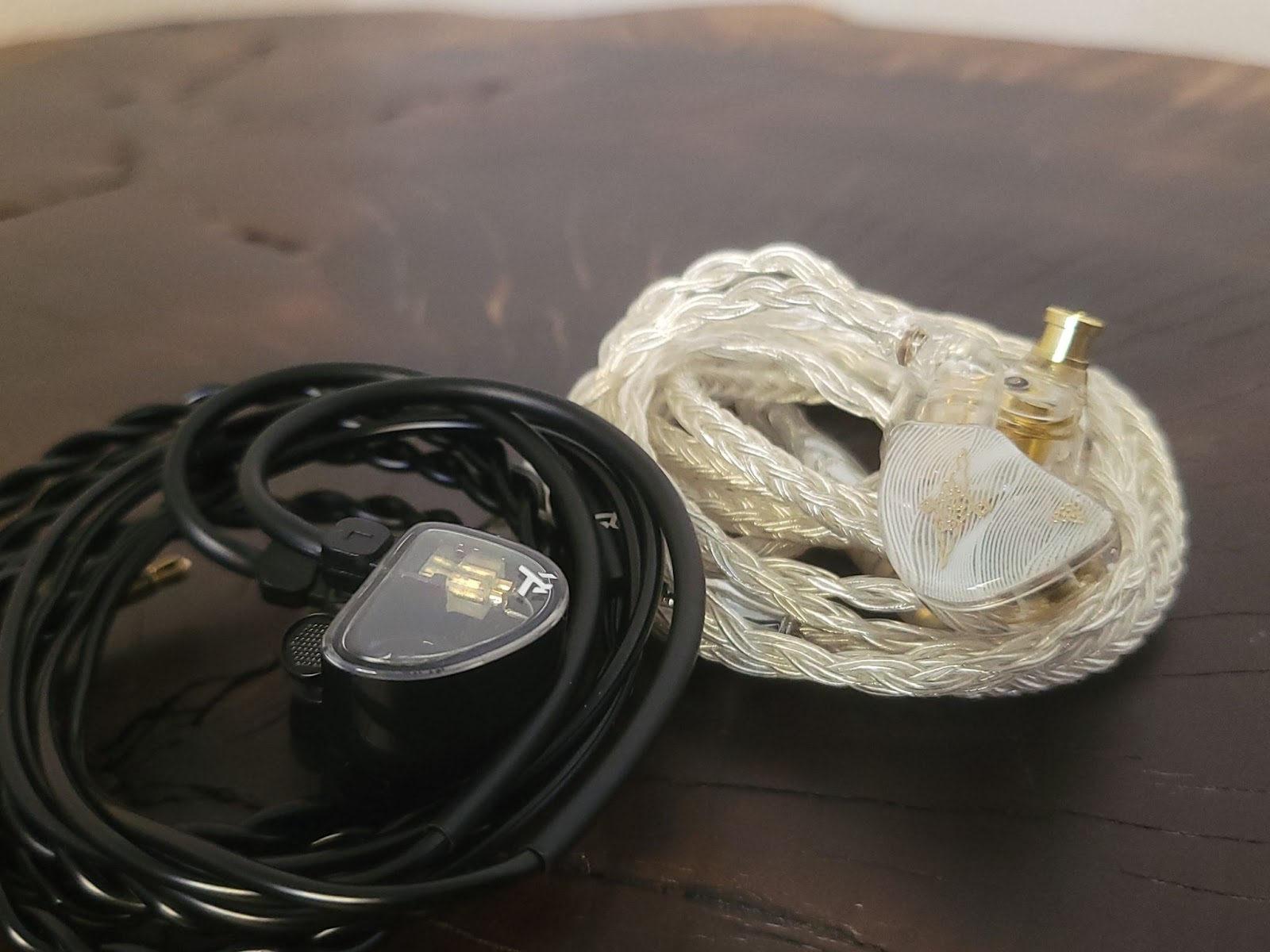
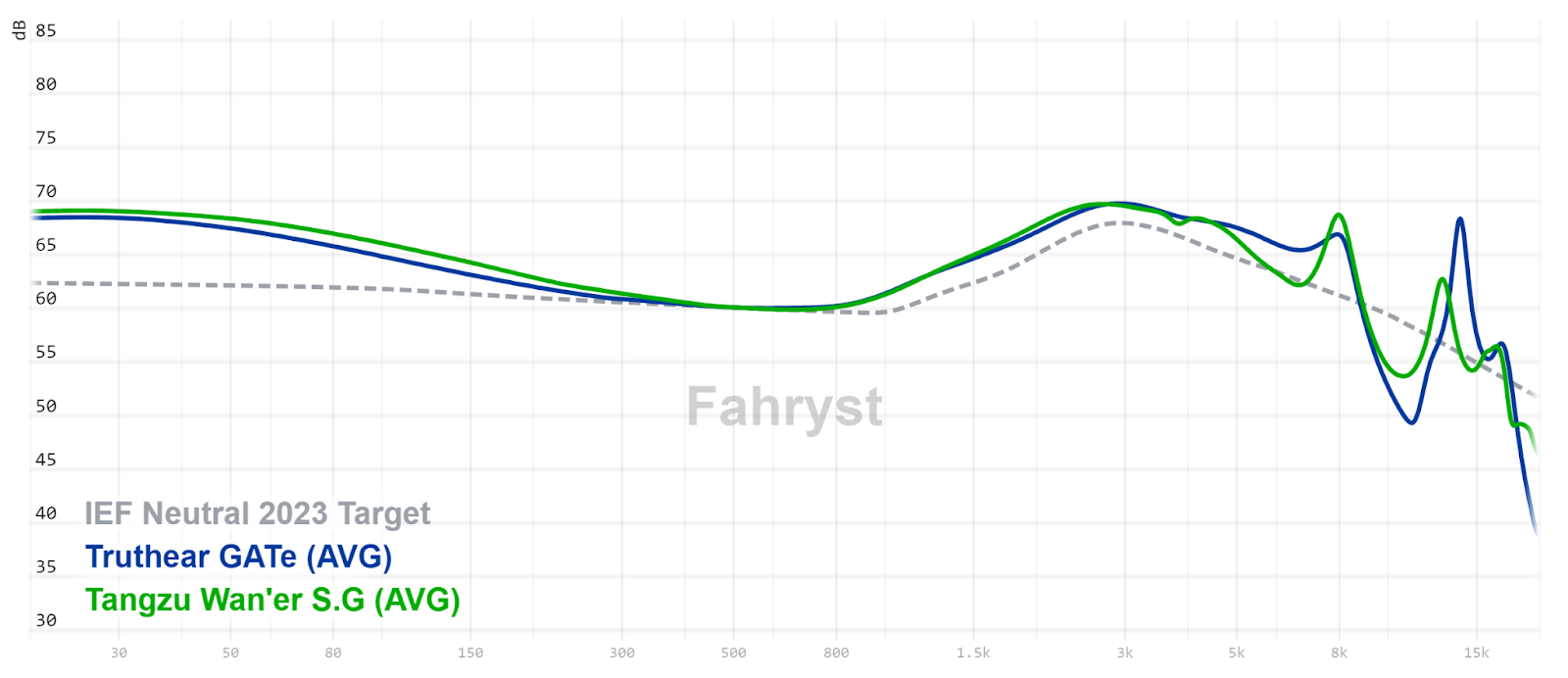
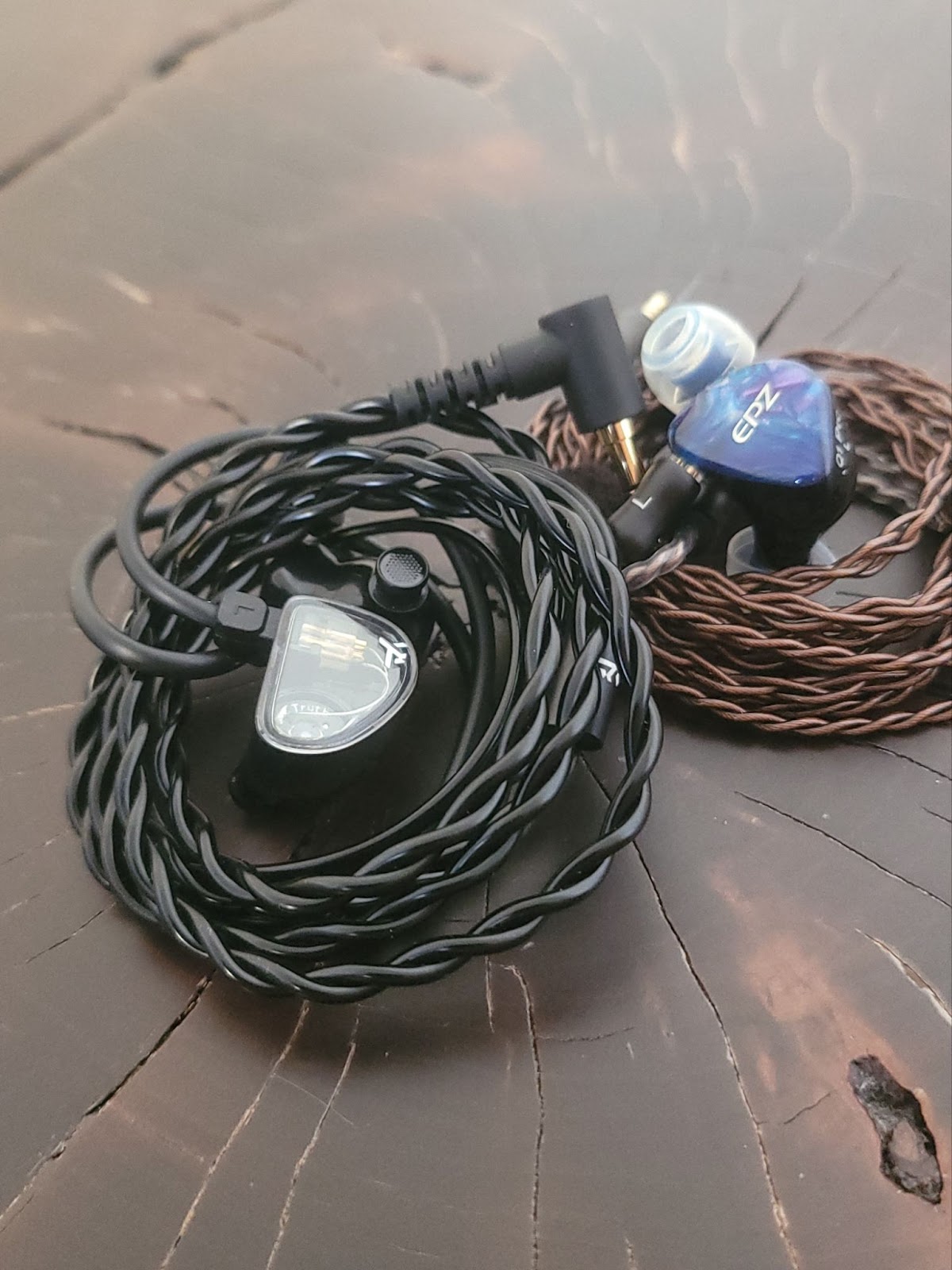
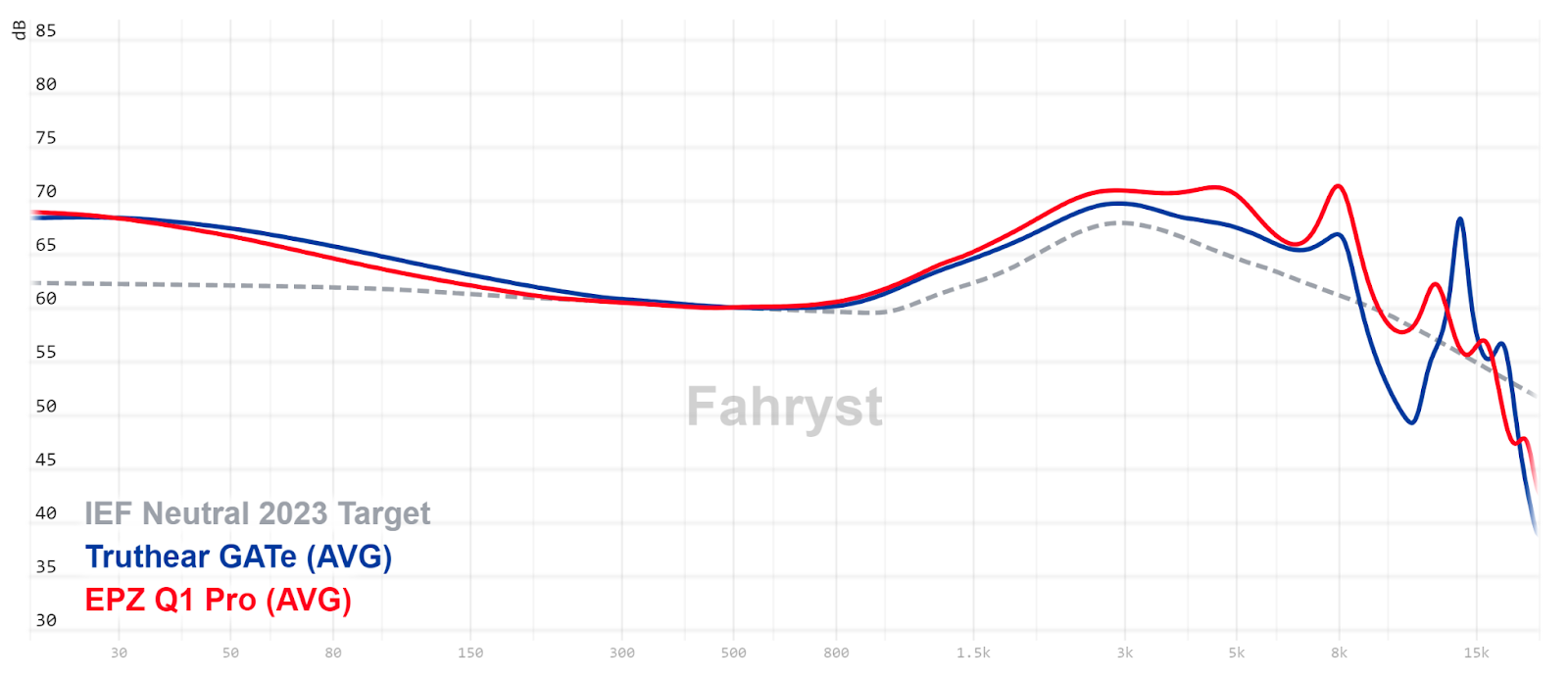
After the discontinuation of the Hola, a successor was anticipated, and Truthear answered with another ultra-budget IEM, the GATe. Priced at $18.99 ($19.99 with a mic), the GATe has big shoes to fill and stiff competition to overcome.
Disclaimers
The Truthear GATe was provided to me by Cloris from shenzhenaudio.com for free. As I always say, everyone has biases, so take everything you read with a grain of salt. I'll strive to be more concise and to the point in my reviews from now on. If you have any questions, please ask in the comments, and I'll do my best to answer them.Packaging, Build, and Accessories
In this ultra-budget segment, packaging and accessories are often minimal, but the GATe still manages to impress. Unfortunately, I haven't tried the Hola, so I can't compare them in terms of accessories or sound. From what I've gathered, the GATe uses the same cable as the Hola, which is one of the best in this price range. It's very soft and doesn’t retain memory. The IEMs and cable come in either black or white. Besides the cable and a set of tips, you get a magnetic carrying pouch similar to what Hidizs offers with their IEMs. I don’t recall getting a carrying pouch with any IEMs below $20, let alone one of this quality.The GATe has a beautiful design with transparent faceplates. The insides aren't as attractive, featuring only a single dynamic driver, but I appreciate the look. The shells are entirely made of plastic, which might be a step down from the Hola. I don't mind it, but former Hola users might feel a bit betrayed. The shells have a small wing that helps with fit security without being annoying.
Sound Quality
Tonality
This time around, Truthear went with a clarity-focused tuning for their ultra-budget offering. On first listen, the clarity and vividness stood out, but it felt bass-light. The GATe isn't devoid of bass; it actually has more bass than some older ultra-budget IEMs like the Moondrop Chu and 7Hz Salnotes Zero. However, the upper mids and treble are more prominent than the bass. The GATe scales well with volume and comes alive, a sentiment confirmed by a few of my friends.
The mid frequencies on GATe are very well-tuned. As I mentioned, the GATe's clarity-focused tuning makes the mids its best feature. The treble isn’t harsh, peaky, or piercing, but there is a slight unevenness that affects the timbre a bit.
Technicalities
Discussing technicalities for ultra-budget IEMs might seem pointless. There are technically better or worse IEMs in this price range, but ultimately, you get what you pay for. In the GATe’s case, it has decent imaging and staging capabilities. The timbre is slightly off but not too bad. The clarity-focused tuning helps reveal a good amount of detail, but the drivers' resolving capability can barely keep up. However, these drivers are pretty good among other ultra-budget IEMs since the GATe scales well with volume.
Comparisons
Truthear GATe vs. Tangzu Wan’er
- Wan’er has more bass, but GATe’s bass is better defined and textured. Wan’er’s bass is less controlled and the weakest point of the IEMs, though it extends deeper into the sub-bass and rumbles more.
- Wan’er is warmer, thicker, and has more note weight. GATe’s note weight is sufficient, but some listeners might want more.
- Wan’er emphasizes its mids more and is slightly shoutier. GATe is more balanced and scales better with volume, sounding clearer and crisper.
- GATe is more prominent in the treble overall. Wan’er has lower treble energy. While neither is particularly sibilant, GATe is more susceptible to sibilance with volume. Still, GATe has more snap and shimmer, while Wan’er sounds blunted in comparison. However, Wan’er might suit those sensitive to treble better.
- Wan’er has a better timbre overall, but GATe has a wider and more spacious presentation. Wan’er feels more in-your-head, while imaging is more focused and precise on Wan’er. GATe has better detail retrieval, revealing more nuances.
Truthear GATe vs. EPZ Q1 Pro
- GATe is slightly warmer and thicker, with a more impactful bass. Q1 Pro has more sub-bass extension.
- Q1 Pro has more prominent mids and is shoutier in the upper mids.
- GATe has a more relaxed and slightly blunted treble. Q1 Pro sounds livelier without being harsh or sibilant at moderate volumes, but GATe can be pushed more without becoming harsh.
- Q1 Pro is more technically capable, with better timbre and resolution. Q1 Pro has a slightly wider and deeper soundstage. Imaging is also more precise on Q1 Pro.
Conclusion
I enjoyed the Truthear GATe more than I expected. Usually, after reviewing unimpressive products, I set them aside, but the GATe convinced me to keep them around. They have a comfortable fit, scale well with volume, come with a very good cable, and include my favorite type of pouch with a magnetic closing mechanism. According to other reviews, they sound vastly different from the original Hola, so perhaps both could have been kept around. Nonetheless, I'm quite happy with what Truthear has delivered.
Last edited:
View previous replies…
J
Jarlaxle
@ahammedsojib thanks brother
Ceeluh7
Nice one Fahrettin. The GATe seems like a nice casual listening set. I find myself liking those types more and more of late. Truthear does good work man. They aren't all home runs for everyone but they make solid gear. Anyways, nice review bro, as always.
Jarlaxle
100+ Head-Fier
Pros: Price
Solid build
Ease of operation
Neutral and linear Cirrus Logic sound
Solid build
Ease of operation
Neutral and linear Cirrus Logic sound
Cons: Not having independent volume control
Rather large
USB-C to USB-A adapter for PC not included
Rather large
USB-C to USB-A adapter for PC not included
EPZ has been gaining more attention lately, and rightfully so. Not only do their IEMs perform well in their respective price ranges, but they also make some of the most cost-effective dongle DAC/Amps on the market.
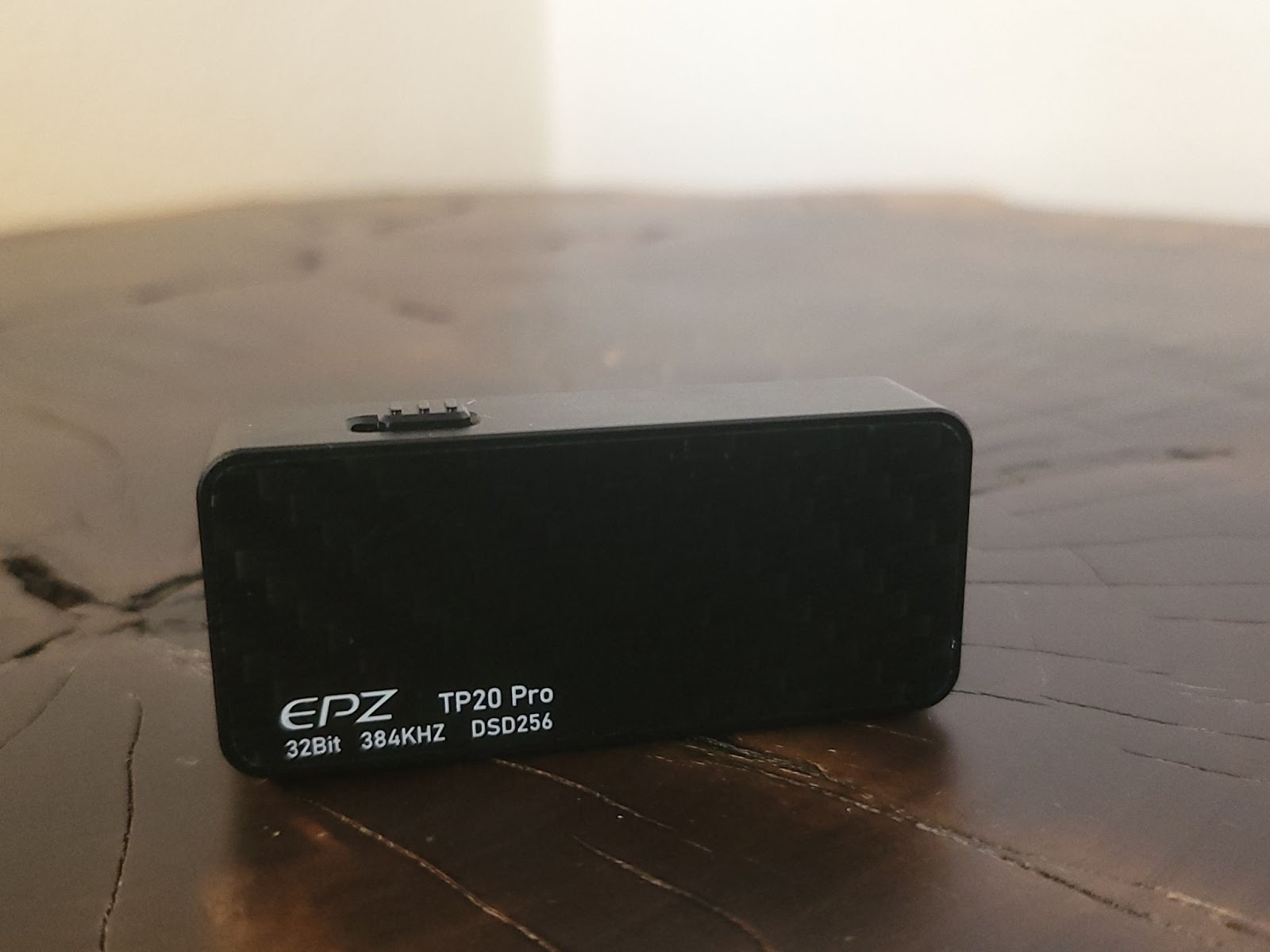
A few months ago, they released the pro versions of their TP20 and TP50 dongles. The TP20 Pro, which I have with me, is one of the cheapest balanced dongles at $55 as I write this review.
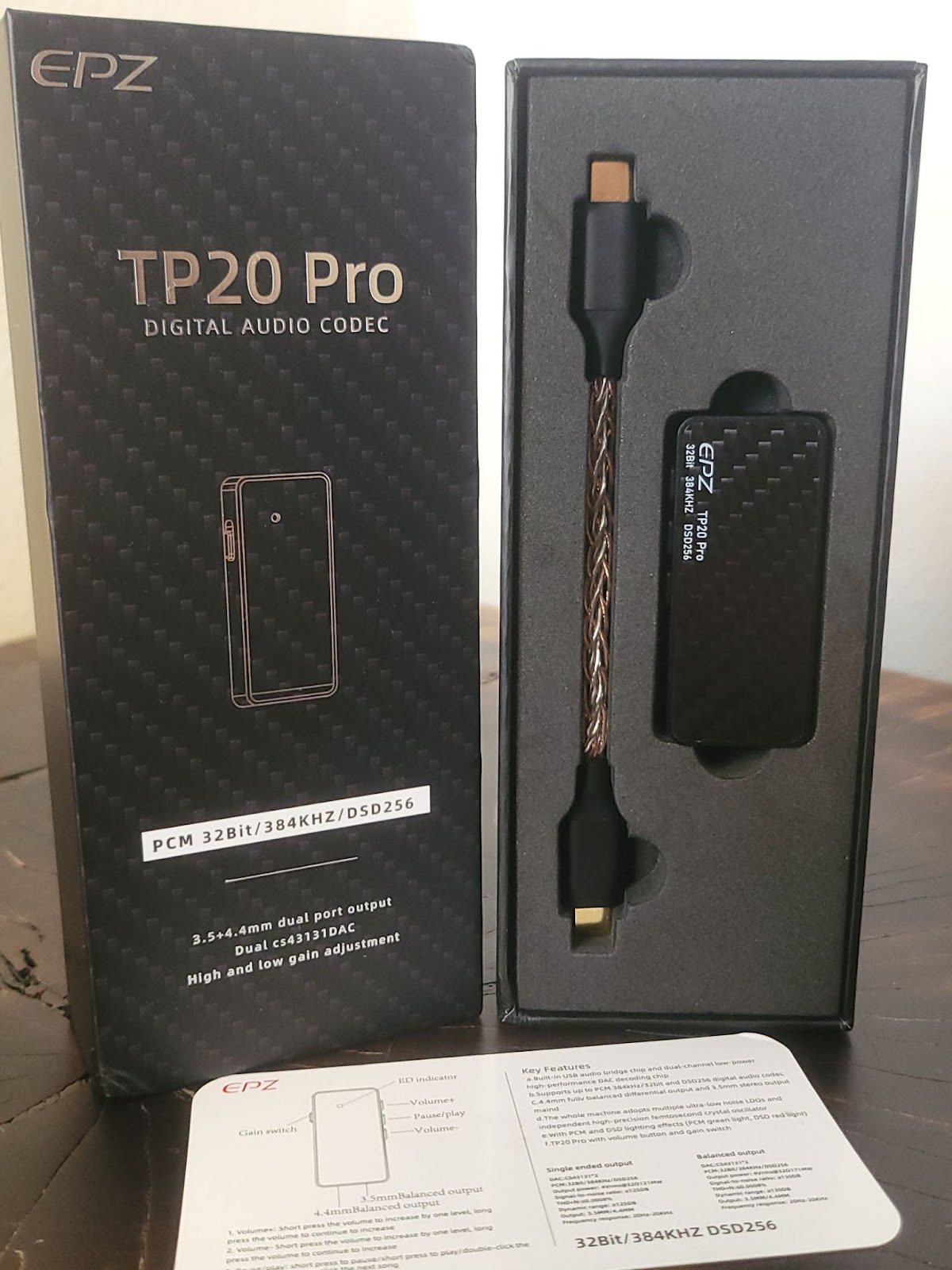
The TP20 Pro is packaged in a simple black box. The dongle and cable sit safely in their respective cavities in foam. You also get a card with simple operation instructions, key features of the dongle, and specifications.
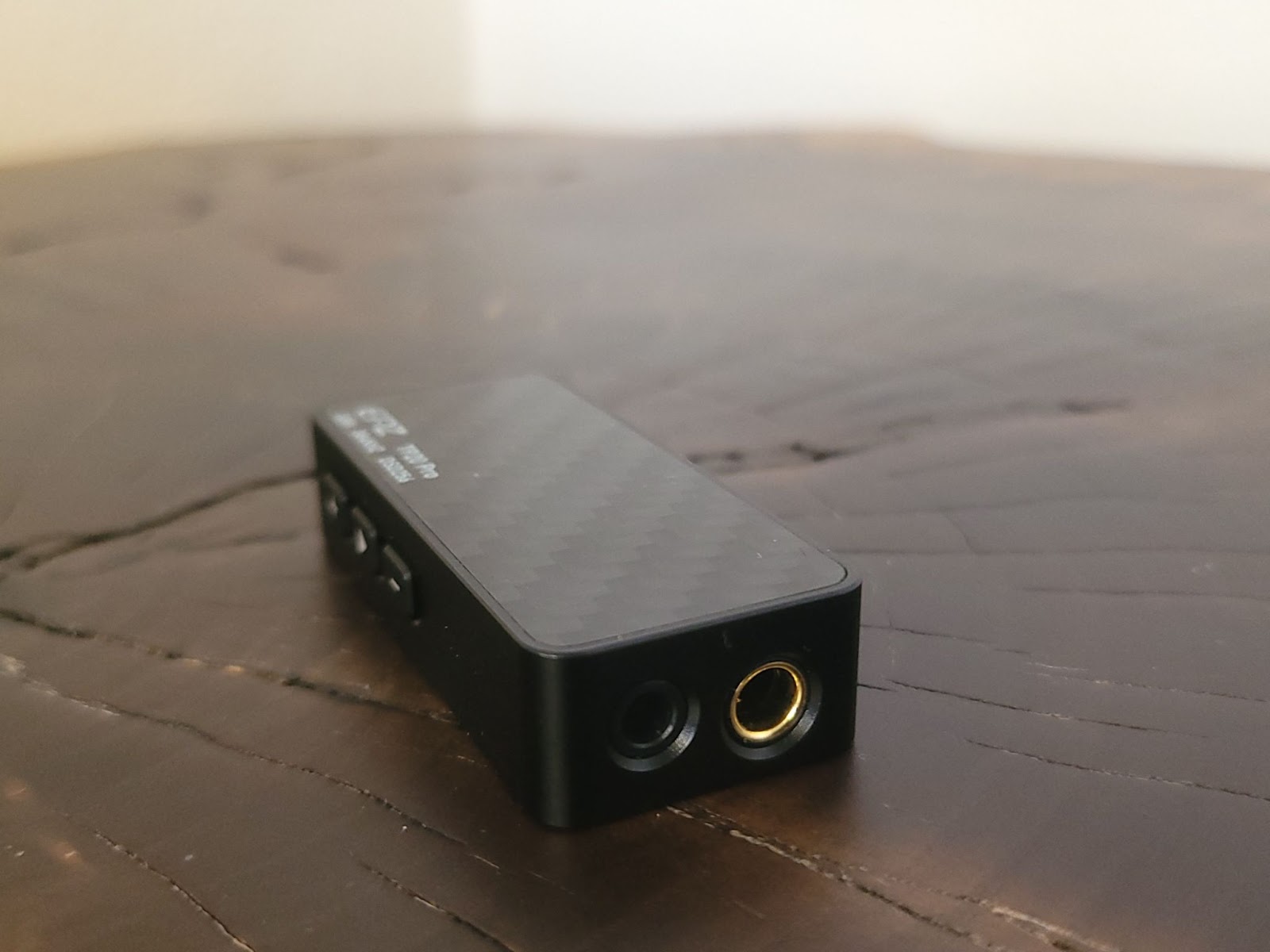
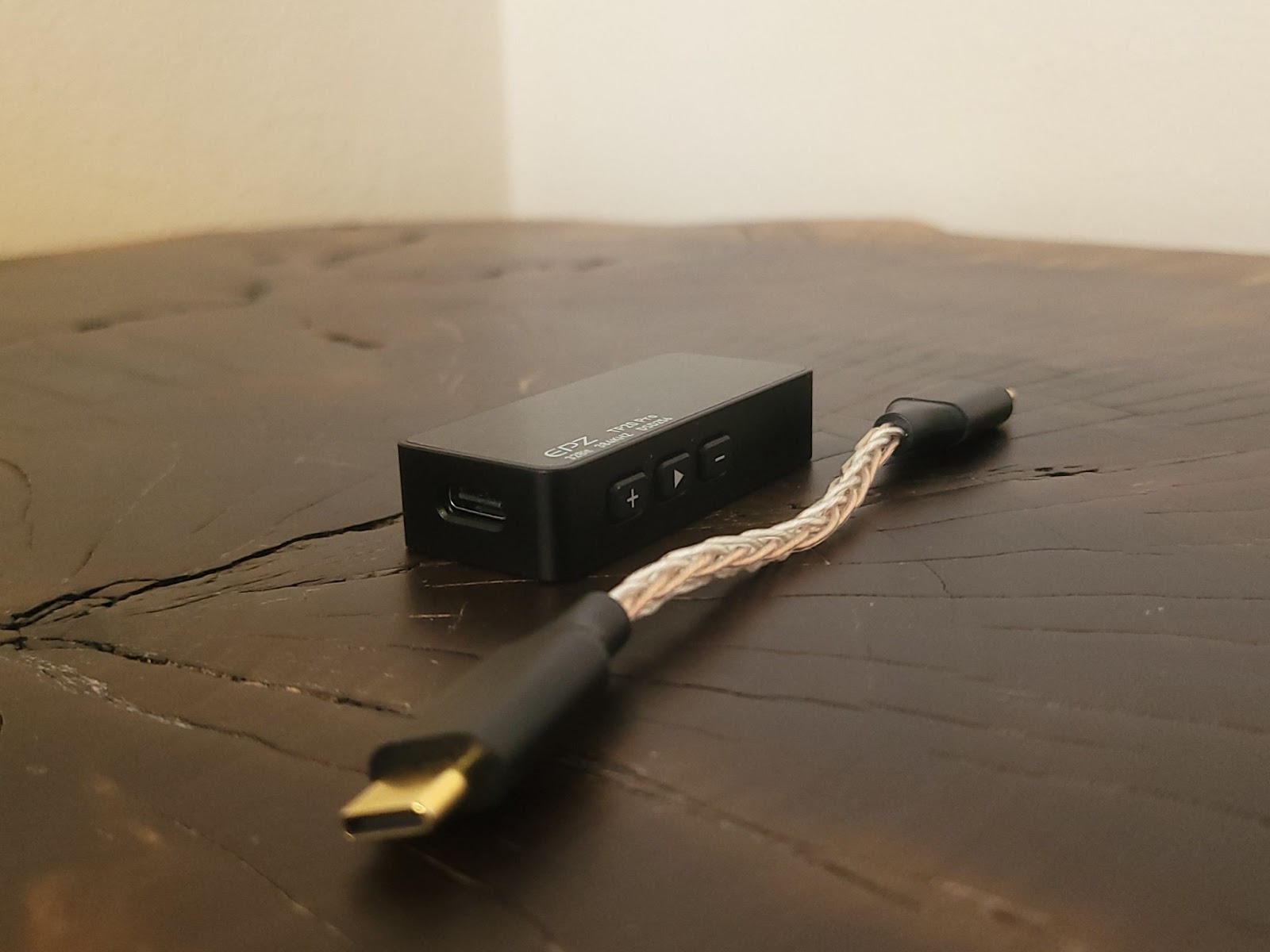
Dongles that use Cirrus Logic chips usually sound very neutral, and the TP20 Pro is no exception. You could even call it boring, with no real deviation from flat or emphasis. Still, the EPZ TP20 Pro sounds slightly more energetic than usual to my ears. For more context, check out the comparison below.
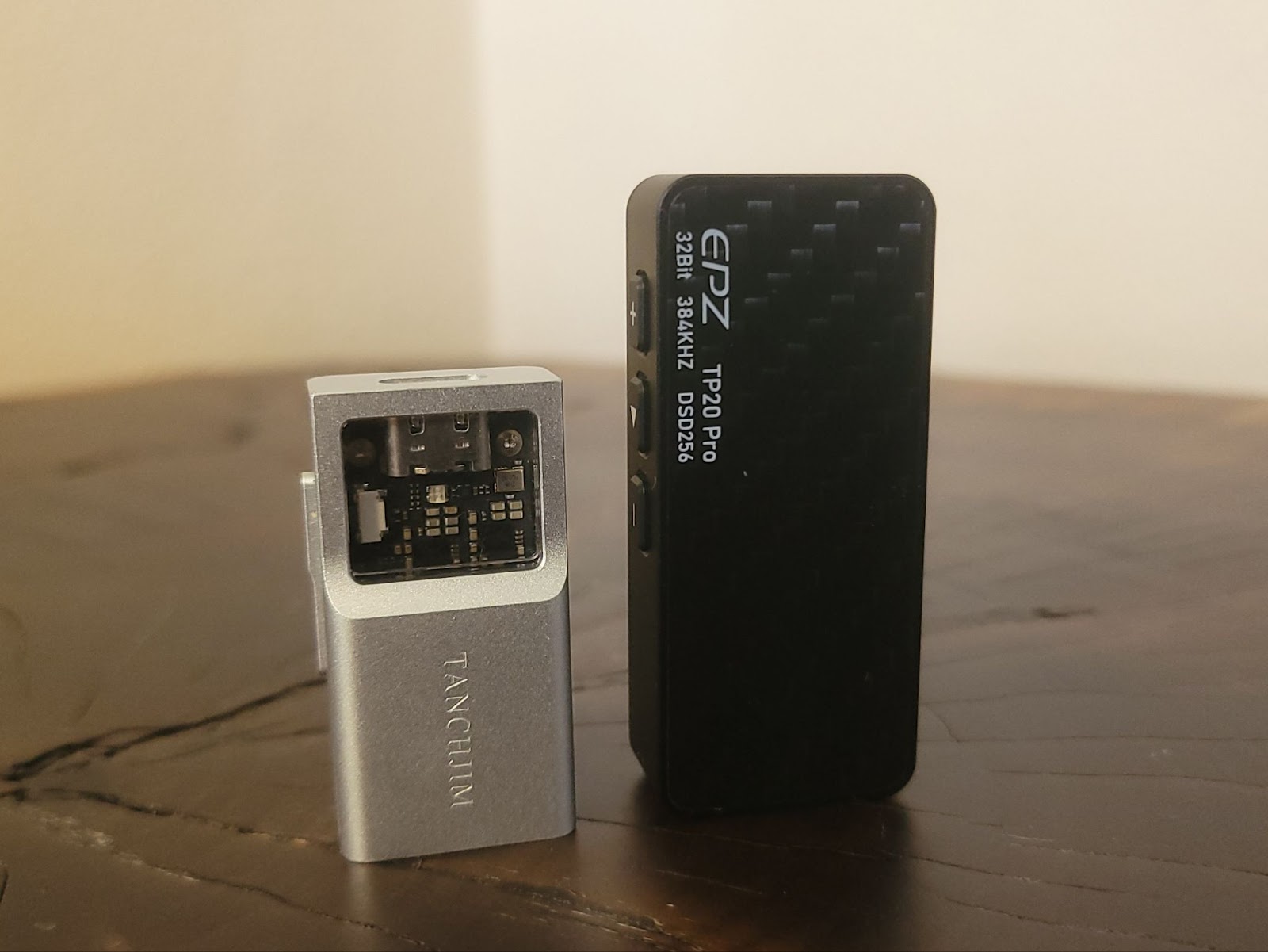
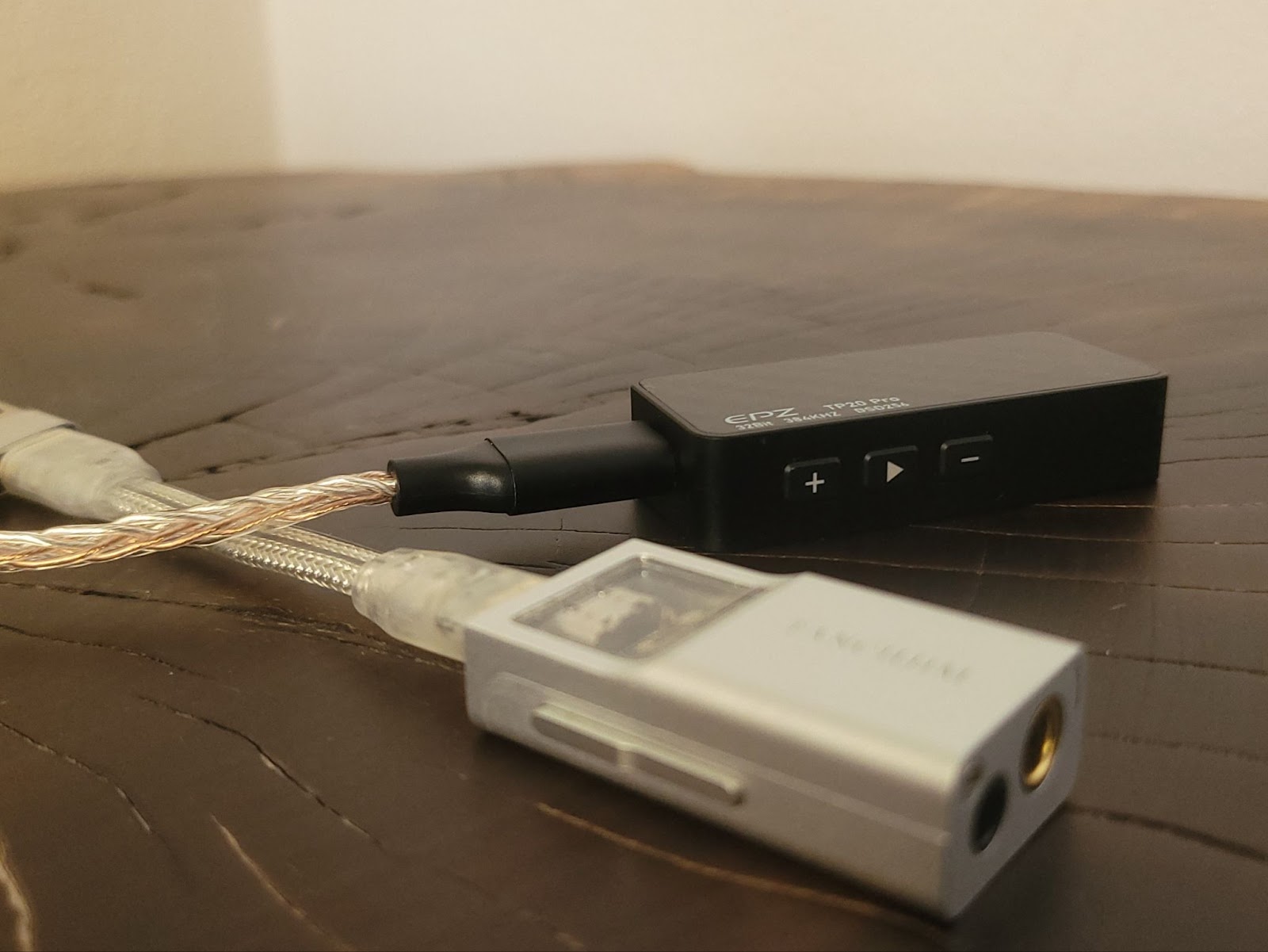
A few months ago, they released the pro versions of their TP20 and TP50 dongles. The TP20 Pro, which I have with me, is one of the cheapest balanced dongles at $55 as I write this review.
Disclaimers
The EPZ TP20 Pro was sent to me by EPZ for a review. As I always say, everyone is biased in one way or another, so take everything you read with a grain of salt. Additionally, I will try to be more concise and to the point in my reviews from now on without worrying about the word count, etc. If you have any questions, please ask me in the comments, and I will try to answer them to the best of my abilities.Design and Packaging of EPZ TP20 Pro
The EPZ TP20 Pro is a rather unimpressive, large rectangular black box. The chassis of the dongle is made out of aluminum, and the front and back plates are made out of real carbon fiber. The brand, model name, and basic specs of the dongle are written on one side, and an LED indicator is placed on the other side. The cable is removable, and you can use any OTG USB-C cable with the dongle. However, the USB-C to USB-C cable that comes in the package is braided and of very high quality. On top, the TP20 Pro has a gain switch and below, three buttons for volume down, play/pause, and volume up. Like most recent dongles, the TP20 Pro has 3.5 mm single-ended and 4.4 mm balanced headphone outputs.The TP20 Pro is packaged in a simple black box. The dongle and cable sit safely in their respective cavities in foam. You also get a card with simple operation instructions, key features of the dongle, and specifications.
Hardware of EPZ TP20 Pro
The TP20 utilizes dual Cirrus Logic CS43131 DAC chips. There is no information in the marketing material about the amplification circuit. Like most other dongles that use Cirrus Logic chips, the TP20 measures pretty well. It decodes up to 32-bit 384 kHz PCM and DSD256. According to the specs, the TP20 Pro outputs 121 mW of power from the single-ended output and 171 mW from the balanced output.User Experience of TP20 Pro
The TP20 Pro doesn’t have a screen like its older brother, the TP50 Pro, but operation is rather simple. The dongle is plug-and-play and doesn’t require any drivers on Windows PCs. Volume control isn’t independent, so whatever device you use should remember the volume you last adjusted as soon as you connect the dongle. Honestly, I prefer independent volume adjustment, but your mileage may vary (YMMV). What I like most about the TP20 Pro is the gain switch. Other dongles I have used either require you to press volume up and down at the same time or navigate through their menu to change the gain setting.Sound of EPZ TP20 Pro
Dongles that use Cirrus Logic chips usually sound very neutral, and the TP20 Pro is no exception. You could even call it boring, with no real deviation from flat or emphasis. Still, the EPZ TP20 Pro sounds slightly more energetic than usual to my ears. For more context, check out the comparison below.
Comparison
EPZ TP20 Pro vs. Tanchjim Space
- The biggest difference I noticed is that the Space sounds more contrasty and dynamic, which makes me think that differences are probably caused by compression in dynamic range because the Space uses hardware volume while the TP20 Pro adjusts phone or PC volume.
- The Space might have just a little more bass and treble extension.
- The Space is a little bit softer, more controlled, and refined in the treble.
- The Space has a more realistic timbre.
- Details and layering might be slightly better on the Tanchjim Space, but it isn’t a significant difference.
- All the differences I mentioned were so small that I might as well have been imagining them.
Conclusion
The TP20 Pro runs and sounds perfectly fine. The stock cable it comes with is better than most others. For the $55 price, you get a simple device that will make any purist happy. I only wish it had independent volume adjustment, but some might even prefer it this way.Jarlaxle
100+ Head-Fier
Pros: Clean and crisp mid centric tuning
Good subbass extension
Nice packaging for the price
Secure and comfortable fit
Very even freqeuncy response across the board without any weird peaks
Good subbass extension
Nice packaging for the price
Secure and comfortable fit
Very even freqeuncy response across the board without any weird peaks
Cons: Slighly shouty
Bass might not be enough for some (most) people
Bass might not be enough for some (most) people
EPZ isn’t exactly a newcomer in the IEM market, but it has recently gained popularity. EPZ's latest releases have been well-received, with the Q5 being particularly successful. Although I haven’t tried it yet, their 5 Balanced Armature set, the 530, is receiving very positive reviews despite being released two years ago.
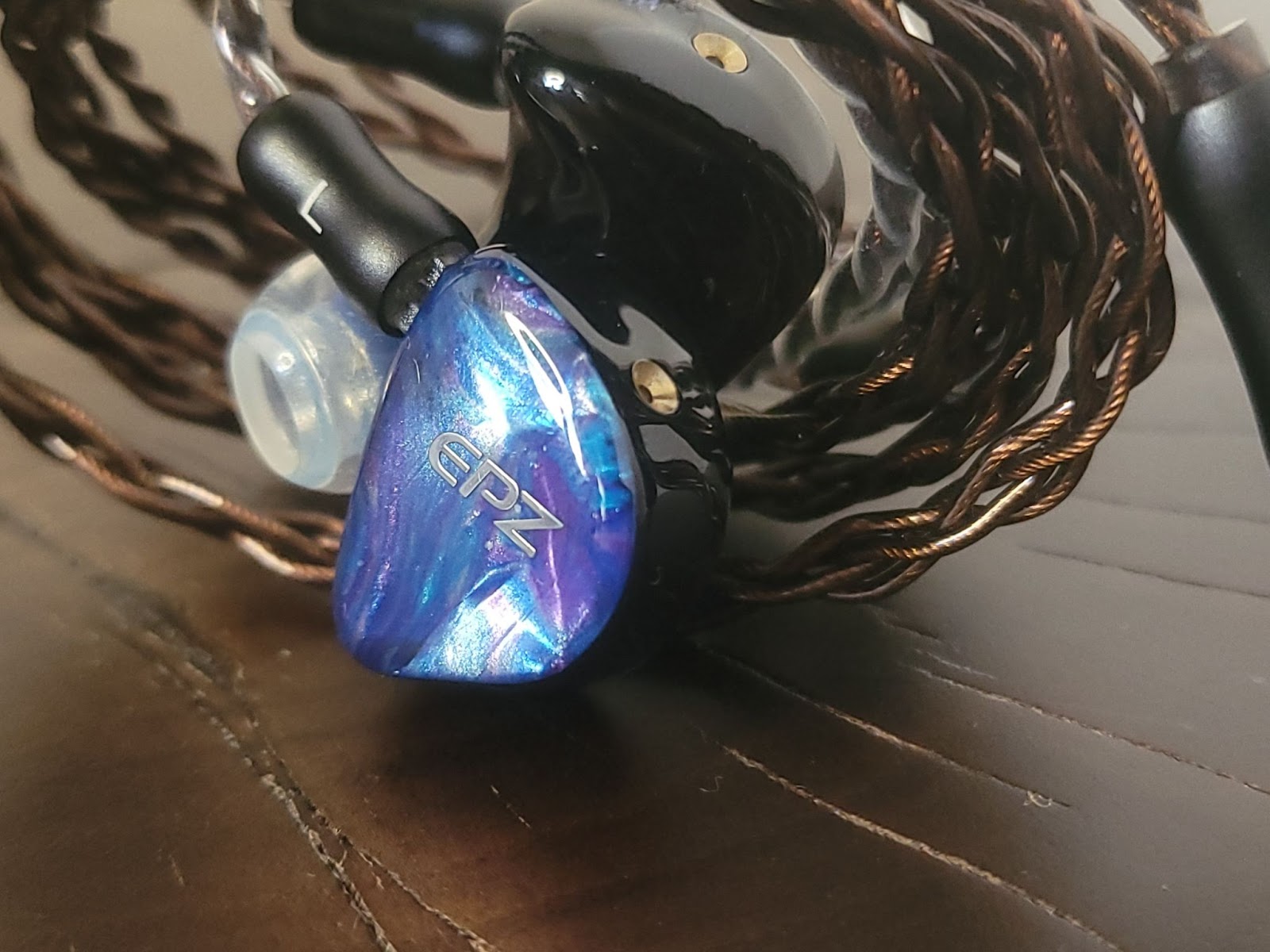
The Q1 Pro is EPZ’s latest single dynamic driver IEM, released a couple of months ago and priced around $30. It's garnering a lot of praise from reviewers, and I intend to find out if it's justified.
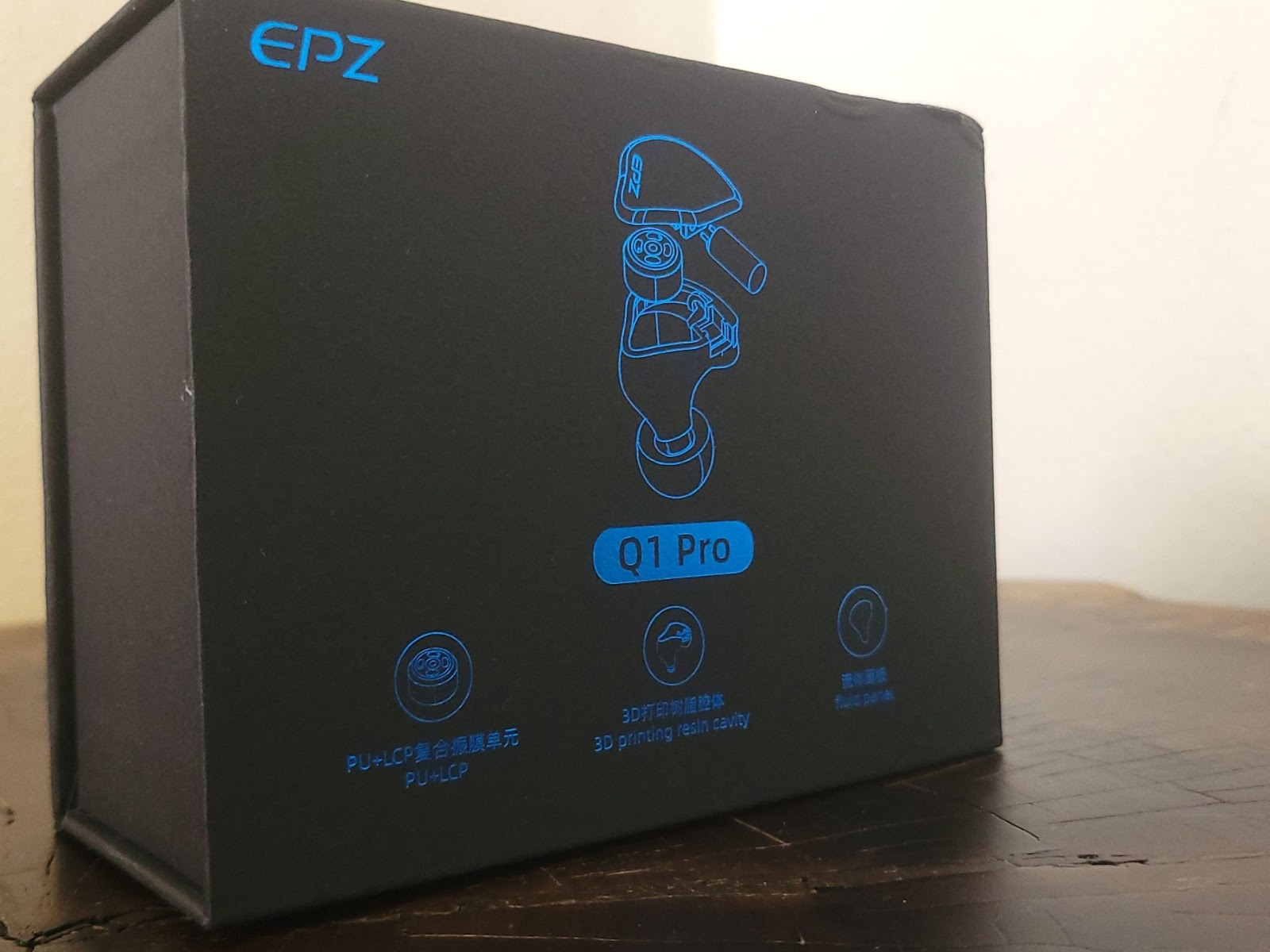
EPZ consistently offers one of the best unboxing experiences with each of their IEMs in their respective price ranges and the Q1 Pro is no exception. The box is compact with a magnetic lid. When you open it and remove the protective patterned paper, you are greeted by the earpieces with the cable already attached. One friend mentioned that he appreciates IEMs that are ready to use out of the box, but I don’t mind either way. The blue EPZ-branded ribbon to pull out the protective foam is a nice touch. Below the IEMs, there's a small accessory box containing a carrying pouch, a set of tips, and the usual literature.
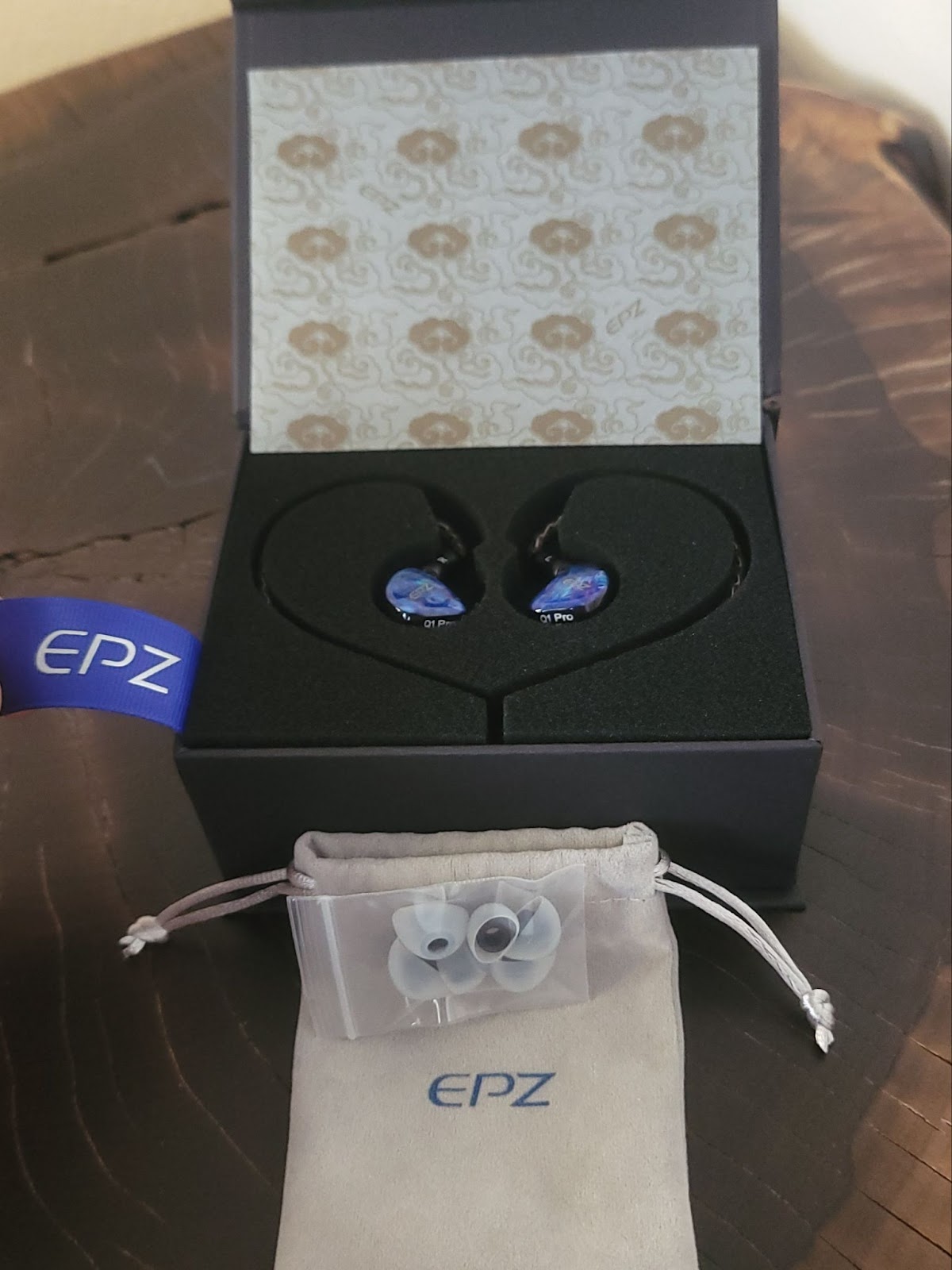
The Q1 Pro earpieces are made of resin and feature beautiful blue patterns on the faceplates. The shells are molded to fit regular ear contours, providing good fit security and seal. They could serve well as affordable stage monitors. The cable is a 4-core crystal copper one, according to the information on the box. It has a little memory but feels nice with small metal EPZ-branded hardware. The provided eartips are of decent quality too.
The bass on the Q1 Pro isn’t exaggerated. It has a healthy boost, similar to most recent IEMs, but it doesn’t sound particularly warm or thick. The Q1 Pro has good subbass extension and rumble, which is a highlight of its bass rendition.
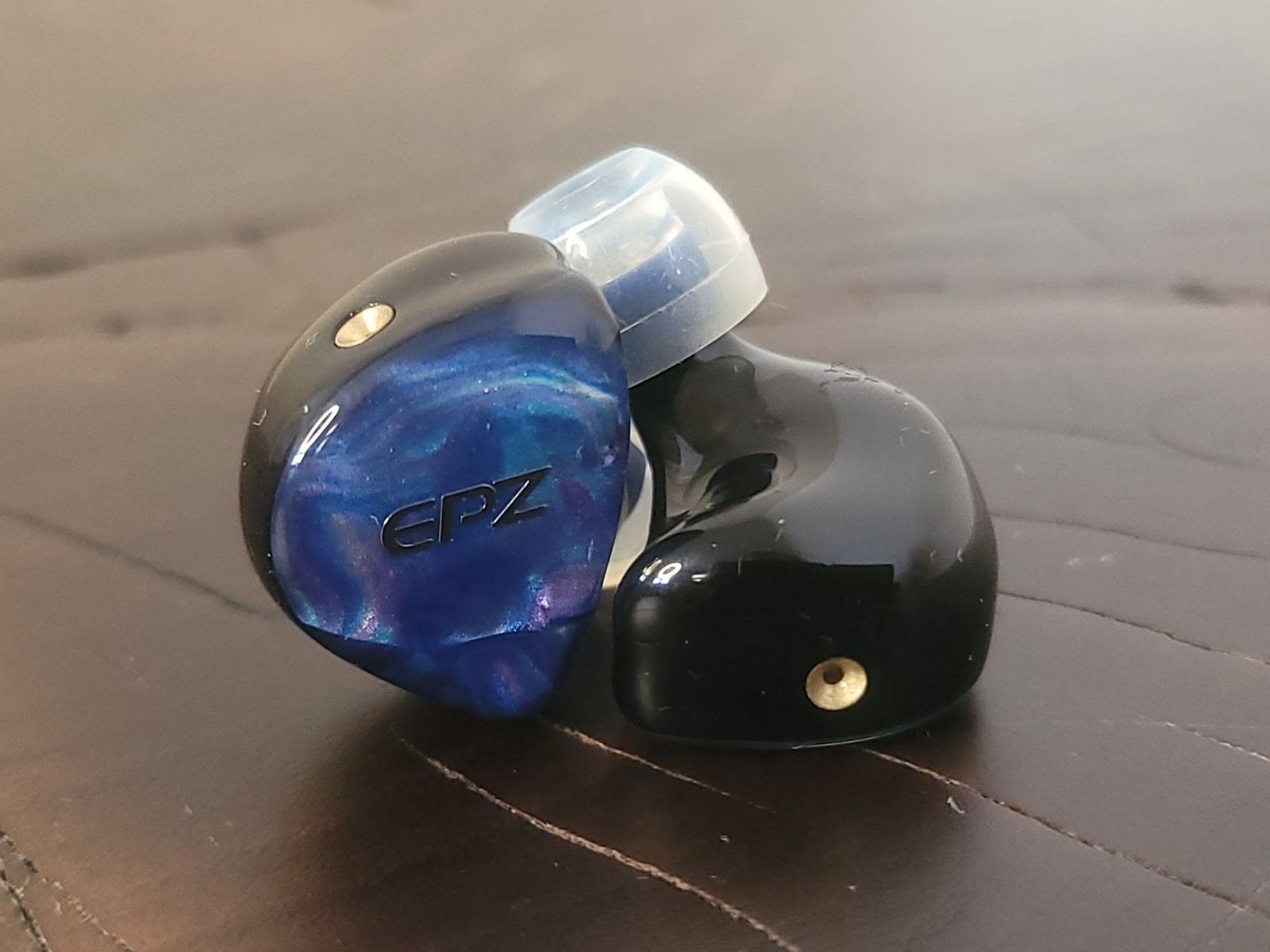
The mids are emphasized on the Q1 Pro and are its selling point. If you enjoy upper mids and vocals, the Q1 Pro sounds very fulfilling but can be slightly shouty, especially at higher volumes.
Overall, the Q1 Pro is a bright set but not harsh. The lower treble is pronounced, giving a good presence to guitars and similar instruments. Interestingly, sibilance is not an issue at moderate listening levels. The rest of the treble is pretty even without any real peaks.
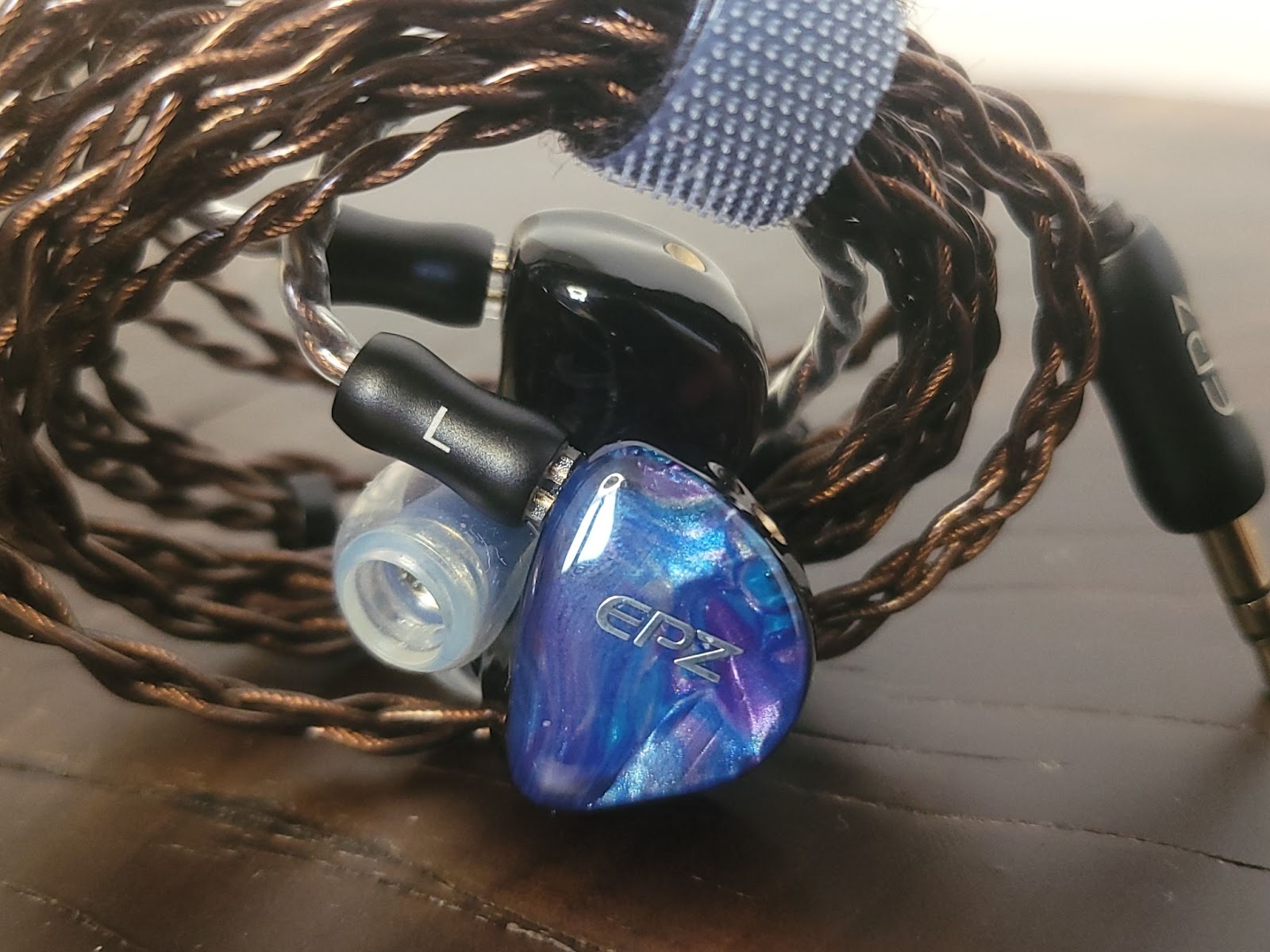
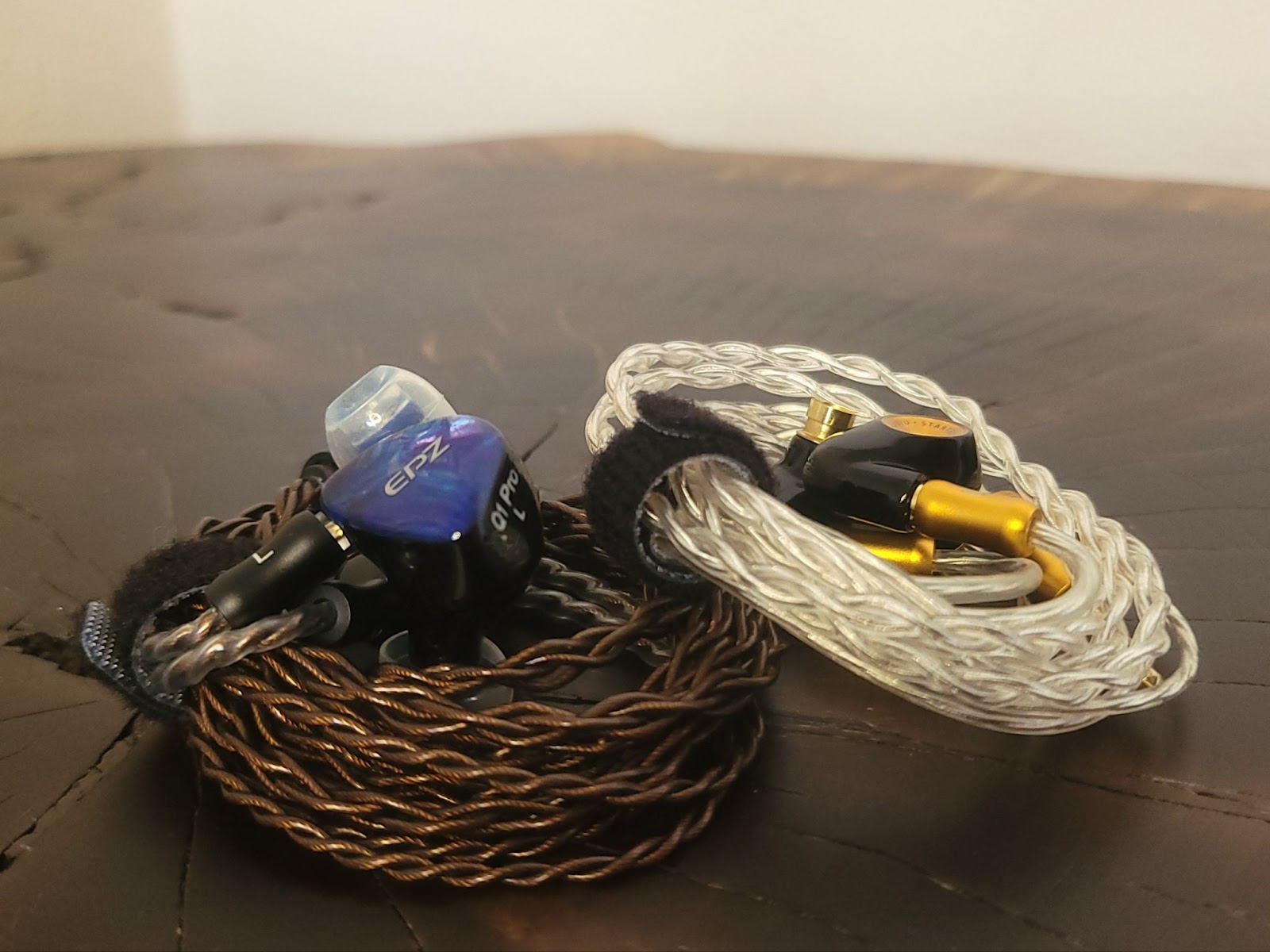
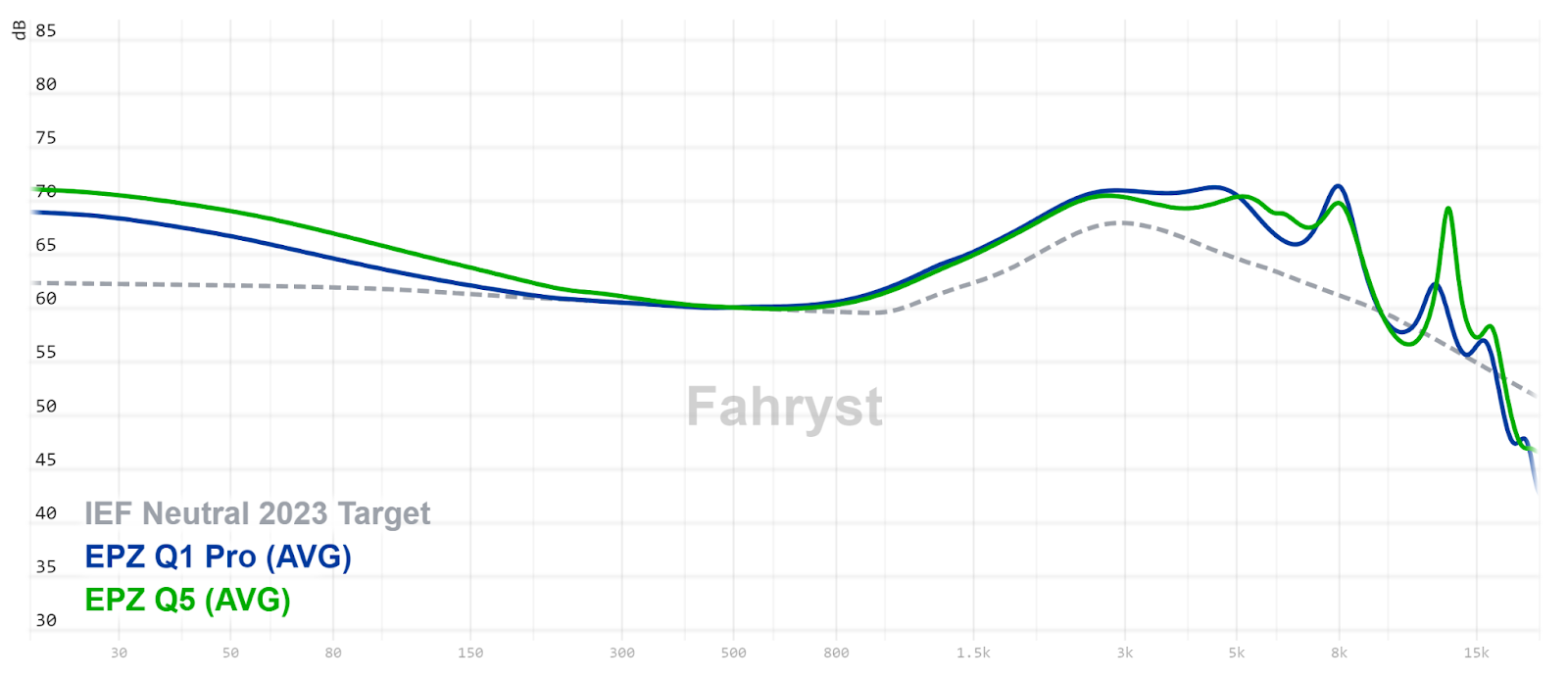
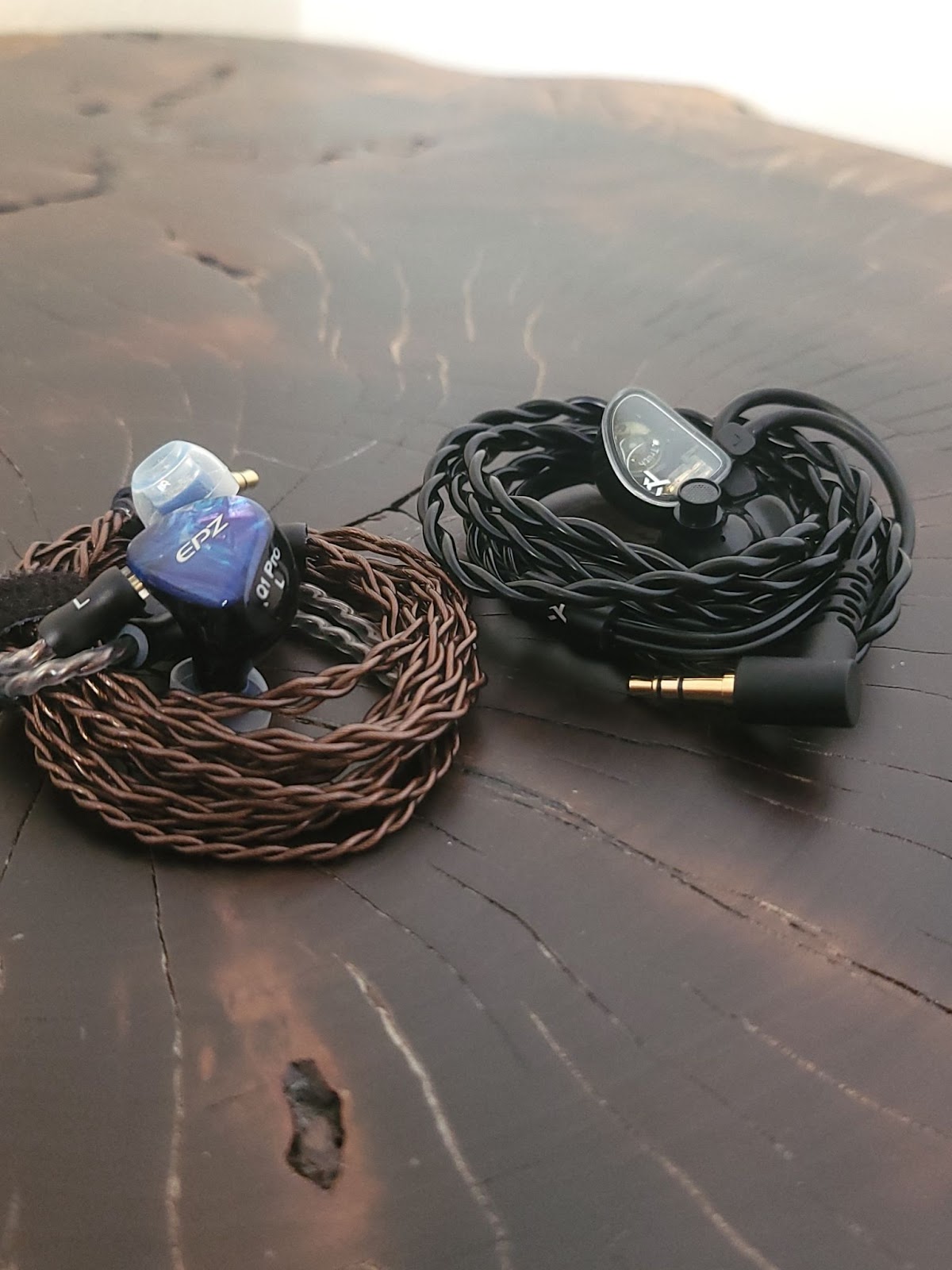
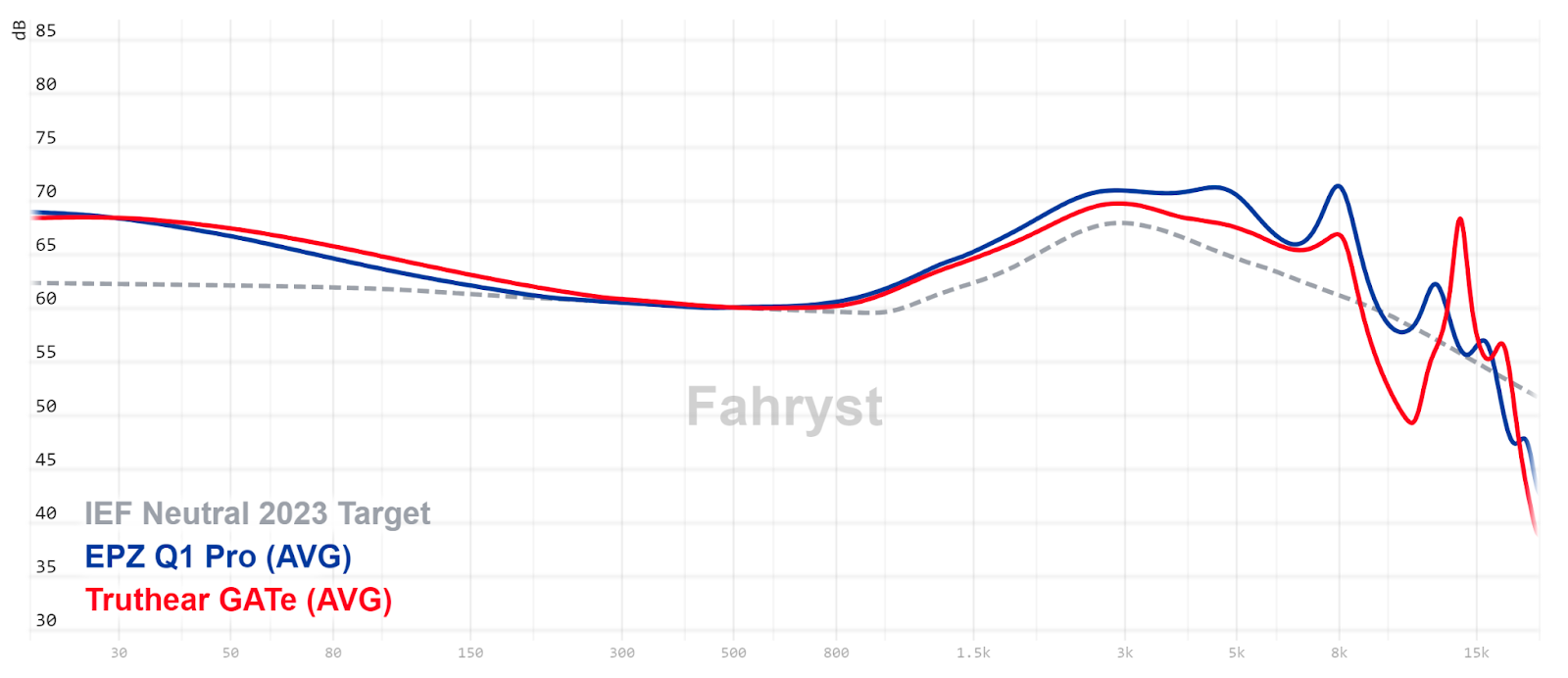
The Q1 Pro is EPZ’s latest single dynamic driver IEM, released a couple of months ago and priced around $30. It's garnering a lot of praise from reviewers, and I intend to find out if it's justified.
Disclaimers
The EPZ Q1 Pro was provided to me by EPZ for free. As always, keep in mind that everyone has biases, so take everything you read with a grain of salt. I aim to be concise and to the point in my reviews, without worrying about word count. If you have any questions, please ask in the comments, and I will do my best to answer them.Packaging, Build, and Accessories of EPZ Q1 Pro
EPZ consistently offers one of the best unboxing experiences with each of their IEMs in their respective price ranges and the Q1 Pro is no exception. The box is compact with a magnetic lid. When you open it and remove the protective patterned paper, you are greeted by the earpieces with the cable already attached. One friend mentioned that he appreciates IEMs that are ready to use out of the box, but I don’t mind either way. The blue EPZ-branded ribbon to pull out the protective foam is a nice touch. Below the IEMs, there's a small accessory box containing a carrying pouch, a set of tips, and the usual literature.
The Q1 Pro earpieces are made of resin and feature beautiful blue patterns on the faceplates. The shells are molded to fit regular ear contours, providing good fit security and seal. They could serve well as affordable stage monitors. The cable is a 4-core crystal copper one, according to the information on the box. It has a little memory but feels nice with small metal EPZ-branded hardware. The provided eartips are of decent quality too.
Sound of EPZ Q1 Pro
Tonality
The Q1 Pro has a rather neutral tonality with a minimal bass boost. I would describe them as mid-centric, with vocals taking the forefront.The bass on the Q1 Pro isn’t exaggerated. It has a healthy boost, similar to most recent IEMs, but it doesn’t sound particularly warm or thick. The Q1 Pro has good subbass extension and rumble, which is a highlight of its bass rendition.
The mids are emphasized on the Q1 Pro and are its selling point. If you enjoy upper mids and vocals, the Q1 Pro sounds very fulfilling but can be slightly shouty, especially at higher volumes.
Overall, the Q1 Pro is a bright set but not harsh. The lower treble is pronounced, giving a good presence to guitars and similar instruments. Interestingly, sibilance is not an issue at moderate listening levels. The rest of the treble is pretty even without any real peaks.
Technicalities
For budget IEMs, it’s important to have realistic expectations. The Q1 Pro isn’t an overachiever, but it is among the good ones in its price range. It has good staging and imaging capability. Timbre is also very good, thanks to its even and balanced tonality with no weird peaks in the treble. While resolution and layering are not the best, they are pretty good for the price.Comparisons
EPZ Q1 Pro vs. EPZ Q5
- Bass: The Q5 has more note weight, bass impact, authority, and subbass rumble.
- Mids: The Q1 Pro has more even mids, with both having forward vocals. However, the Q1 Pro highlights vocals more. The Q5 is slightly shoutier and more V-shaped, making the mids relatively recessed compared to the bass and treble.
- Treble: Neither has immediate harshness or sibilance at moderate listening volumes. The Q1 Pro has more tendency towards sibilance at higher volumes. The Q5 has more upper treble zing, which can be fatiguing, while the Q1 Pro is smoother and more even.
- Technicalities: The Q1 Pro has slightly better timbre. Neither is particularly wide, but the Q1 Pro feels slightly wider and more spacious. The Q5 is more resolving and has more precise imaging and layering capability.
EPZ Q1 Pro vs. Truthear GATe
- Bass: The GATe is slightly warmer and thicker, with slightly more impactful bass. The Q1 Pro has more subbass extension.
- Mids: The Q1 Pro has more prominent mids and is shoutier than the GATe in the upper mids.
- Treble: The GATe has a more relaxed and slightly blunted treble, while the Q1 Pro sounds livelier without being harsh or sibilant at moderate listening volumes. The GATe can be pushed more without getting harsh.
- Technicalities: The Q1 Pro is more technically capable with better timbre and resolution. It has a slightly wider and deeper headstage, and more precise imaging.
Conclusion
The Q1 Pro is a well-tuned and well-priced set of IEMs. It’s better than many ultra-budget offerings, but it doesn't make its older siblings like the Q5 redundant. If mids are your priority and you want a clear and crisp presentation with no real caveats, the Q1 Pro is one of the best options available under $50.Jarlaxle
100+ Head-Fier
Pros: Open and airy presentation
Clean and crisp
Clean and crisp
Cons: Shouty
Bass lacks authority and rolls off
Bass lacks authority and rolls off
I am a fan of BQEYZ brand IEMs. They always strive to create something unique with their offerings. The Autumn model featured innovative tuning filters, while Winter and Wind utilized self-developed bone conduction drivers. Now, with the Cloud, they have ventured into passive radiator territory. However, instead of using that term, they describe it as "air-assisted circulation."
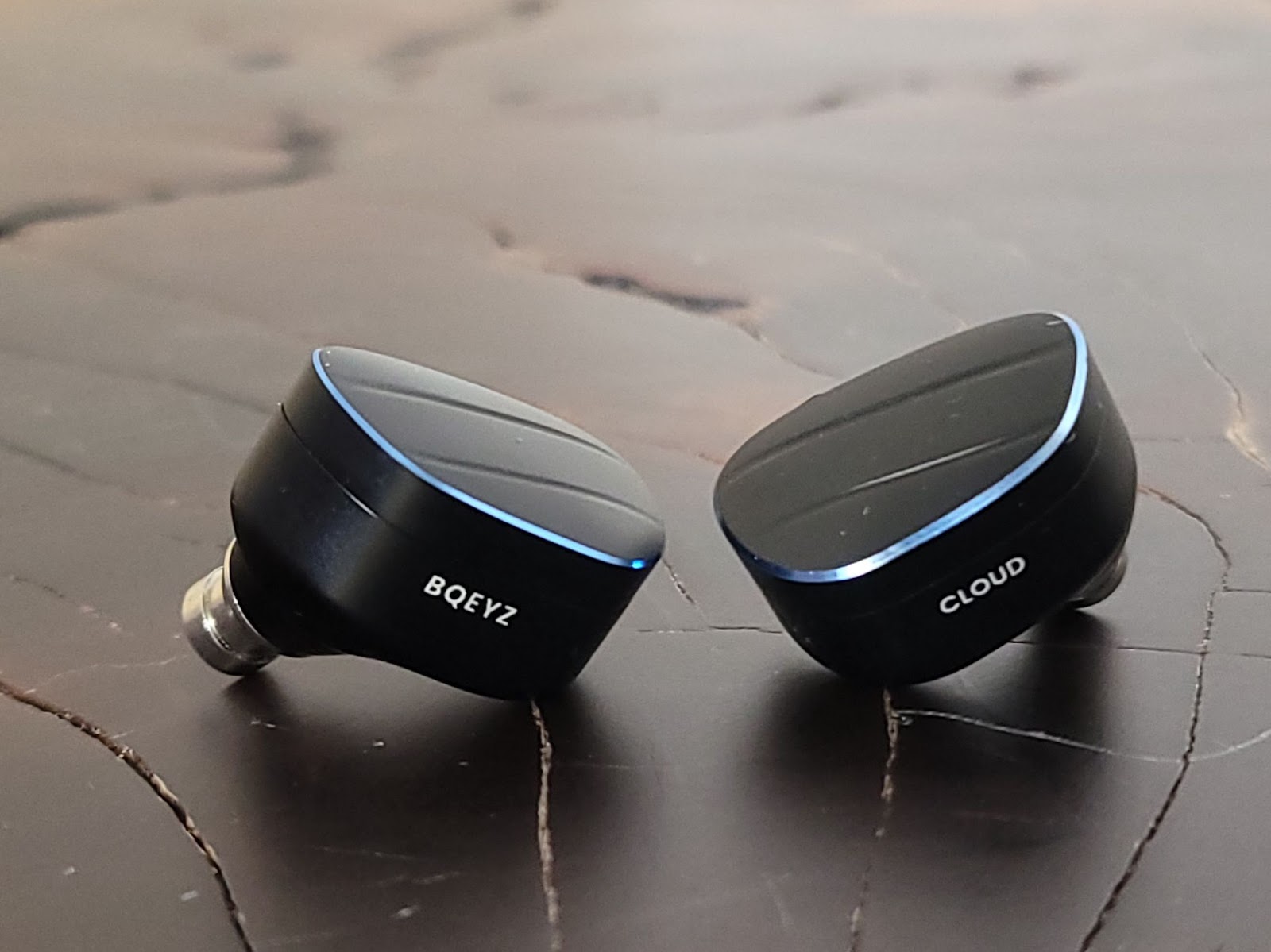
The price of the BQEYZ Cloud is somewhat variable since it started as a Kickstarter project. At the time of writing this review, it can be pre-ordered on Linsoul for $169.
The BQEYZ Cloud was sent to me on loan as part of the Turkey Tour of the Audio Geek Review Group. I don't get to keep this tour unit, even at the end of the tour. As always, keep in mind that everyone has biases, so take everything you read with a grain of salt. I aim to be more concise and to the point in my reviews from now on, without worrying about the word count. If you have any questions, please ask in the comments, and I will do my best to answer them.
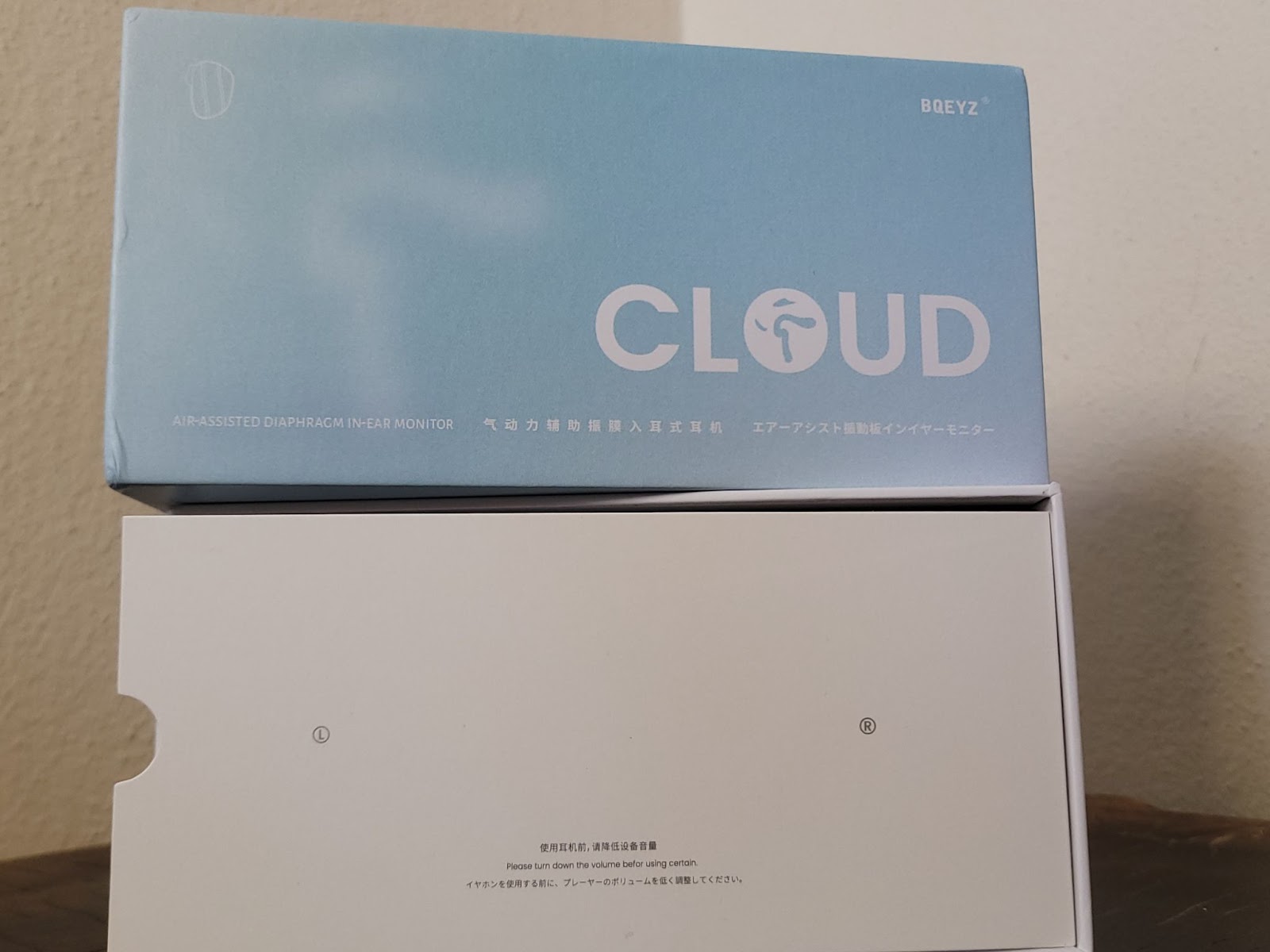
BQEYZ has always been generous with their packaging, and the Cloud is no exception. What you receive is similar to what came with Winter and Wind: earpieces, a leatherette case, a fine cable, two sets of silicone eartips on a metal holder, a pair of small foam tips in a separate case, and a cleaning brush. However, I didn't get the premium unboxing experience that I had with the earlier models.
In typical BQEYZ fashion, the shells are made of CNC-machined aluminum. The earpieces are very comfortable and provide a secure fit, but the faceplate design feels like a step back from the elegant look of other BQEYZ IEMs like Autumn and Winter, at least for me.
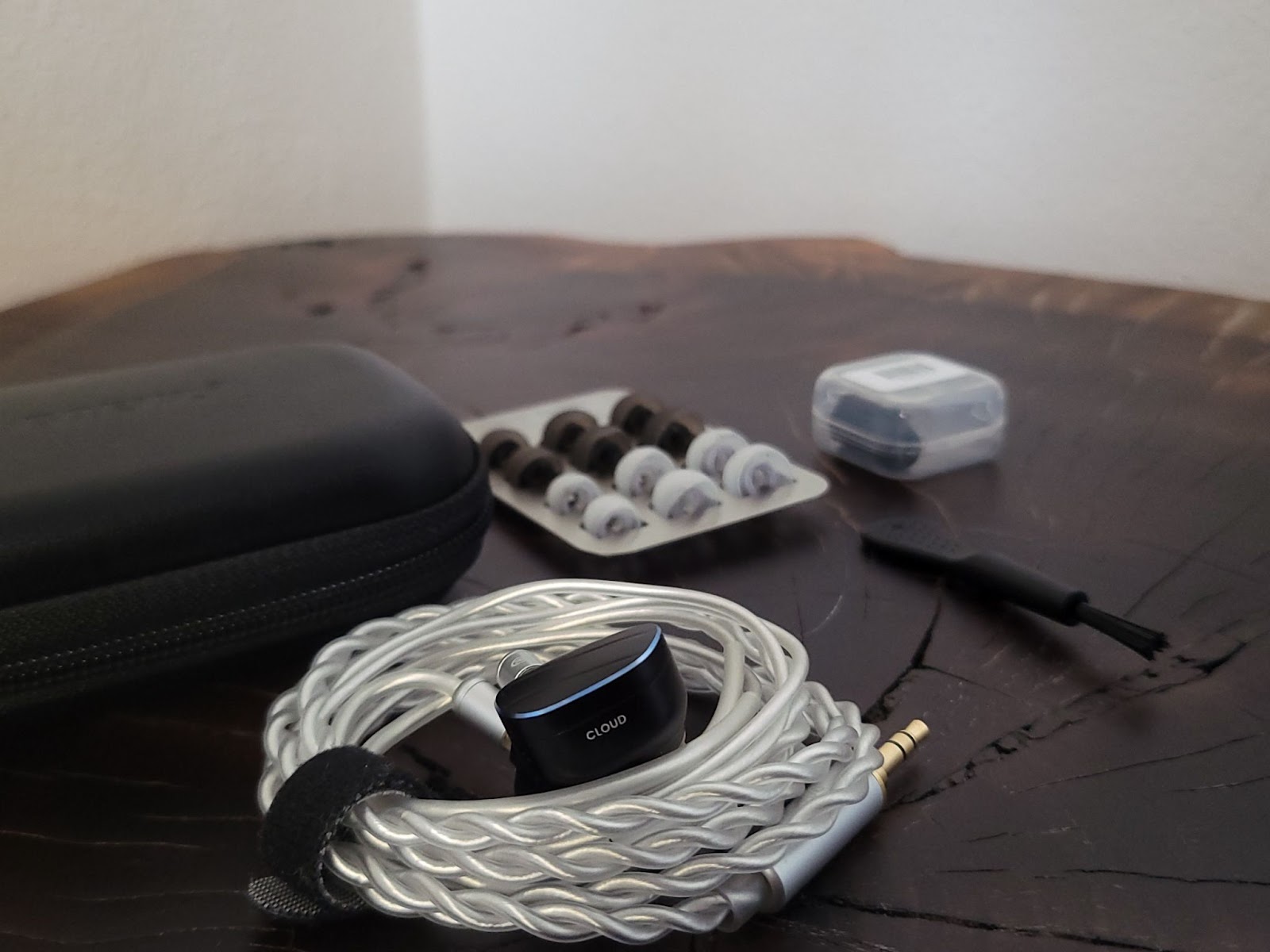
The Cloud aims for a clean presentation with a bright tonality. The bass is light and lacks a visceral punch and rumble. Although measurements show decent subbass extension, my hopefully functioning ears perceive a subbass roll off, making the bass suffer overall. The expected bass texture is also missing.
Mid frequencies sound very clean and clear but a little on the lean side. Vocals are highlighted and sometimes shouty depending on the vocalist and listening volume.
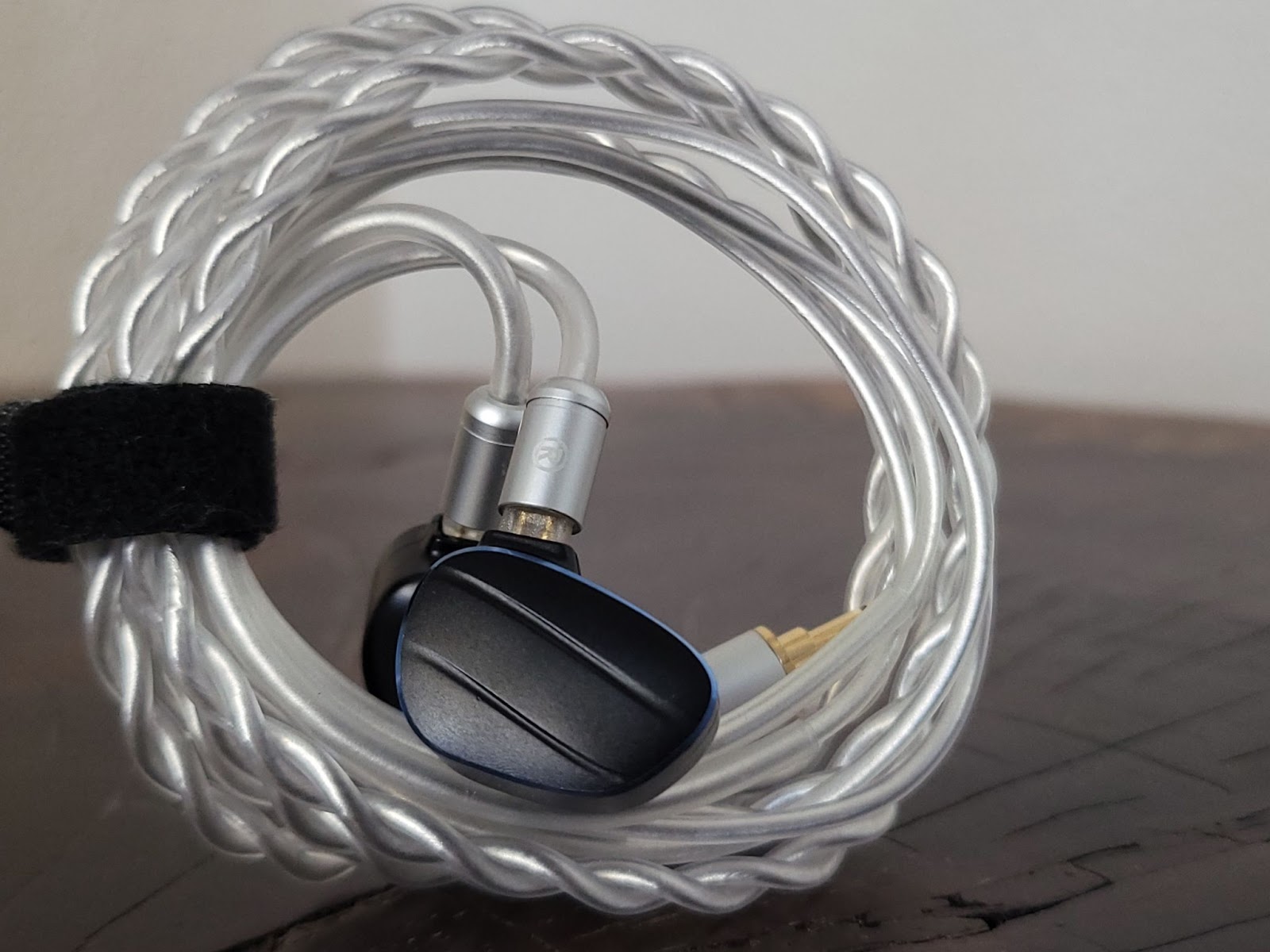
Treble on Cloud is emphasized, particularly lower treble. It sounds very lively and energetic at moderate volume, but I imagine it getting grating at higher listening levels. The Cloud excels in providing an airy listening experience with good treble extension.
If the tonality doesn’t inspire confidence, don't worry—the Cloud makes up for it with technical prowess. Tonally and technically, it reminded me a lot of the Simgot EA1000 and that comparison became a given. Just like EA1000, Cloud’s headstage feels open, airy and spacious. Imaging and layering is also pretty good assuming it would cost less than 200 USD. Detail levels also merits the price tag it has. Timbre is slightly metallic like most of the IEMs with a bright tuning.
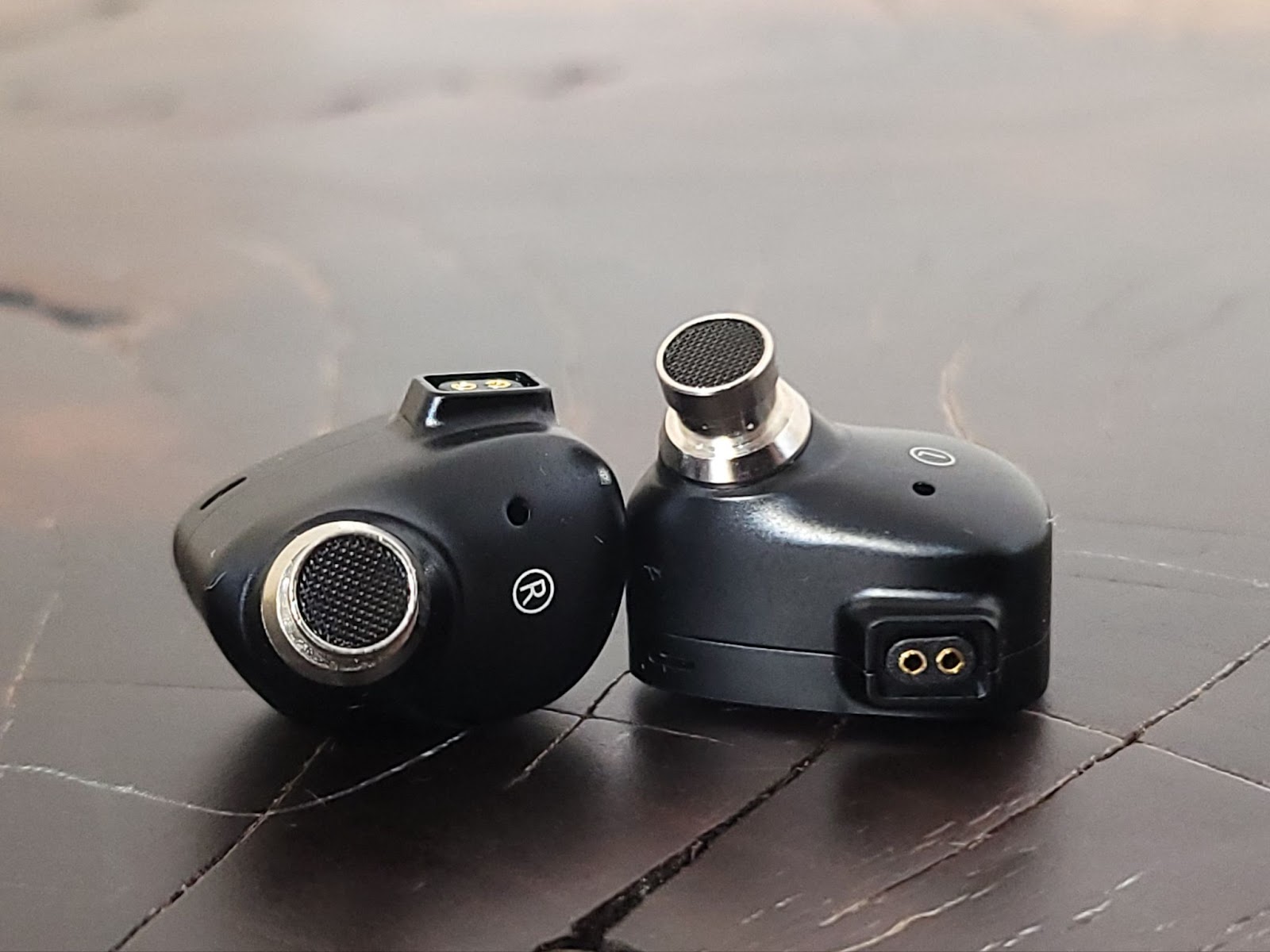
All the comparisons are made by volume matching at 500 Hz.
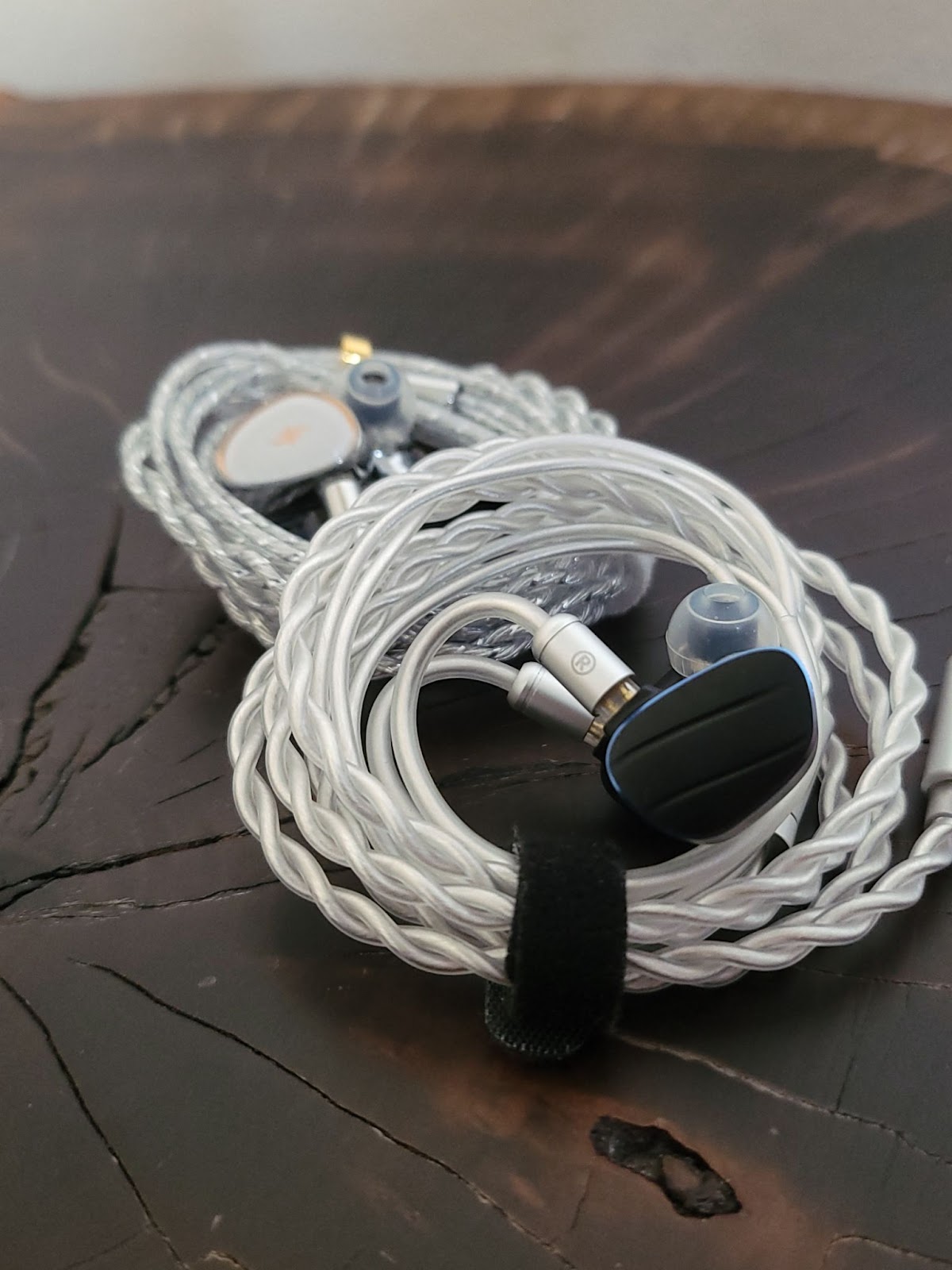
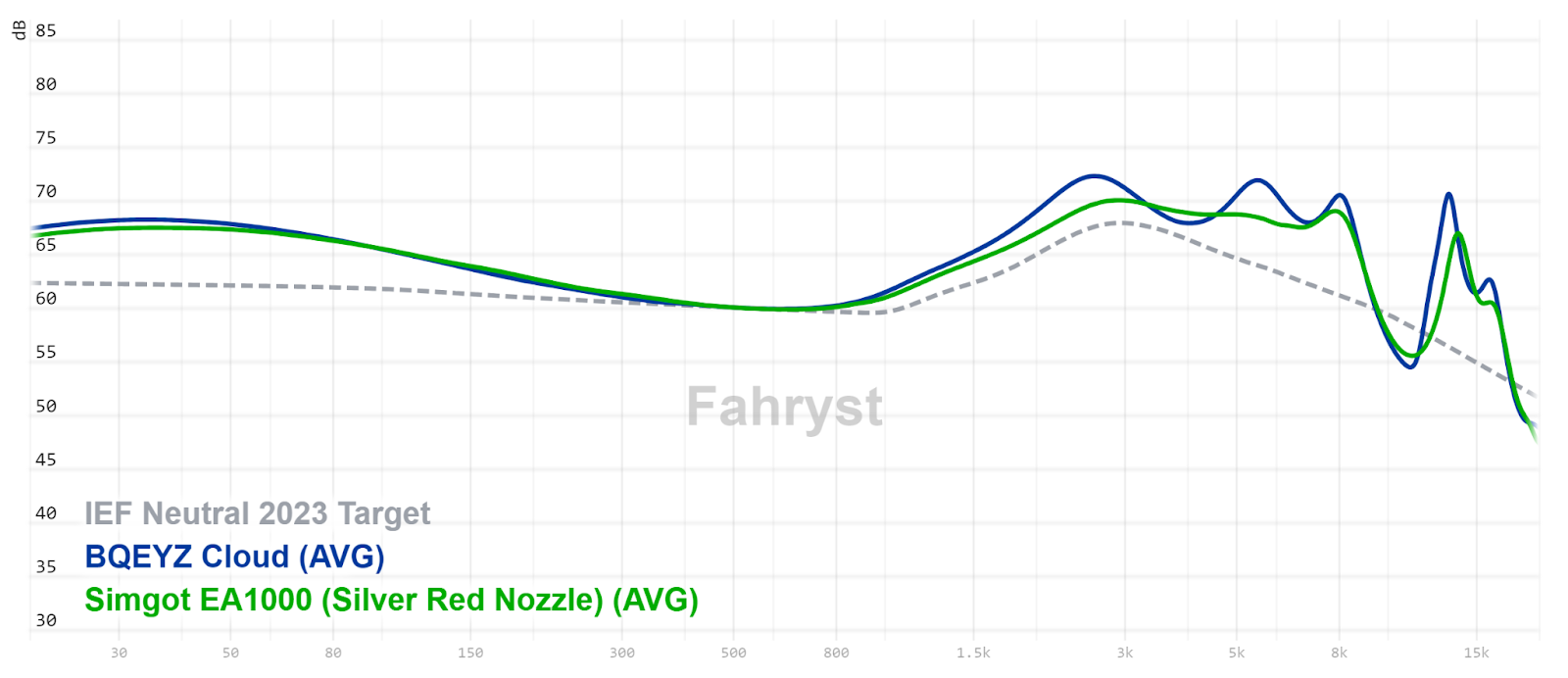
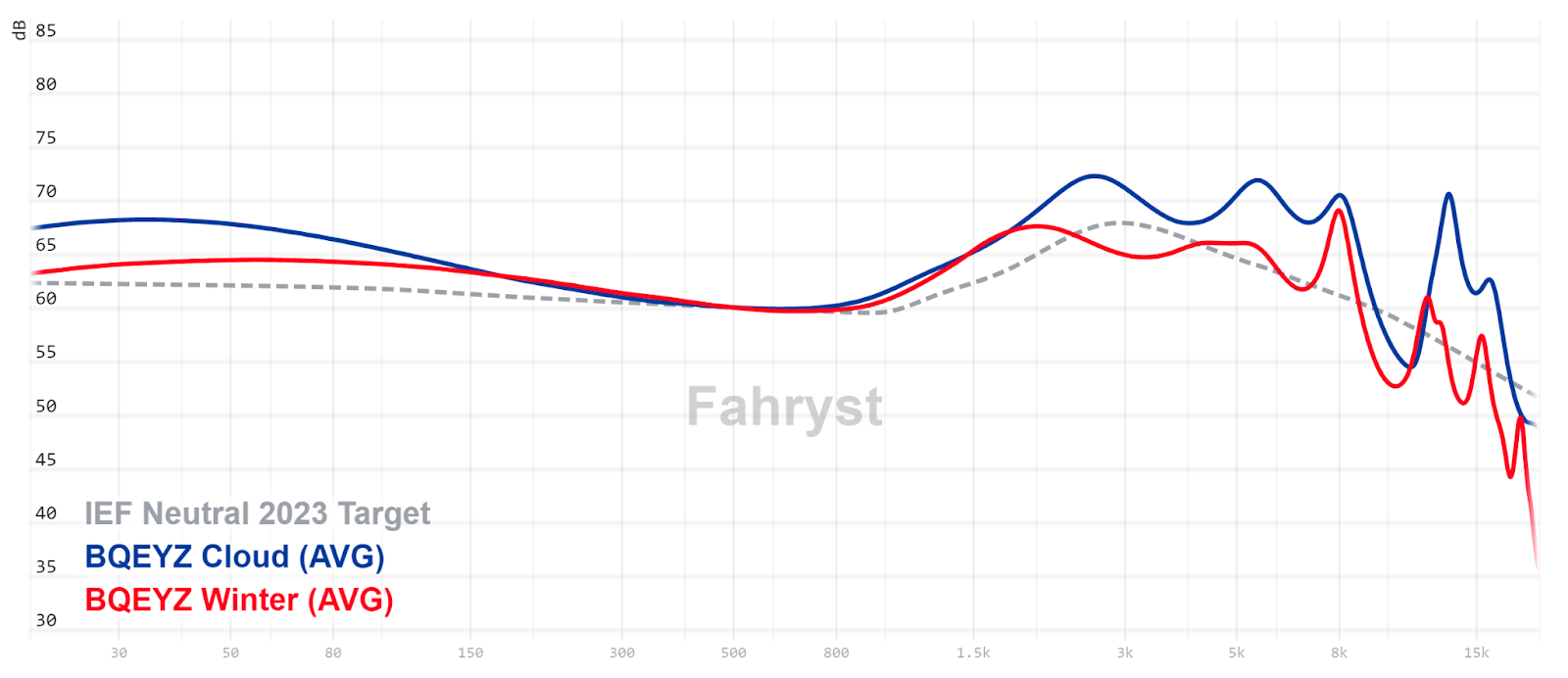
As always, BQEYZ tried to offer something different with the Cloud. It doesn't follow the recent trend of bass-heavy and warm IEMs, instead opting for a clean and airy sound. Although it doesn't quite match the EA1000 in performance, it comes close. At $169, it’s a more affordable alternative for those curious about the EA1000 but reluctant to spend over $200.
The price of the BQEYZ Cloud is somewhat variable since it started as a Kickstarter project. At the time of writing this review, it can be pre-ordered on Linsoul for $169.
Disclaimers
The BQEYZ Cloud was sent to me on loan as part of the Turkey Tour of the Audio Geek Review Group. I don't get to keep this tour unit, even at the end of the tour. As always, keep in mind that everyone has biases, so take everything you read with a grain of salt. I aim to be more concise and to the point in my reviews from now on, without worrying about the word count. If you have any questions, please ask in the comments, and I will do my best to answer them.
Packaging, Build and Accessories of BQEYZ Cloud
BQEYZ has always been generous with their packaging, and the Cloud is no exception. What you receive is similar to what came with Winter and Wind: earpieces, a leatherette case, a fine cable, two sets of silicone eartips on a metal holder, a pair of small foam tips in a separate case, and a cleaning brush. However, I didn't get the premium unboxing experience that I had with the earlier models.
In typical BQEYZ fashion, the shells are made of CNC-machined aluminum. The earpieces are very comfortable and provide a secure fit, but the faceplate design feels like a step back from the elegant look of other BQEYZ IEMs like Autumn and Winter, at least for me.
Sound of BQEYZ Cloud
Tonality
The Cloud aims for a clean presentation with a bright tonality. The bass is light and lacks a visceral punch and rumble. Although measurements show decent subbass extension, my hopefully functioning ears perceive a subbass roll off, making the bass suffer overall. The expected bass texture is also missing.
Mid frequencies sound very clean and clear but a little on the lean side. Vocals are highlighted and sometimes shouty depending on the vocalist and listening volume.
Treble on Cloud is emphasized, particularly lower treble. It sounds very lively and energetic at moderate volume, but I imagine it getting grating at higher listening levels. The Cloud excels in providing an airy listening experience with good treble extension.
Technicalities
If the tonality doesn’t inspire confidence, don't worry—the Cloud makes up for it with technical prowess. Tonally and technically, it reminded me a lot of the Simgot EA1000 and that comparison became a given. Just like EA1000, Cloud’s headstage feels open, airy and spacious. Imaging and layering is also pretty good assuming it would cost less than 200 USD. Detail levels also merits the price tag it has. Timbre is slightly metallic like most of the IEMs with a bright tuning.
Comparisons
All the comparisons are made by volume matching at 500 Hz.
BQEYZ Cloud vs. Simgot EA1000
- The EA1000 has more bass impact and subbass extension. The Cloud lacks the bass texture found in the EA1000.
- Although they have similar tuning in mid frequencies, tonal balance makes Cloud sound thinner. Vocals are more forward on Cloud, considering EA1000 is borderline shouty, Cloud is overstepping the bounds. Neither is particularly sibilant but Cloud gets there earlier if volume is pushed.
- Cloud’s treble, although not harsh, is more splashy and uncontrolled and EA1000 isn’t exactly very tidy in that regard.
- Cloud is livelier at moderate listening levels but EA1000 is already lively enough so it might get a little overbearing on Cloud in time.
- In almost every technical aspect, EA1000 is slightly superior, it’s more resolving, has better timbre, imaging and layering. The driver EA1000 uses sounds like a more capable one. Cloud however is slightly more spacious in staging.
BQEYZ Cloud vs. BQEYZ Winter
- Winter is more neutral in tuning but still has a tighter, more authoritative and more confident bass. Both roll off in the subbass and don’t rumble too much.
- Cloud’s mids are leaner, Winter on the other hand, sounds more full bodied. Vocals are much more forward and shoutier on Cloud. Neither is particularly sibilant but Cloud is more susceptible to sibilance with the increased volume.
- Cloud is much brighter in tonality overall, so it sounds livelier but also more aggressive.
- Winter’s timbre is better, Cloud’s timbre has a metallic tinge to it. Cloud sounds airier and more open. Although Cloud sounds more detailed, winter’s drivers render more info, just not push them forward. Winter’s headstage is deeper and imaging and layering capabilities are better.
Conclusion
As always, BQEYZ tried to offer something different with the Cloud. It doesn't follow the recent trend of bass-heavy and warm IEMs, instead opting for a clean and airy sound. Although it doesn't quite match the EA1000 in performance, it comes close. At $169, it’s a more affordable alternative for those curious about the EA1000 but reluctant to spend over $200.
Last edited:
D
David Haworth
Clouds bass performance is very dependant of depth of insertion and seal. I still haven't maximized it. Using Penon black tips it seems good until you apply pressure with fingertips and the bass and subbass increase. A work in progress. Maybe dual flanged tips?
J
Jarlaxle
@David Haworth you are right. Graph definitely shows more bass than I hear but even with my best sealing tips in different sizes didn't help. Making passive radiator work in high frequencies probably causes some leakage here
Jarlaxle
100+ Head-Fier
Pros: Lovely timbre
Great fit and comfort
Good build quality
Great fit and comfort
Good build quality
Cons: Bass is not as impactful as I hoped
Kefine is a relatively new brand in audio, and Delci is their second offering in the IEM market. Their first IEM, Klanar, received good reviews, although I haven't had the chance to try it myself. Delci has been getting rave reviews as well, which raised my expectations considerably. Let's find out if Delci is as good as others say for 75 USD.
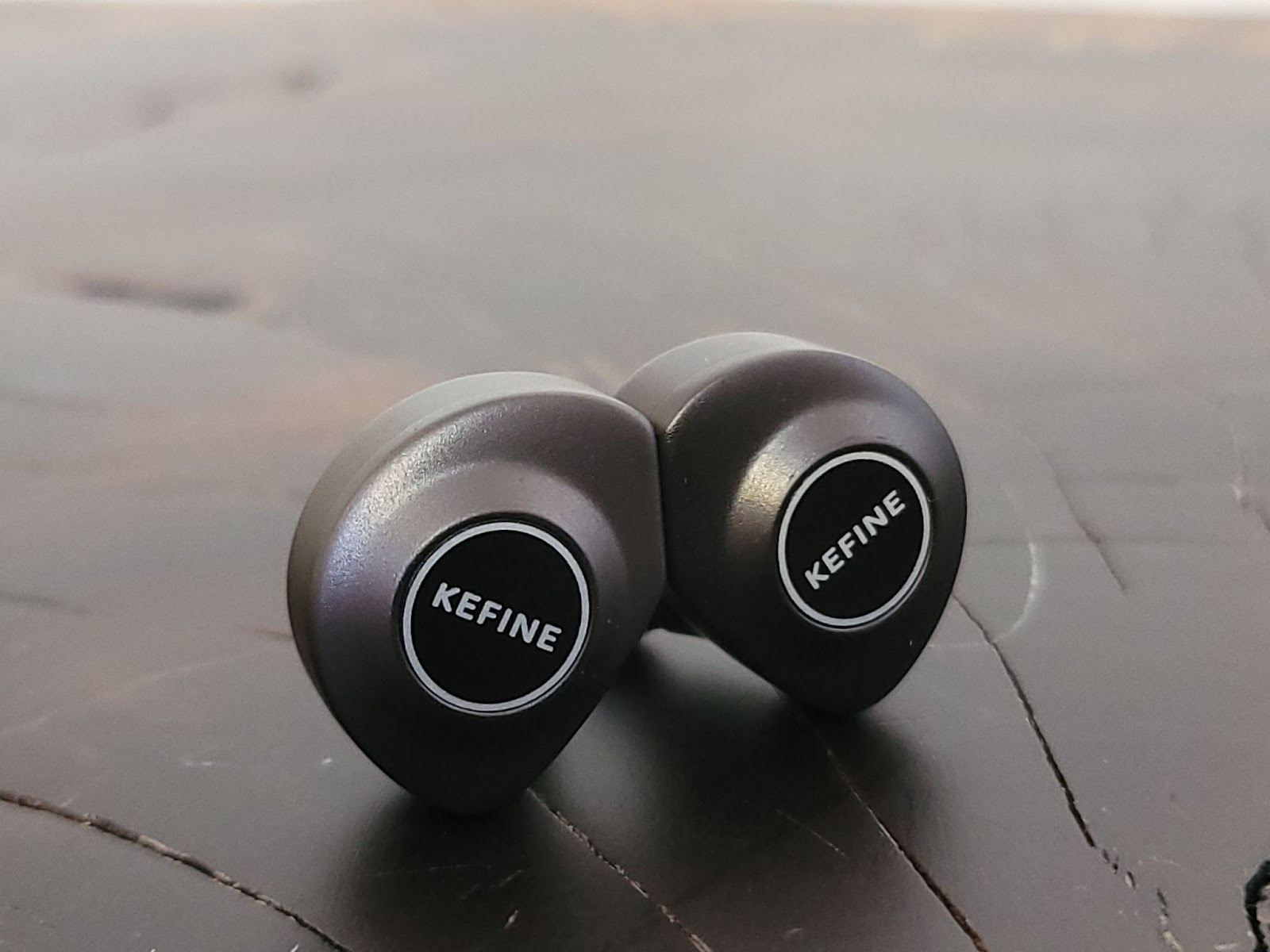
Kefine Delci was provided to me by Kefine for free. As I always say, everyone is biased one way or another, so take everything you read with a grain of salt. Additionally, I will try to be more concise and to the point in my reviews from now on, without worrying about word count. If you have any questions, please ask me in the comments, and I will try to answer them to the best of my abilities.
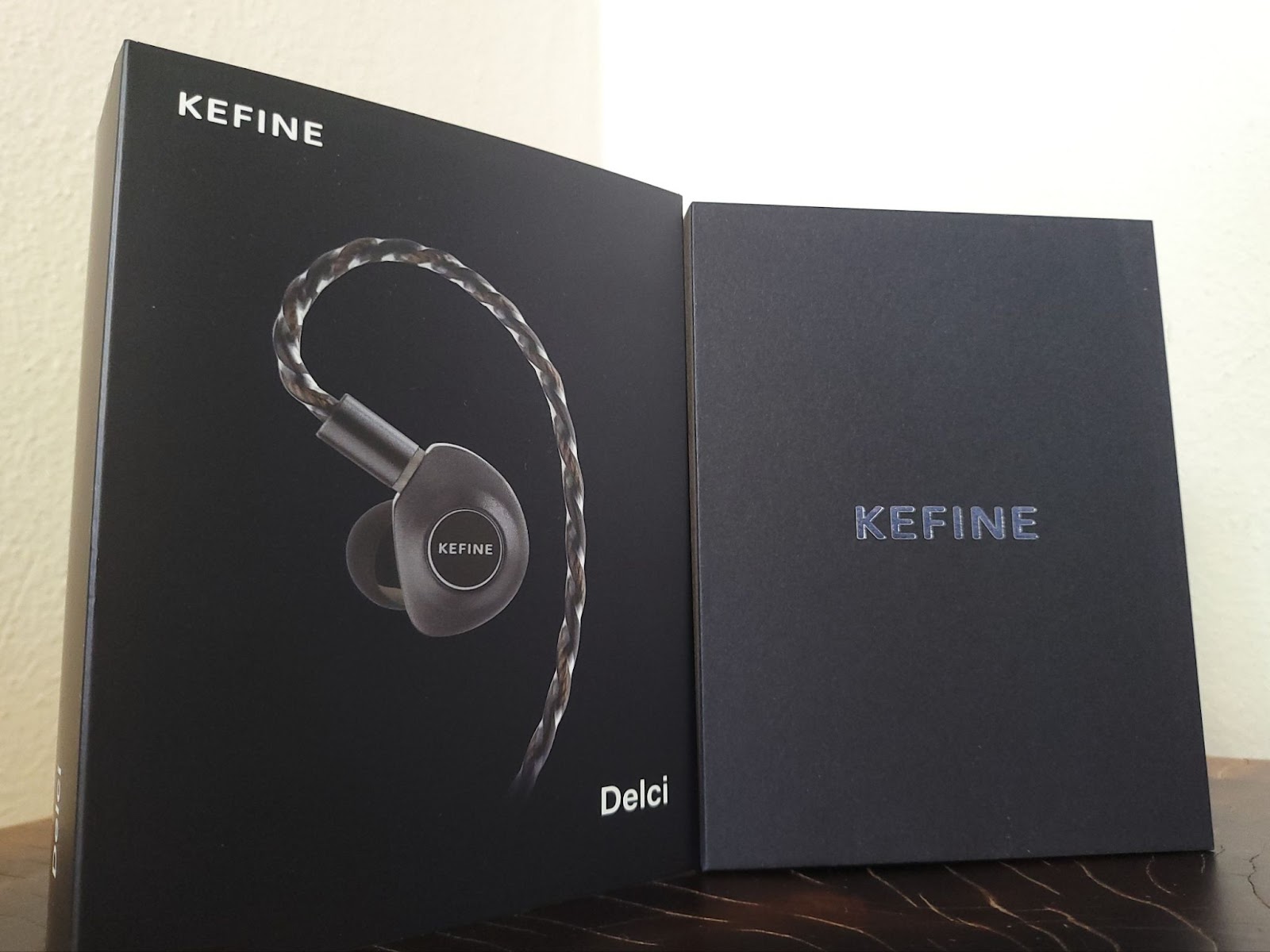
Kefine Delci comes in a simple black box. The ear pieces are well protected in their soft foam slots. Delci is adequately accessorized for its price, with a black carrying case, a decent cable, and 7 pairs of eartips.
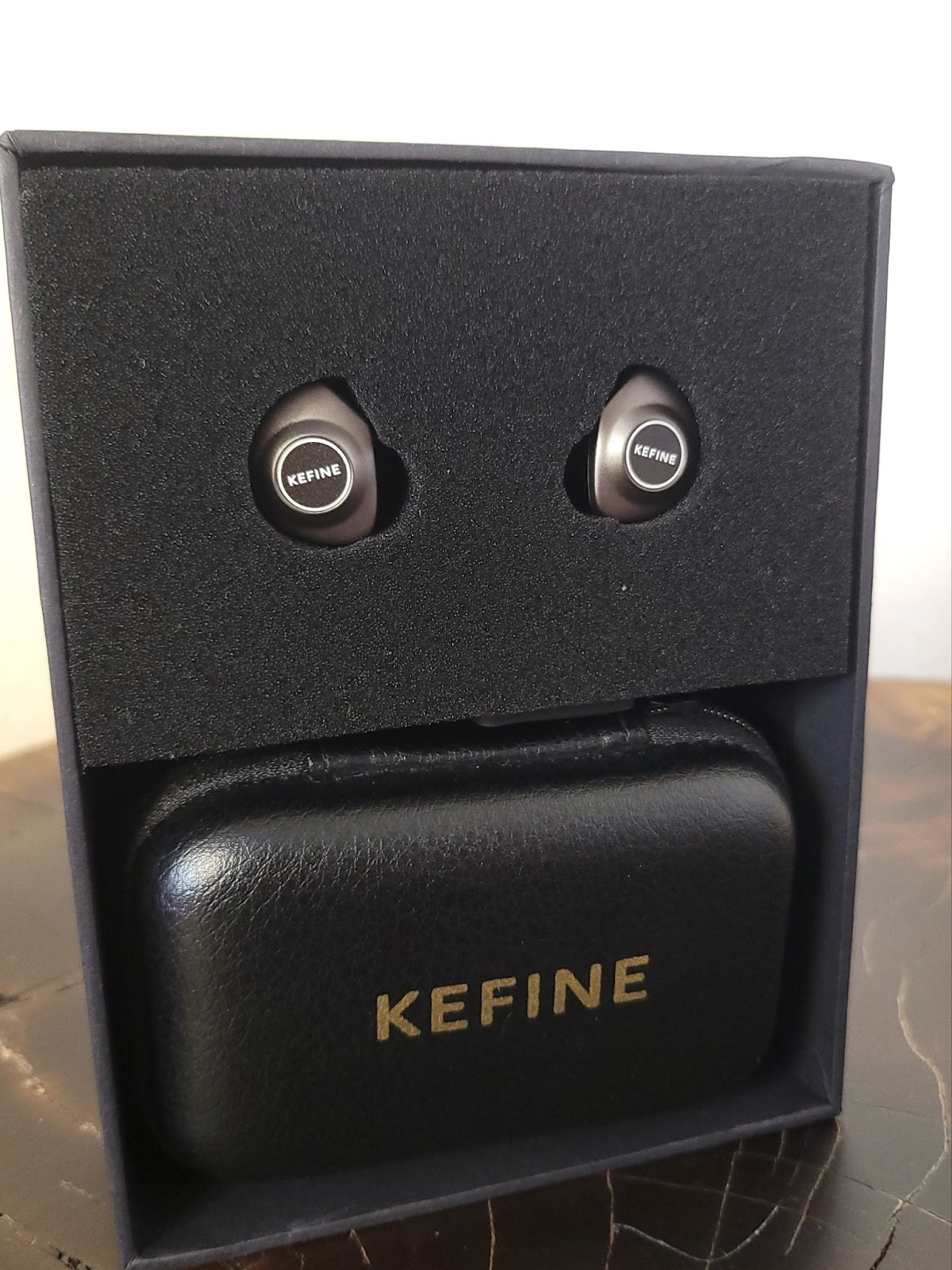
Delci is among the better-built IEMs under 100 USD, featuring fully metal shells. The faceplates have a panel with Kefine branding. The cable connector used on Delci is a 0.78 2-pin. The shells are surprisingly thin and very comfortable. With suitable ear tips, they provide a secure fit as well.
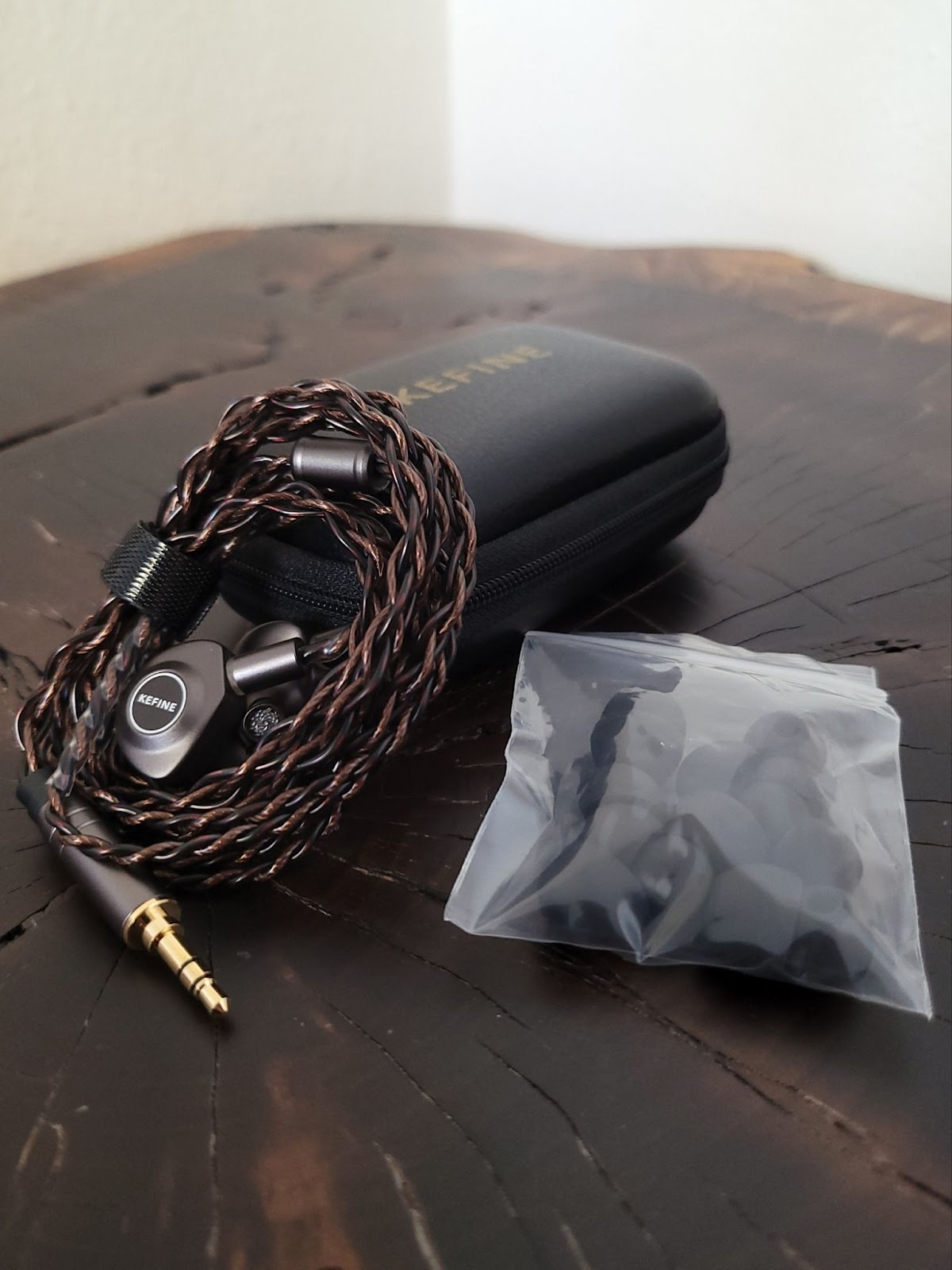
Kefine Delci has a very balanced warm sound. The bass is emphasized but not overpowering. Although it has good power, it doesn’t always hit as hard as I expect. I wouldn't call it pillowy, but it's safe to say that Delci is warmer rather than bass-heavy, if that makes sense.
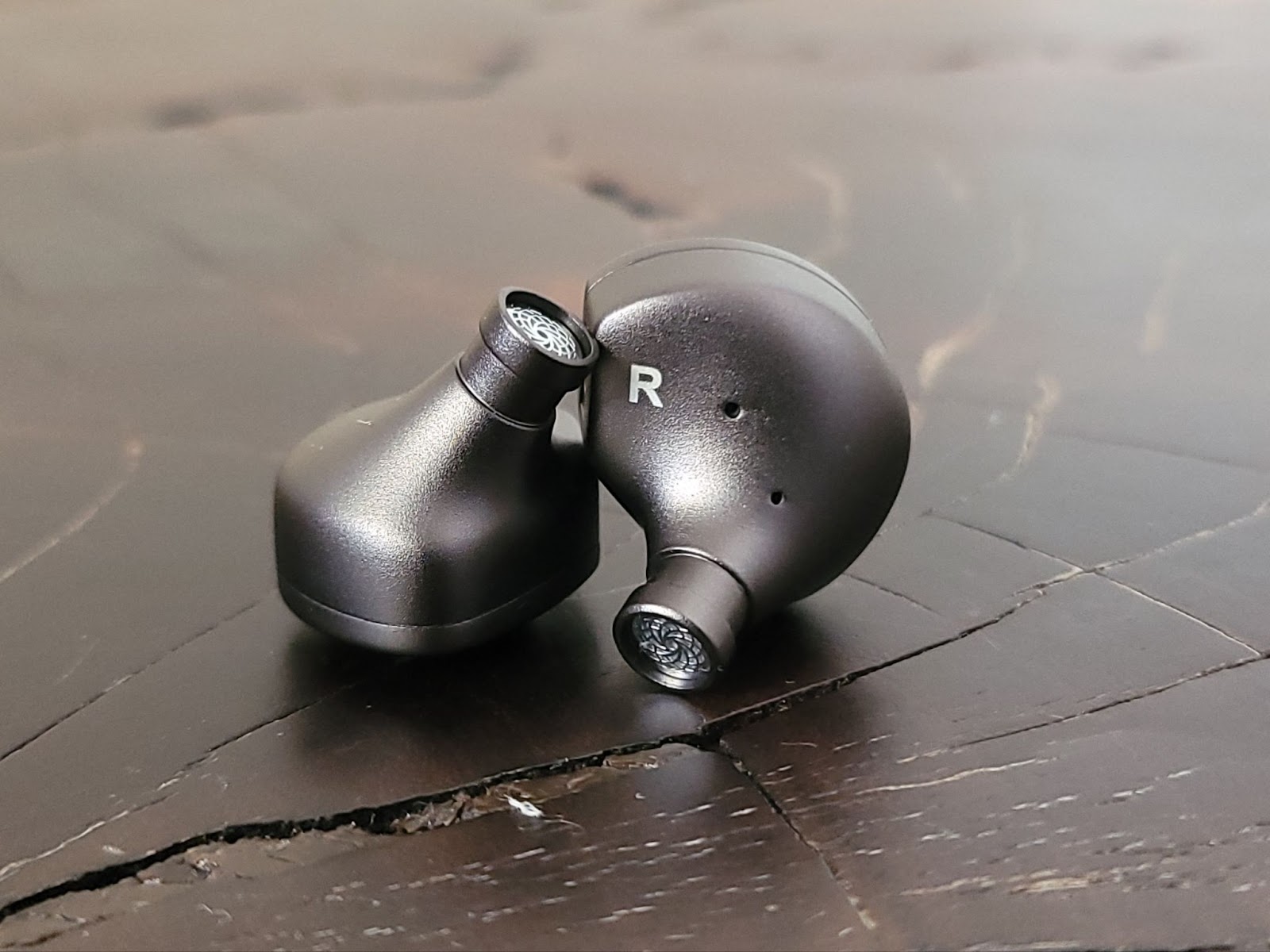
Delci has great treble, which is very balanced and tastefully colored. It balances the bass wonderfully without becoming harsh, piercing, or splashy. There is a slight peak probably around 8 kHz that might go unnoticed by most. It almost never bothered me, but it’s worth mentioning.
With such good balance, the mids yield a natural, lovely tone that is highly musical and emotional.
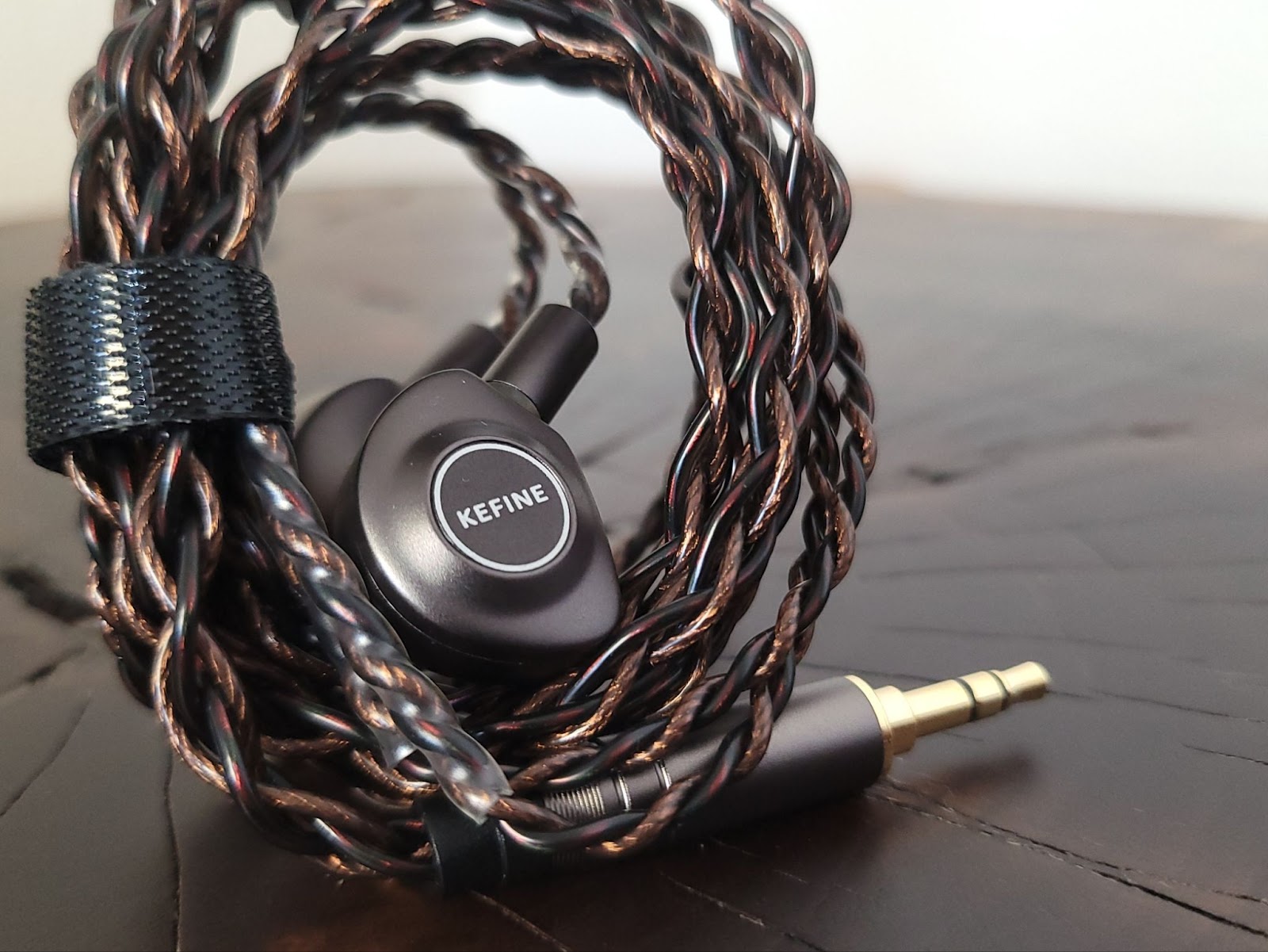
Delci has very good technical capabilities. It might not be top of the class, but it performs above average in many aspects. Especially notable is the timbre, which might be the best I've heard in a long time around this price range. Apart from timbre, Delci offers good staging and imaging capabilities, as well as more than enough detail rendition.
All comparisons are done with volume matching at 500 Hz.
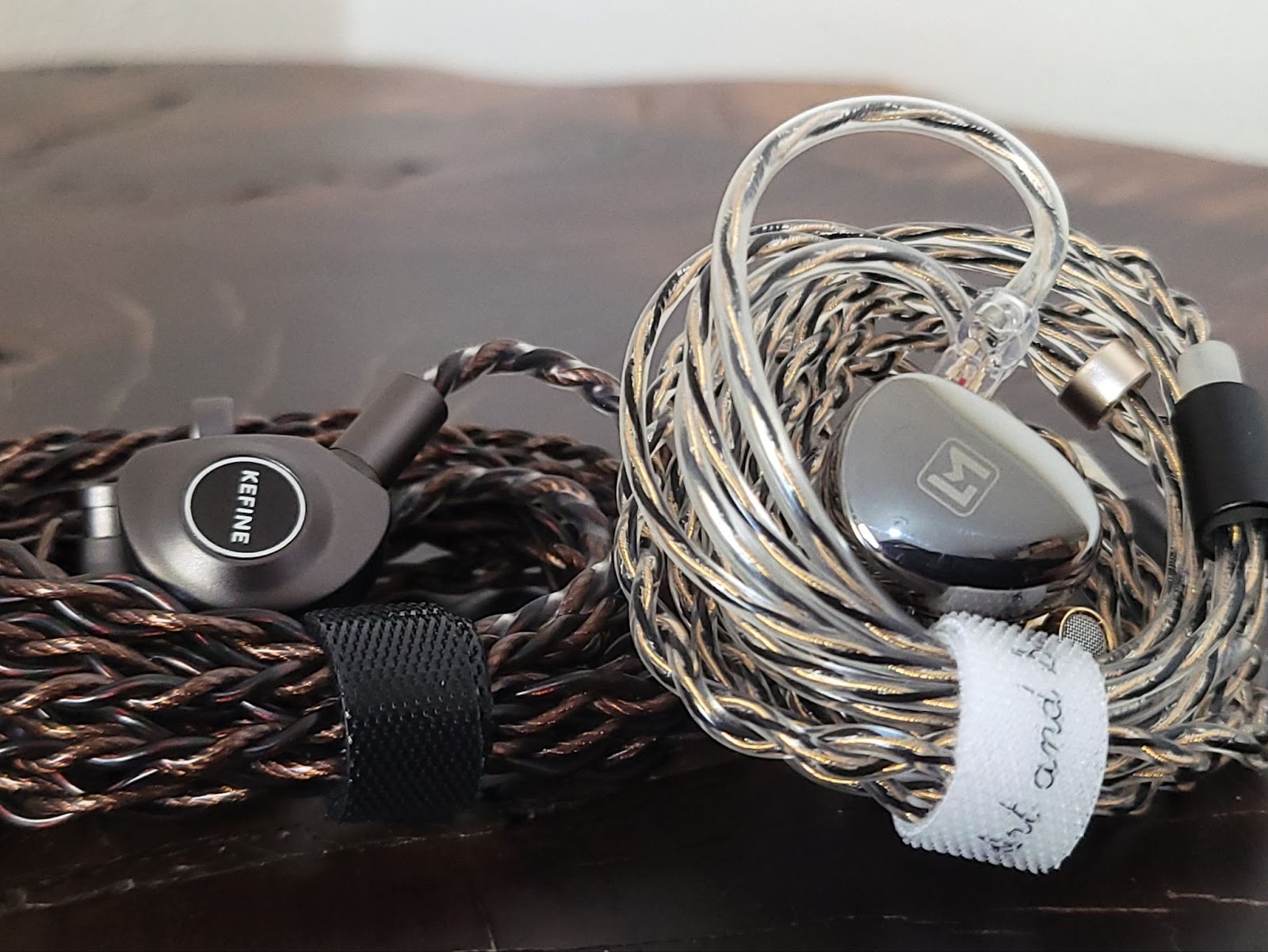
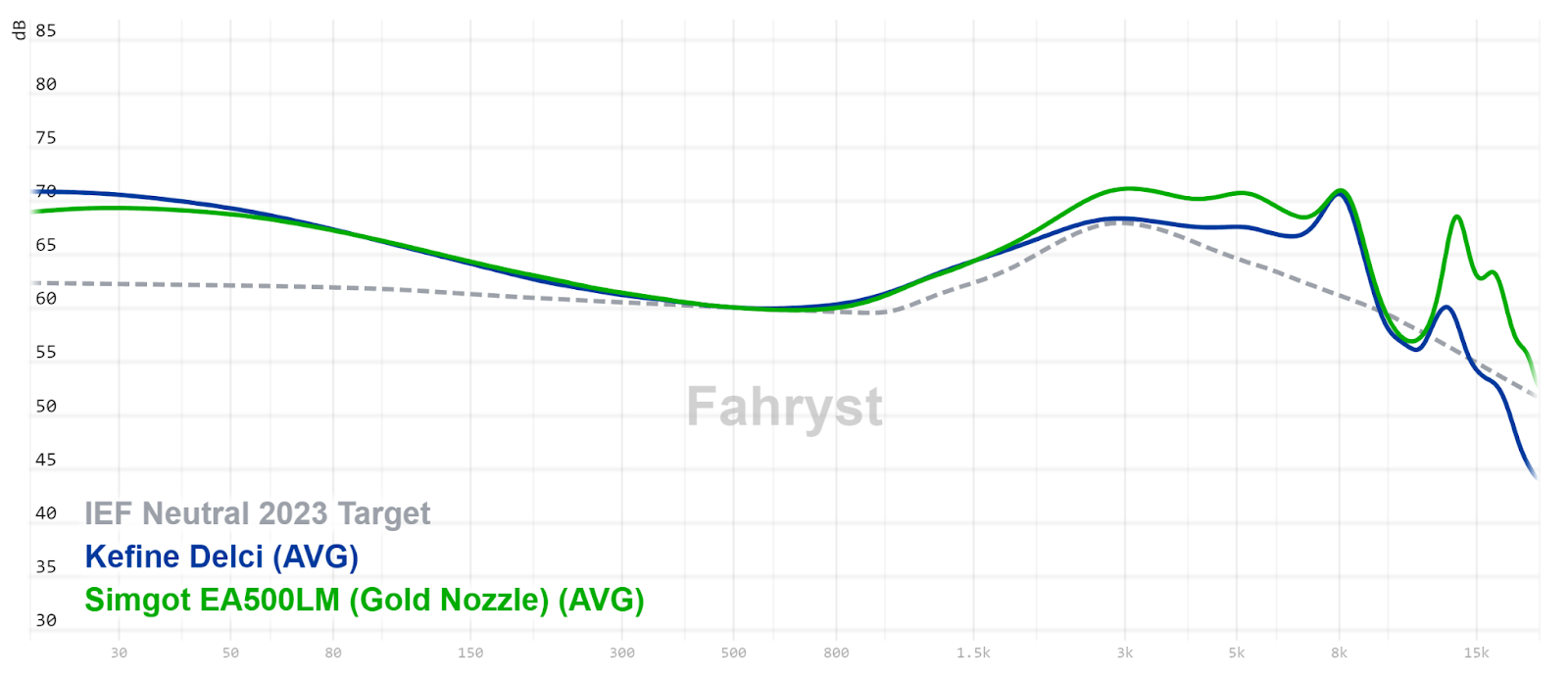
Disclaimers
Kefine Delci was provided to me by Kefine for free. As I always say, everyone is biased one way or another, so take everything you read with a grain of salt. Additionally, I will try to be more concise and to the point in my reviews from now on, without worrying about word count. If you have any questions, please ask me in the comments, and I will try to answer them to the best of my abilities.
Packaging, Build and Accessories of Kefine Delci
Kefine Delci comes in a simple black box. The ear pieces are well protected in their soft foam slots. Delci is adequately accessorized for its price, with a black carrying case, a decent cable, and 7 pairs of eartips.
Delci is among the better-built IEMs under 100 USD, featuring fully metal shells. The faceplates have a panel with Kefine branding. The cable connector used on Delci is a 0.78 2-pin. The shells are surprisingly thin and very comfortable. With suitable ear tips, they provide a secure fit as well.
Sound of Kefine Delci
Tonality
Kefine Delci has a very balanced warm sound. The bass is emphasized but not overpowering. Although it has good power, it doesn’t always hit as hard as I expect. I wouldn't call it pillowy, but it's safe to say that Delci is warmer rather than bass-heavy, if that makes sense.
Delci has great treble, which is very balanced and tastefully colored. It balances the bass wonderfully without becoming harsh, piercing, or splashy. There is a slight peak probably around 8 kHz that might go unnoticed by most. It almost never bothered me, but it’s worth mentioning.
With such good balance, the mids yield a natural, lovely tone that is highly musical and emotional.
Technicalities
Delci has very good technical capabilities. It might not be top of the class, but it performs above average in many aspects. Especially notable is the timbre, which might be the best I've heard in a long time around this price range. Apart from timbre, Delci offers good staging and imaging capabilities, as well as more than enough detail rendition.
Comparisons
All comparisons are done with volume matching at 500 Hz.
Kefine Delci vs. Simgot EA500LM
- Delci is bassier, warmer and more full bodied but EA500LM is tighter and more impactful in the bass. Delci’s bass is a little more pillowy compared to EA500LM’s bass. Delci has more subbass extension. Particularly bass guitars sound lovely on Delci.
- Vocals are more forward on the EA500LM, which can get shouty occasionally. Delci’s mids and vocals have enough emphasis but never become overbearing.
- Neither is sibilant or harsh at similar listening levels, but Delci has a safer tuning in the lower treble area. The EA500LM is overall brighter with more energy and bite in the treble.
- Delci has a more natural timbre. In all other technical and subjective attributes, the EA500LM wins. The EA500LM is more resolving and detailed, feels more spacious, and has better imaging.
Kefine Delci vs BLON x HBB Z300,
- Their bass renditions are almost identical. Both have elevated and slightly pillowy bass.
- Kefine Delci is brighter and sounds more balanced. The Z300 is darker and highlights mids and vocals more.
- Neither is particularly harsh, but Delci would become harsh and fatiguing first if you raise the volume. The Z300 has a real peak around 8k that bites occasionally. Delci is slightly smoother in that sense.
- Delci is technically superior in every aspect. It has a more natural timbre and feels more spacious. Details and layering are also better on Delci, and it draws a clearer image. The only area where the Z300 might be better is highlighting lower frequency details due to its darker tonality.
Conclusion
Hopefully my comparisons clarified how Delci fits in the market. In my opinion, it filled a gap that has been neglected wonderfully. While Simgot IEMs have been dominating technicality oriented bright sound signature, we needed a more balanced IEM with great timbre that wouldn’t sound too blunted. Delci doesn’t sacrifice technicalities in the favor of musicality too much and strikes a great balance. If you think the highly praised IEMs like EA500LM are too bright or harsh for you, Delci might be the choice for you. Lastly, you can follow Kefine's facebook account for the latest updates.
Last edited:
Jarlaxle
100+ Head-Fier
Pros: Price
Low latency gaming mode
Decent battery life
Skin friendly silicone neckband
Inclusion of a decent pouch for carrying
Low latency gaming mode
Decent battery life
Skin friendly silicone neckband
Inclusion of a decent pouch for carrying
Cons: Lack of codecs
High output impedence
Sound quality isn't good enough for critical listening
Microphone isn't very clear
High output impedence
Sound quality isn't good enough for critical listening
Microphone isn't very clear
Celest, the sister brand of Kinera aimed at a younger audience, often offers gaming-oriented products apart from IEMs. I reviewed their Ruyi cable with a boom mic last year and still use it while gaming. The Wyvern, which I also reviewed, has a similar cable, making it an even more appealing package. A couple of months ago, Celest released a Bluetooth neckband with a boom mic named SkySoar, priced at $29. Let’s see if it’s as good and useful as the others.
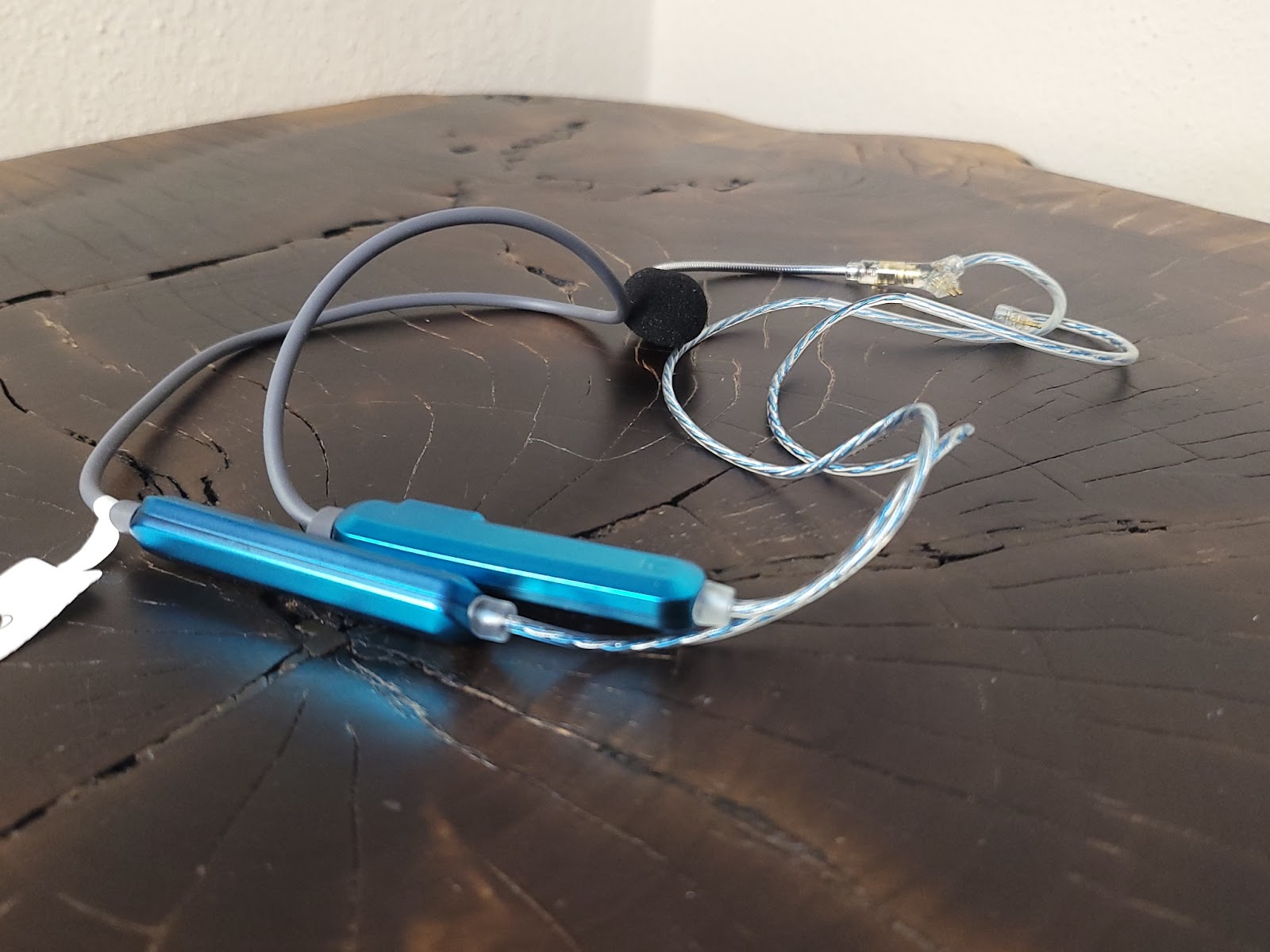
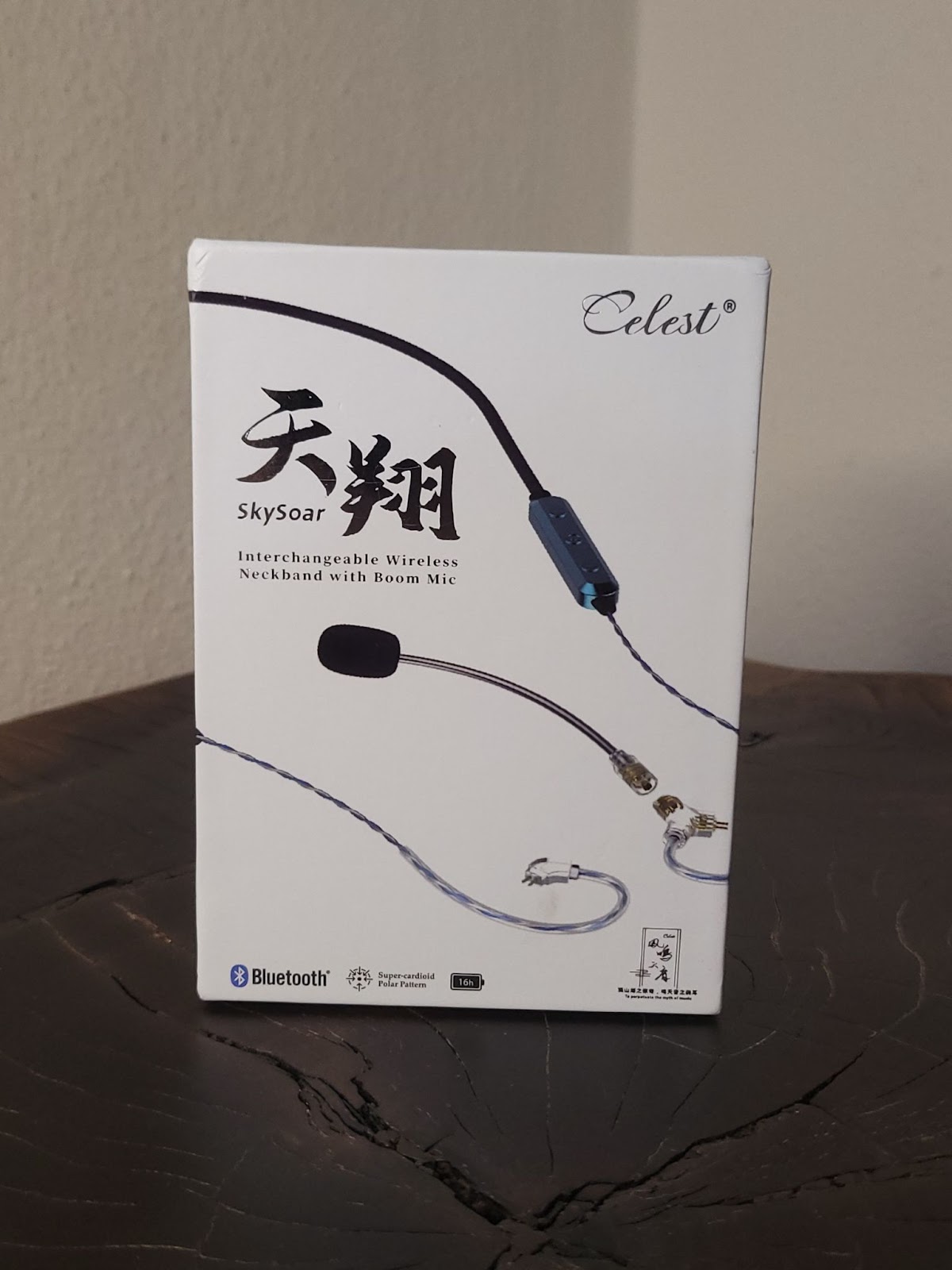
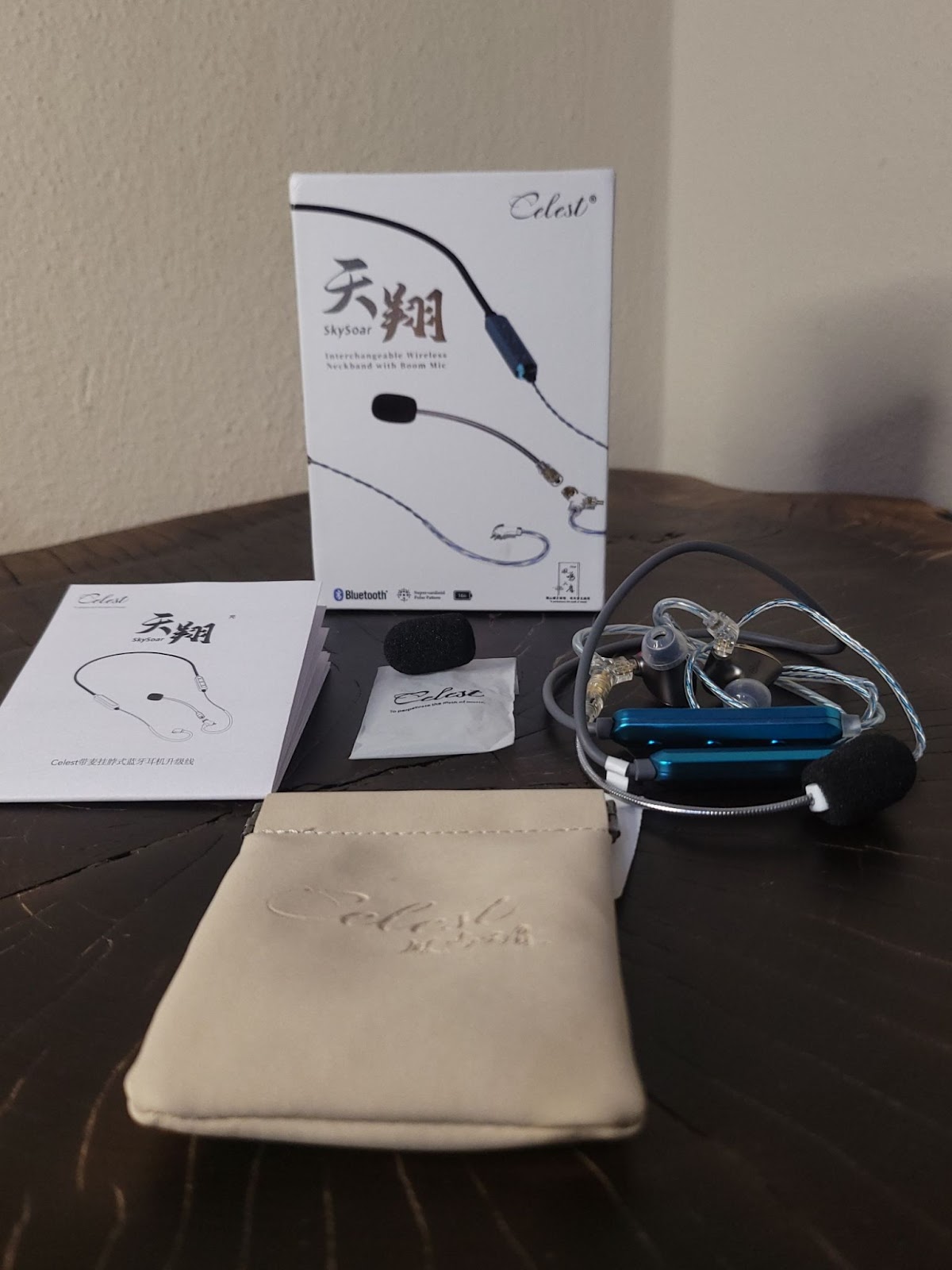
The neckband itself is made of skin-friendly silicone, according to the marketing material. The housings that carry all the electronics are rather big for my taste, and they dangle down since the neckband isn’t made out of a hard material. To be honest, neckbands are so 2000s; after true wireless earphones became popular, they were almost removed from existence, and with good reason. Also, surprisingly, I noticed that when I was using the boom mic, it pulled the earhook down. That was almost never a problem with the Wyvern and Ruyi.
Unfortunately, SkySoar only uses SBC and AAC codecs, and compression in audio quality is pretty noticeable. Still, it is to be expected from a $29 neckband, so I can’t really complain. In default mode, there is slight latency, which can be annoying when watching videos. However, the gaming mode solves this problem with minimal latency. I don’t really have the equipment to test the numbers, but in the video tests on YouTube, I was pretty satisfied with the result.
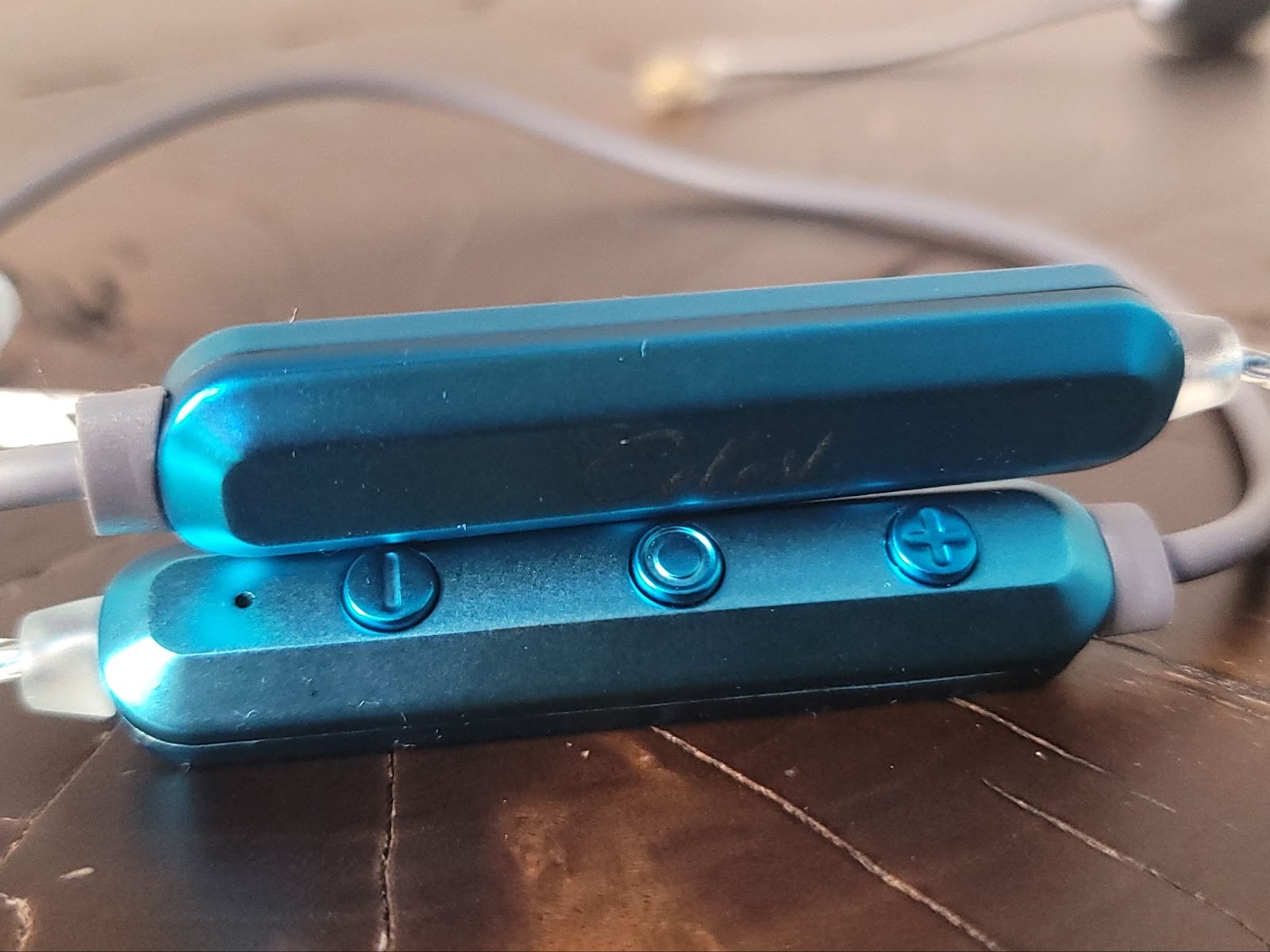
The sound signature of SkySoar is not neutral or linear. There is a significant sub-bass and upper treble roll-off, so you might want to use some equalization to compensate for this. Additionally, the high output impedance of 8 Ohms can alter the tuning of your IEMs. The lack of air results in a closed-in soundstage, and the compression affects other technical aspects slightly.
Disclaimers
The SkySoar I demoed was a tour unit sent out by Kinera, and I don’t get to keep it at the end of the tour. As I always say, everyone has some degree of bias, so take everything you read with a grain of salt. Also, I will try to be more concise and to the point in my reviews from now on, without worrying about the word count. If you have any questions, please ask me in the comments, and I will try to answer them to the best of my abilities.Product Information
- Usage Mode: Bluetooth
- Bluetooth Chip: Zhongke Lanxun 5635B
- Bluetooth Version: V5.3
- Bluetooth Protocols: A2DP/HFP/HSP/AVRCP
- Battery Capacity: 150mAH
- Playback Time: Approximately 16 hours
- Charging Time: 1 hour
- Interface: 0.78 mm 2 Pin
- Transmission Distance: 10m
- Impedance: 8Ω
- Charging Voltage: 5V
- Charging Interface: Type-C
Microphone Parameters
- Microphone Head: Strong resistance against Microphone Head
- Specification: Φ4*1.5 mm Anti-Interference
- Microphone Polar Patterns: Super-Cardioid
- Sensitivity: -38 dB±3 dB
- Resistance: 2.2 KΩ
- SNR: 58 dB
- Frequency Response: 20 Hz-20 kHz
- Connector: Slotted Gold-Plated Pure Copper mmcx
- Metal Tube: Shaped Metal Soft Tube
- Microphone Shell: White
- Microphone Length: 12.5 cm±2 cm
- Type Of Use: Ear-hook
Packaging and Accessories of SkySoar
Since SkySoar is an accessory itself, there is not much to say about the accessories it comes with. The packaging is rather simple, but there is a pouch with an auto-closing mechanism that I like a lot for carrying. Other than that, two microphone sponges are included for you to use if you find pops in your voice are too annoying.The neckband itself is made of skin-friendly silicone, according to the marketing material. The housings that carry all the electronics are rather big for my taste, and they dangle down since the neckband isn’t made out of a hard material. To be honest, neckbands are so 2000s; after true wireless earphones became popular, they were almost removed from existence, and with good reason. Also, surprisingly, I noticed that when I was using the boom mic, it pulled the earhook down. That was almost never a problem with the Wyvern and Ruyi.
Sound Impressions
I don’t want to comment on SkySoar’s sound quality too extensively because it’s a convenience-first kind of product. However, some things need to be addressed nevertheless. SkySoar uses Bluetooth 5.3 and can stay connected to multiple devices, which is a big plus. I preferred using SkySoar with a PC for Discord calls instead of mobile usage.Unfortunately, SkySoar only uses SBC and AAC codecs, and compression in audio quality is pretty noticeable. Still, it is to be expected from a $29 neckband, so I can’t really complain. In default mode, there is slight latency, which can be annoying when watching videos. However, the gaming mode solves this problem with minimal latency. I don’t really have the equipment to test the numbers, but in the video tests on YouTube, I was pretty satisfied with the result.
The sound signature of SkySoar is not neutral or linear. There is a significant sub-bass and upper treble roll-off, so you might want to use some equalization to compensate for this. Additionally, the high output impedance of 8 Ohms can alter the tuning of your IEMs. The lack of air results in a closed-in soundstage, and the compression affects other technical aspects slightly.
Microphone Performance
When I used the boom microphone or inline microphone for calls, people I spoke to had no complaints. However, from the recordings I took, SkySoar’s boom microphone sounded bassier, thicker, and more bodied compared to Ruyi’s boom microphone. Ruyi’s microphone, on the other hand, sounded clearer but more nasally. In the end, I prefer Ruyi’s clarity, but it comes down to personal preference.Conclusion
Although neckbands have fallen out of favor, it’s intriguing to see a few brands trying to keep them alive. Celest has put their own spin on SkySoar with a detachable boom microphone. While it lacks some of the higher-quality codecs, it is also much cheaper than the current competition. For casual music listening, voice calls, and gaming, SkySoar is a competent product, and at this price point, I don’t have too many complaints.Jarlaxle
100+ Head-Fier
Pros: Premium build and unboxing experience
Good accessories
Mid centric tuning
Great staging
Good Timbre
Good accessories
Mid centric tuning
Great staging
Good Timbre
Cons: Sibilant
Not very comfortable
Not very comfortable
Hiby is mostly known for their digital audio players and applications like Hiby Music and Hiby Cast. Occasionally, they release earphones, which consistently receive praise. This time, they have collaborated with the boutique earphone brand F.Audio to bring us the Project Ace. Typically, F.Audio’s offerings are much more expensive, so this collaboration presents the most affordable IEMs F.Audio has ever been involved with, priced at $249.
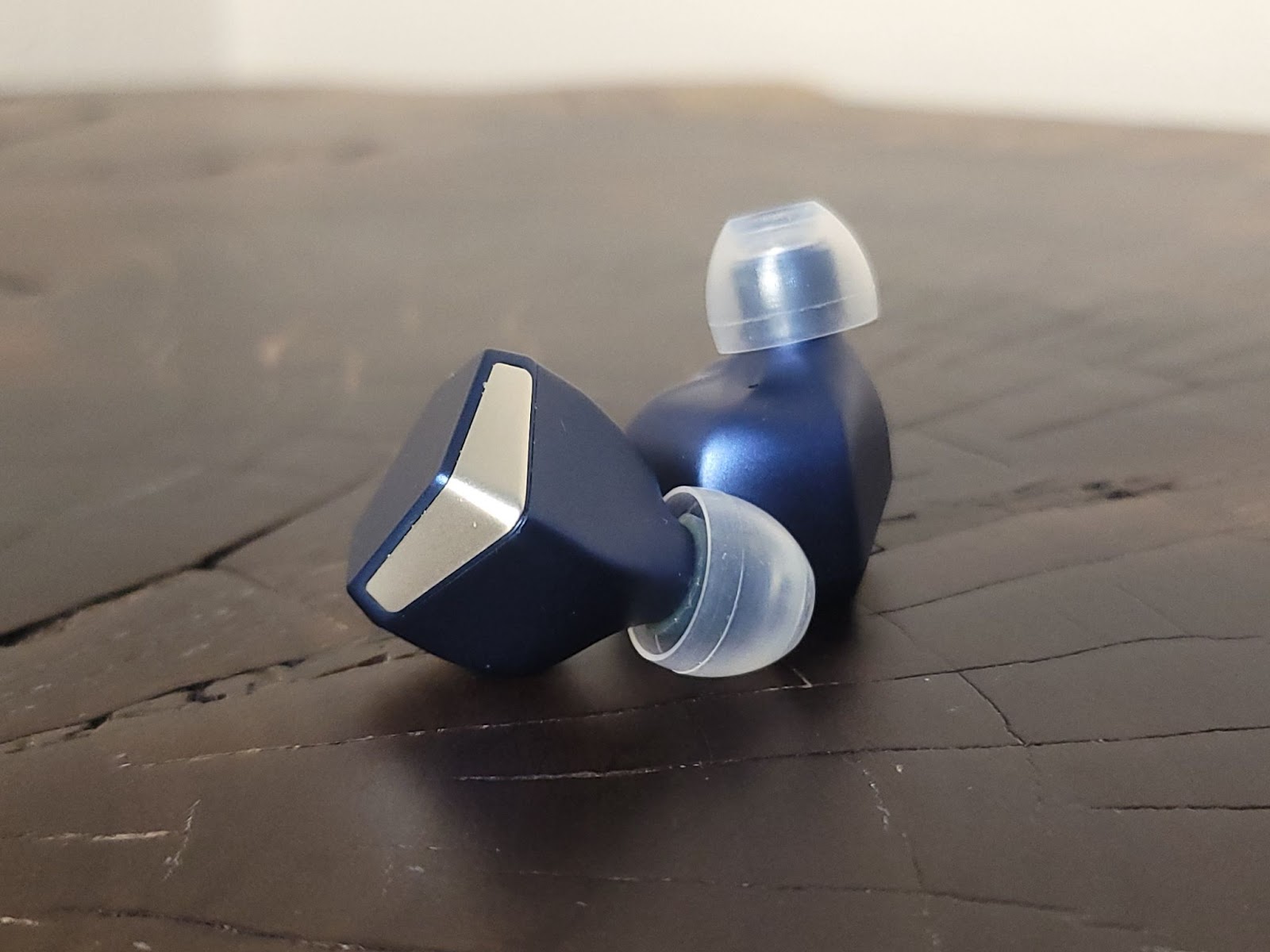
Hiby x F.Audio Project Ace, along with Hiby’s R4, was sent to me by Hiby as part of the Turkey Tour of the Audio Geek Review Group. I don’t get to keep these tour units, even at the end of the tour. As I always say, everyone is biased one way or another, so take everything you read with a grain of salt. Also, I will try to be more concise and to the point in my reviews from now on without worrying about the word count. If you have any questions, please ask me in the comments, and I will try to answer them to the best of my abilities.
The Project Ace is a well-built and uniquely designed pair of IEMs. The shells are fully made out of metal carved with CNC. The hexagonal shape doesn’t exactly make them ergonomic, but they certainly look striking.
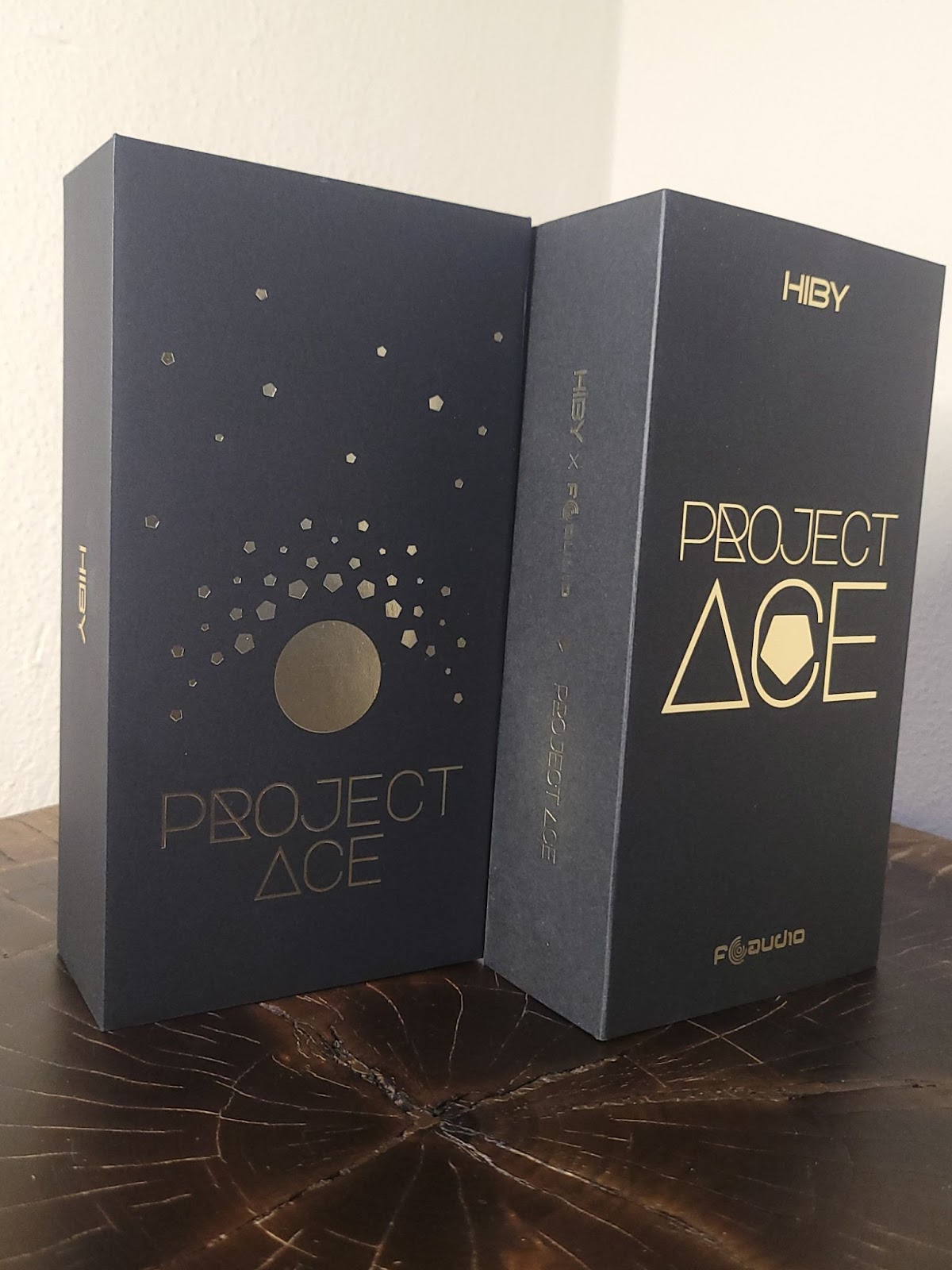
Each side has one 12 mm lithium-magnesium alloy dome and beryllium-coated driver. The cable that comes with the Project Ace is also very well made. It’s on the thicker side with 8 cores and a little stiff but still manageable. The product page states it consists of both silver and silver-plated copper strands. The cable utilizes a proprietary interchangeable locking termination mechanism and comes with 3.5 mm and 4.4 mm balanced terminations. The Project Ace also comes with 6 pairs of eartips and a cleaning brush. The included tips are 3 pairs of silicone and 3 pairs of foam. Lastly, the case included in the box looks great and reminds me of the case that comes with more expensive FiiO IEMs. It has a separator inside for you to store tips or alternative accessories, which is a nice touch. Overall, the unboxing experience isn’t too extravagant but still feels very premium.
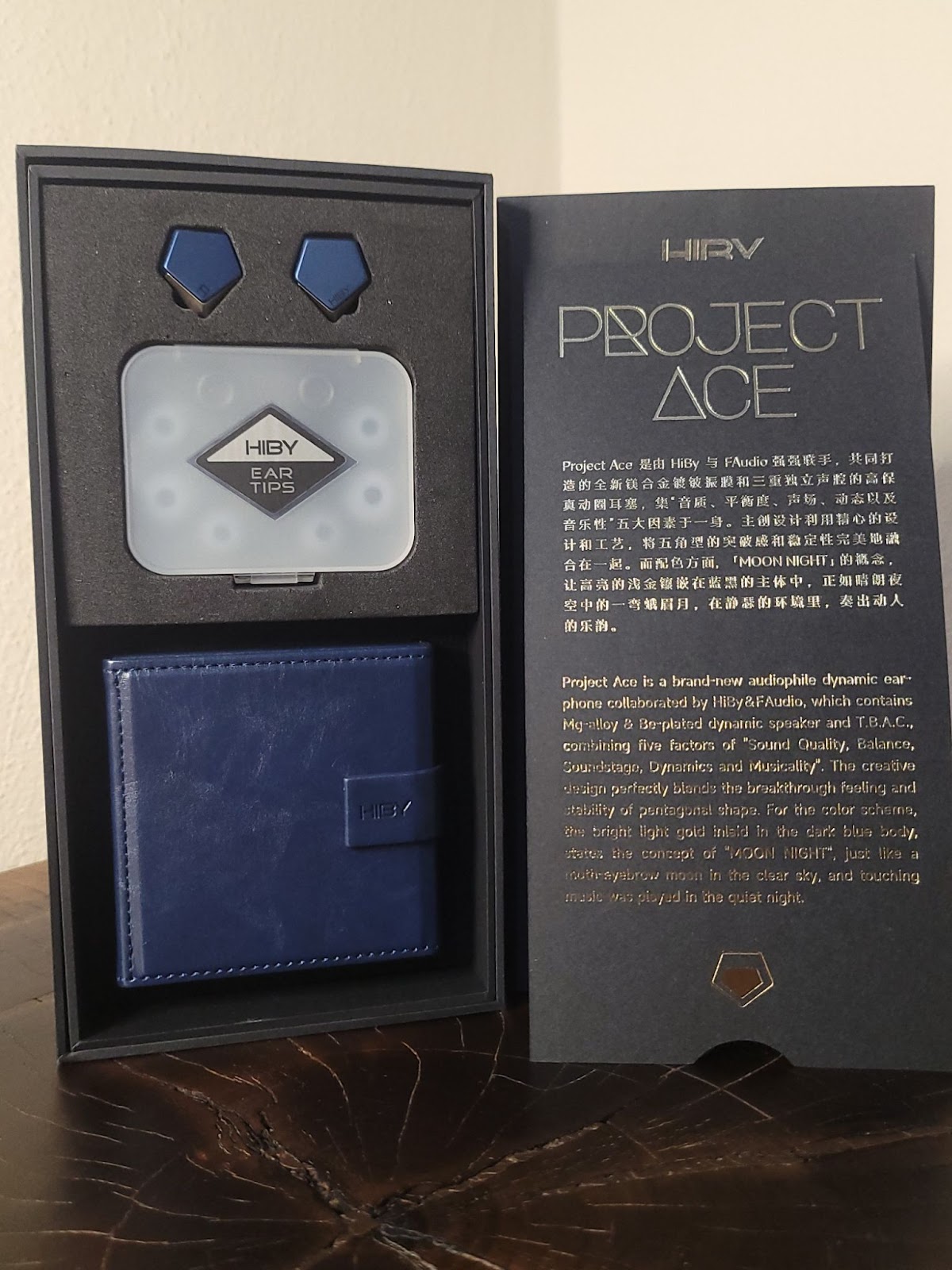
The Project Ace has a different sound signature than most IEMs released these days. It’s not esoteric but rather a forgotten and missed sound signature.
Ace aims for a mid-centric clean tone. It’s not bassy, bright, or colored. The lower bass level might upset some, but it has a very controlled and tasteful bass thanks to the rather large driver and big acoustic chamber. Subbass extension is decent too, and it backs the bass with a nice punch.
The mids are the highlighted area on the Project Ace. They sound very clean and crisp. Clarity is top-notch among single DDs on the market. Everything sounds very natural, and there is not much else to say really. Here is a little rant: mids are definitely where music lives and what makes or breaks sound reproduction gear. But there is not much to describe if the mids are good. The best praise you can give is that it sounds natural.
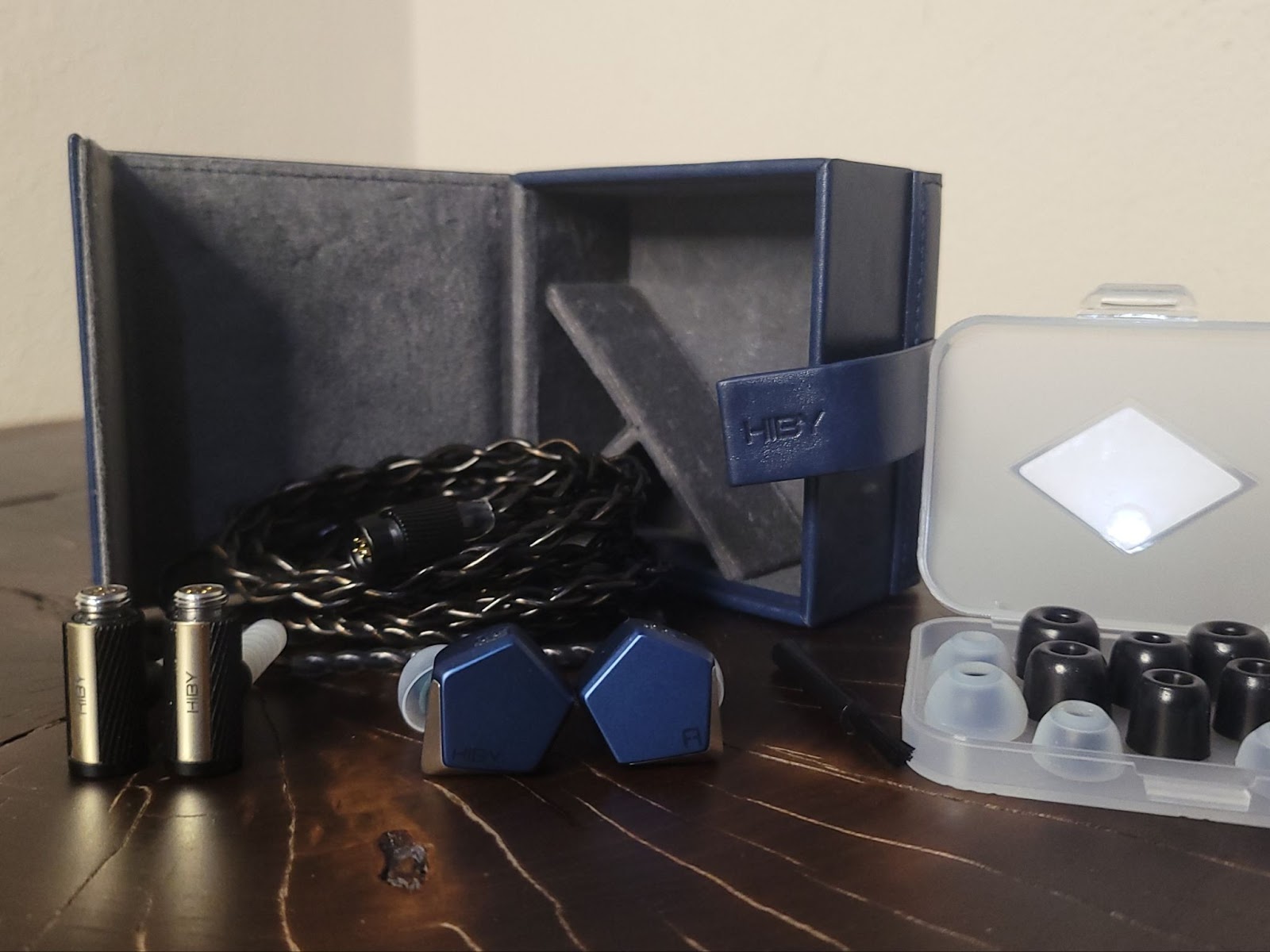
The Project Ace’s treble is mostly controlled and tame without sounding too blunted, except for one area: lower treble or presence. The peak around 5 kHz-6 kHz you see on the graphs is real. It’s a very narrow peak and must be intentional. It adds a unique pop and snap to your music overall. Even drum hits are snappier than usual. But it also makes the Ace sibilant. If you can tolerate it, the Project Ace is just a slightly quirky but exciting pair of IEMs.
The Project Ace is decently detailed and moderately resolving. There is minimal masking, so you don’t miss small nuances. Timbre is very good. But the most impressive attribute of the Ace is its staging capability. It has an expansive stage in all three dimensions. Actually it kind of reminded me of Sony IER-Z1R with staging, in terms of fit too. However, the imaging is a little fuzzy and blurry. Layering and separation are OK. As always, comparisons should give more context.
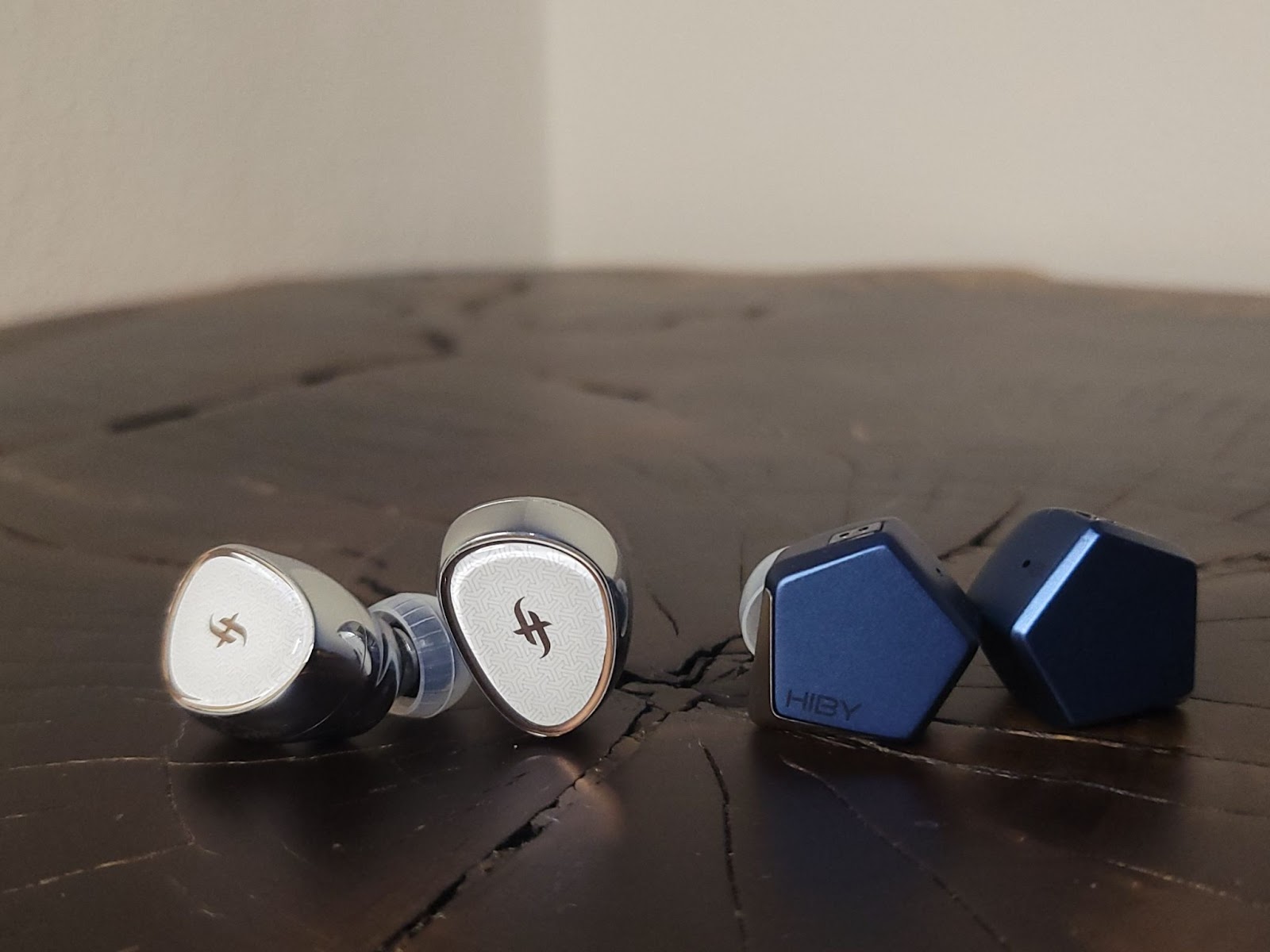
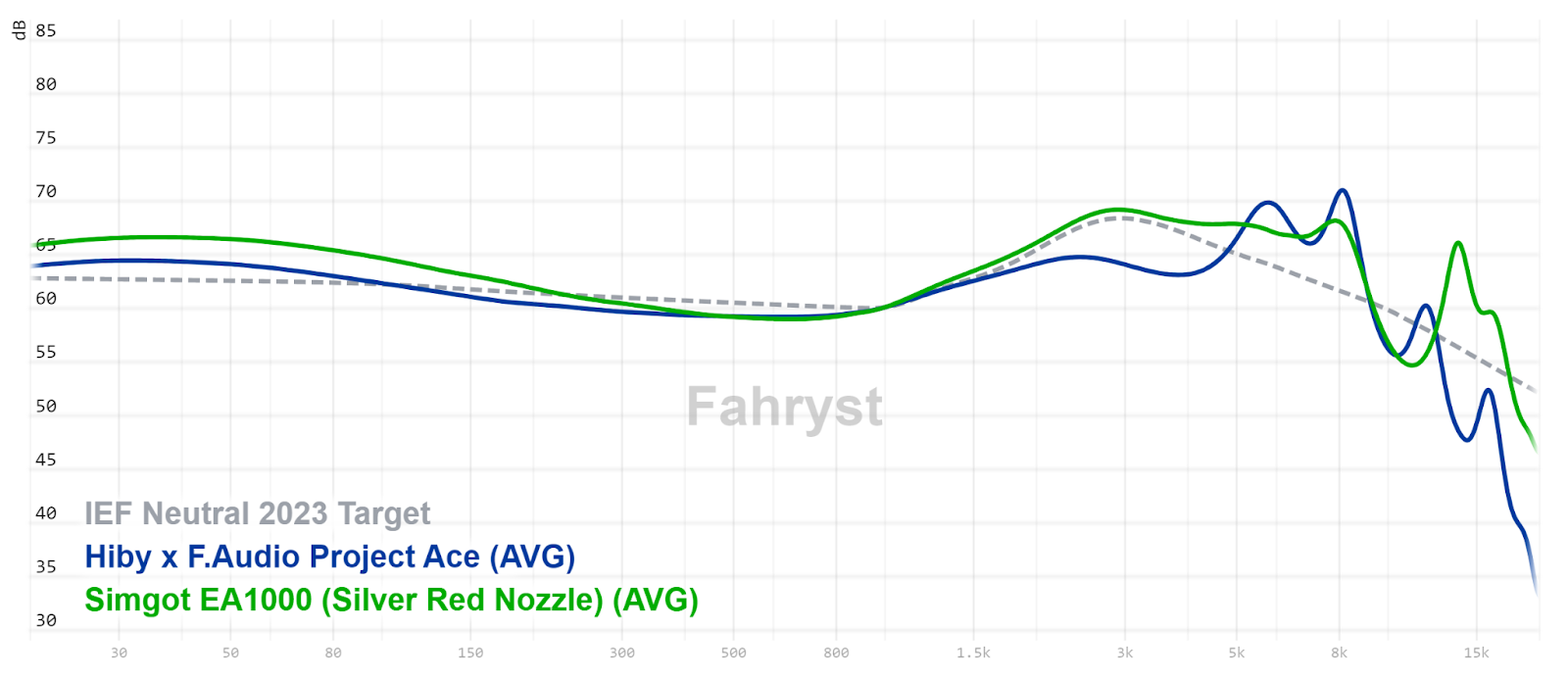
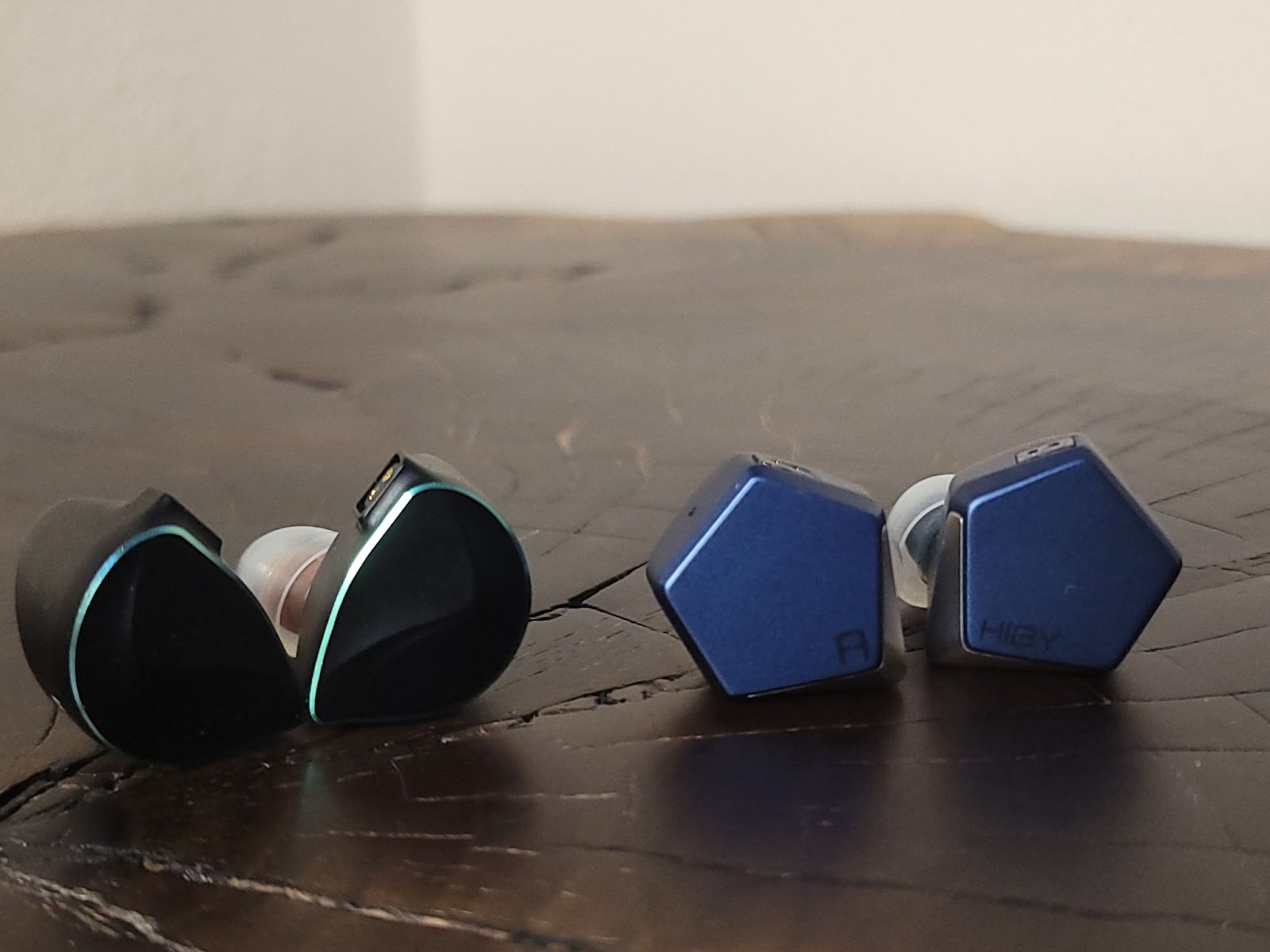
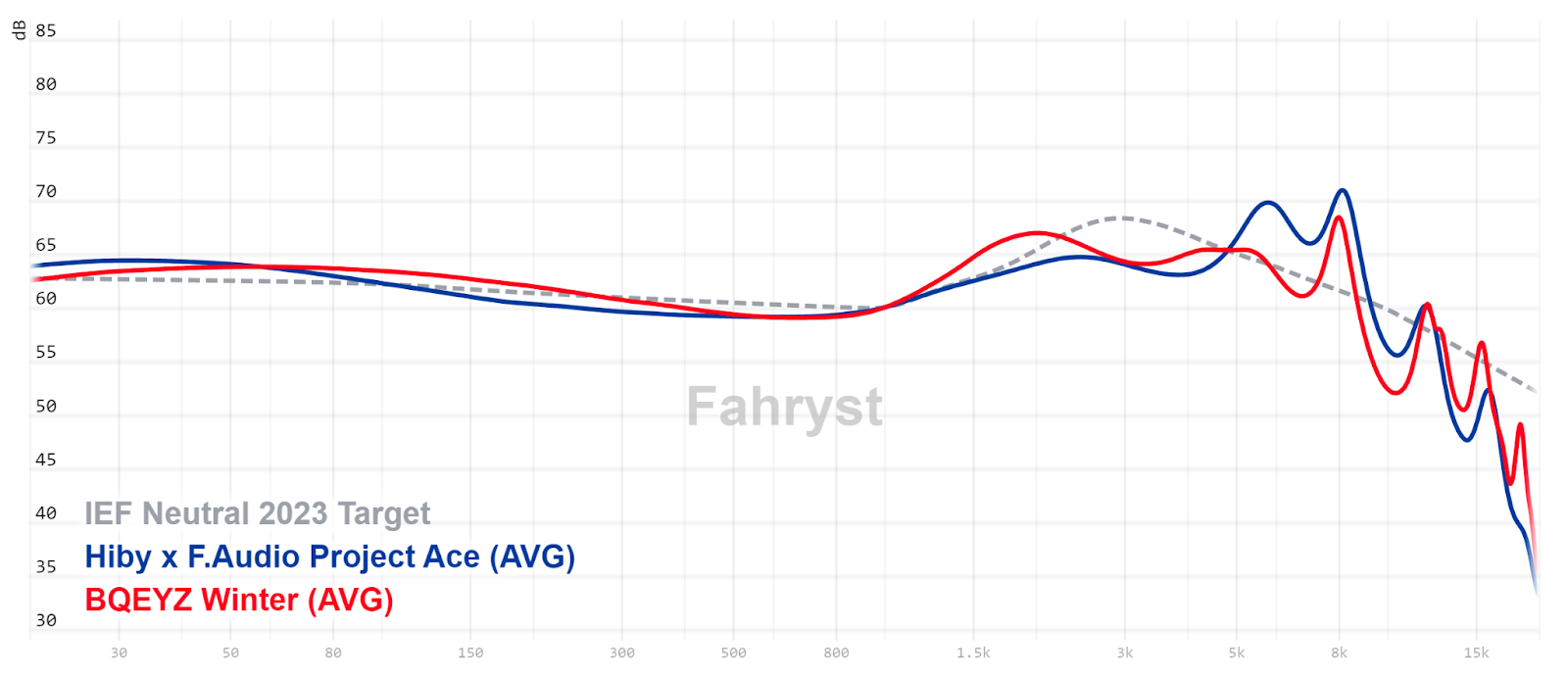
We live in a time where people write off some headphones and IEMs just by looking at their FR graphs, and it makes me sad. I have a feeling that Project Ace will not get the attention it deserves. As I tried to convey, Project Ace is a great-sounding pair of IEMs that just has a quirk, which is not an oversight but probably intentional. If you use an equalizer, you can always reduce this area a little with one filter. I’m not usually impressed by staging in IEMs, but the Project Ace has great staging capability and timbre. The tuning also feels like a fresh breath of air among all those Harman variant IEMs. Hiby and F.Audio made a bold statement here, so if you can, I highly suggest you give Project Ace a listen.
Disclaimers
Hiby x F.Audio Project Ace, along with Hiby’s R4, was sent to me by Hiby as part of the Turkey Tour of the Audio Geek Review Group. I don’t get to keep these tour units, even at the end of the tour. As I always say, everyone is biased one way or another, so take everything you read with a grain of salt. Also, I will try to be more concise and to the point in my reviews from now on without worrying about the word count. If you have any questions, please ask me in the comments, and I will try to answer them to the best of my abilities.
Build and Accessories of F.Audio Project Ace
The Project Ace is a well-built and uniquely designed pair of IEMs. The shells are fully made out of metal carved with CNC. The hexagonal shape doesn’t exactly make them ergonomic, but they certainly look striking.
Each side has one 12 mm lithium-magnesium alloy dome and beryllium-coated driver. The cable that comes with the Project Ace is also very well made. It’s on the thicker side with 8 cores and a little stiff but still manageable. The product page states it consists of both silver and silver-plated copper strands. The cable utilizes a proprietary interchangeable locking termination mechanism and comes with 3.5 mm and 4.4 mm balanced terminations. The Project Ace also comes with 6 pairs of eartips and a cleaning brush. The included tips are 3 pairs of silicone and 3 pairs of foam. Lastly, the case included in the box looks great and reminds me of the case that comes with more expensive FiiO IEMs. It has a separator inside for you to store tips or alternative accessories, which is a nice touch. Overall, the unboxing experience isn’t too extravagant but still feels very premium.
Sound of Hiby x F.Audio Project Ace
Tonality
The Project Ace has a different sound signature than most IEMs released these days. It’s not esoteric but rather a forgotten and missed sound signature.
Ace aims for a mid-centric clean tone. It’s not bassy, bright, or colored. The lower bass level might upset some, but it has a very controlled and tasteful bass thanks to the rather large driver and big acoustic chamber. Subbass extension is decent too, and it backs the bass with a nice punch.
The mids are the highlighted area on the Project Ace. They sound very clean and crisp. Clarity is top-notch among single DDs on the market. Everything sounds very natural, and there is not much else to say really. Here is a little rant: mids are definitely where music lives and what makes or breaks sound reproduction gear. But there is not much to describe if the mids are good. The best praise you can give is that it sounds natural.
The Project Ace’s treble is mostly controlled and tame without sounding too blunted, except for one area: lower treble or presence. The peak around 5 kHz-6 kHz you see on the graphs is real. It’s a very narrow peak and must be intentional. It adds a unique pop and snap to your music overall. Even drum hits are snappier than usual. But it also makes the Ace sibilant. If you can tolerate it, the Project Ace is just a slightly quirky but exciting pair of IEMs.
Technicalities
The Project Ace is decently detailed and moderately resolving. There is minimal masking, so you don’t miss small nuances. Timbre is very good. But the most impressive attribute of the Ace is its staging capability. It has an expansive stage in all three dimensions. Actually it kind of reminded me of Sony IER-Z1R with staging, in terms of fit too. However, the imaging is a little fuzzy and blurry. Layering and separation are OK. As always, comparisons should give more context.
Comparisons
Hiby x F.Audio Project Ace vs. Simgot EA1000
- EA1000 definitely has more bass and tone weight. It also extends deeper into the subbass. But Ace has a certain snap that even comes through in drum hits, which is unique. EA1000 has a more nuanced and detailed bass.
- Project Ace sounds cleaner and crisper in the mids. EA1000 has more body and is shoutier. Ace, on the other hand, gets sibilant easier.
- EA1000 is overall brighter. Project Ace is closer to neutral in the treble region but has an emphasis in the presence area. It adds a certain snap, especially apparent in drum hits. But it also makes it sibilant. EA1000 is airier and possibly can get fatiguing easier.
- They trade blows in terms of staging. While EA1000 feels somewhat more spacious thanks to lots of air, Project Ace’s stage expands wider and deeper, probably due to its bigger drivers and shell design. Imaging is sharper and more precise on EA1000.
- EA1000 is more detailed thanks to the brighter tuning, but Project Ace is as resolving as EA1000, if not more. Ace is incisive and keeps its composure even in the busiest passages. EA1000, on the other hand, can get splashy occasionally. Overall timbre is better on Project Ace.
Hiby x F.Audio Project Ace vs BQEYZ Winter
- Winter is warmer and slightly bassier. Project Ace’s subbass extension is better. In terms of quality, Ace’s bass is more defined but bass guitars on Winter are more satisfying.
- Vocals are more forward on Winter but not shouty at all. Project Ace, like before, sounds cleaner and crisper. Again, Ace easily gets sibilant. Winter has occasional sibilance too but not at Ace’s level.
- Winter’s treble is slightly better. Project Ace’s treble is pretty much on point, but that excess presence emphasis and the last bit of bite that Winter has makes Ace lose out.
- To my ears, Winter is ever so slightly more detailed. Project Ace’s timbre is mostly more natural but again, emphasis around 5k sometimes breaks the spell.
- Headstage on Project Ace is bigger in all dimensions but the imaging is fuzzier. Winter’s imaging is more precise.
Conclusion
We live in a time where people write off some headphones and IEMs just by looking at their FR graphs, and it makes me sad. I have a feeling that Project Ace will not get the attention it deserves. As I tried to convey, Project Ace is a great-sounding pair of IEMs that just has a quirk, which is not an oversight but probably intentional. If you use an equalizer, you can always reduce this area a little with one filter. I’m not usually impressed by staging in IEMs, but the Project Ace has great staging capability and timbre. The tuning also feels like a fresh breath of air among all those Harman variant IEMs. Hiby and F.Audio made a bold statement here, so if you can, I highly suggest you give Project Ace a listen.
Jarlaxle
100+ Head-Fier
Pros: Price
Design and color choices (Reminds me of Evangelion Mechas)
Lively and colorful sound
Class A amplification
Sound customization and enhancement options
Design and color choices (Reminds me of Evangelion Mechas)
Lively and colorful sound
Class A amplification
Sound customization and enhancement options
Cons: Runs warm
Remember when Hiby released the M300 under a new brand, Hiby Digital? That one was in the same vein as later Sony A Series Walkmans and became quite popular. But that’s old news now. The new rage is the R4. Has Hiby finally lost it, releasing such a feature-packed product for only $249?
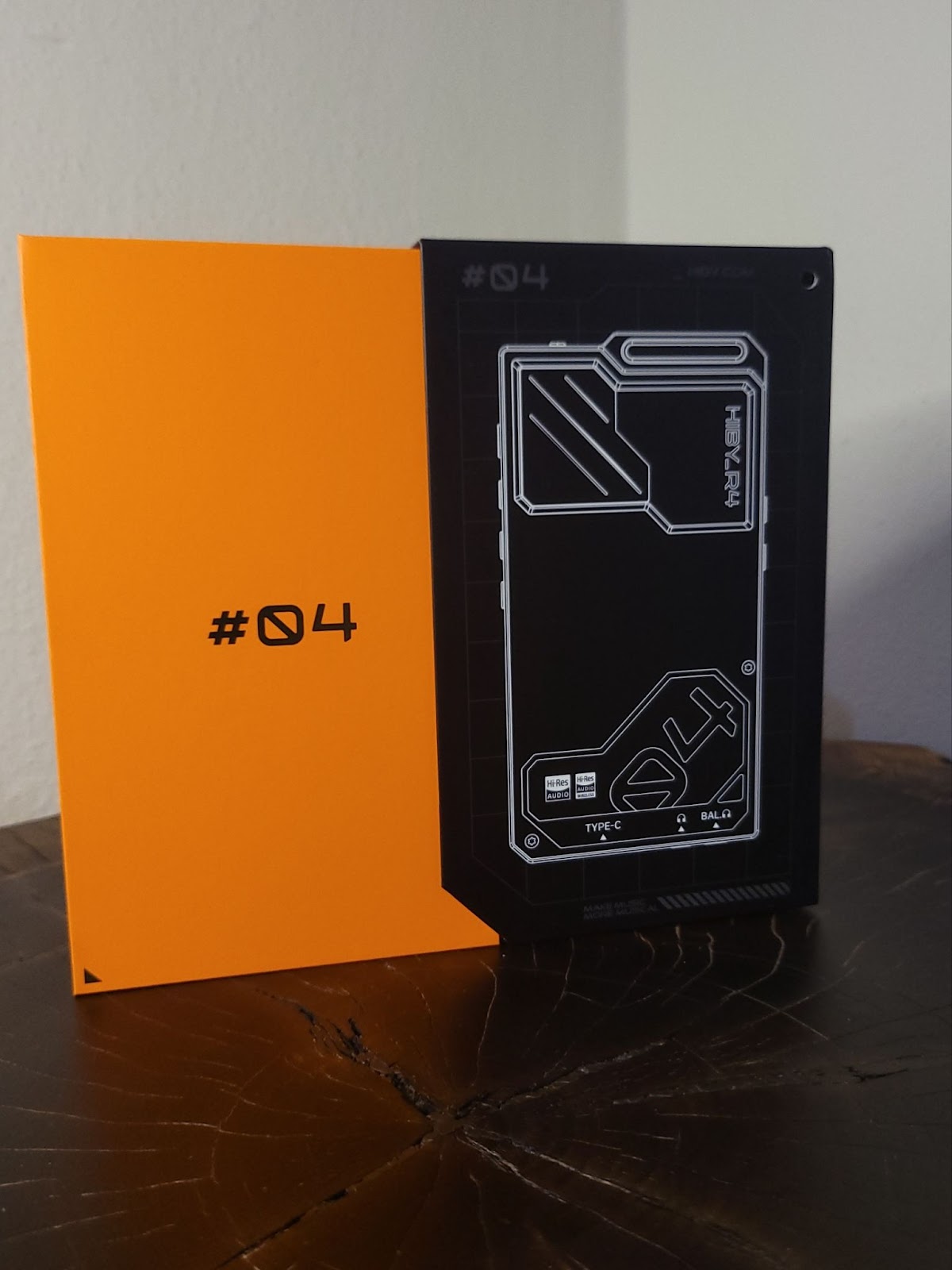
The Hiby R4 comes in a simple but stylish package. Inside, you are welcomed with the DAP, and at the back, you get a TPU case, a USB-C to USB-C cable, and spare screen protectors. Although it sounds modest, I don’t really need anything else. Higher-end DAPs come with more cables and stuff, but I rarely use them anyway.
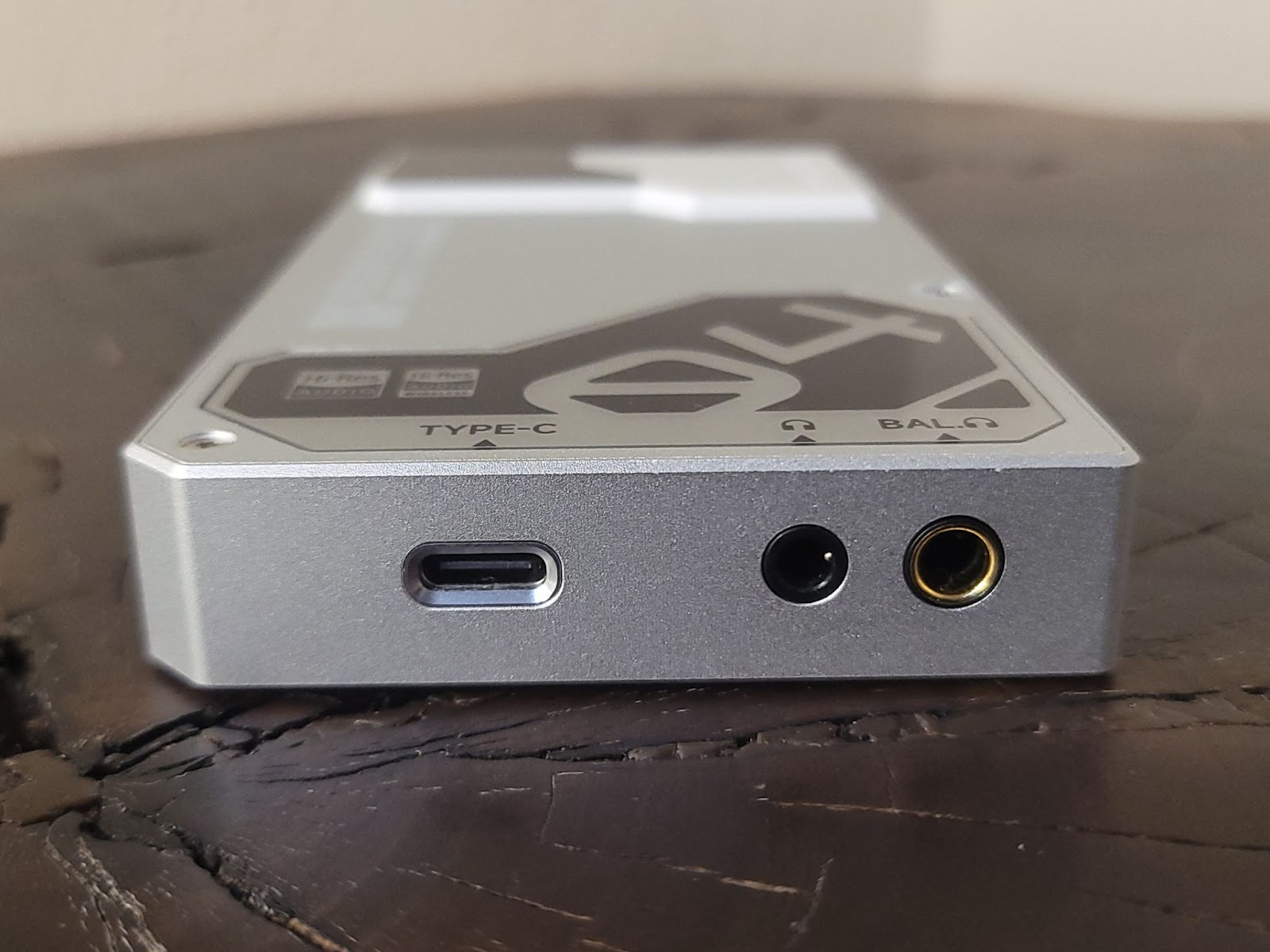
Being a budget-oriented device, the Hiby R4 offers 3 GB of RAM memory and 32 GB of internal storage, but as usual, you can store up to 2 TB of music or data with an SD Card.
The 4.7” IPS 720p screen on the R4 isn’t exactly flagship-level, but it's more than enough for regular operation of a DAP.
The R4 supports the usual wireless and wired connectivity options, namely WiFi, Bluetooth 5.0, USB, and Coaxial through USB-C output. Analog outputs include 3.5 mm single-ended and 4.4 mm balanced. There are no separate line outputs. The device also supports DLNA, Airplay, and their own Hiby Link protocols, as well as Hiby Cast remote control. It can render X16 MQA too, if that’s important to you. I’m pretty sure there are others I forgot to mention.
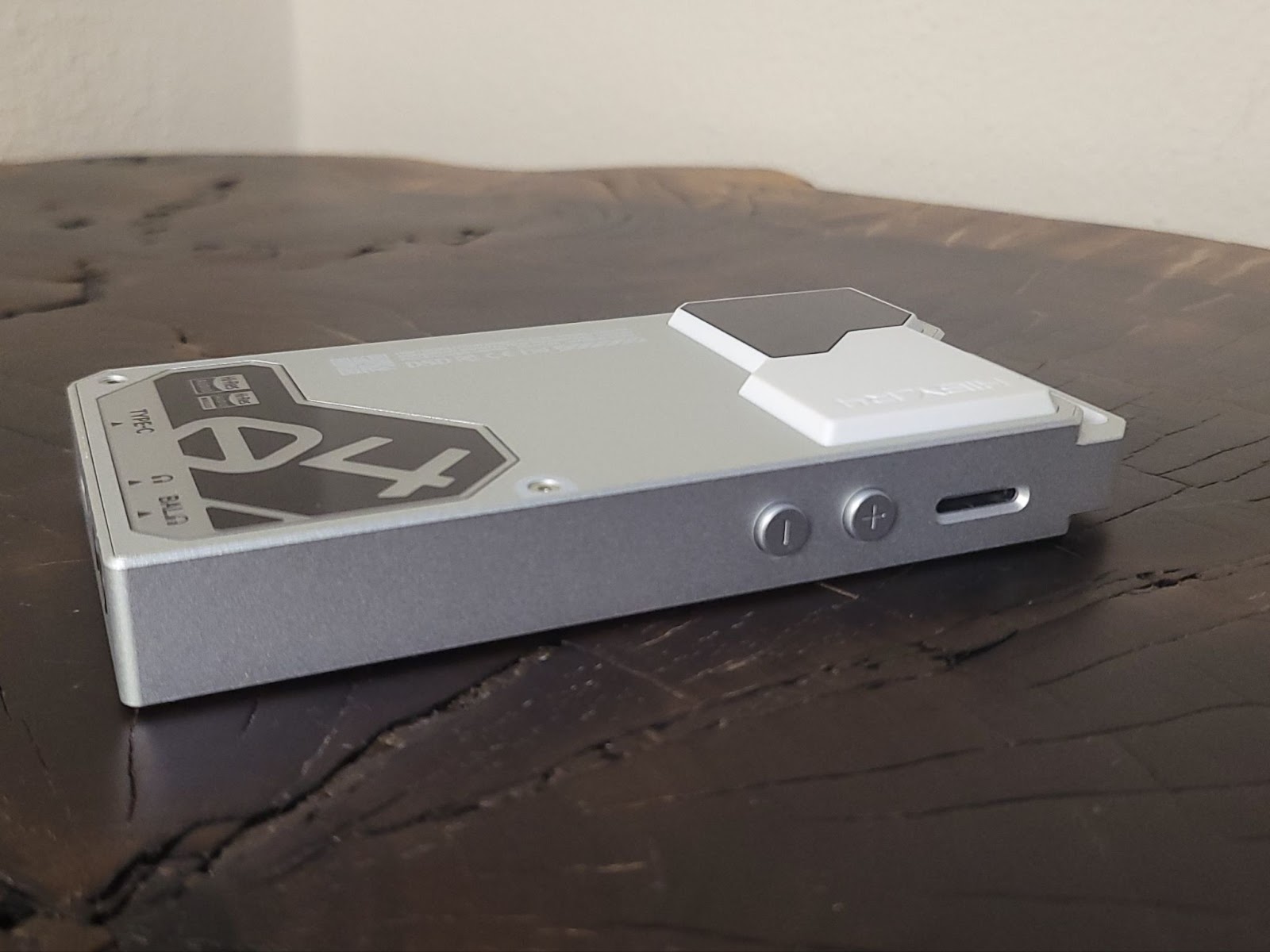
So all of these yield virtually no distortion and noise. I didn’t really test the battery life, but Hiby promises 11 hours of runtime with 3.5 mm single-ended output. All I can say is that the battery has a longer life than my R6 Pro II, so through balanced, I can say 9-10 hours of playback is what you can expect.
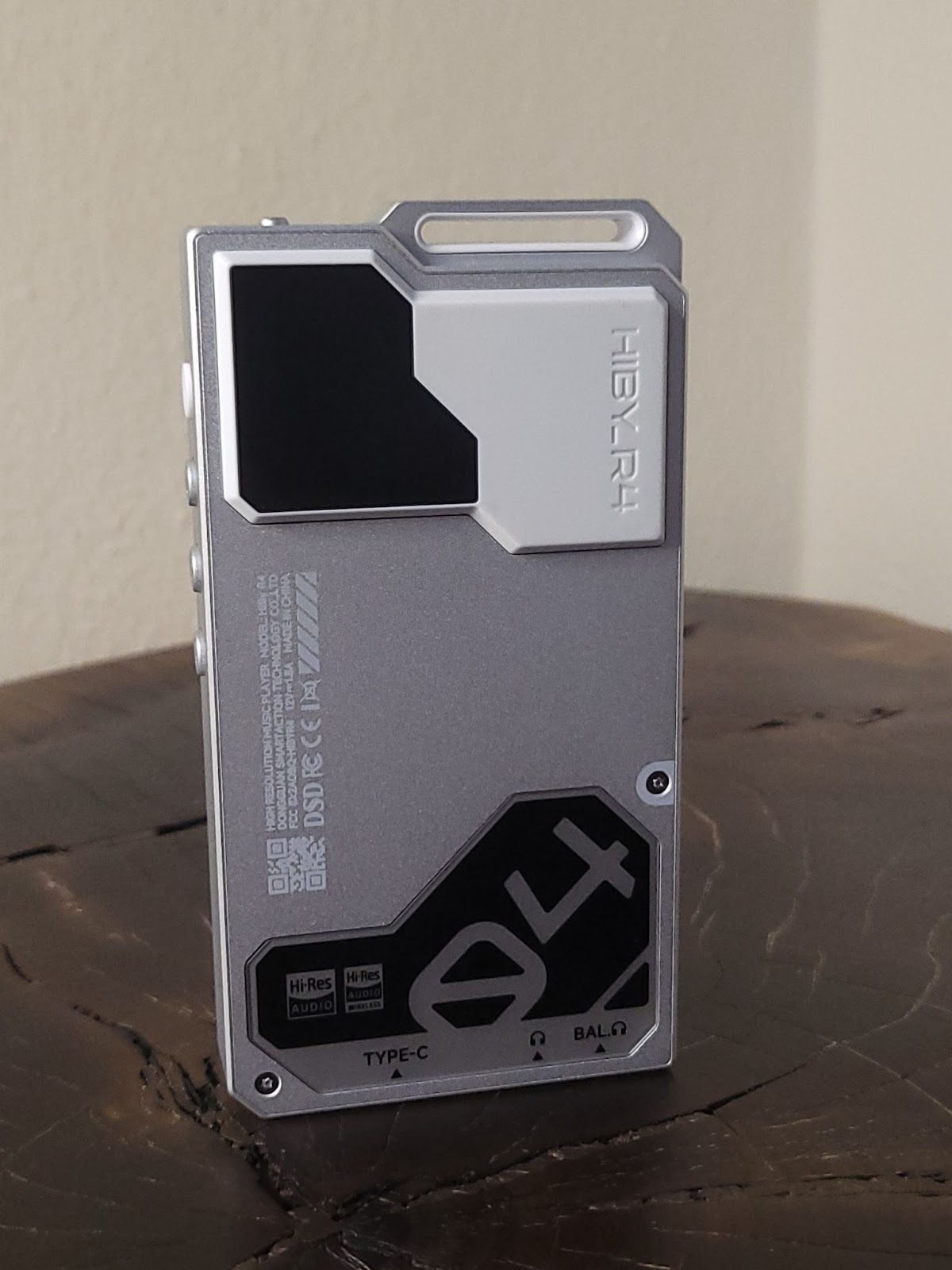
The UI is customized by Hiby for the intended use case. It is not too different from the usual Android experience, but changing audio controls like adjusting gain and amplification type is especially very easy. Hiby also offers four different themes for you to choose from. All of them looked great in their own way, so I had a hard time choosing one. The UI is pretty fast. I only saw it stuttering when loading album art, that’s all.
Hiby’s own MSEB (Mage Sound 8-ball Tuning) is an EQ-based easy sound adjustment mechanism. If using EQ is intimidating for you, playing with MSEB can ease you into it. I think it’s a great feature. Here is the list that shows how each choice affects the sound:
1 -- Overall Temperature: a tilt of the whole line towards treble (cool) or bass (warm)
2 -- Bass extension 70Hz and below
3 -- Bass texture 100Hz (medium)
4 -- Note thickness 200Hz (wide)
5 -- Vocals 650Hz (very wide)
6 -- Female overtones 3kHz (tight)
7 -- Sibilance LF 5.8kHz (medium)
8 -- Sibilance HF 9.2kHz (medium)
9 -- Impulse response 7.5kHz (very wide)
10 - Air 10kHz sloped all the way to 20kHz
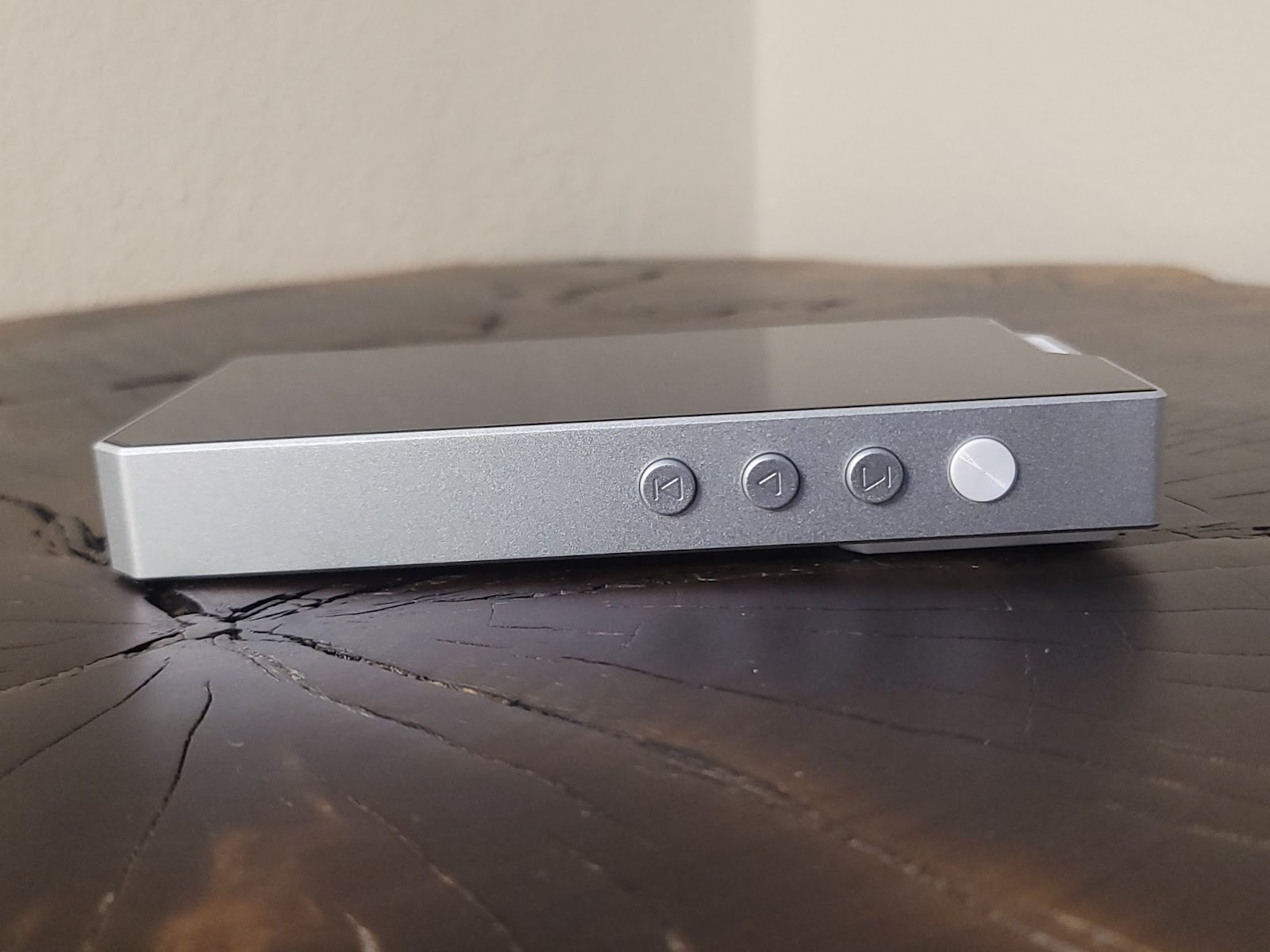
Like other Hiby DAPs of late, R4 also has Parametric Equalizer. There are also plugins you can play with. Hiby sent me some samples to try, like soundstage enhancement and crossfeed. I know some of you like unaltered sound, but when it comes to software, you have got to respect Hiby.
The Hiby R4 has a colorful and lively sound. You can say it’s slightly V-shaped. Bass is definitely emphasized, and by a big margin. Other than that, it doesn’t sound particularly harsh or glaring. Details and spaciousness aren’t top-notch, but more than enough unless you aren’t analyzing your music. Let’s move on to comparison for more context.
I know it’s not exactly fair, but the only comparable DAP I had in my hand at the time of the review was my R6 Pro II. Still, the R4 held its ground pretty well.
I assume a lot of people will be looking to buy R4 as their first DAP, so coming from a decent dongle, they might be wondering what they will gain, so I compared R4 to my FiiO KA5.
Disclaimers
Hiby R4, along with their Project Ace, was sent to me by Hiby as part of the Turkey Tour of the Audio Geek Review Group. I don’t get to keep these tour units, even at the end of the tour. As I always say, everyone is biased one way or another, so take everything you read with a grain of salt. Also, I will try to be more concise and to the point in my reviews from now on without worrying about the word count, etc. If you have any questions, please ask me in the comments, and I will try to answer them to the best of my abilities. Additionally, I will be copying some parts from my earlier Hiby R6 Pro II review, as they are pretty much valid for this review as well.About Hiby
Hiby was founded in 2011, according to their website, and apparently, has even more experience in the audio field. They are mostly known for their Digital Audio Players, but they also make DAC/Amps and earphones. However, what sets Hiby apart from other manufacturers is their expertise in software. Their UIs, apps, and connection protocol, Hiby Link, are used even by other brands.Design and Packaging of Hiby R4
With a cyberpunk theme, Hiby hits several birds with one stone. First, they made their target audience obvious, in this case, younger audiophiles. They also lowered the cost with relatively cheap construction and could get away with it. The device has sharp corners, and rubber is used here and there. The 04 number is apparent on the packaging and the device. There are four color choices: Orange, Silver, Green, and Black. The color I got is the most boring one, Silver. Honestly, this Evangelion vibe is what attracted me to the R4.The Hiby R4 comes in a simple but stylish package. Inside, you are welcomed with the DAP, and at the back, you get a TPU case, a USB-C to USB-C cable, and spare screen protectors. Although it sounds modest, I don’t really need anything else. Higher-end DAPs come with more cables and stuff, but I rarely use them anyway.
Hardware of Hiby R4
So most people choose their DAPs and DACs based on the DAC chips inside. In the case of the R4, 4 ES9018C2M chips are used for digital-to-analog conversion. The amplification circuit consists of 4 OP1652 and 2 OP1612 operational amplifiers. The R4 only works in Class A amplification by default, which can be a downside if you don’t like your electronics running warm or want more battery life. The maximum power output of the device is 165 mW from single-ended and 525 mW from balanced.Being a budget-oriented device, the Hiby R4 offers 3 GB of RAM memory and 32 GB of internal storage, but as usual, you can store up to 2 TB of music or data with an SD Card.
The 4.7” IPS 720p screen on the R4 isn’t exactly flagship-level, but it's more than enough for regular operation of a DAP.
The R4 supports the usual wireless and wired connectivity options, namely WiFi, Bluetooth 5.0, USB, and Coaxial through USB-C output. Analog outputs include 3.5 mm single-ended and 4.4 mm balanced. There are no separate line outputs. The device also supports DLNA, Airplay, and their own Hiby Link protocols, as well as Hiby Cast remote control. It can render X16 MQA too, if that’s important to you. I’m pretty sure there are others I forgot to mention.
So all of these yield virtually no distortion and noise. I didn’t really test the battery life, but Hiby promises 11 hours of runtime with 3.5 mm single-ended output. All I can say is that the battery has a longer life than my R6 Pro II, so through balanced, I can say 9-10 hours of playback is what you can expect.
Software and UI
The Hiby R4 uses an open Android 12.0, which means you can download any 3rd party apps you want, and it should receive app updates for quite a while. Hiby Music comes pre-installed as the default music player, and I didn’t need to use any other music app since I mostly stream my music.The UI is customized by Hiby for the intended use case. It is not too different from the usual Android experience, but changing audio controls like adjusting gain and amplification type is especially very easy. Hiby also offers four different themes for you to choose from. All of them looked great in their own way, so I had a hard time choosing one. The UI is pretty fast. I only saw it stuttering when loading album art, that’s all.
Hiby’s own MSEB (Mage Sound 8-ball Tuning) is an EQ-based easy sound adjustment mechanism. If using EQ is intimidating for you, playing with MSEB can ease you into it. I think it’s a great feature. Here is the list that shows how each choice affects the sound:
1 -- Overall Temperature: a tilt of the whole line towards treble (cool) or bass (warm)
2 -- Bass extension 70Hz and below
3 -- Bass texture 100Hz (medium)
4 -- Note thickness 200Hz (wide)
5 -- Vocals 650Hz (very wide)
6 -- Female overtones 3kHz (tight)
7 -- Sibilance LF 5.8kHz (medium)
8 -- Sibilance HF 9.2kHz (medium)
9 -- Impulse response 7.5kHz (very wide)
10 - Air 10kHz sloped all the way to 20kHz
Like other Hiby DAPs of late, R4 also has Parametric Equalizer. There are also plugins you can play with. Hiby sent me some samples to try, like soundstage enhancement and crossfeed. I know some of you like unaltered sound, but when it comes to software, you have got to respect Hiby.
Sound of Hiby R4
I have to be honest; for digital audio players, I value functionality more than sound, unless the device sounds straight up bad, and I’m happy to announce R4 doesn’t sound bad at all. It doesn’t have the sound of a flagship, of course, it doesn’t. But during my time testing it, I never felt like I’m missing something.The Hiby R4 has a colorful and lively sound. You can say it’s slightly V-shaped. Bass is definitely emphasized, and by a big margin. Other than that, it doesn’t sound particularly harsh or glaring. Details and spaciousness aren’t top-notch, but more than enough unless you aren’t analyzing your music. Let’s move on to comparison for more context.
Comparisons
Hiby R4 vs. Hiby R6 Pro II
- Bass is more impactful on R4.
- R6 Pro II is more controlled and well-defined.
- R4 is more colorful and vivid, just like a contrast-maxed TV. R6 Pro II’s rendition is more natural and effortless. Timbre is also better on R6 Pro II.
- R6 Pro II has more air, feels more spacious, and separates better. R4 sounds a little blunted compared to that.
- R6 Pro II is more detailed, which is no surprise. It keeps its composure during complex passages while R4 tumbles a little.
Hiby R4 vs. Fiio KA5
- R4 has more body and note weight. KA5 sounds cleaner and has slightly better timbre.
- KA5 has more sub-bass extension.
- R4 has more energy and bite.
- KA5 is slightly more airy. Details and spaciousness also feel slightly better on KA5.
Conclusion
The Hiby R4 gets my first full 5 stars. Not because it sounds much better than anything else, but because it does everything I care for right. It has a lively sound that you will enjoy when you are out and about. It has a cool design (Yes, EVA bias). It has great power and amplification. It uses a good processing chip and has a fast UI. It has sound customization and enhancement options like PEQ, MSEB, and plug-ins. And most importantly, it does all of this for only $249. So the verdict? I’m planning to buy a unit for myself later!Jarlaxle
100+ Head-Fier
Pros: Beautiful shells
Premium packaging and accessories
High quality parts
Premium packaging and accessories
High quality parts
Cons: Lean sound (at moderate listening levels)
Sibilant and piercing (at higher listening levels)
Lack of Air
Technically lackluster
Sibilant and piercing (at higher listening levels)
Lack of Air
Technically lackluster
Kinera is one of the longstanding players in the IEM industry. While I'm familiar with products from Kinera’s sister brands Queen of Audio and Celest, Freya 2.0 marks the first time I've spent an extended period of time with a Kinera IEM. There is a lot to discuss about these $269 IEMs, so let’s dive in.
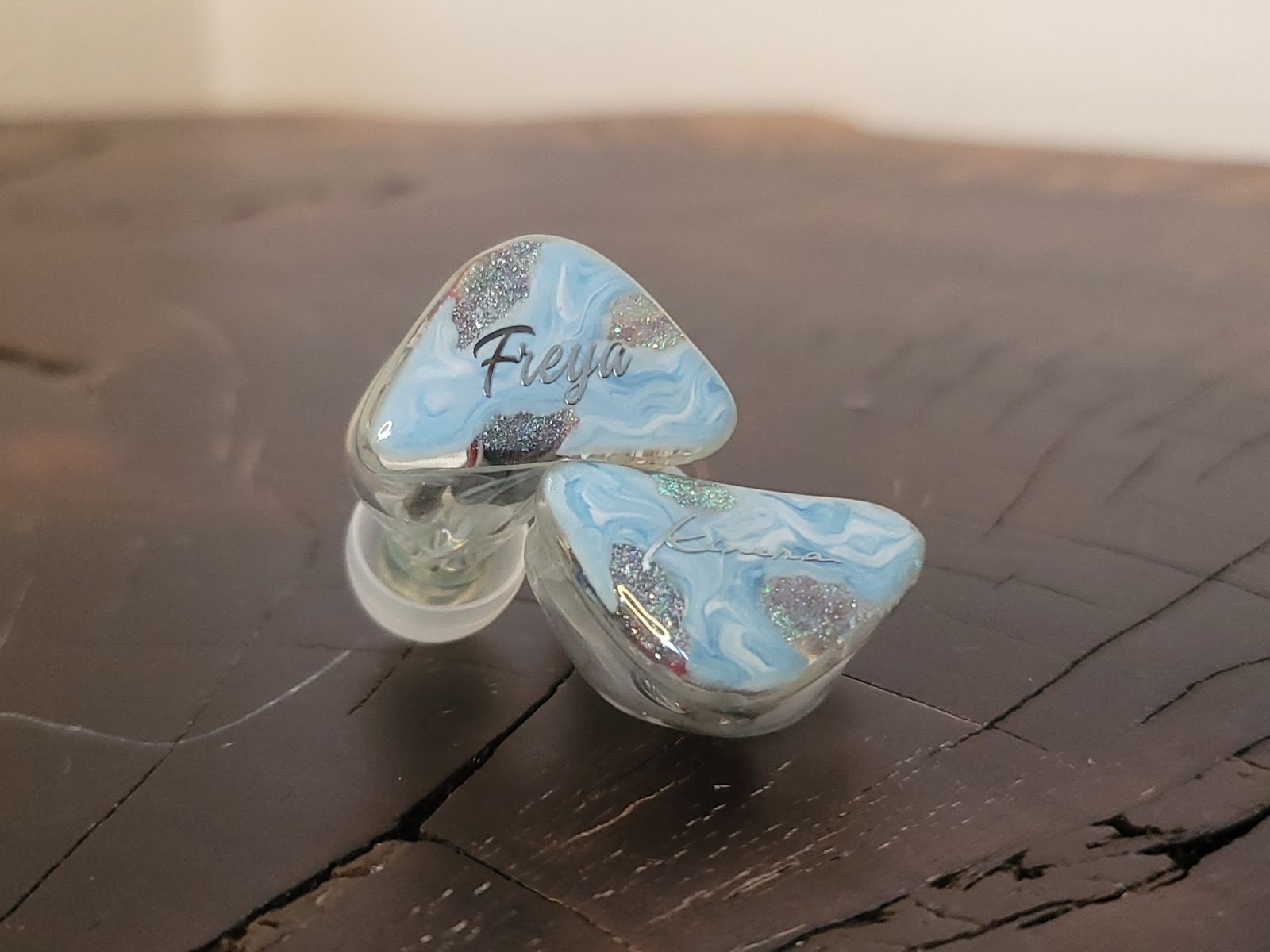
The Kinera Freya 2.0 I demoed was a tour unit sent out by Kinera, and I don’t get to keep it at the end of the tour. As I always say, everyone is biased one way or another, so take everything you read with a grain of salt. Also, I will try to be more concise and to the point in my reviews from now on, without worrying about the word count, etc. If you have any questions, please ask me in the comments, and I will try to answer them to the best of my abilities.

Some of you may already know that all of the faceplates of the IEMs from Kinera are hand-painted, and calling them art would be an understatement. The faceplates of Freya 2.0, along with their own Verdandi, are probably the prettiest faceplates I have ever seen. My photos would never do justice to how they look in person.
The shells are made of resin molded to follow common ear contours. They aren’t very comfortable for my small and irregular ears, but other people have reported that they are one of the most comfortable shells out there. Clear resin lets you see the internals, which is a godsend for curious guys like me.
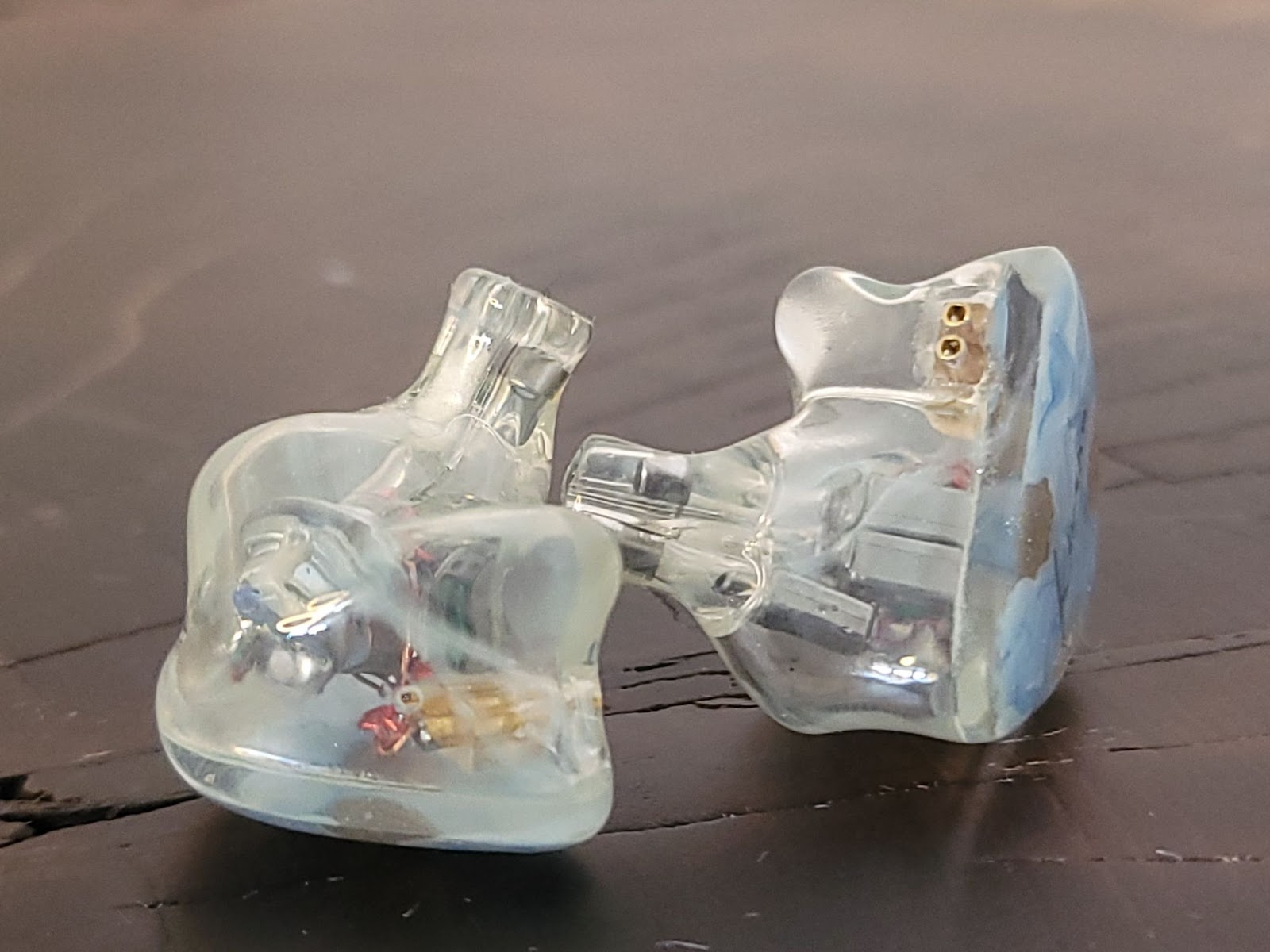
Freya 2.0 comes with a modular cable and 3.5 mm and 4.4 mm terminations. Companies are slowly ditching the 2.5 mm termination, which won’t be missed, I think. Connectors used are 0.78 mm 2-pin. The cable itself is slightly stiff and has some memory, but I didn’t mind it too much.
The box Freya 2.0 comes in has a hexagonal shape in classic Kinera fashion. Apart from the usual information cards, a carrying case, a cleaning brush, and 11 pairs of tips greet you, along with the earpieces, of course. Five of the eartips are highly acclaimed Final Audio Type E ear tips. However, since this was a tour unit, I decided to use my own Spinfit W1 tips.
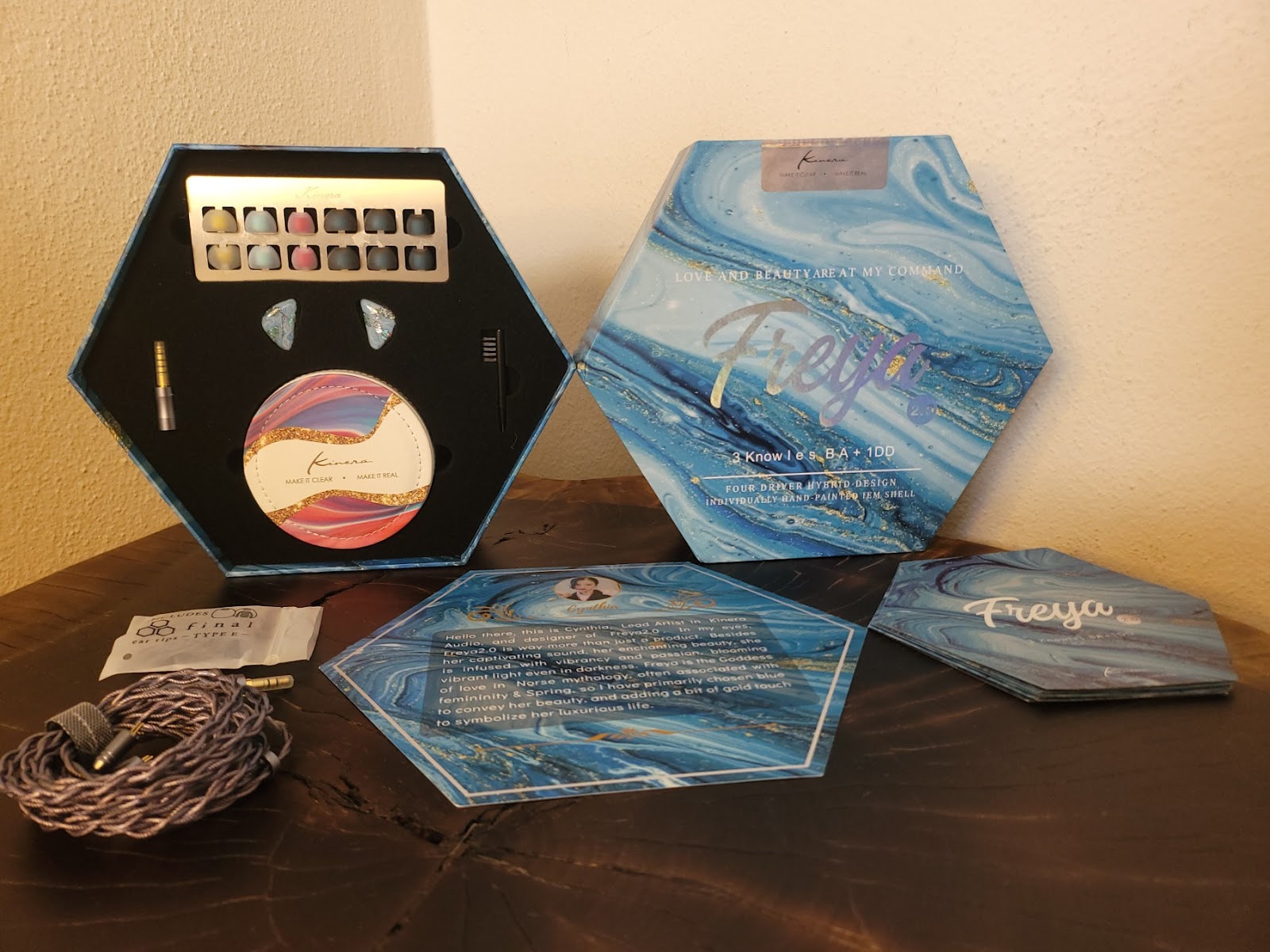
Each part of the frequency spectrum of Freya 2.0 is fine by itself. However, when they come together, there is a lack of coherency and balance. Bass on Freya 2.0 is slightly elevated. It really doesn’t have the impact and definition that some of its competitors have, but most of the time it sounds fine. Subbass doesn’t extend too deep.
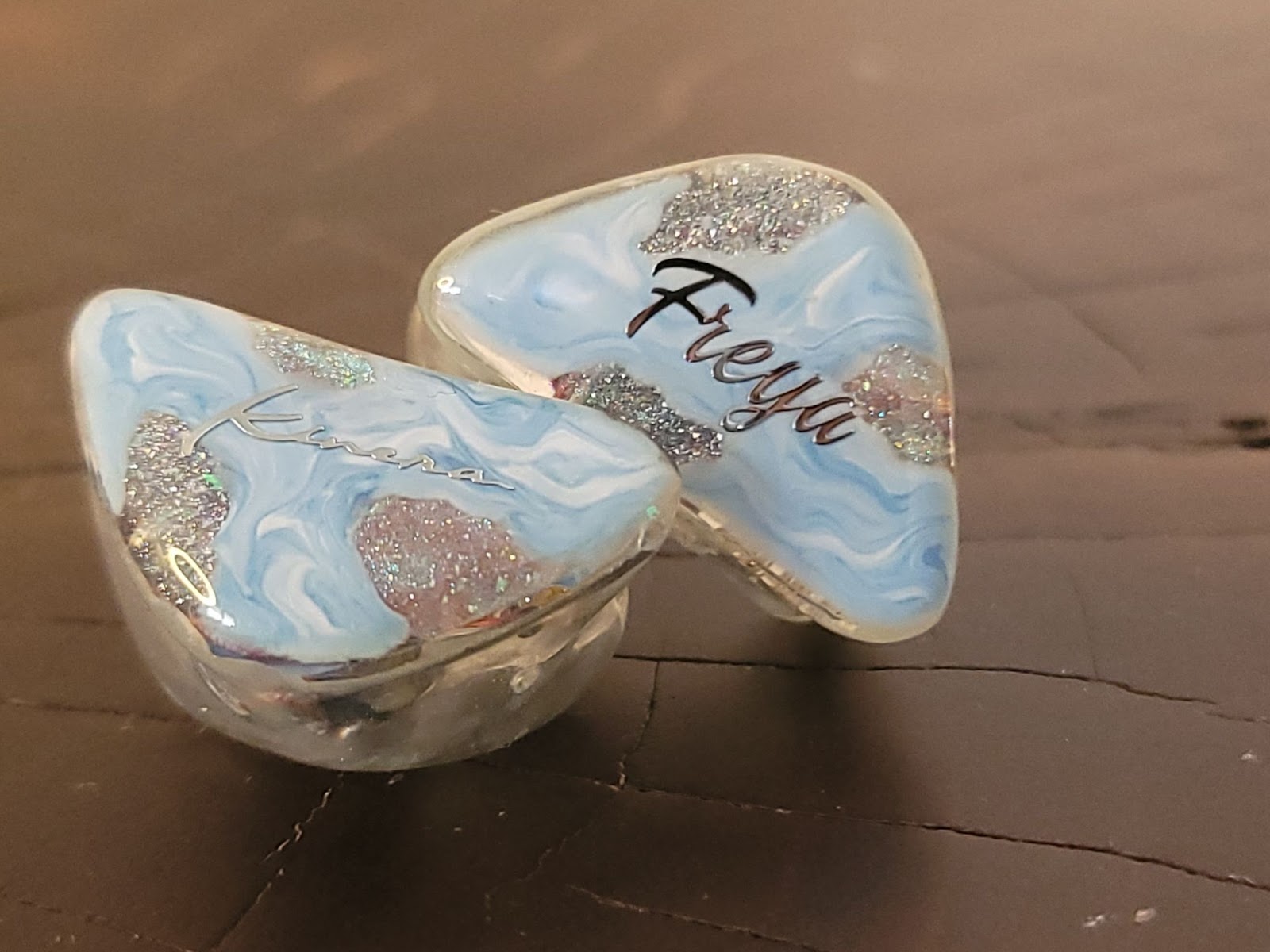
Mids are slightly scooped out and, compared to lower treble, overshadowed. Freya 2.0 doesn’t exactly sound cold, but at moderate listening levels, it sounds lean because of the difference between lower mids and lower treble. Other than that, the sound is very clean and crisp.
As you might have already guessed, one of the main problems that throws off the balance in Freya 2.0 is lower treble. It’s emphasized, and while at moderate level it won’t get piercing, to really get into the mood, IEMs demand you to crank up the volume, and then it gets peaky, especially in the 5kHz region. Freya 2.0 also lacks air, which affects overall technicalities negatively.
Freya 2.0’s technical capability is middling, to say the least, mostly because of its price, but also I know they could have done better with a few adjustments. Lack of air causes the headstage to feel closed in. Imaging is also slightly fuzzy. Timbre is not bad, but there is definitely the unnaturalness that’s attributed to balanced armatures. Details, again, could have been better. The good thing is, Freya 2.0 has improved a lot with equalization, so I can say driver quality is definitely there.
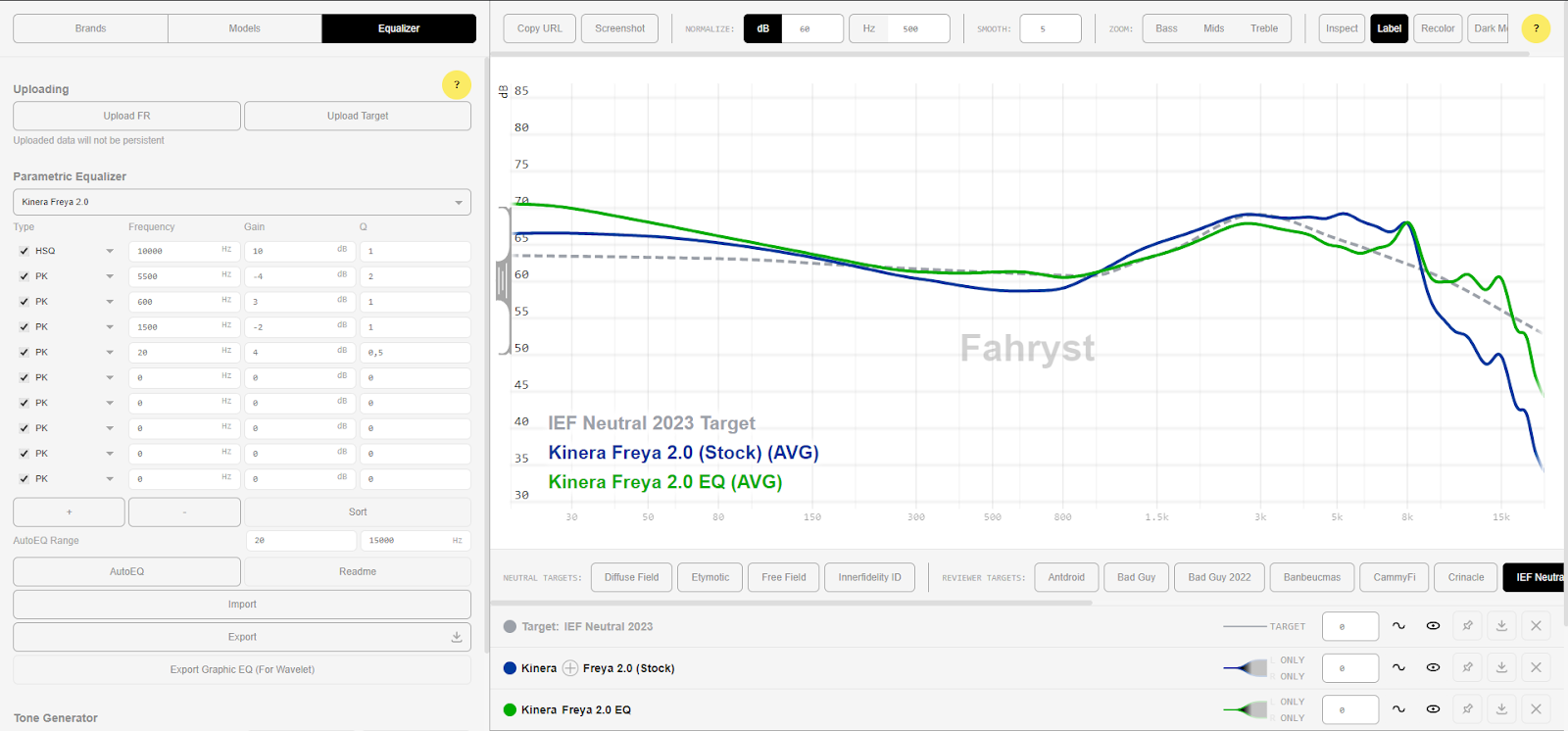
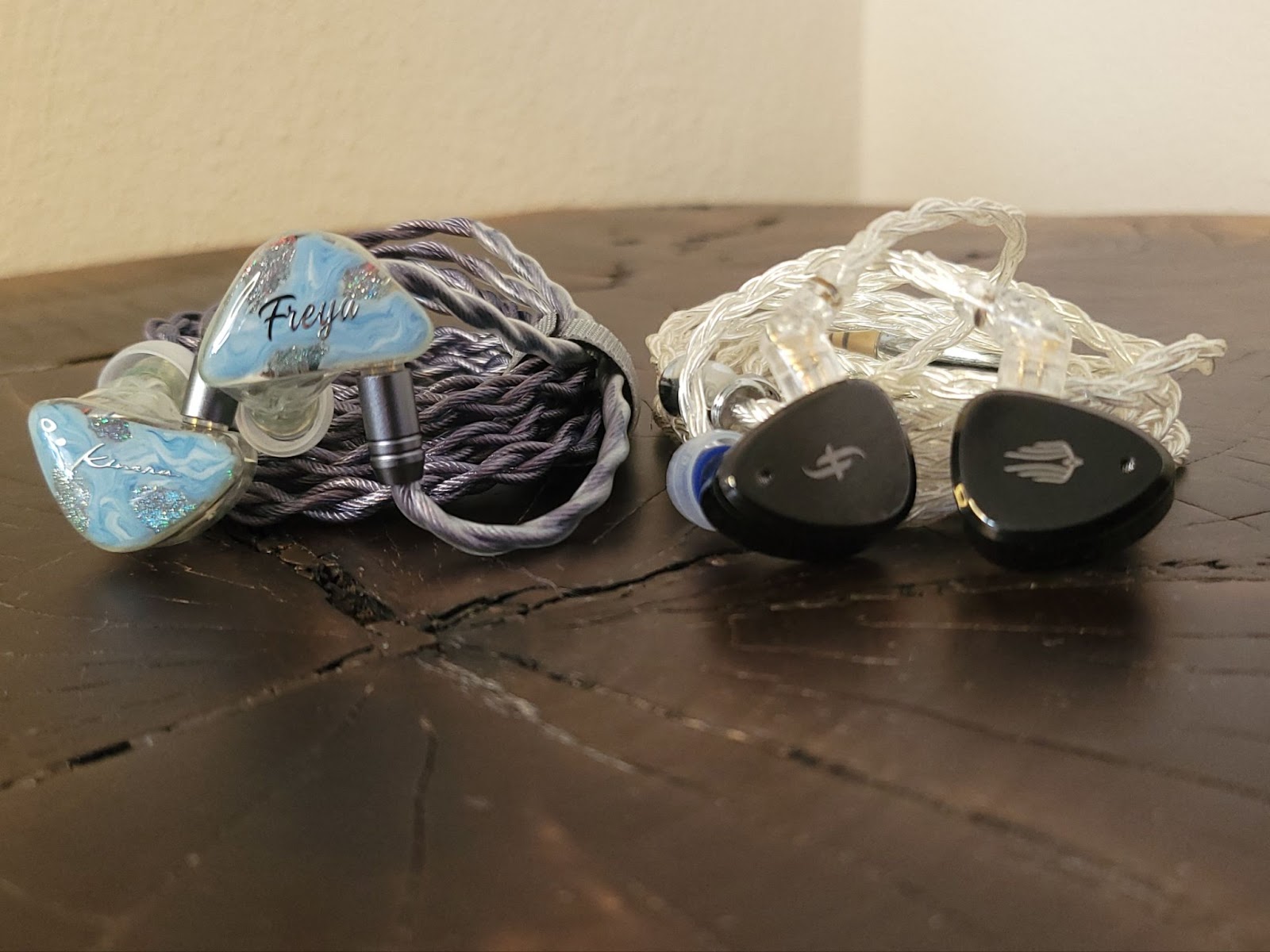
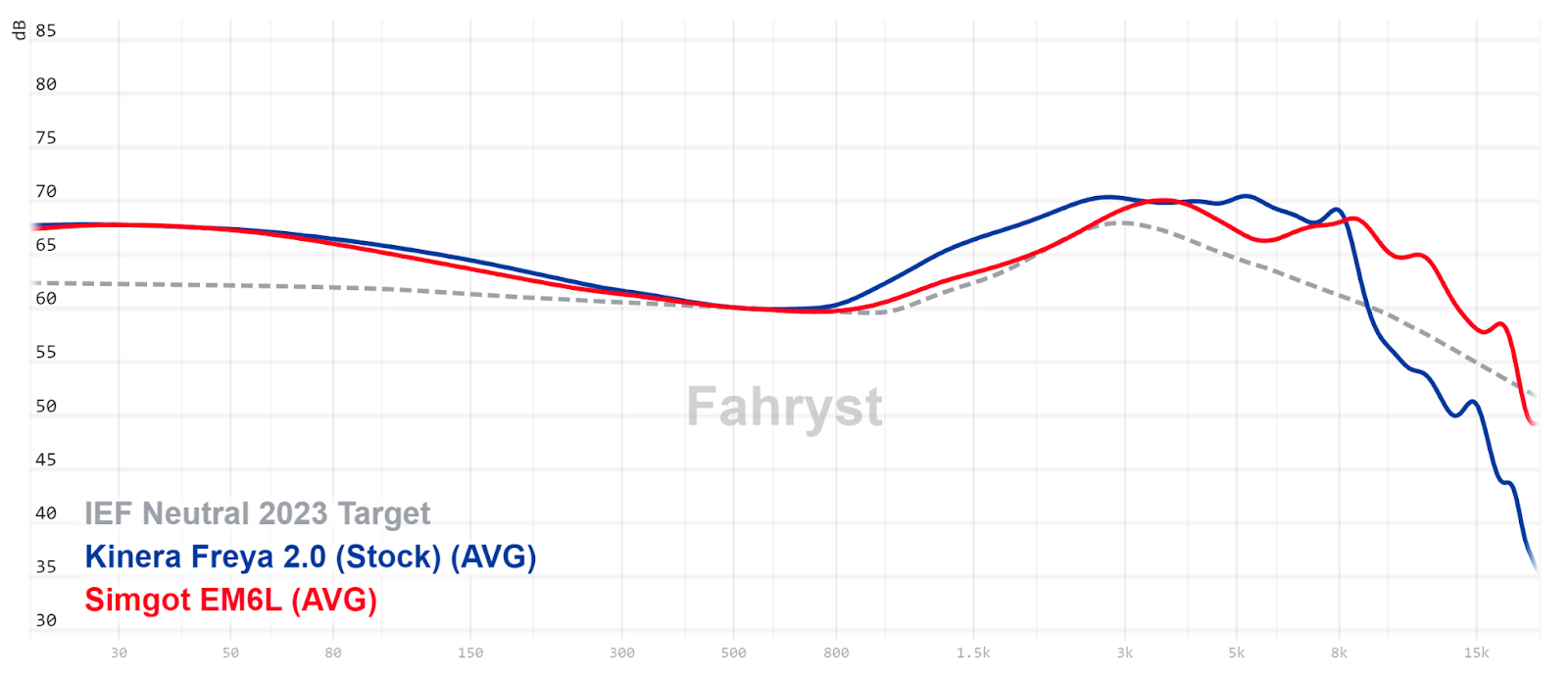
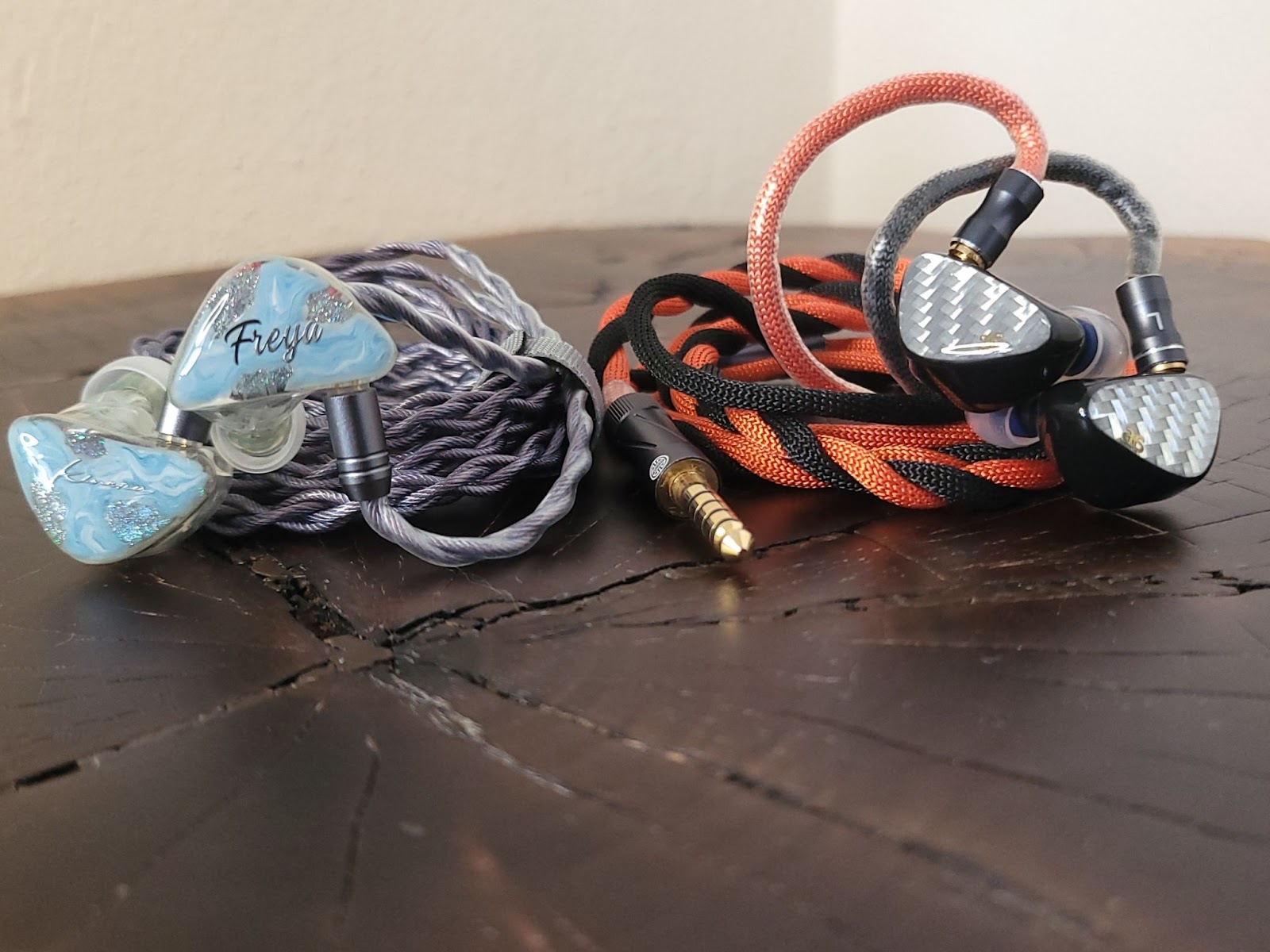
It was a pleasure to gaze upon Freya 2.0’s beautiful shells, definitely more than using them for listening, unfortunately. When I didn’t do critical listening, I forgot which IEMs I was listening to, so they aren’t exactly bad and offensive. However, when I started to analyze, shortcomings were hard to ignore, and there are definitely better choices in its price range. Still, even though I have my gripes about the tuning, I would have kept them because of their beauty and the premium feel.
Disclaimers
The Kinera Freya 2.0 I demoed was a tour unit sent out by Kinera, and I don’t get to keep it at the end of the tour. As I always say, everyone is biased one way or another, so take everything you read with a grain of salt. Also, I will try to be more concise and to the point in my reviews from now on, without worrying about the word count, etc. If you have any questions, please ask me in the comments, and I will try to answer them to the best of my abilities.
Build and Accessories of Kinera Freya 2.0
Some of you may already know that all of the faceplates of the IEMs from Kinera are hand-painted, and calling them art would be an understatement. The faceplates of Freya 2.0, along with their own Verdandi, are probably the prettiest faceplates I have ever seen. My photos would never do justice to how they look in person.
The shells are made of resin molded to follow common ear contours. They aren’t very comfortable for my small and irregular ears, but other people have reported that they are one of the most comfortable shells out there. Clear resin lets you see the internals, which is a godsend for curious guys like me.
Freya 2.0 comes with a modular cable and 3.5 mm and 4.4 mm terminations. Companies are slowly ditching the 2.5 mm termination, which won’t be missed, I think. Connectors used are 0.78 mm 2-pin. The cable itself is slightly stiff and has some memory, but I didn’t mind it too much.
The box Freya 2.0 comes in has a hexagonal shape in classic Kinera fashion. Apart from the usual information cards, a carrying case, a cleaning brush, and 11 pairs of tips greet you, along with the earpieces, of course. Five of the eartips are highly acclaimed Final Audio Type E ear tips. However, since this was a tour unit, I decided to use my own Spinfit W1 tips.
Sound of Kinera Freya 2.0
Tonality
Each part of the frequency spectrum of Freya 2.0 is fine by itself. However, when they come together, there is a lack of coherency and balance. Bass on Freya 2.0 is slightly elevated. It really doesn’t have the impact and definition that some of its competitors have, but most of the time it sounds fine. Subbass doesn’t extend too deep.
Mids are slightly scooped out and, compared to lower treble, overshadowed. Freya 2.0 doesn’t exactly sound cold, but at moderate listening levels, it sounds lean because of the difference between lower mids and lower treble. Other than that, the sound is very clean and crisp.
As you might have already guessed, one of the main problems that throws off the balance in Freya 2.0 is lower treble. It’s emphasized, and while at moderate level it won’t get piercing, to really get into the mood, IEMs demand you to crank up the volume, and then it gets peaky, especially in the 5kHz region. Freya 2.0 also lacks air, which affects overall technicalities negatively.
Technicalities
Freya 2.0’s technical capability is middling, to say the least, mostly because of its price, but also I know they could have done better with a few adjustments. Lack of air causes the headstage to feel closed in. Imaging is also slightly fuzzy. Timbre is not bad, but there is definitely the unnaturalness that’s attributed to balanced armatures. Details, again, could have been better. The good thing is, Freya 2.0 has improved a lot with equalization, so I can say driver quality is definitely there.
Comparisons
All comparisons made by volume matching at 500 Hz.Kinera Freya 2.0 vs Simgot EM6L
- They have similar bass quantity and impact. EM6L’s subbass extension is slightly better.
- Vocals are more forward and lively on Freya 2.0. Freya also sounds clearer overall.
- They are both bright, but Freya 2.0 emphasizes lower treble and gets harsh and sibilant very easily. It also doesn’t extend well above 10 kHz. EM6L, on the other hand, although again emphasized, is more even throughout the whole treble range and doesn’t get peaky and harsh that often. Treble extension is also much better on EM6L.
- Timbre on Freya 2.0 is better than on EM6L. EM6L’s timbre was my biggest gripe in my earlier review. Although Freya’s timbre is not perfect, maybe because of the quality of the drivers used or the rendition of treble, it sounds more natural than EM6L.
- Technically, EM6L is pretty much superior in all aspects. It’s more detailed, more spacious. Attributes like imaging and layering are also simply better on EM6L.
Kinera Freya 2.0 vs Audiosense AQ4
- They are total opposites in terms of tonal balance. AQ4 is much bassier and impactful. Although AQ4 doesn’t have the tightest bass, it feels slightly tighter than Freya 2.0 in the lower region despite the elevation it has.
- AQ4 has much better subbass extension.
- AQ4 sounds much thicker and has more note weight. Freya 2.0 sounds cleaner and clearer.
- AQ4 has superb upper mids and lower treble tuning; it never gets shouty, harsh, or sibilant. Freya 2.0, unfortunately, does get harsh. Still, vocals sound livelier on Freya 2.0.
- Lower treble is more elevated on Freya 2.0. The initial attack has more energy, but due to lack of air and extension, the reverb that usually comes after is absent. AQ4 has slightly better treble extension and air.
Conclusion
It was a pleasure to gaze upon Freya 2.0’s beautiful shells, definitely more than using them for listening, unfortunately. When I didn’t do critical listening, I forgot which IEMs I was listening to, so they aren’t exactly bad and offensive. However, when I started to analyze, shortcomings were hard to ignore, and there are definitely better choices in its price range. Still, even though I have my gripes about the tuning, I would have kept them because of their beauty and the premium feel.
GiveYouFire
I had someone recommend these to me ages ago. After your review I'm very glad I decided not to go out and buy a set!
Jarlaxle
100+ Head-Fier
Pros: Sublime bass definition and texture
Great detail, imaging and staging capability
Balanced tuning
Great build quality
Great detail, imaging and staging capability
Balanced tuning
Great build quality
Cons: Other tuning options could have been implemented better
Treble sensitive people should look elsewhere
Treble sensitive people should look elsewhere
EA1000 has been one of the IEMs that I have been very curious to try since its release. Although the initial hype already died out, it doesn’t mean that it’s not relevant anymore. In fact, any newly released single DD that is around 200 USD is put against EA1000. Good gear is eternal after all. Coming at 219 USD, EA1000 Fermat isn’t exactly Simgot’s flagship, but it already overshadowed EA2000 Boson and the others with the positive reception.
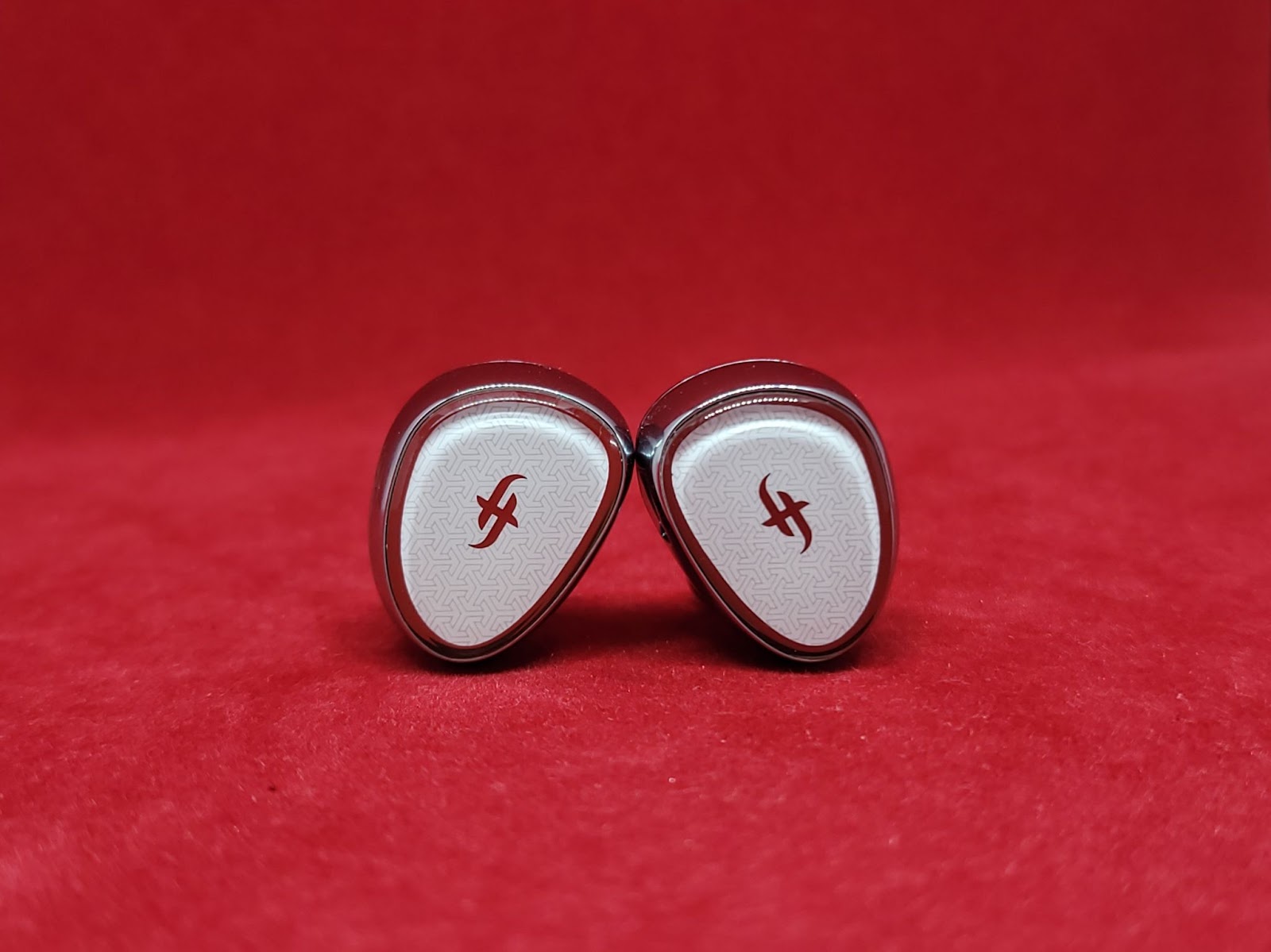
Simgot EA1000 Fermat was provided to me by Simgot for free and I only paid for the customs fee. As I always say, everyone is biased one way or another so take everything you read with a grain of salt. Also I will try to be more concise and to the point in my reviews from now on without worrying about the word count etc. If you have any questions, please ask me in the comments and I will try to answer them to the best of my abilities.
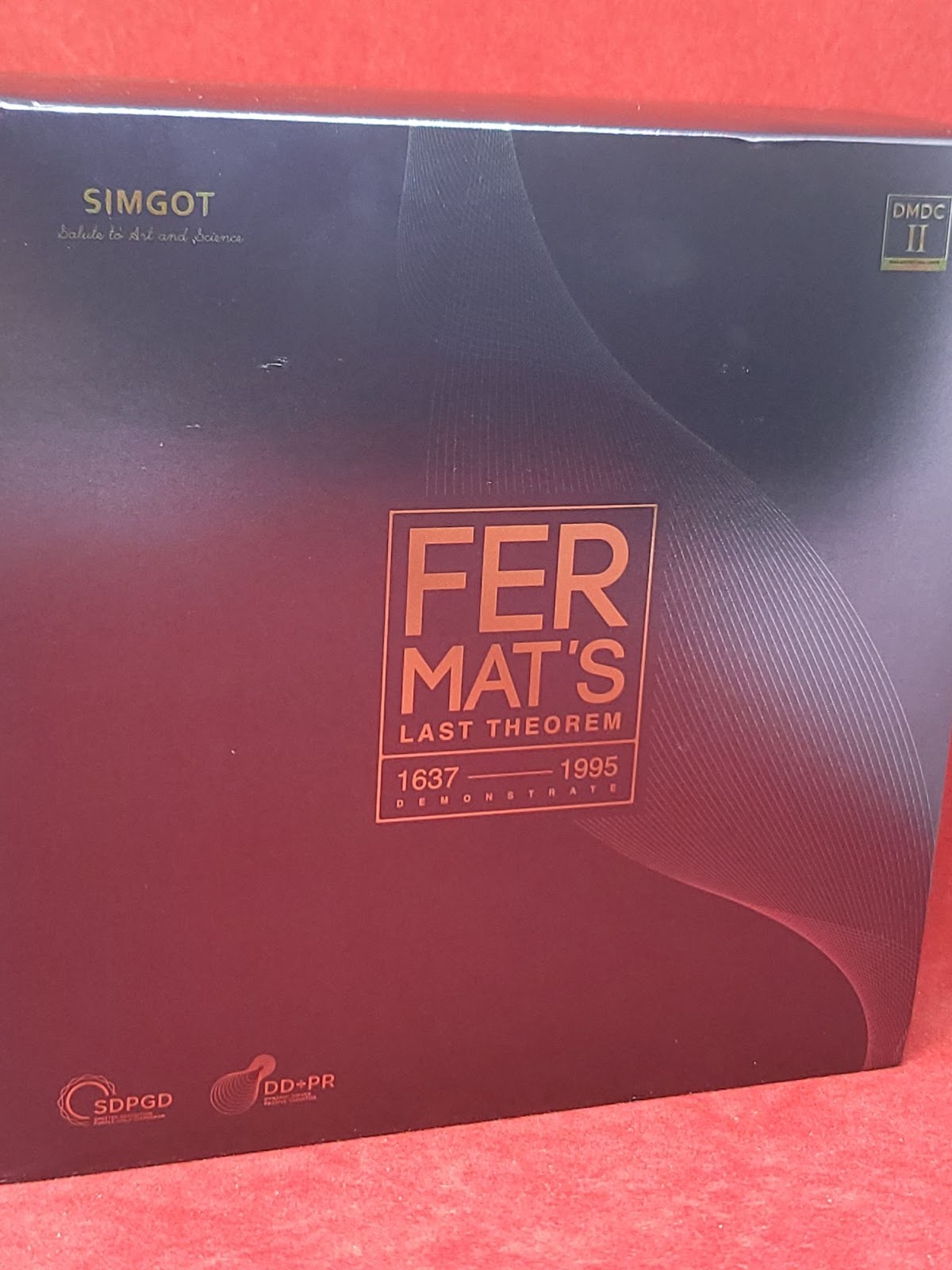
I think at this point, everyone is pretty familiar with Simgot IEMs high build quality. Shells are, as always, fully made out of CNC’d metal. But there are a few twists on EA1000 that solidifies its place as Simgot’s best offering. Faceplate has a beautiful pattern and a glass cover on top of it, so I can’t exactly call it a fingerprint magnet anymore. On the inner side there is a big vent placed on top of the passive radiator. Yes, the EA1000 has a passive radiator per side apart from the dynamic drivers.
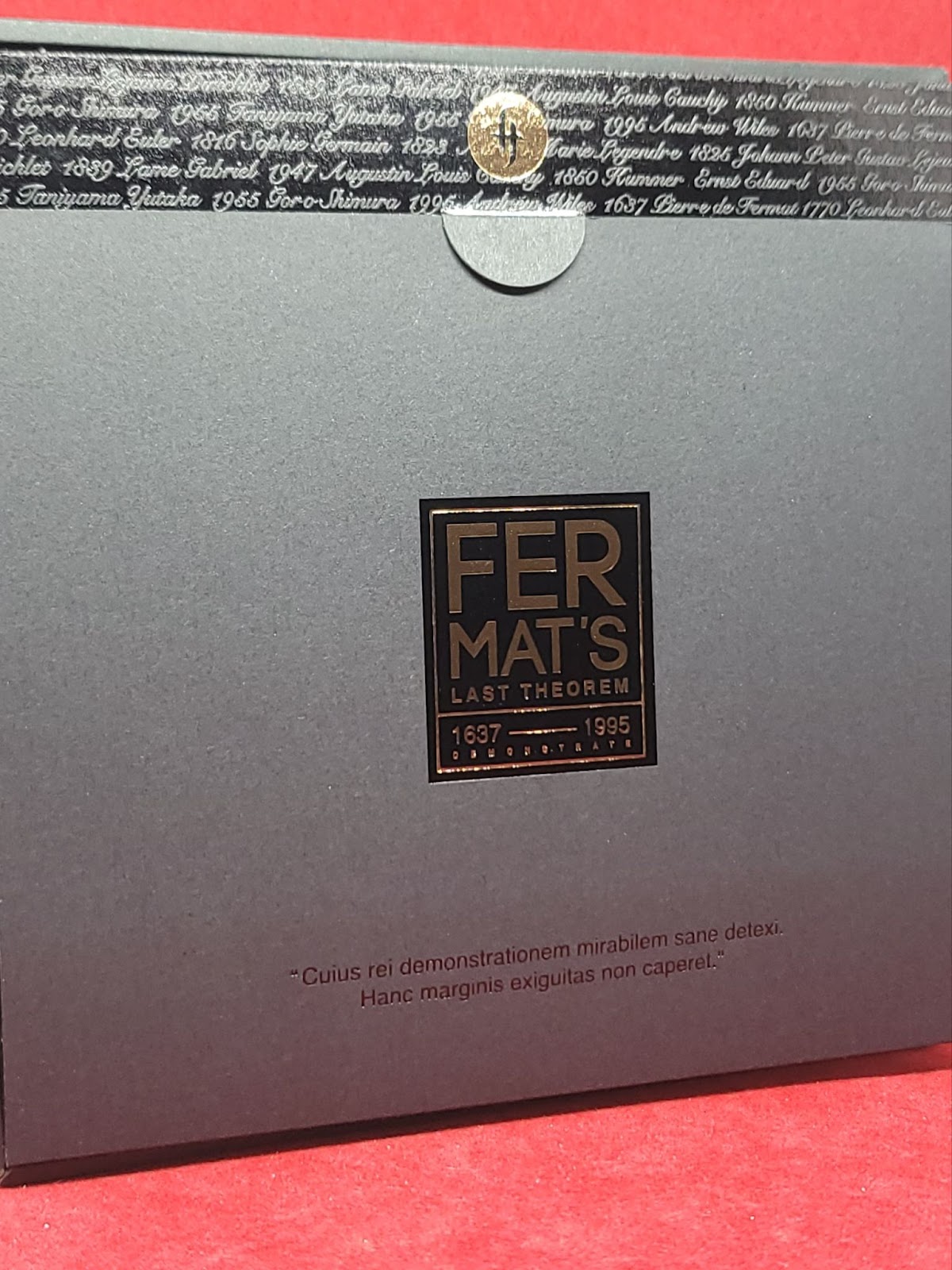
The unboxing experience of EA1000 is also above its brothers. The box is slightly bigger and fancier than usual. When you open the cover inside, you are greeted with a card that explains Fermat’s last theorem and which also acts as a warranty card. The carrying case you get with EA1000 is also fancier. The provided cable is again a single 3.5 mm terminated single ended one but this time thicker. This time you get two sets of eartips instead of one, unlike EA500s and EM6L.

EA1000 comes with 3 pairs of tuning nozzles. Among them silver nozzles with red rings were the most balanced ones, so I used them mostly during my test.
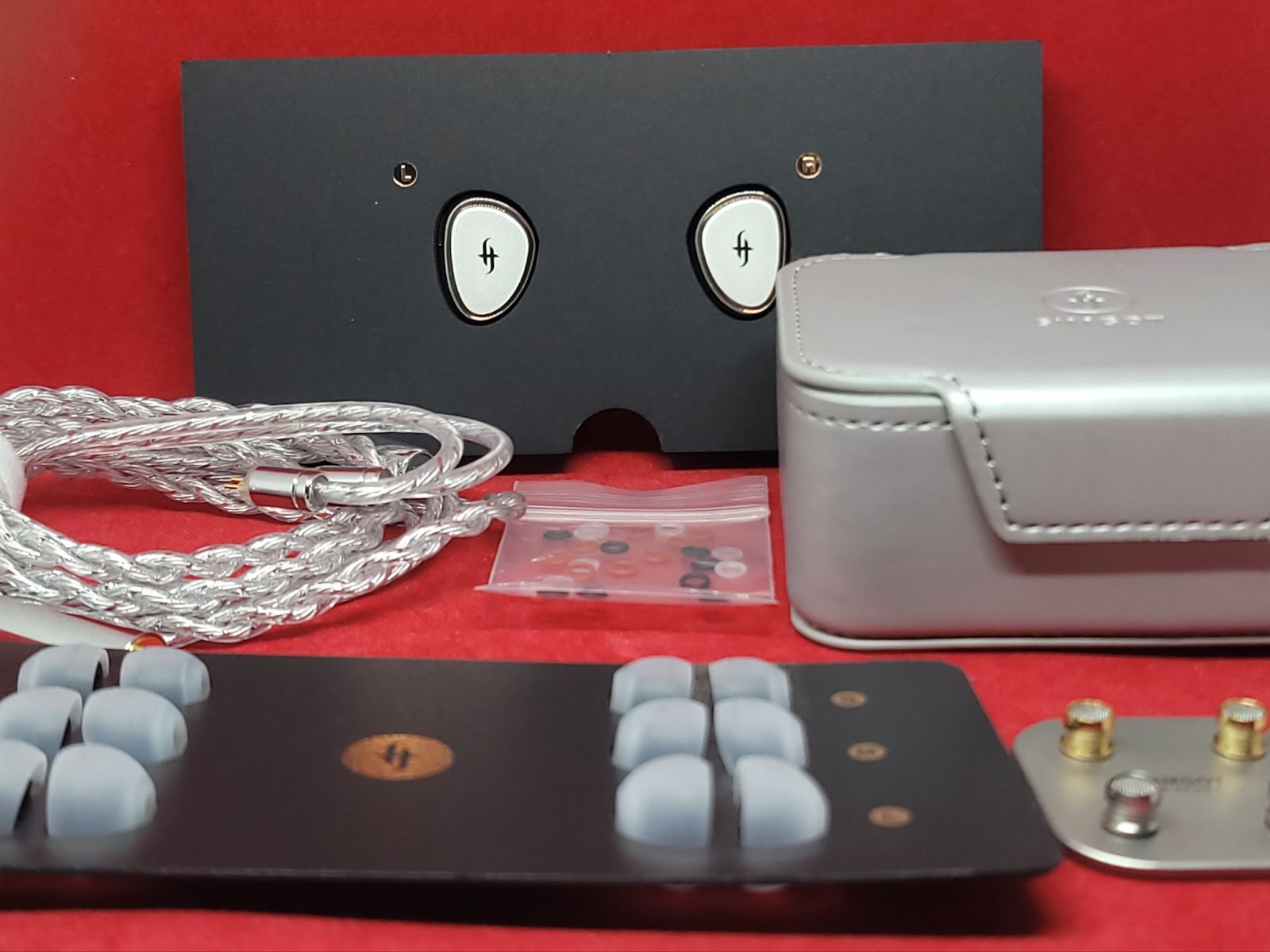
EA1000 targets the bright kind of Harman curve like most of the other Simgot IEMs. So if you used other Simgots like EA500 before, EA1000 will both feel familiar but impress you at the same time.
,
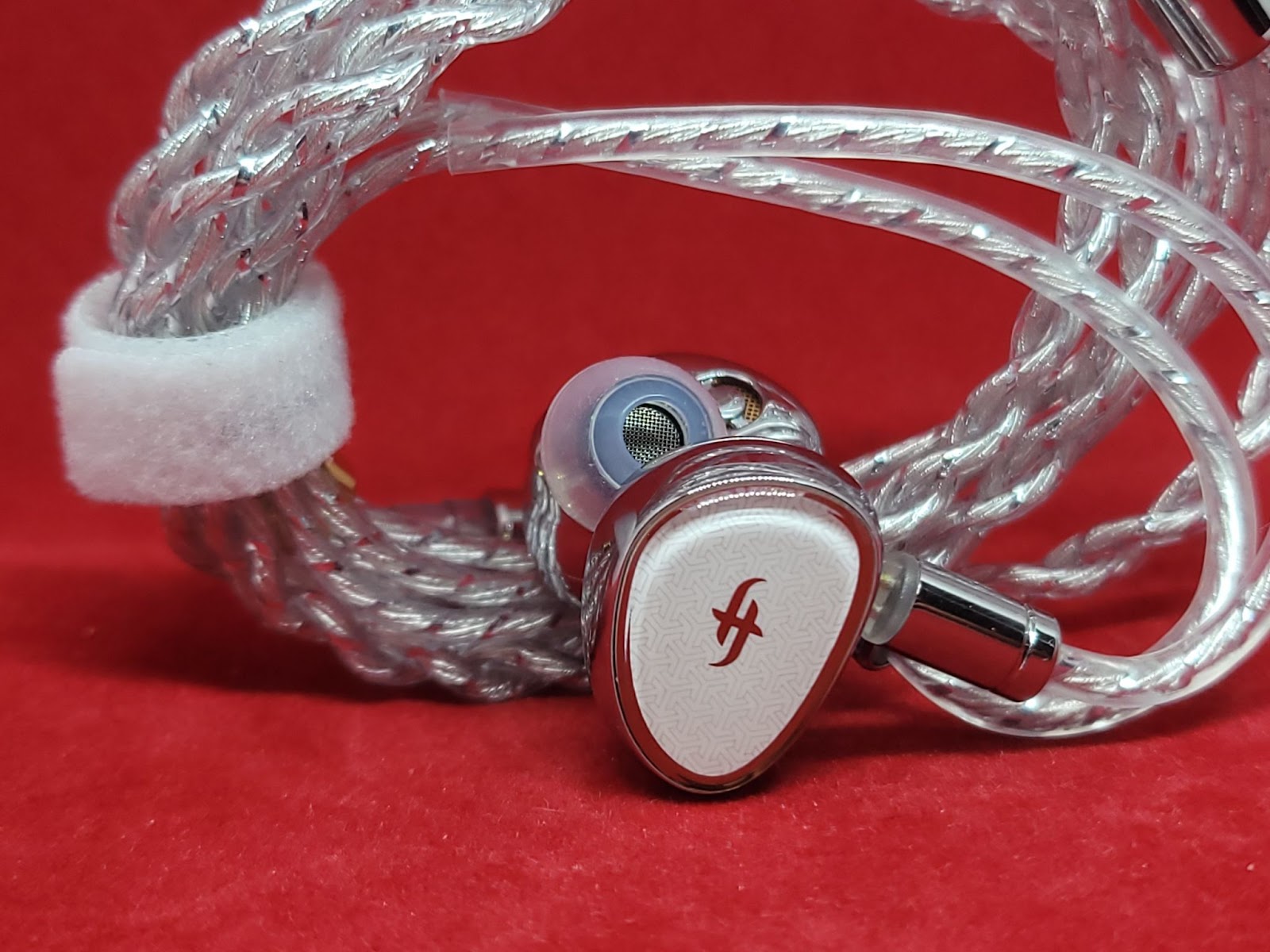
Bass on EA1000 is the most distinguishing feature of the set. It’s one of the most defined and well-textured bass I’ve heard around this price range. It’s not exaggerated, just slightly north of what I would call neutral. It doesn’t dig too deep into the subbass either but it’s enough. There is enough warmth without muddying mids too much. Decay is on point, not too fast to feel dry but fast enough to not feel sloppy.
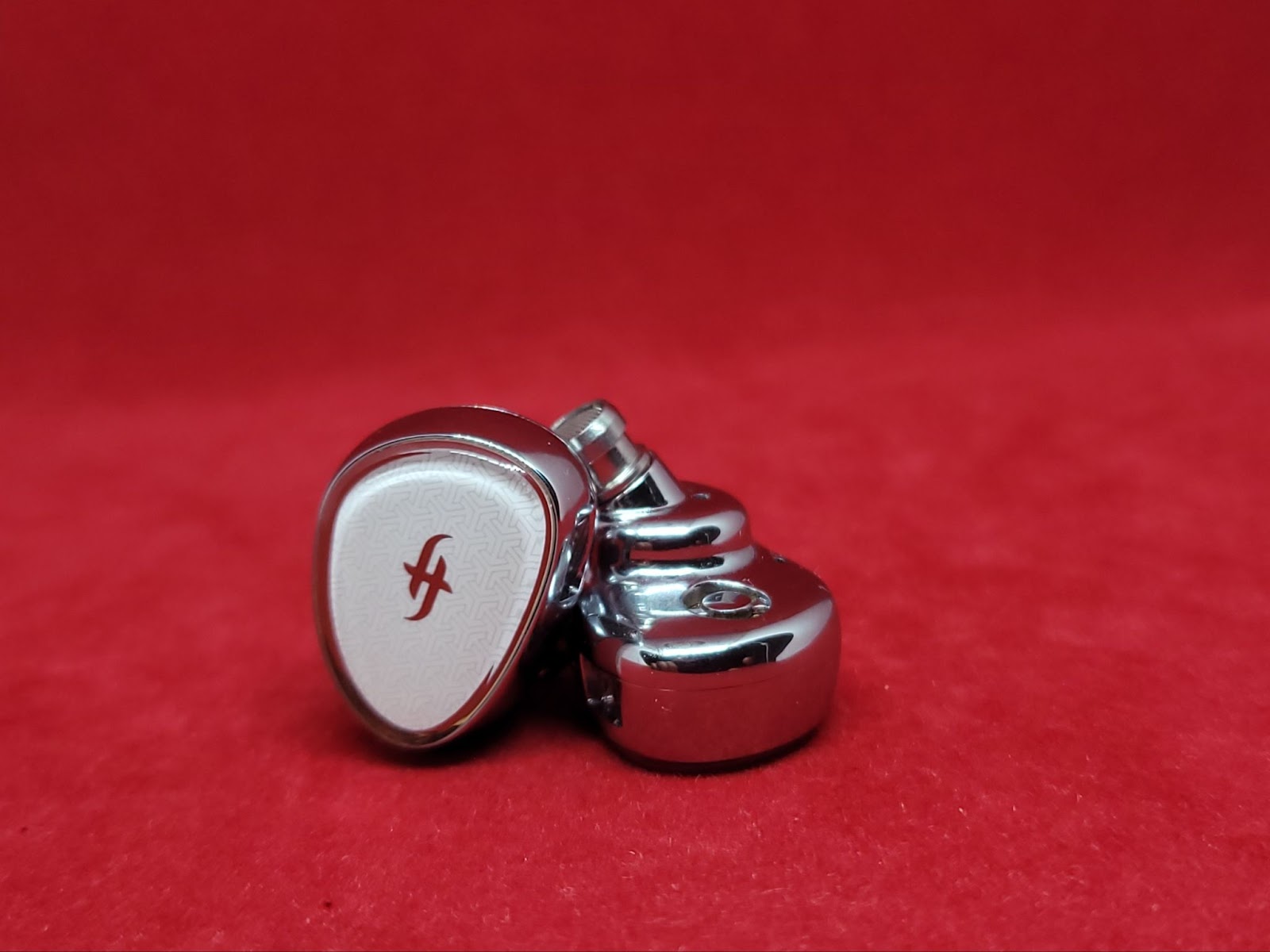
Mids are, in classic Simgot fashion, highlighted, especially the upper mids. For some, I can see it being shouty or intense. Still I mostly like this kind of presentation, and I think most female vocal lovers will like it as well. However, I also think Simgot could provide nozzles that are tamer instead of more intense.
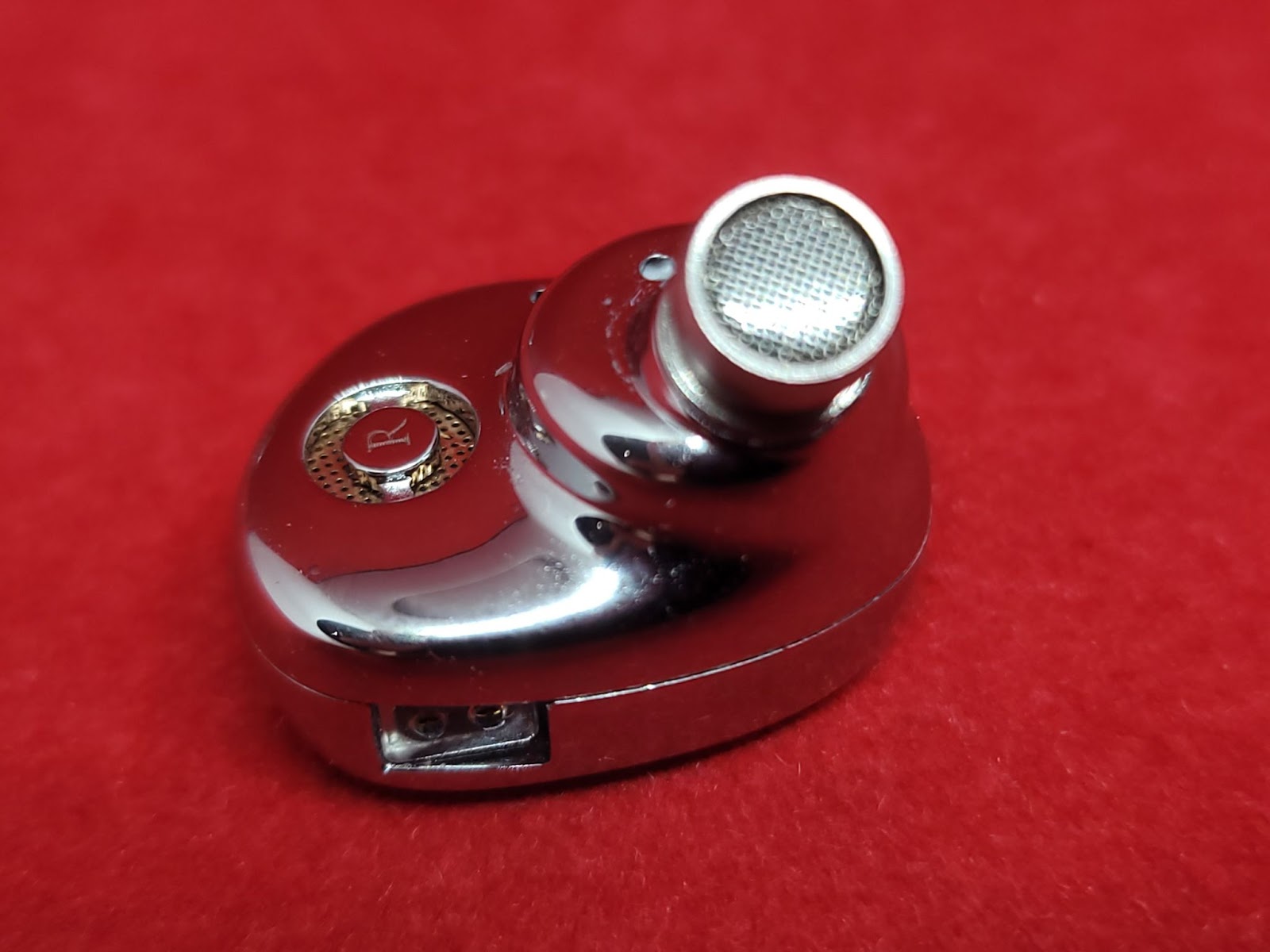
Treble is again pronounced and colored, but in a tasteful way. I mostly prefer bright tuning to a darker one if it’s not too peaky or piercing and EA1000 is definitely not that. Again, a more tamer nozzle offering could make these IEMs appeal to a wider audience. Also I feel as though EA500LM was easier to listen to because the higher bass level was balancing out the treble nicely even though it measures brighter.
Simgot IEMs have always been among the most technically adept products in their price range and EA1000 is no exception. If you think EA500 is good, wait until you try EA1000. Yes, sparkly treble helps with details that it feels like cheating but if making a bright IEM was enough to be detailed, everyone would go for that sound signature. Simgot uses good parts and it pays off. Treble is more controlled than similarly tuned IEMs, even Simgot’s own.
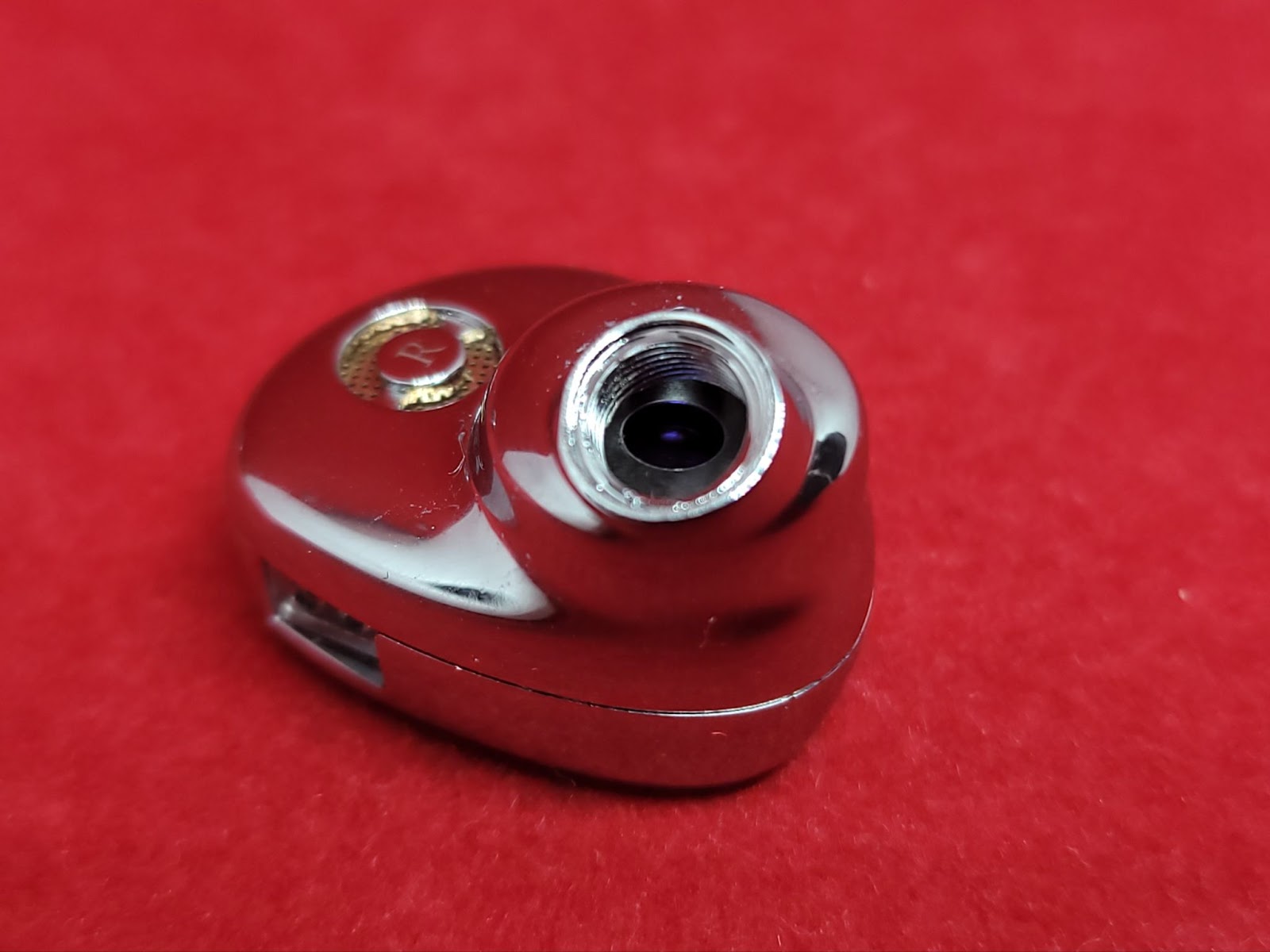
Headstage on Simgot is very three-dimensional and I don’t use this word too often to describe the headstage/soundstage. It feels spacious but more than that it feels immersive and on point. Neither depth nor width feels more exaggerated than the other. Imaging and layering is very precise. Timbre is mostly great too.
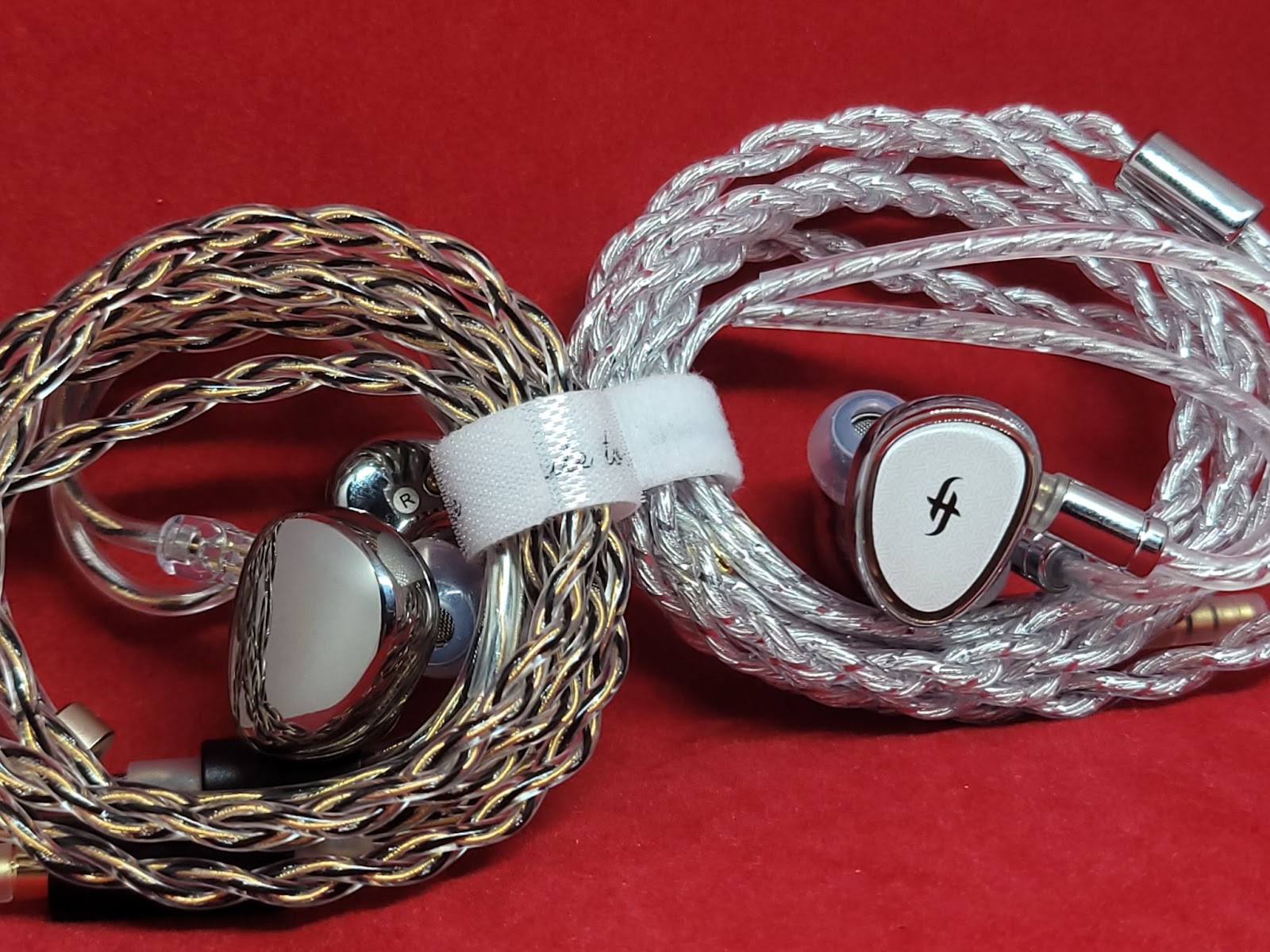
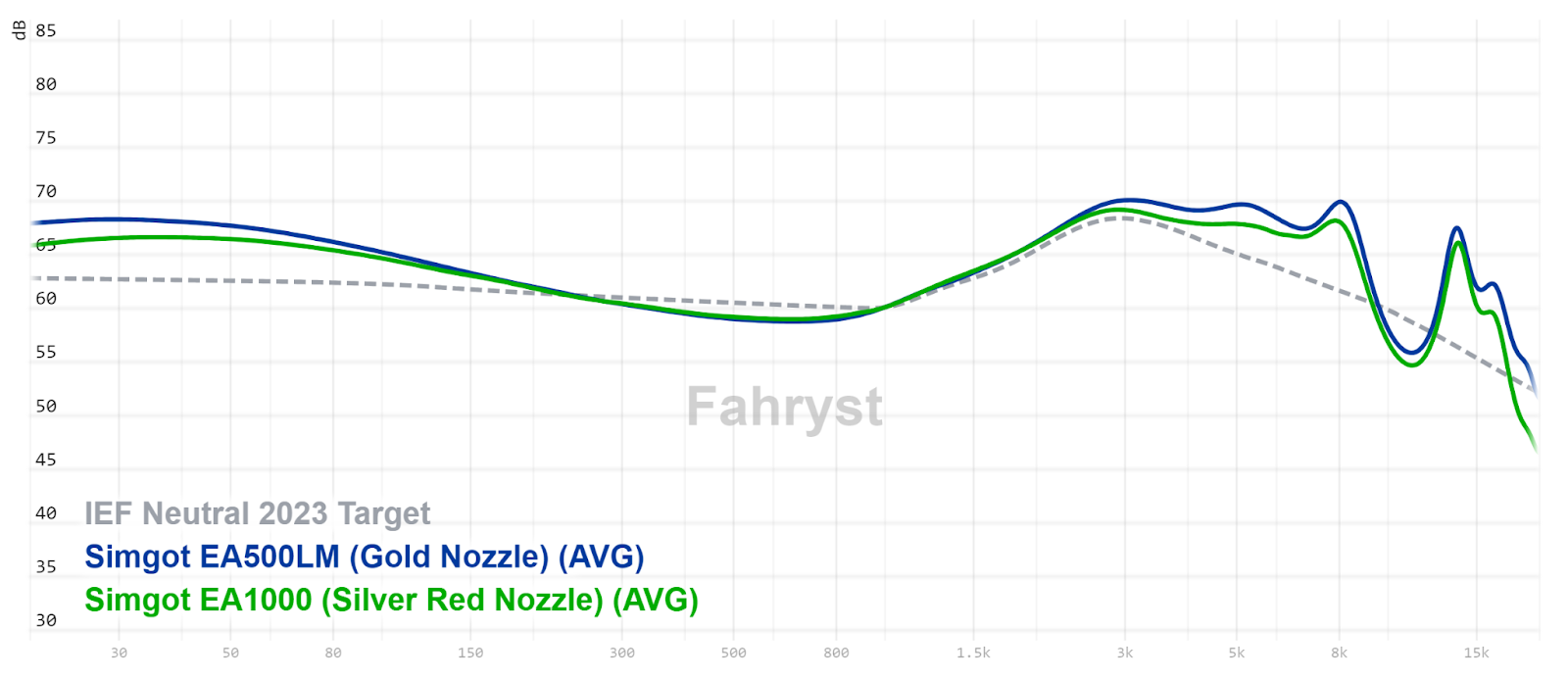
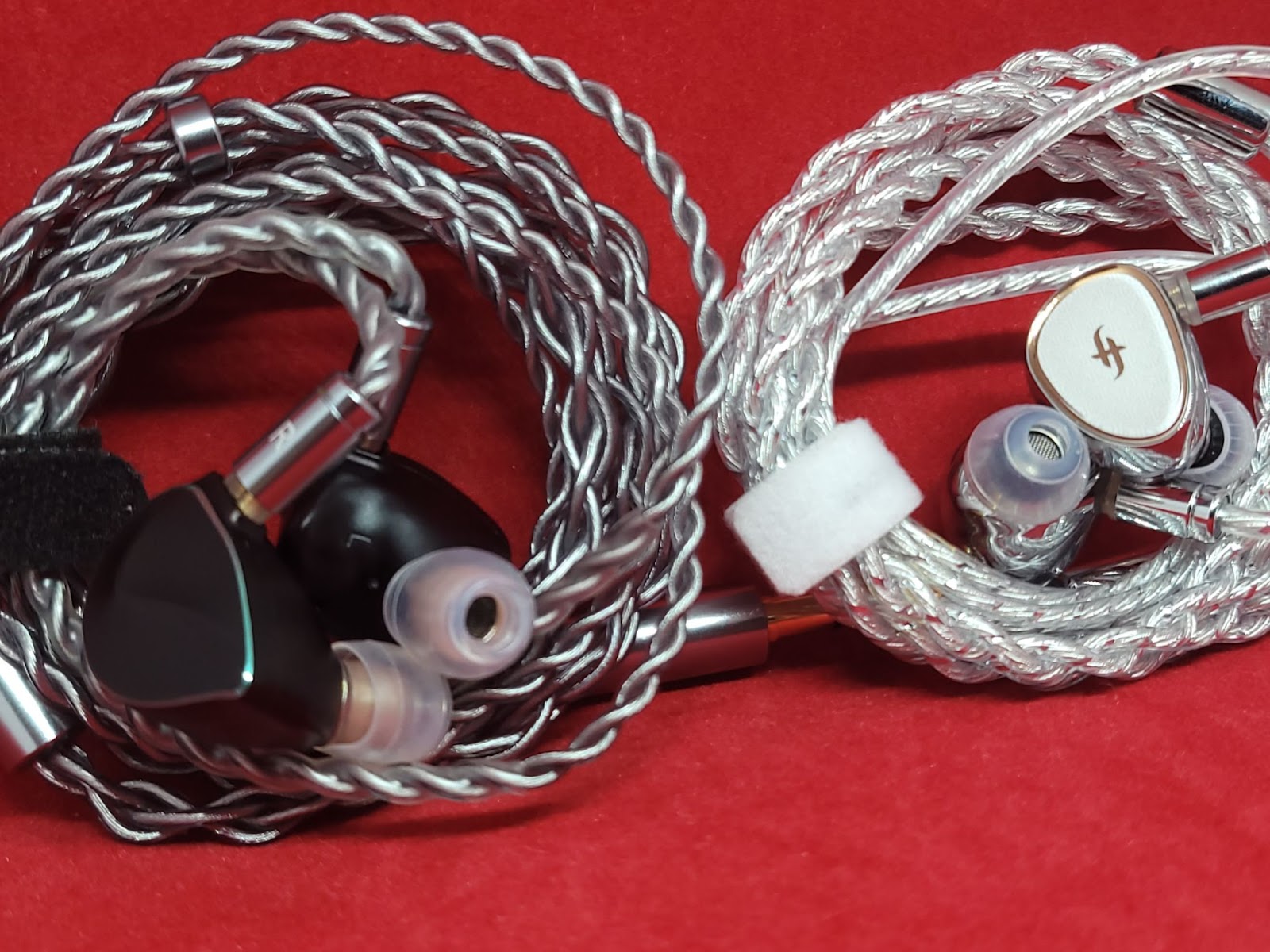
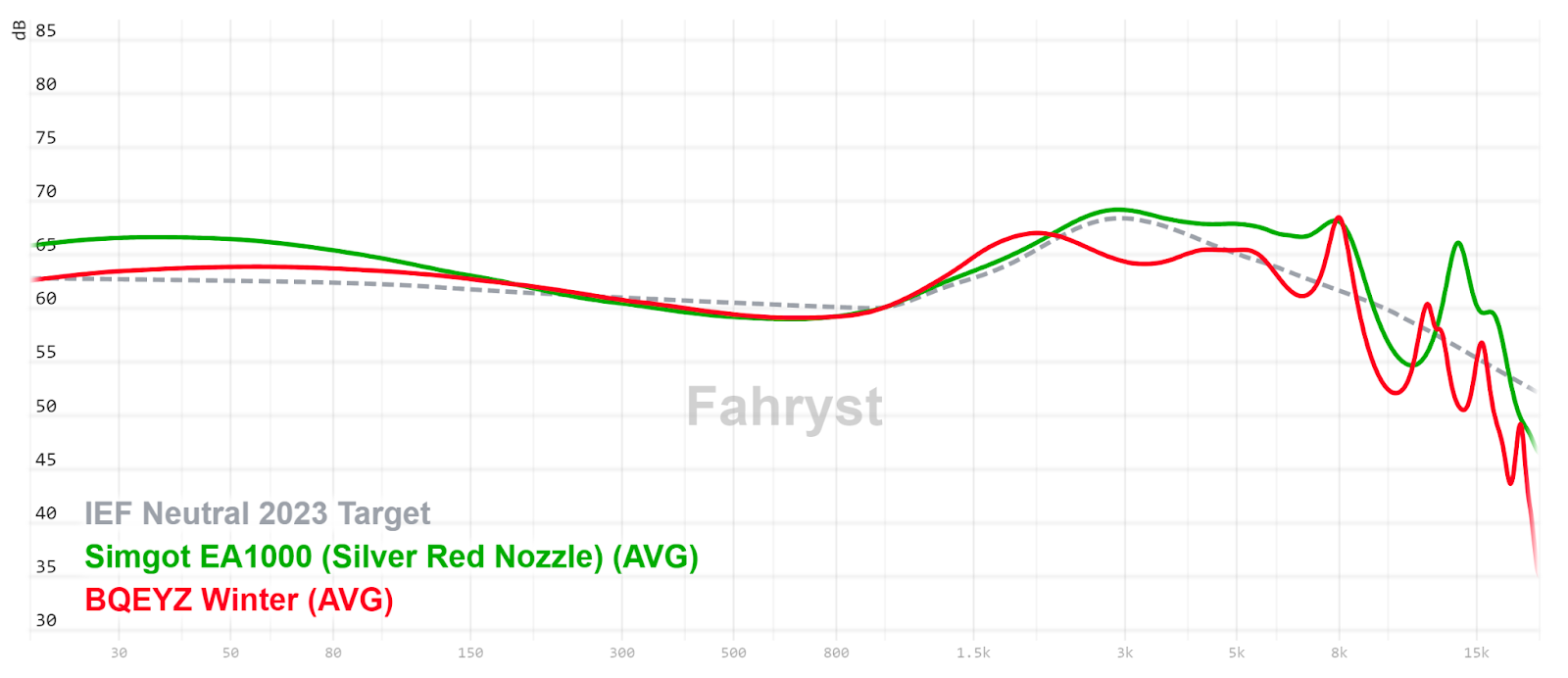
When I review a Simgot product, even I question my own objectivity. But they almost always deliver what I look for in IEMs. In EA1000 Fermat’s case, it provides a very balanced and highly technical listening without any balanced armatures, piezoelectric or planar magnetic drivers. I never could feel comfortable with multi driver IEMs as much as I did with single DDs, maybe that’s why I’m biased. With a Simgot’s single DDs, you don’t feel you are missing out and EA1000 is the ultimate form of this experience. The only criticism I can give is that they could make the alternative tuning nozzles in a way to appeal to the treble sensitive audience too. Other than that, I have no complaints and definitely going to keep EA1000 Fermats.
Disclaimers
Simgot EA1000 Fermat was provided to me by Simgot for free and I only paid for the customs fee. As I always say, everyone is biased one way or another so take everything you read with a grain of salt. Also I will try to be more concise and to the point in my reviews from now on without worrying about the word count etc. If you have any questions, please ask me in the comments and I will try to answer them to the best of my abilities.
Build and Accessories of Simgot EA1000
I think at this point, everyone is pretty familiar with Simgot IEMs high build quality. Shells are, as always, fully made out of CNC’d metal. But there are a few twists on EA1000 that solidifies its place as Simgot’s best offering. Faceplate has a beautiful pattern and a glass cover on top of it, so I can’t exactly call it a fingerprint magnet anymore. On the inner side there is a big vent placed on top of the passive radiator. Yes, the EA1000 has a passive radiator per side apart from the dynamic drivers.
The unboxing experience of EA1000 is also above its brothers. The box is slightly bigger and fancier than usual. When you open the cover inside, you are greeted with a card that explains Fermat’s last theorem and which also acts as a warranty card. The carrying case you get with EA1000 is also fancier. The provided cable is again a single 3.5 mm terminated single ended one but this time thicker. This time you get two sets of eartips instead of one, unlike EA500s and EM6L.
EA1000 comes with 3 pairs of tuning nozzles. Among them silver nozzles with red rings were the most balanced ones, so I used them mostly during my test.
Sound of Simgot EA1000
Tonality
EA1000 targets the bright kind of Harman curve like most of the other Simgot IEMs. So if you used other Simgots like EA500 before, EA1000 will both feel familiar but impress you at the same time.
,
Bass on EA1000 is the most distinguishing feature of the set. It’s one of the most defined and well-textured bass I’ve heard around this price range. It’s not exaggerated, just slightly north of what I would call neutral. It doesn’t dig too deep into the subbass either but it’s enough. There is enough warmth without muddying mids too much. Decay is on point, not too fast to feel dry but fast enough to not feel sloppy.
Mids are, in classic Simgot fashion, highlighted, especially the upper mids. For some, I can see it being shouty or intense. Still I mostly like this kind of presentation, and I think most female vocal lovers will like it as well. However, I also think Simgot could provide nozzles that are tamer instead of more intense.
Treble is again pronounced and colored, but in a tasteful way. I mostly prefer bright tuning to a darker one if it’s not too peaky or piercing and EA1000 is definitely not that. Again, a more tamer nozzle offering could make these IEMs appeal to a wider audience. Also I feel as though EA500LM was easier to listen to because the higher bass level was balancing out the treble nicely even though it measures brighter.
Technicalities
Simgot IEMs have always been among the most technically adept products in their price range and EA1000 is no exception. If you think EA500 is good, wait until you try EA1000. Yes, sparkly treble helps with details that it feels like cheating but if making a bright IEM was enough to be detailed, everyone would go for that sound signature. Simgot uses good parts and it pays off. Treble is more controlled than similarly tuned IEMs, even Simgot’s own.
Headstage on Simgot is very three-dimensional and I don’t use this word too often to describe the headstage/soundstage. It feels spacious but more than that it feels immersive and on point. Neither depth nor width feels more exaggerated than the other. Imaging and layering is very precise. Timbre is mostly great too.
Comparisons
Simgot EA1000 (Silver with Red ring) vs EA500LM (Gold Nozzle)
- EA500LM’s bass is slightly more impactful but EA1000’s bass is impactful enough and more textured. EA500LM also extends deeper into the subbass and rumbles more.
- Vocals are clearer on EA1000. The EA500LM has slightly more body and note weight.
- Both are bright IEMs and have similar intensity and tendency to sibilance in the upper mids and lower treble but EA500LM has slightly more energy in the mid treble and above so cymbals and hi-hats are more splashy, still it’s balanced out with more bass. On the other hand EA1000 still feels more controlled.
- Headstage of the EA1000 is more spacious and three-dimensional. EA1000 is also more resolving. Even though the EA500LM has more air, the EA1000 feels more effortless. It renders and layers better. Both have great imaging but EA1000 staging helps its imaging more. Timbre is great on both. If EA1000 was just an EA500 with a passive radiator, that would explain bass detail and texture but obviously it’s more than that.
Simgot EA1000 vs BQEYZ Winter
- EA1000 is bassier. Bass on Winter is fast, tight but not as impactful. Subbass extension is also better on EA1000.
- Vocals are more forward on EA1000. Winter is kind of in the similar vein but vocals are more natural and in line with the rest of the track.
- EA1000 overall brighter but Winter has some emphasis where bone conduction driver kicks in. Above 6k Winter emphasizes “S”s, “Sh”s and “T”s slightly. Male vocals are more likely to get sibilant on EA1000 with volume while females get sibilant first on Winter.
- Both have great detail rendition. EA1000 pushes the detail more in your face however, so if you are after the ultimate detail between the two, EA1000 wins. On the other hand Winter has a deeper head stage and imaging more precise. I like the timbre on Winter slightly more as the EA1000 can get a little metallic compared to that.
Conclusion
When I review a Simgot product, even I question my own objectivity. But they almost always deliver what I look for in IEMs. In EA1000 Fermat’s case, it provides a very balanced and highly technical listening without any balanced armatures, piezoelectric or planar magnetic drivers. I never could feel comfortable with multi driver IEMs as much as I did with single DDs, maybe that’s why I’m biased. With a Simgot’s single DDs, you don’t feel you are missing out and EA1000 is the ultimate form of this experience. The only criticism I can give is that they could make the alternative tuning nozzles in a way to appeal to the treble sensitive audience too. Other than that, I have no complaints and definitely going to keep EA1000 Fermats.
Jarlaxle
100+ Head-Fier
Pros: Low price
Good fit security and comfort
Decent isolation
Decent quality bass
Getting a pair of TRN T-Ear tips
Good fit security and comfort
Decent isolation
Decent quality bass
Getting a pair of TRN T-Ear tips
Cons: Shouty and harsh sounding out of the box
Needs an easy mod to sound decent
Nothing else at this price
Needs an easy mod to sound decent
Nothing else at this price
TRN is mostly known for their budget offerings and CS4 is one of them. Until these were offered to be sent to me, I wasn’t even aware that they existed. So here I am letting you know that these exist.
This barebones set of IEMs starts from 9.90 USD. If you want a cable with a microphone you need to pay another dollar and if you want a USB-C type connector instead of a 3.5 mm you need to pay 11.90 USD.
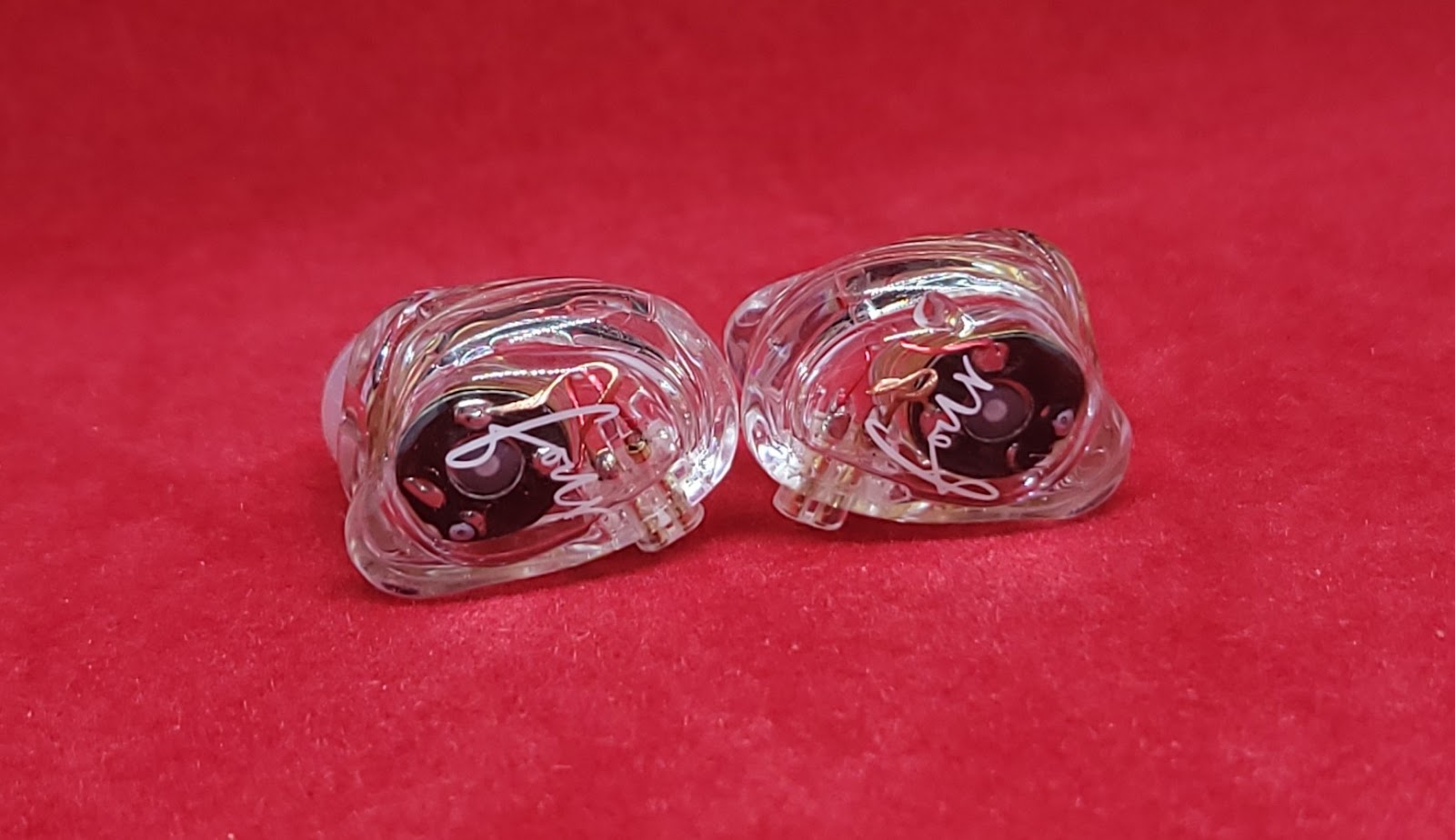
TRN CS4 was provided to me by Cloris from shenzhenaudio.com for free. As I always say, everyone is biased one way or another so take everything you read with a grain of salt. Also I will try to be more concise and to the point in my reviews from now on, without worrying about the word count etc. If you have any questions, please ask me in the comments and I will try to answer them to the best of my abilities.
If you had bought any cheap KZ, QKZ or TRN, the packaging is exactly that: a small box with earpieces, a cable, a set of generic eartips inside. There is also a pair of TRN’s own medium size T-Ear tips on the earpieces which was a welcome surprise.
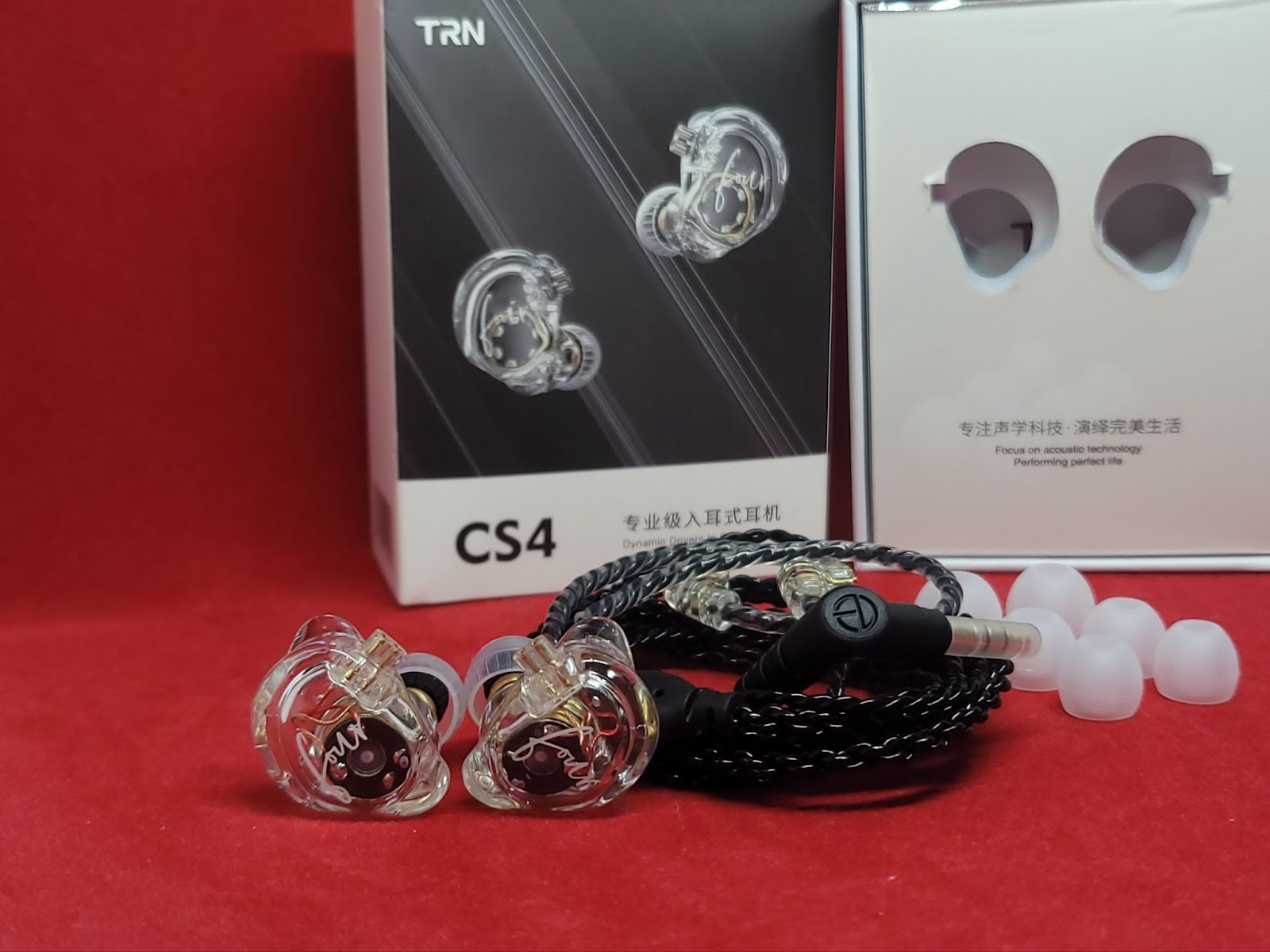
CS4’s build is nothing out of the ordinary for an IEM in this price range. It’s plastic, in fact its build is identical to Tangzu Wan’er’s so if you have a problem with that, you can look elsewhere (and probably pay more). However, the shape of the shells is very ergonomic. They might be the best fitting IEMs for me. They stay very securely in my ears. If only they didn’t start to hurt after a while but I’m sure it’s because of the unusual shape of my ears, not the IEMs.
I wasn’t expecting much from CS4 and it didn’t deliver much at first but let me explain. CS4 doesn’t sound very good out of the box. It sounds fine to a degree with a healthy amount of bass and excess energy around the upper midrange.
Bass is relatively fast and tight, I have heard worse bass from sets more expensive than these. With the great seal and isolation they extend deep into the subbass, more than the graphs would indicate.
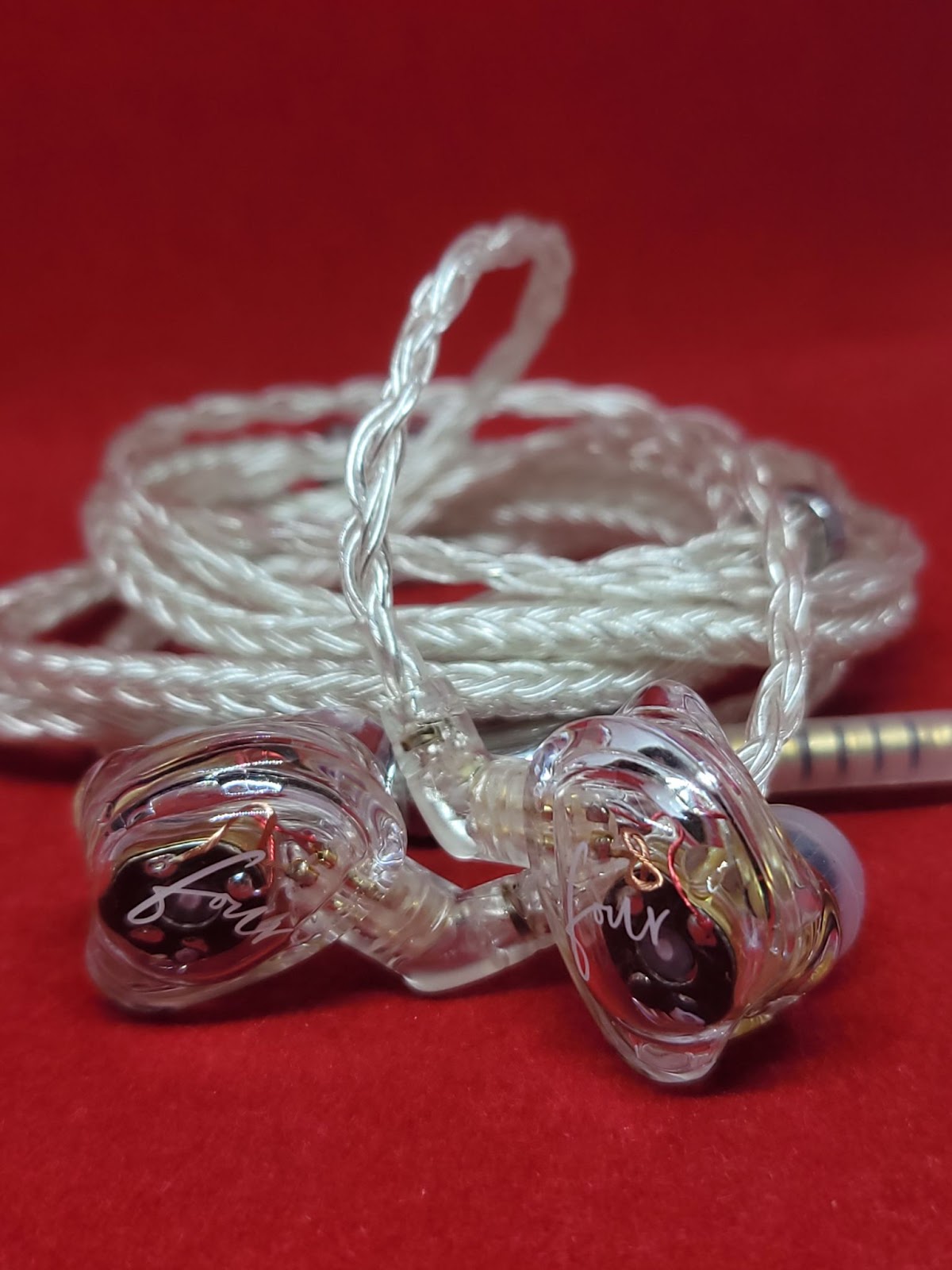
There is minimal bass bleed into the lower mids so there is a slight warmth to the tone but not much. Upper mids are just too much. If you listen at a low volume, it won’t bother you much but as soon as you raise the volume, CS4 begins to screech and shout.
Treble energy is slightly excessive, especially in the lower treble. However, the extension is better than I expected for a single DD at this price. There is a decent amount of detail and sparkle.
After noticing there is more life in these I decided to slap a Tanya filter on the nozzles to tame the upper mids and Voila! They turned into a very good set of IEMs. Bass was tight so they could handle some more without getting muddy too much. mids and treble became much more agreeable and treble extension wasn’t affected at all!
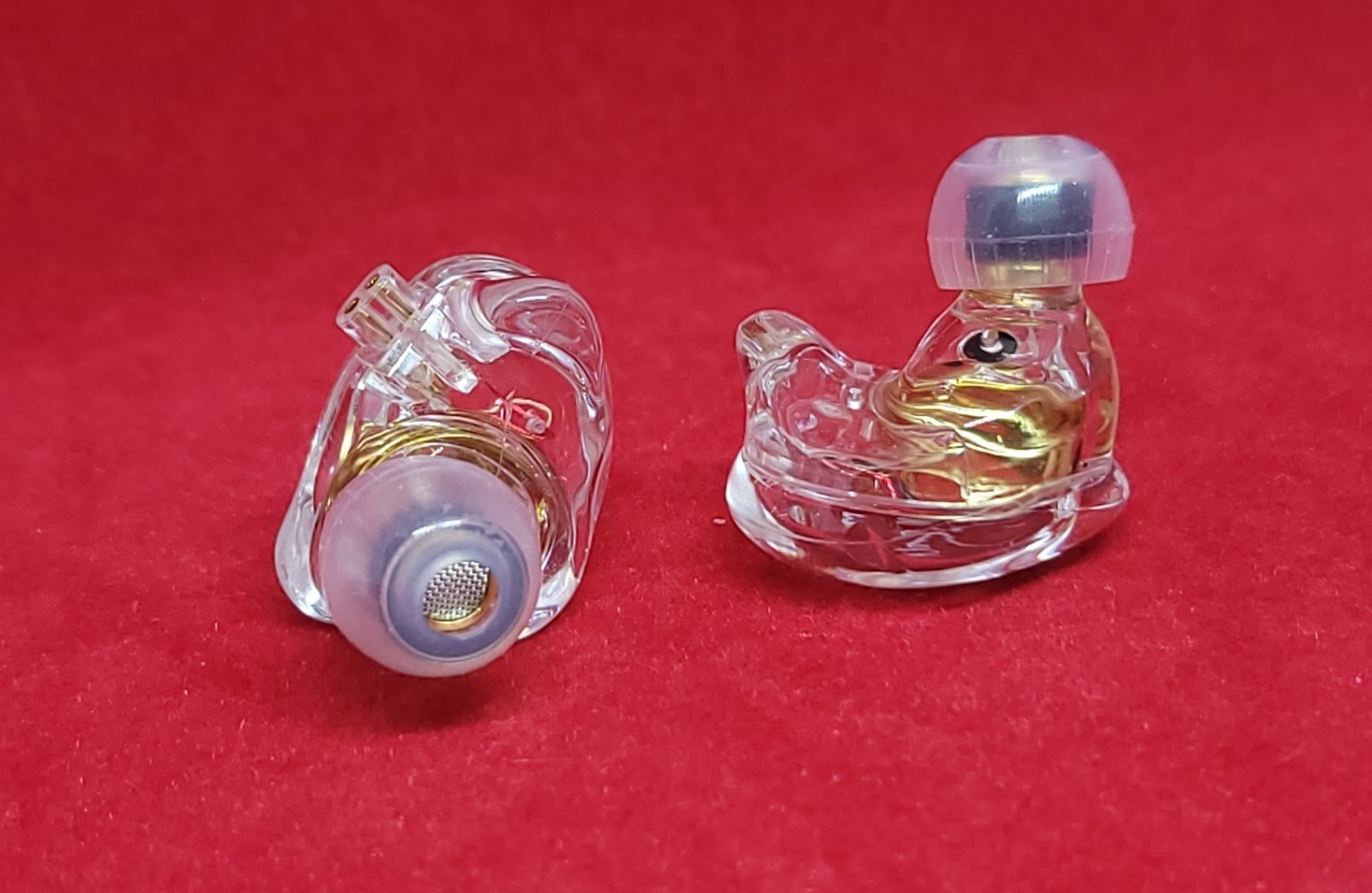
Speaking of technicalities or subjective experience of an IEM at this price feels kind of weird but I can say CS4 fared better than some of the 20 USD IEMs on the market in some aspects. It has good treble energy and decent details. The headstage is also fine along with the imaging, again for the price.
I didn’t want to put CS4 against too many other IEMs that are more expensive. Instead I compared them with and without the mods to my ultra budget benchmark Tangzu Wan’er. All of the comparisons made by volume matching at 1 kHz.
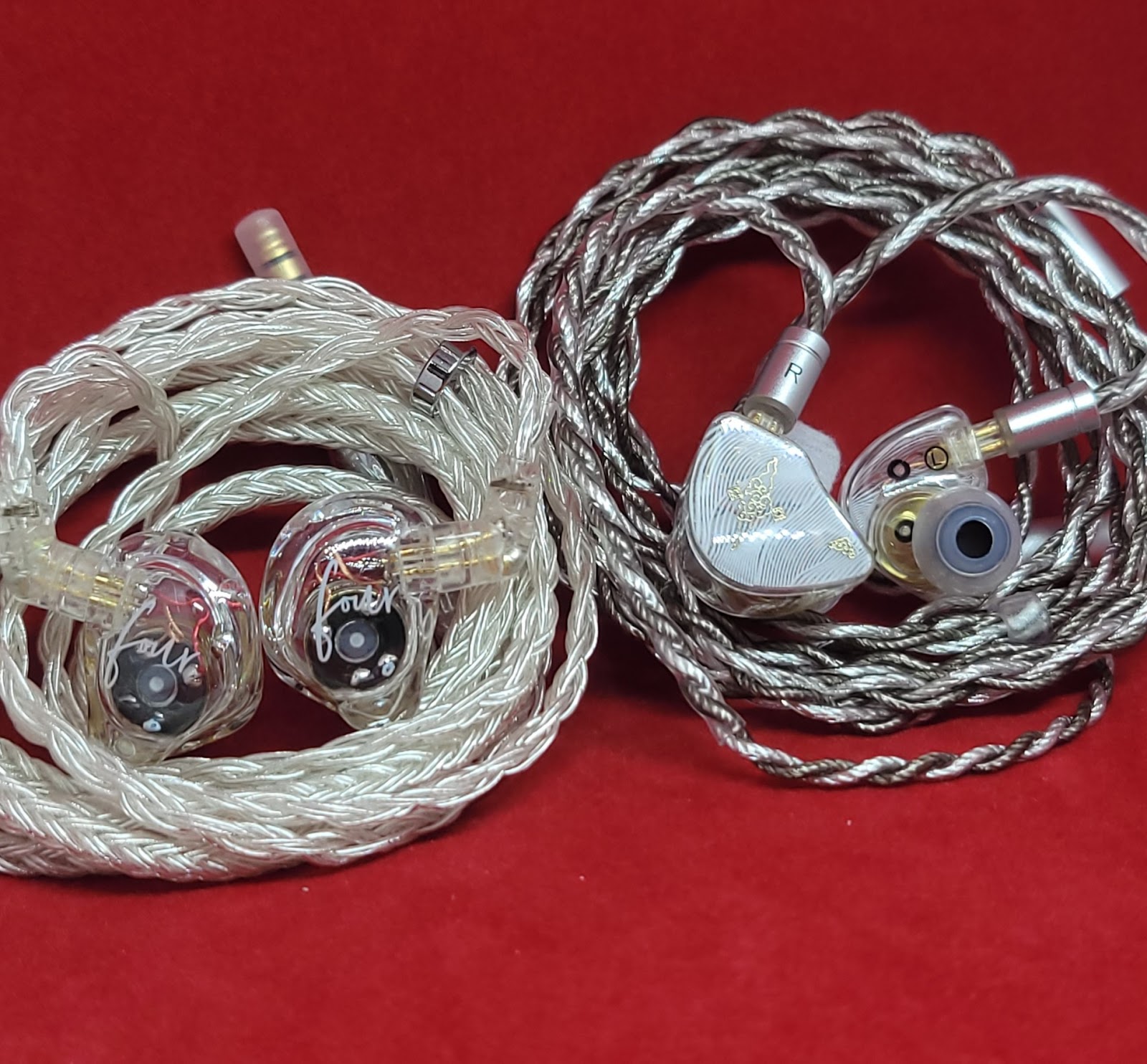
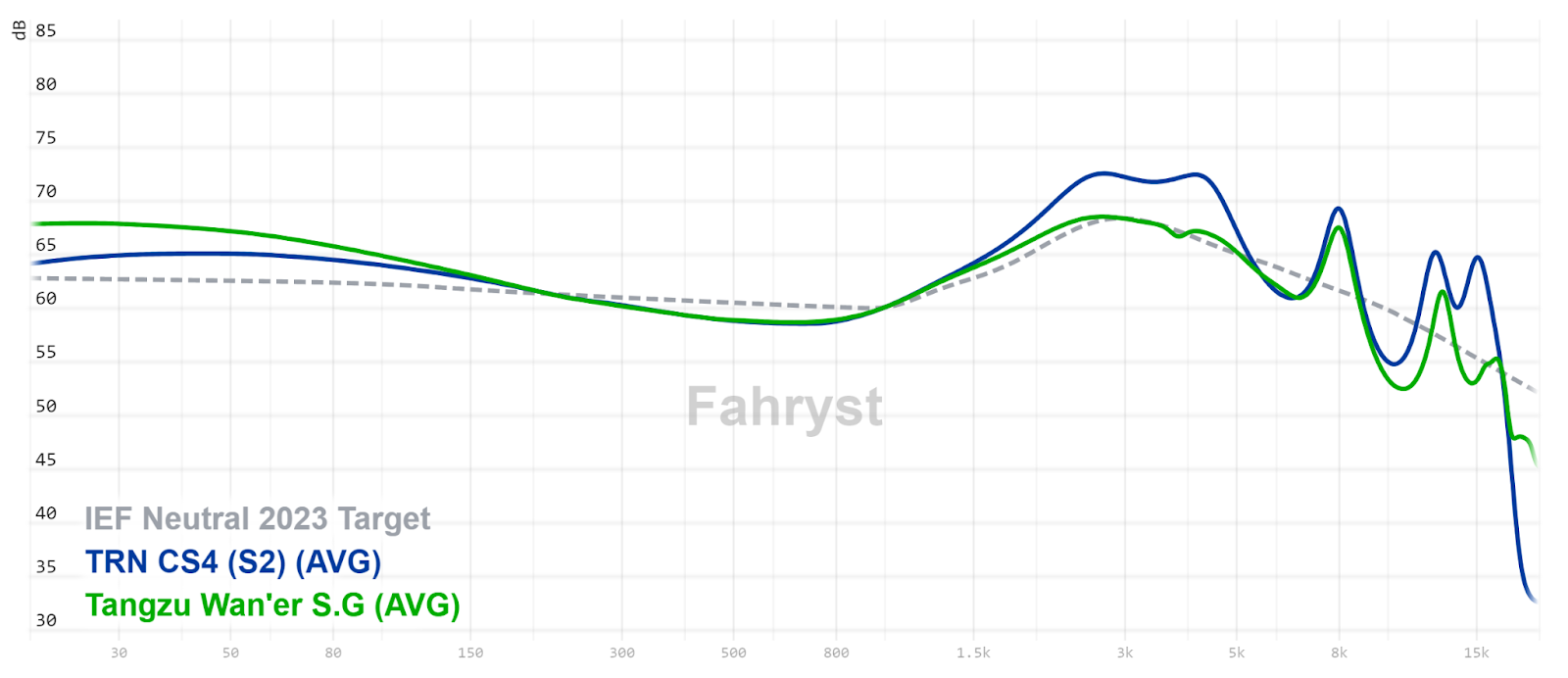
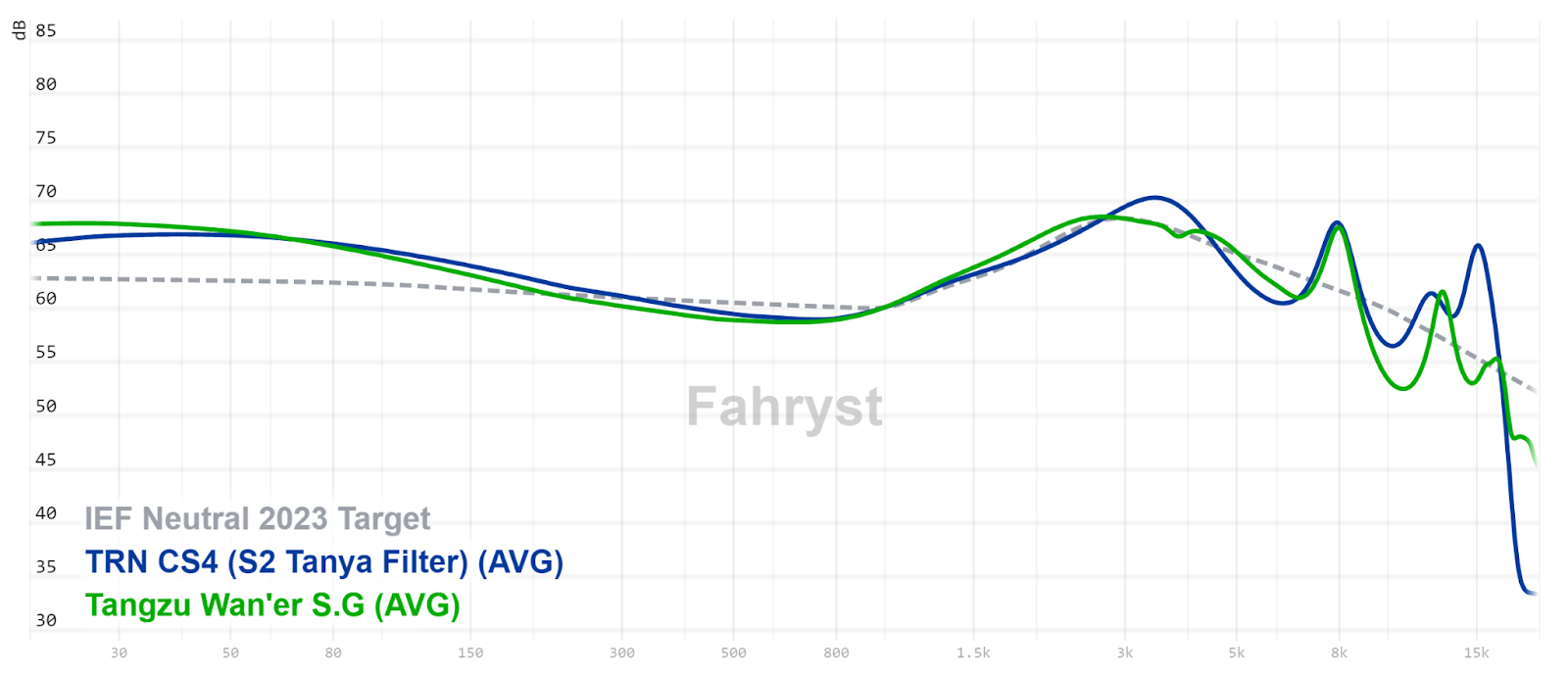
The CS4 review was one of those that made me feel “ugh whatever” at first. But after making that easy mod, they started to sound pretty good. Fit security and comfort are also one of the best I have ever experienced. So while I can’t really say go out and buy them, if you have some filters lying around, you won’t miss the 10 dollars you’ve spent on these. Also I imagine they would perform well in gaming even without a mod but I haven’t tested that unfortunately. If TRN comes up with a gaming variant of these with a boom mic, I probably would have less problems recommending that.
This barebones set of IEMs starts from 9.90 USD. If you want a cable with a microphone you need to pay another dollar and if you want a USB-C type connector instead of a 3.5 mm you need to pay 11.90 USD.
Disclaimers
TRN CS4 was provided to me by Cloris from shenzhenaudio.com for free. As I always say, everyone is biased one way or another so take everything you read with a grain of salt. Also I will try to be more concise and to the point in my reviews from now on, without worrying about the word count etc. If you have any questions, please ask me in the comments and I will try to answer them to the best of my abilities.
Build and Accessories of TRN CS4
If you had bought any cheap KZ, QKZ or TRN, the packaging is exactly that: a small box with earpieces, a cable, a set of generic eartips inside. There is also a pair of TRN’s own medium size T-Ear tips on the earpieces which was a welcome surprise.
CS4’s build is nothing out of the ordinary for an IEM in this price range. It’s plastic, in fact its build is identical to Tangzu Wan’er’s so if you have a problem with that, you can look elsewhere (and probably pay more). However, the shape of the shells is very ergonomic. They might be the best fitting IEMs for me. They stay very securely in my ears. If only they didn’t start to hurt after a while but I’m sure it’s because of the unusual shape of my ears, not the IEMs.
Sound of TRN CS4
Tonality
I wasn’t expecting much from CS4 and it didn’t deliver much at first but let me explain. CS4 doesn’t sound very good out of the box. It sounds fine to a degree with a healthy amount of bass and excess energy around the upper midrange.
Bass is relatively fast and tight, I have heard worse bass from sets more expensive than these. With the great seal and isolation they extend deep into the subbass, more than the graphs would indicate.
There is minimal bass bleed into the lower mids so there is a slight warmth to the tone but not much. Upper mids are just too much. If you listen at a low volume, it won’t bother you much but as soon as you raise the volume, CS4 begins to screech and shout.
Treble energy is slightly excessive, especially in the lower treble. However, the extension is better than I expected for a single DD at this price. There is a decent amount of detail and sparkle.
After noticing there is more life in these I decided to slap a Tanya filter on the nozzles to tame the upper mids and Voila! They turned into a very good set of IEMs. Bass was tight so they could handle some more without getting muddy too much. mids and treble became much more agreeable and treble extension wasn’t affected at all!
Technicalities
Speaking of technicalities or subjective experience of an IEM at this price feels kind of weird but I can say CS4 fared better than some of the 20 USD IEMs on the market in some aspects. It has good treble energy and decent details. The headstage is also fine along with the imaging, again for the price.
Comparisons
I didn’t want to put CS4 against too many other IEMs that are more expensive. Instead I compared them with and without the mods to my ultra budget benchmark Tangzu Wan’er. All of the comparisons made by volume matching at 1 kHz.
TRN CS4 (stock) vs Tangzu Wan’er
- Vocals are much more forward and shouty on CS4. It’s too husky and breathy and tends to get sibilant.
- Bass level is similar on both, but on CS4, it is tighter and and slightly more impactful. I get more subbass extension from the CS4 probably because of a better seal.
- Instruments like guitars and piano are more forward on CS4, just not as much as vocals.
- CS4’s treble is above neutral and fatiguing. Definitely not suitable for loud level listening. Wan’er’s treble is much more relaxed.
- CS4 is more detailed with lots of sparkle. Wan’er is more smeared over. CS4 also sounds more open but you feel closer to the stage and artist. Imaging and separation is better on CS4.
TRN CS4 (modded) vs Tangzu Wan’er
- CS4’s bass is more impactful and rumbly. Thanks to the seal and isolation, it also extends more into the subbass.
- Vocals on Wan’er are more forward.
- CS4 has a thicker note weight with the mod.
- Wan’er is more likely to get sibilant with volume.
- Wan’er has a more natural timbre than CS4.
- Electric guitars are more prominent on CS4.
- Wan’er has a more relaxed treble overall, CS4 has more energy in the treble and more air.
- CS4 has a more enveloping staging and feels more spacious.
- CS4 is more detailed although neither is very resolving, there are cheap sets after all. CS4 also has better imaging and separation.
Conclusion
The CS4 review was one of those that made me feel “ugh whatever” at first. But after making that easy mod, they started to sound pretty good. Fit security and comfort are also one of the best I have ever experienced. So while I can’t really say go out and buy them, if you have some filters lying around, you won’t miss the 10 dollars you’ve spent on these. Also I imagine they would perform well in gaming even without a mod but I haven’t tested that unfortunately. If TRN comes up with a gaming variant of these with a boom mic, I probably would have less problems recommending that.
Jarlaxle
100+ Head-Fier
Pros: Cool design
Flagship level configuration
Class A amplification
Fast operation
Android 12
Systemwide parametric EQ
Very neutral and natural sound
Flagship level configuration
Class A amplification
Fast operation
Android 12
Systemwide parametric EQ
Very neutral and natural sound
Cons: Battery life
Low power output
Side buttons are hard to feel and press with the leather case on
Lack of volume wheel
Low power output
Side buttons are hard to feel and press with the leather case on
Lack of volume wheel
R6 Pro II is, as the name implies, the second iteration of the improved Pro version of the R6 line of Digital Audio Players from Hiby. Although I have known and followed Hiby as a company, R6 Pro II is the first of their products I have actually used. Retailing at 749 USD, this DAP has some impressive specs to boast about.
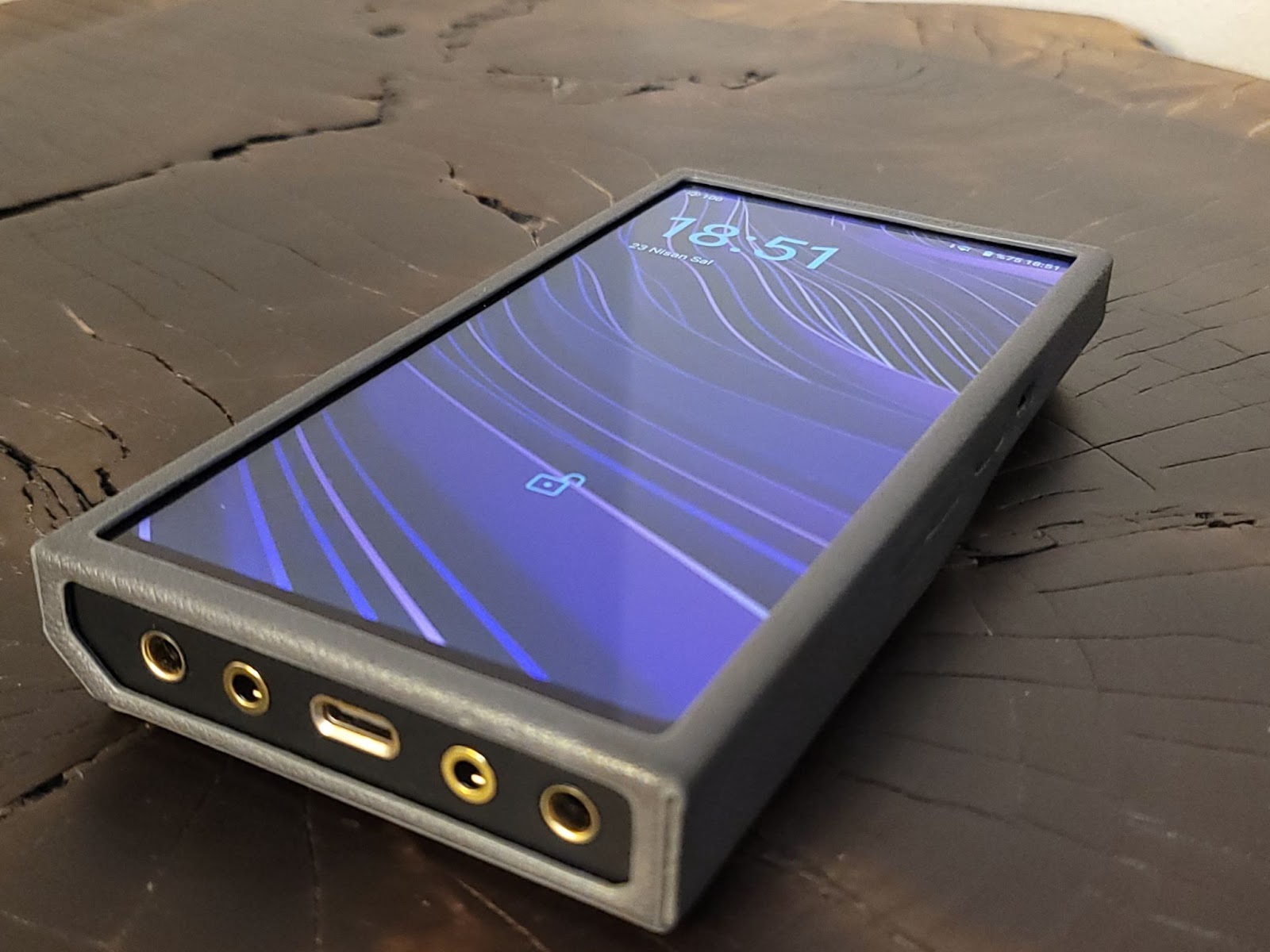
I bought R6 Pro II with my own money from a friend pre-used so, of course I didn’t pay the full price if that matters. I have been using the device for some time as my personal unit, therefore review includes my own long term user experience as well. As I always say, everyone is biased one way or another so take everything you read with a grain of salt. Also I will try to be more concise and to the point in my reviews from now on without worrying about the word count etc. If you have any questions, please ask me in the comments and I will try to answer them to the best of my abilities.
Hiby was founded in 2011 according to their website and has even more experience in the audio field apparently. They are mostly known for their Digital Audio Players but they also make DAC/Amps and earphones. However, what makes Hiby different from other manufacturers is their expertise in software. Their UIs, apps and connection protocol Hiby Link are used by even other brands.
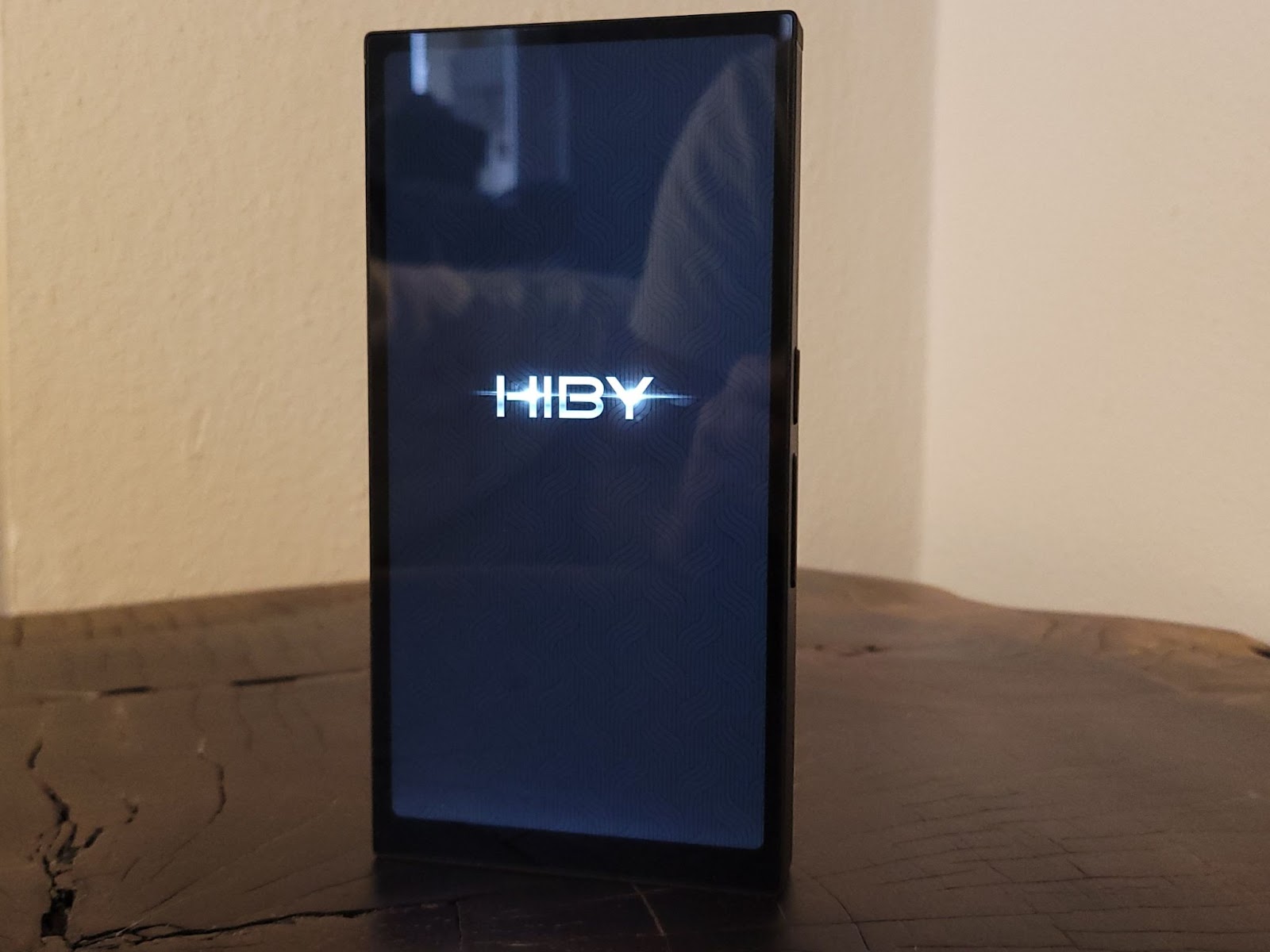
R6 Pro II comes with a rather modest packaging, still it doesn’t feel like missing anything. A leather protective case, spare screen and back glass protectors, a rather thick USB-C to USB-C cable and a USB-C to USB-A adapter is included in the package. Leather case feels sturdy and premium enough and has a great design feature that stretches and closes when the DAP is slid inside. After the loose DX300 case I used for a long time, it is a very welcome change.
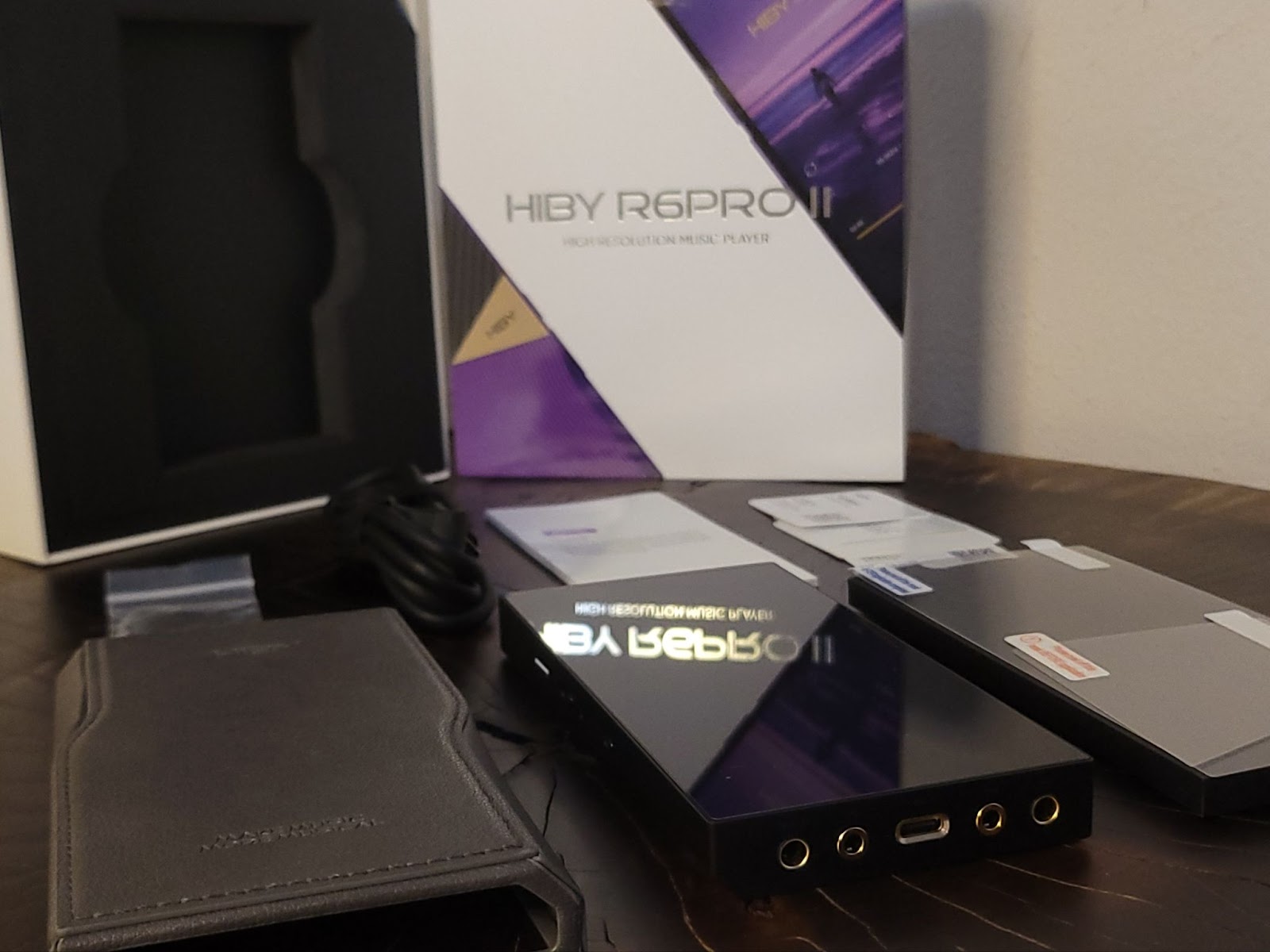
R6 Pro II is a hefty device. In fact it’s heftier than I first thought it would be, definitely more in line with +1k devices. It has a unique asymmetrical wavy design but not as esoteric as Astell&Kern devices. R6 Pro II comes in two colors: Purple and black. Purple comes with a purple case and black comes with a gray case. Honestly I would have liked to have the purple one instead.
Inside, the device used Asai Kasei’s latest DAC chip AK4499EX in dual formation along with their AK4191EQ delta-sigma modulator. Companies like to promote this modulator as another DAC chip but it really isn’t and if I’m not mistaken this modulator was embedded to older chips but in the latest AK4499EX they separated it from the DAC chip instead. Still these chips are flagships of the company and having them in a DAP that’s sold for 749 USD is quite a feat.
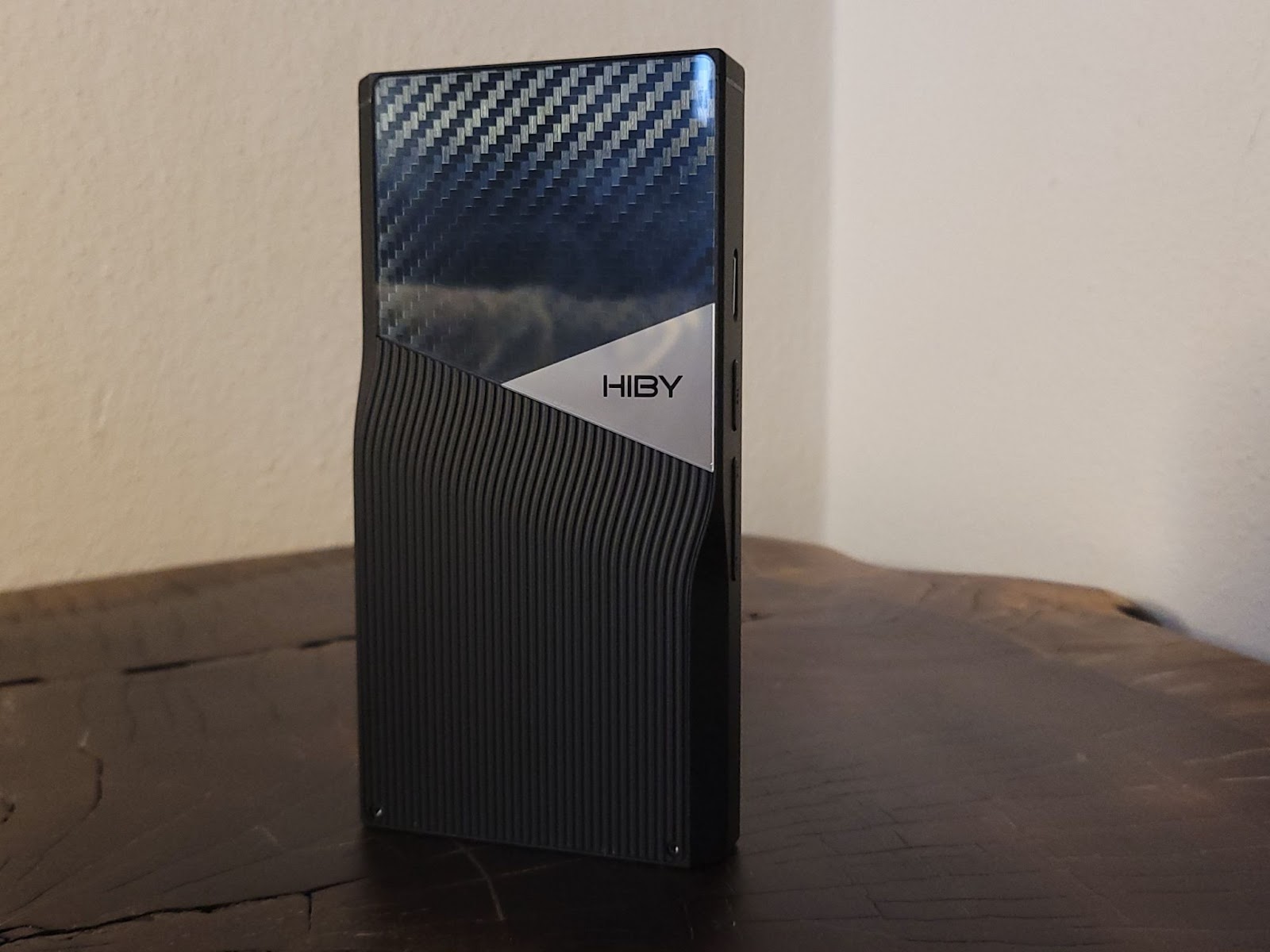
R6 Pro II runs Qualcomm’s Snapdragon 665 processor. While it’s not a flagship or the latest processor on the market, due to batch limitations, it was probably the best one they could offer. However I'm pretty sure it's the fastest processor that’s used in a DAP currently on the market. I had no problem with the operation of the device. It’s always smooth and responsive. Even one of my friends commented that it was faster than his phone.
Device has 4 GBs of RAM which is again enough for the intended use case and 64 GBs of internal storage. You can also add a micro SD card to increase the storage up to 2TBs for your music.
R6 Pro II has an independent amplification circuitry that can provide both class A amplification with dual OPA1652 op amps and class AB amplification. I will describe the differences later in its own section.
5.9” FHD+ screen with minimum bezel thickness gives R6 Pro II a sleek look but Hiby decided to feed all this hardware with 5000 mAh battery which yields suboptimal listening times.
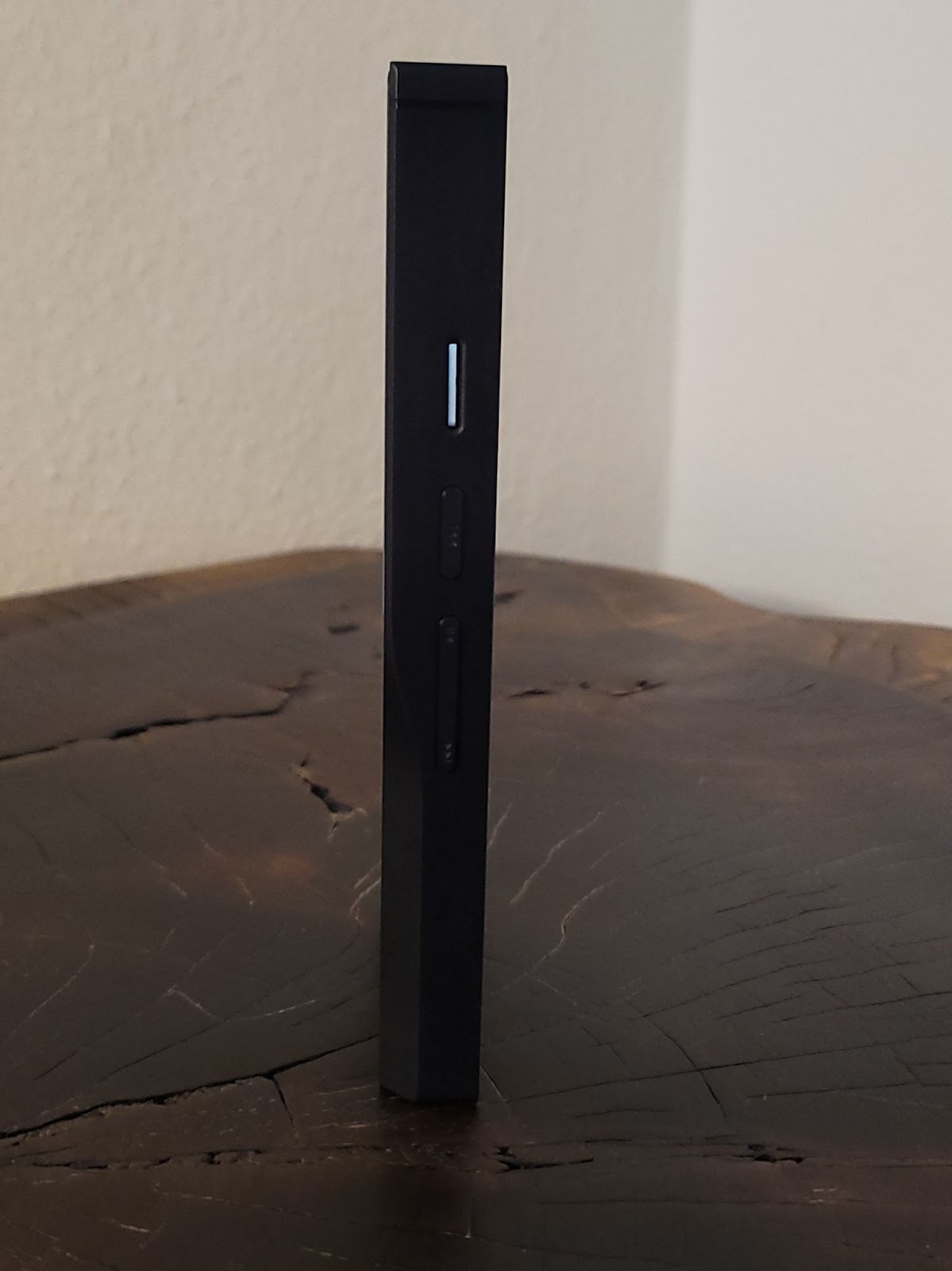
Lastly R6 Pro II supports the usual wireless and wired connectivity options, namely WiFi, Bluetooth 5.0, USB and Coaxial through USB-C output. Analog outputs include 3.5 mm single ended and 4.4 mm balanced. Line outs and phone outs are separated. Device also supports DLNA, Airplay and their own Hiby Link protocols as well as Hiby Cast remote control. It can render X16 MQA too, if that’s important for you. I’m pretty sure there are others I forgot to mention.
So all of these yields to virtually no distortion and noise. Battery life isn’t the best, I got 5 hours and 45 minutes of playing time with streaming in class A mode, low gain and balanced output at volume 50/100 which is louder than my usual listening level, with minimum screen usage. Website says R6 Pro II plays for 5 hours in balanced class A mode so info is more than real. It’s mostly enough for me but competitors offer more so there is that. Class A mode works slightly warm which is expected.
Amplification section isn’t very powerful but should be enough for almost all IEMs and a lot of headphones out there. Max single ended power output is 125 mW and balanced power output is 383 mW.
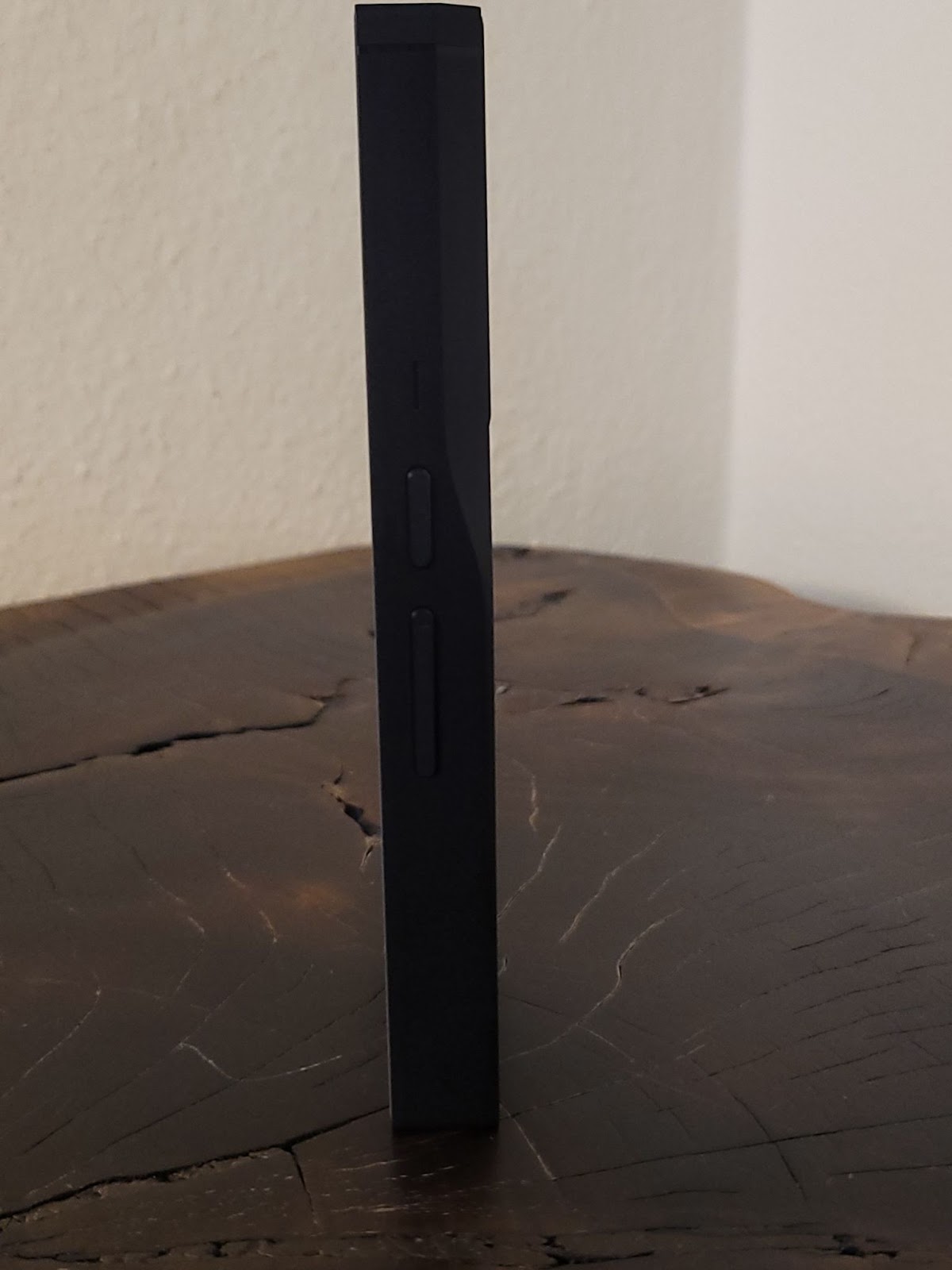
R6 Pro II uses an open Android 12.0 which means you can download any 3rd party apps you want and it should get app updates for quite a while. While Android 14 is out, 12.0 is the newest version among the current DAPs on the market if I’m not mistaken. Hiby Music comes pre-installed as the default music player and I didn’t need to use any other music app since I mostly stream my music.
UI is customized by Hiby for the intended use case. It is not too different from the usual Android experience but changing audio controls like adjusting gain and amplification type is especially very easy.
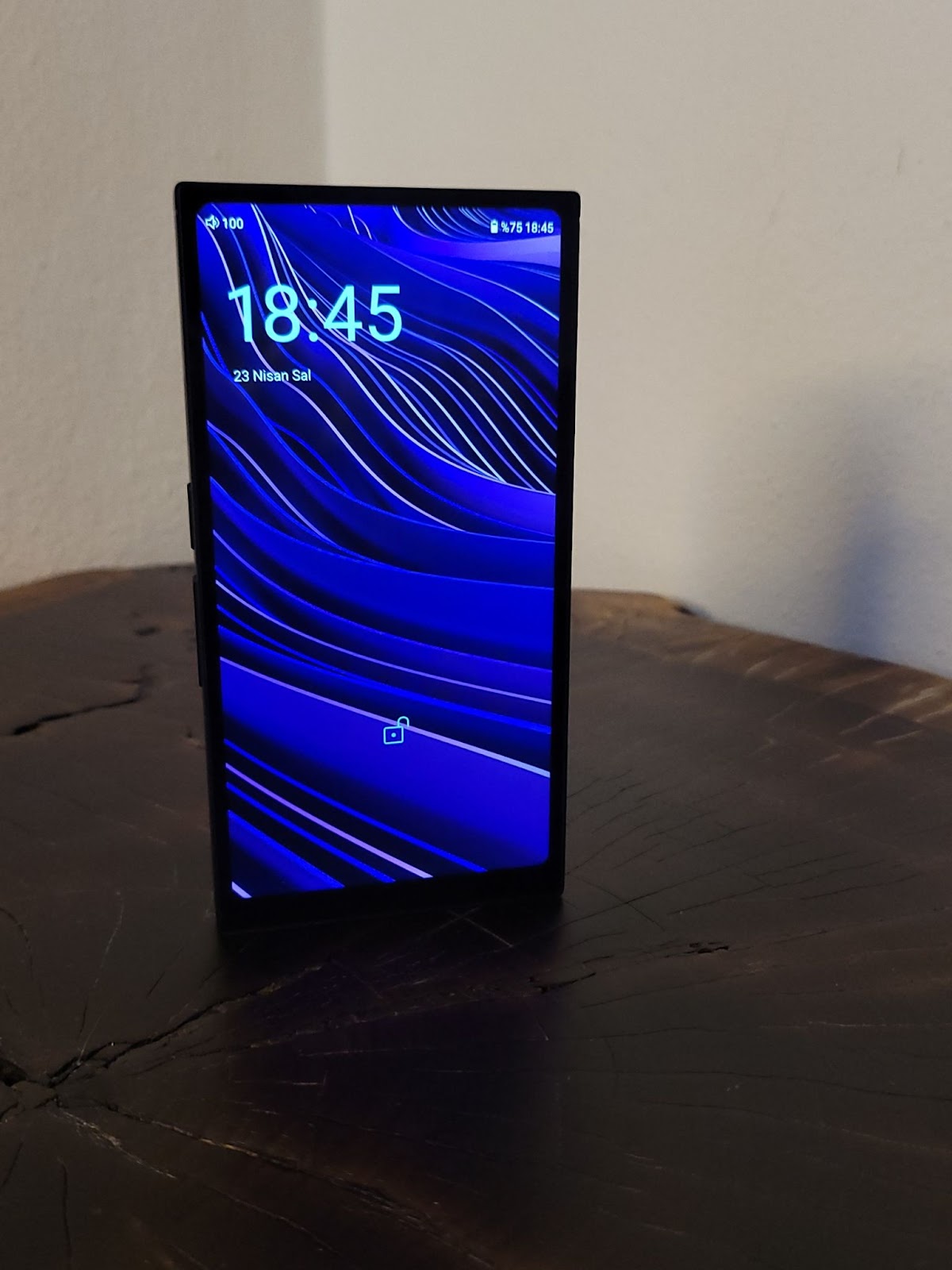
Hiby’s own MSEB (Mage Sound 8-ball Tuning) is an EQ based easy sound adjustment mechanism. If using EQ is intimidating for you, playing with MSEB can ease you into it. I think it’s a great feature. Here is the list that shows how each choice affects the sound:
1 -- Overall Temperature is a tilt of the whole line towards treble (cool) or bass (warm)
2 -- Bass extension 70Hz and below
3 -- Bass texture 100Hz (medium)
4 -- Note thickness 200Hz (wide)
5 -- Vocals 650Hz (very wide)
6 -- Female overtones 3kHz (tight)
7 -- Sibilance LF 5.8kHz (medium)
8 -- Sibilance HF 9.2kHz (medium)
9 -- Impulse response 7.5kHz (very wide)
10 - Air 10kHz sloped all the way to 20kHz
Other than that Hiby added Systemwide Parametric EQ to P6 Pro II along with some of their other DAPs with the latest updates. Actually groundwork was always there, MSEB used it after all, but they decided to give the freedom of choice to us. It has 9 bands and all the filters, not just peak filters. I tried different use cases and it worked with 3rd party apps and also digital out through USB. Looks like Hiby wants me to sell my RME Adi-2 DAC FS.
I don’t like describing the sound of the source gears with frequency response terms but I don’t really know a better way either. In the case of the R6 Pro II, in one word, it sounds focused. First thing I noticed when I started listening to it was how focused it was, especially the midrange. No region in frequency response was emphasized but if I were to name one highlighted area, it was the midrange.
The Midrange of the R6 Pro II is clean, crisp and sharp. Bass is neutral, just how I like it. I know we mostly judge the quality of a source gear by how it handles the bass and believe me it handles it well, especially in the class A mode but doesn’t particularly emphasize or highlight it. Treble is devoid of any digital glare or sharpness. So while I wouldn’t call R6 Pro II a warm source, if neutral normally has this kind of quirks for you, I guess you can call R6 Pro II a little warm.
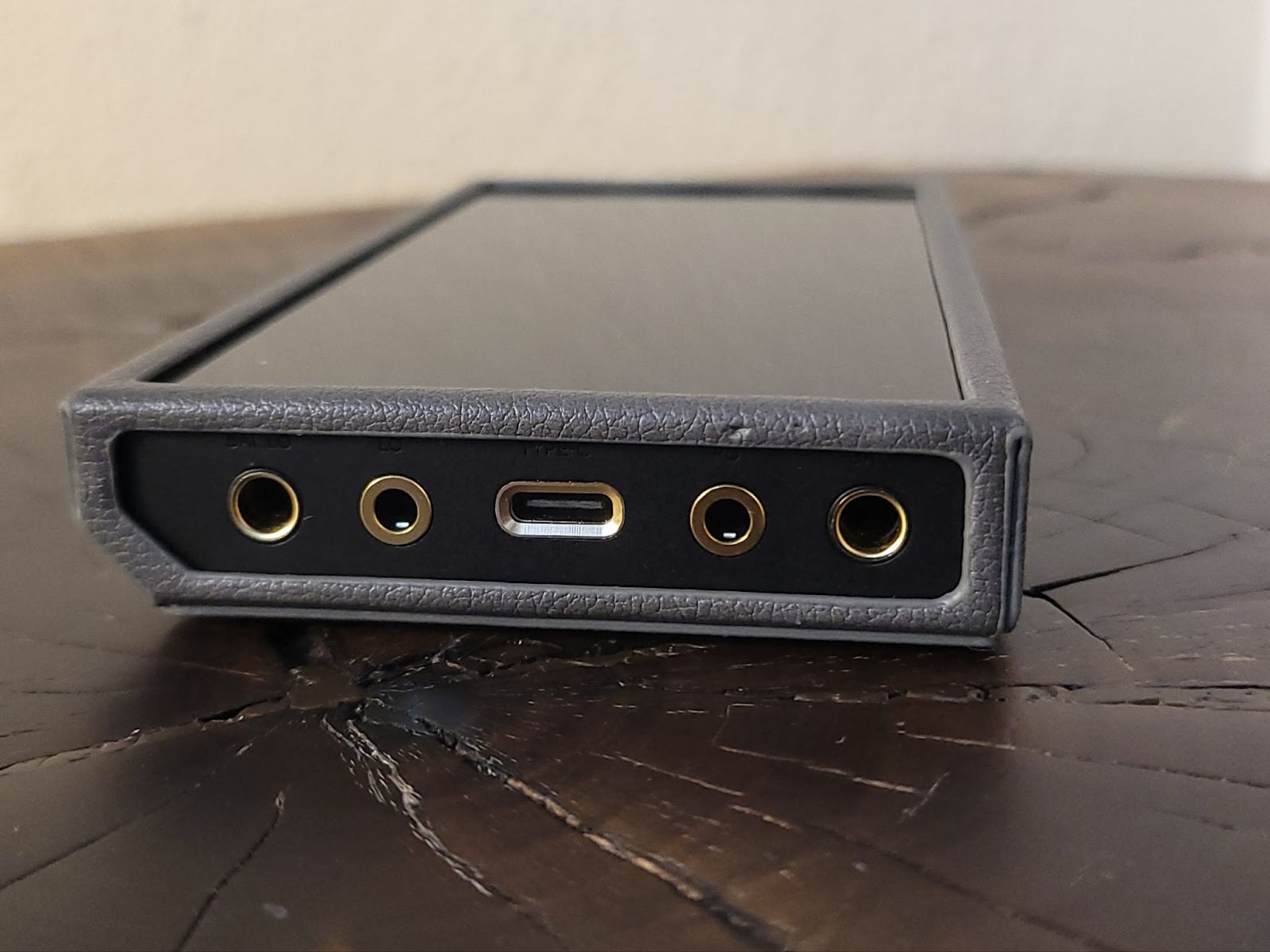
R6 Pro II is very resolving, more resolving than its peers. Its staging capabilities are also above average and the focus I kept rambling about makes imaging and layering especially sharp and precise. Timbre is very natural too. As usual comparisons should shed more light to what I mean.
Although Class A is definitely the way to go for me, depending on the situation you can choose to use Class AB too, to make the battery last longer or to have a more relaxing listening session.
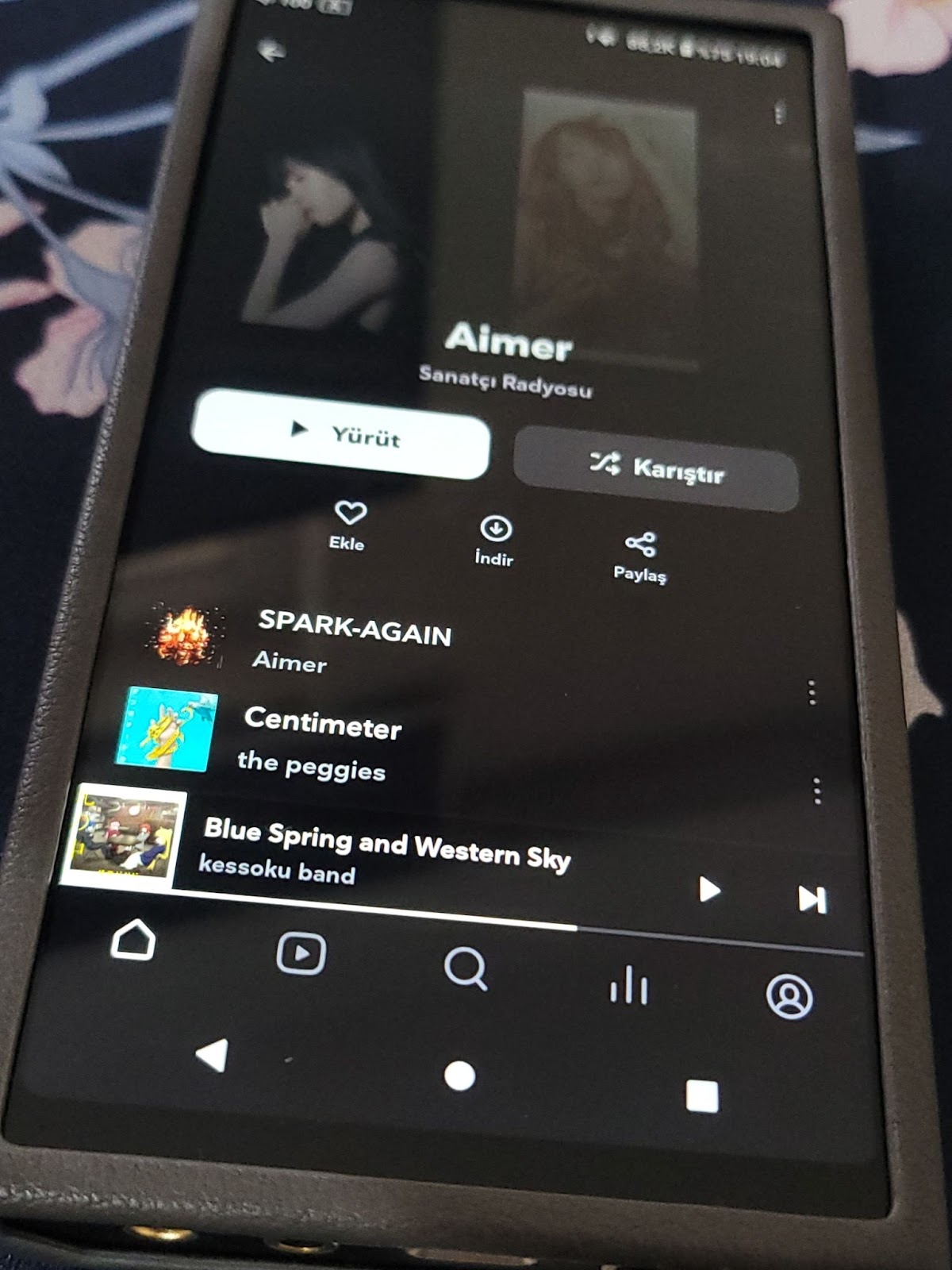
When I had the M11 Plus I briefly compared the two and sold the M11 Plus in the end. My findings were as follows.
All in all my desktop rig is more lively but R6 Pro II smooth and controlled.
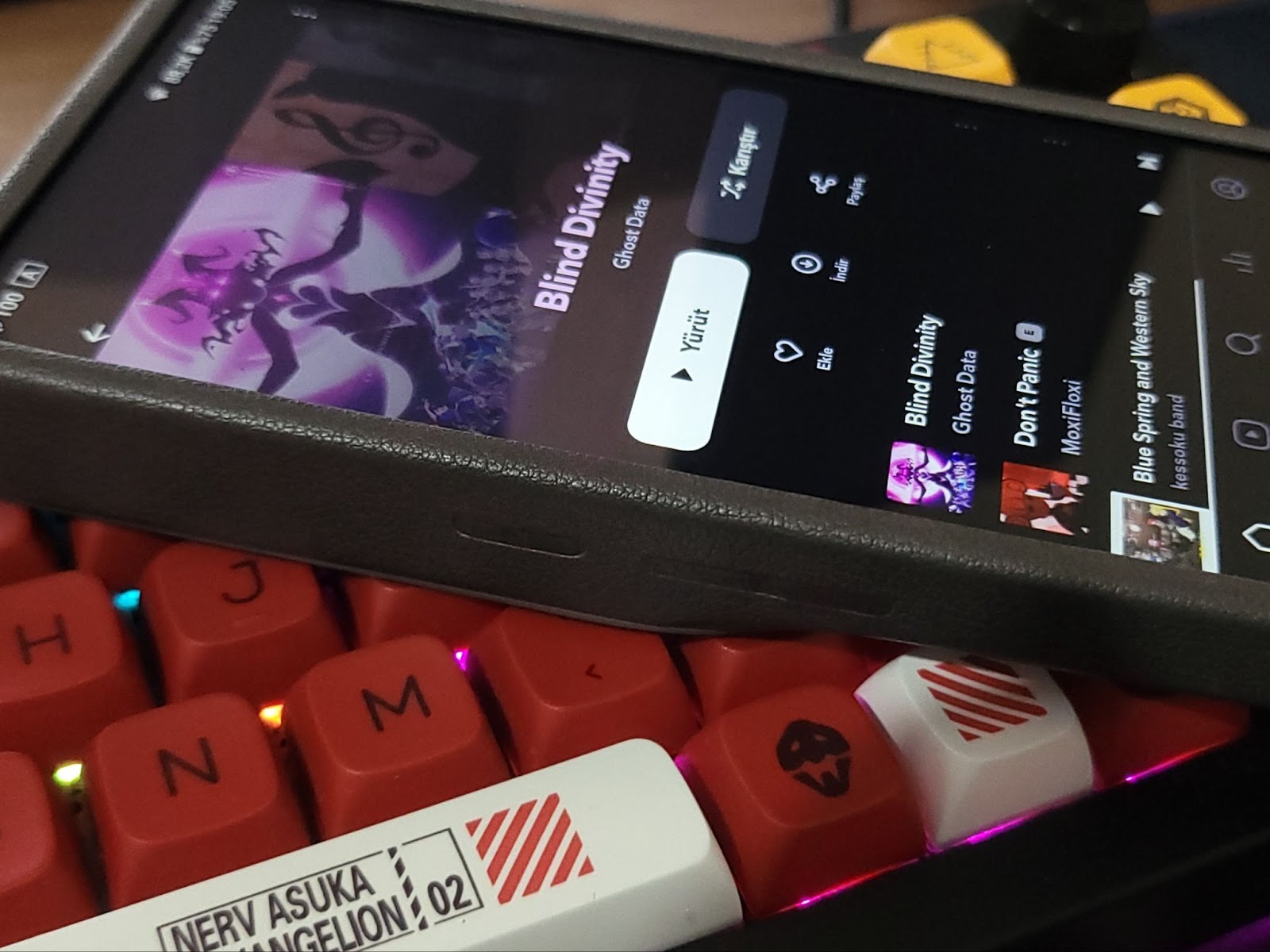
Hiby R6 Pro II was a device I have been very interested in since it was announced. I “degraded” from DX300 and never looked back. I also had FiiO M11 Plus LTD for a short while but didn’t feel any inclination to keep it. That’s how much I like my R6 Pro II. I knew what I was getting into. Yes power output is lower than other DAPs in its price range but I mostly use IEMs outside so it wasn’t a problem. Also I can only listen to music for a couple of hours at the office so battery life didn’t bother me too much either. Sound quality, the parts that have been used, futureproof OS and Parametric EQ already make this device a value proposition that’s too hard to pass.
Disclaimers
I bought R6 Pro II with my own money from a friend pre-used so, of course I didn’t pay the full price if that matters. I have been using the device for some time as my personal unit, therefore review includes my own long term user experience as well. As I always say, everyone is biased one way or another so take everything you read with a grain of salt. Also I will try to be more concise and to the point in my reviews from now on without worrying about the word count etc. If you have any questions, please ask me in the comments and I will try to answer them to the best of my abilities.
About Hiby
Hiby was founded in 2011 according to their website and has even more experience in the audio field apparently. They are mostly known for their Digital Audio Players but they also make DAC/Amps and earphones. However, what makes Hiby different from other manufacturers is their expertise in software. Their UIs, apps and connection protocol Hiby Link are used by even other brands.
Packaging of R6 Pro II
R6 Pro II comes with a rather modest packaging, still it doesn’t feel like missing anything. A leather protective case, spare screen and back glass protectors, a rather thick USB-C to USB-C cable and a USB-C to USB-A adapter is included in the package. Leather case feels sturdy and premium enough and has a great design feature that stretches and closes when the DAP is slid inside. After the loose DX300 case I used for a long time, it is a very welcome change.
Hardware of R6 Pro II
R6 Pro II is a hefty device. In fact it’s heftier than I first thought it would be, definitely more in line with +1k devices. It has a unique asymmetrical wavy design but not as esoteric as Astell&Kern devices. R6 Pro II comes in two colors: Purple and black. Purple comes with a purple case and black comes with a gray case. Honestly I would have liked to have the purple one instead.
Inside, the device used Asai Kasei’s latest DAC chip AK4499EX in dual formation along with their AK4191EQ delta-sigma modulator. Companies like to promote this modulator as another DAC chip but it really isn’t and if I’m not mistaken this modulator was embedded to older chips but in the latest AK4499EX they separated it from the DAC chip instead. Still these chips are flagships of the company and having them in a DAP that’s sold for 749 USD is quite a feat.
R6 Pro II runs Qualcomm’s Snapdragon 665 processor. While it’s not a flagship or the latest processor on the market, due to batch limitations, it was probably the best one they could offer. However I'm pretty sure it's the fastest processor that’s used in a DAP currently on the market. I had no problem with the operation of the device. It’s always smooth and responsive. Even one of my friends commented that it was faster than his phone.
Device has 4 GBs of RAM which is again enough for the intended use case and 64 GBs of internal storage. You can also add a micro SD card to increase the storage up to 2TBs for your music.
R6 Pro II has an independent amplification circuitry that can provide both class A amplification with dual OPA1652 op amps and class AB amplification. I will describe the differences later in its own section.
5.9” FHD+ screen with minimum bezel thickness gives R6 Pro II a sleek look but Hiby decided to feed all this hardware with 5000 mAh battery which yields suboptimal listening times.
Lastly R6 Pro II supports the usual wireless and wired connectivity options, namely WiFi, Bluetooth 5.0, USB and Coaxial through USB-C output. Analog outputs include 3.5 mm single ended and 4.4 mm balanced. Line outs and phone outs are separated. Device also supports DLNA, Airplay and their own Hiby Link protocols as well as Hiby Cast remote control. It can render X16 MQA too, if that’s important for you. I’m pretty sure there are others I forgot to mention.
So all of these yields to virtually no distortion and noise. Battery life isn’t the best, I got 5 hours and 45 minutes of playing time with streaming in class A mode, low gain and balanced output at volume 50/100 which is louder than my usual listening level, with minimum screen usage. Website says R6 Pro II plays for 5 hours in balanced class A mode so info is more than real. It’s mostly enough for me but competitors offer more so there is that. Class A mode works slightly warm which is expected.
Amplification section isn’t very powerful but should be enough for almost all IEMs and a lot of headphones out there. Max single ended power output is 125 mW and balanced power output is 383 mW.
Software and UI
R6 Pro II uses an open Android 12.0 which means you can download any 3rd party apps you want and it should get app updates for quite a while. While Android 14 is out, 12.0 is the newest version among the current DAPs on the market if I’m not mistaken. Hiby Music comes pre-installed as the default music player and I didn’t need to use any other music app since I mostly stream my music.
UI is customized by Hiby for the intended use case. It is not too different from the usual Android experience but changing audio controls like adjusting gain and amplification type is especially very easy.
Hiby’s own MSEB (Mage Sound 8-ball Tuning) is an EQ based easy sound adjustment mechanism. If using EQ is intimidating for you, playing with MSEB can ease you into it. I think it’s a great feature. Here is the list that shows how each choice affects the sound:
1 -- Overall Temperature is a tilt of the whole line towards treble (cool) or bass (warm)
2 -- Bass extension 70Hz and below
3 -- Bass texture 100Hz (medium)
4 -- Note thickness 200Hz (wide)
5 -- Vocals 650Hz (very wide)
6 -- Female overtones 3kHz (tight)
7 -- Sibilance LF 5.8kHz (medium)
8 -- Sibilance HF 9.2kHz (medium)
9 -- Impulse response 7.5kHz (very wide)
10 - Air 10kHz sloped all the way to 20kHz
Other than that Hiby added Systemwide Parametric EQ to P6 Pro II along with some of their other DAPs with the latest updates. Actually groundwork was always there, MSEB used it after all, but they decided to give the freedom of choice to us. It has 9 bands and all the filters, not just peak filters. I tried different use cases and it worked with 3rd party apps and also digital out through USB. Looks like Hiby wants me to sell my RME Adi-2 DAC FS.
Sound of Hiby R6 Pro II
I don’t like describing the sound of the source gears with frequency response terms but I don’t really know a better way either. In the case of the R6 Pro II, in one word, it sounds focused. First thing I noticed when I started listening to it was how focused it was, especially the midrange. No region in frequency response was emphasized but if I were to name one highlighted area, it was the midrange.
The Midrange of the R6 Pro II is clean, crisp and sharp. Bass is neutral, just how I like it. I know we mostly judge the quality of a source gear by how it handles the bass and believe me it handles it well, especially in the class A mode but doesn’t particularly emphasize or highlight it. Treble is devoid of any digital glare or sharpness. So while I wouldn’t call R6 Pro II a warm source, if neutral normally has this kind of quirks for you, I guess you can call R6 Pro II a little warm.
R6 Pro II is very resolving, more resolving than its peers. Its staging capabilities are also above average and the focus I kept rambling about makes imaging and layering especially sharp and precise. Timbre is very natural too. As usual comparisons should shed more light to what I mean.
Class A vs. Class AB
- Biggest difference is in the bass notes. Class A is more incisive in its attack. It also sounds bolder and more confident, AB, compared to that is softer.
- Class A has sharper and more focused imaging and separation. It makes Class A resolve the nuances easier too. Class A also might be slightly more spacious but it’s hard to tell.
Although Class A is definitely the way to go for me, depending on the situation you can choose to use Class AB too, to make the battery last longer or to have a more relaxing listening session.
R6 Pro II vs. Fiio M11 Plus LTD
When I had the M11 Plus I briefly compared the two and sold the M11 Plus in the end. My findings were as follows.
- Bass was more emphasized on Fiio with more heft and body to it.
- Timbre was the most apparent difference between the two, R6 Pro II being more natural, especially the midrange on the R6 Pro II sounds better with more focus.
- Imaging was sharper on R6 Pro II and staging was more enveloping.
- Other than sound differences, R6 Pro II uses a newer processor, OS and DAC chip. With the latest update R6 Pro II got systemwide Parametric EQ too.
Desktop Rig (Monolith Liquid Platinum DAC and Amp Section of Yulong Da-art Aurora)
- Desktop Rig has more handling power on tap and bass is even more authoritative.
- Desktop Rig also has better staging.
- R6 Pro II is smoother and more controlled in the treble.
- Desktop Rig is more resolving and has better layering and separation capabilities.
All in all my desktop rig is more lively but R6 Pro II smooth and controlled.
Conclusion
Hiby R6 Pro II was a device I have been very interested in since it was announced. I “degraded” from DX300 and never looked back. I also had FiiO M11 Plus LTD for a short while but didn’t feel any inclination to keep it. That’s how much I like my R6 Pro II. I knew what I was getting into. Yes power output is lower than other DAPs in its price range but I mostly use IEMs outside so it wasn’t a problem. Also I can only listen to music for a couple of hours at the office so battery life didn’t bother me too much either. Sound quality, the parts that have been used, futureproof OS and Parametric EQ already make this device a value proposition that’s too hard to pass.
Last edited:
Jarlaxle
100+ Head-Fier
Pros: Good build for the price
Abundace of the tips included
Clean neutral tuning
Good timbre
Very good staging
Abundace of the tips included
Clean neutral tuning
Good timbre
Very good staging
Cons: Cable isn't replaceable
Bass might be lacking for most people
Treble could have been smoother and extended more
Bass might be lacking for most people
Treble could have been smoother and extended more
Hifiman is mostly known for their open-back planar magnetic headphones and I myself own 3 pairs. As you may already know, almost all of their headphone offerings have become benchmarks in their respective price ranges. Other than headphones, they make IEMs, digital to analog converters, amplifiers and digital music players which are more or less successful in their own right and this is a review of one such product: their bullet style IEMs RE-400.
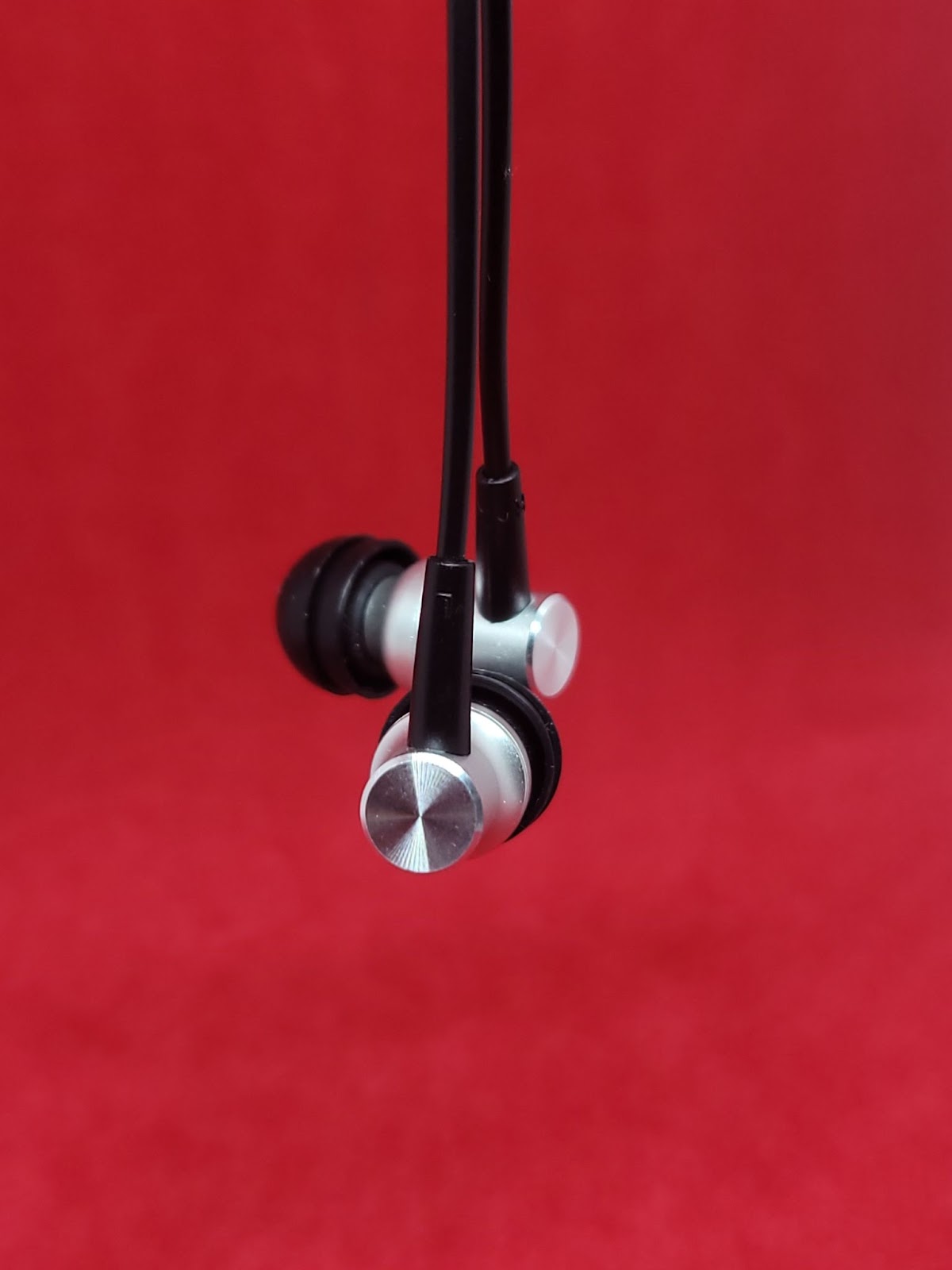
RE-400 is their cheapest IEMs as of now and although the original price for it was 79.00 USD when it first came out, now it’s sold for 19.99 USD on their official site and Amazon.
Hifiman RE-400 was provided to me by Hifiman for free and I only paid for the customs fee. As I always say, everyone is biased one way or another so take everything you read with a grain of salt. Also I will try to be more concise and to the point in my reviews from now on without worrying about the word count etc. If you have any questions, please ask me in the comments and I will try to answer them to the best of my abilities.
Shells of the RE-400 are bullet shaped and relatively small. Not as small as Final Audio E series IEMs, but still very comfortable. As materials used, they are made out of aluminum, not the smoothest aluminum out there, but still feels premium especially for the price.The cable which is fabric coated below the splitter by the way, isn’t replaceable and has some memory unfortunately. Cable termination is 3.5 mm single ended and angled.
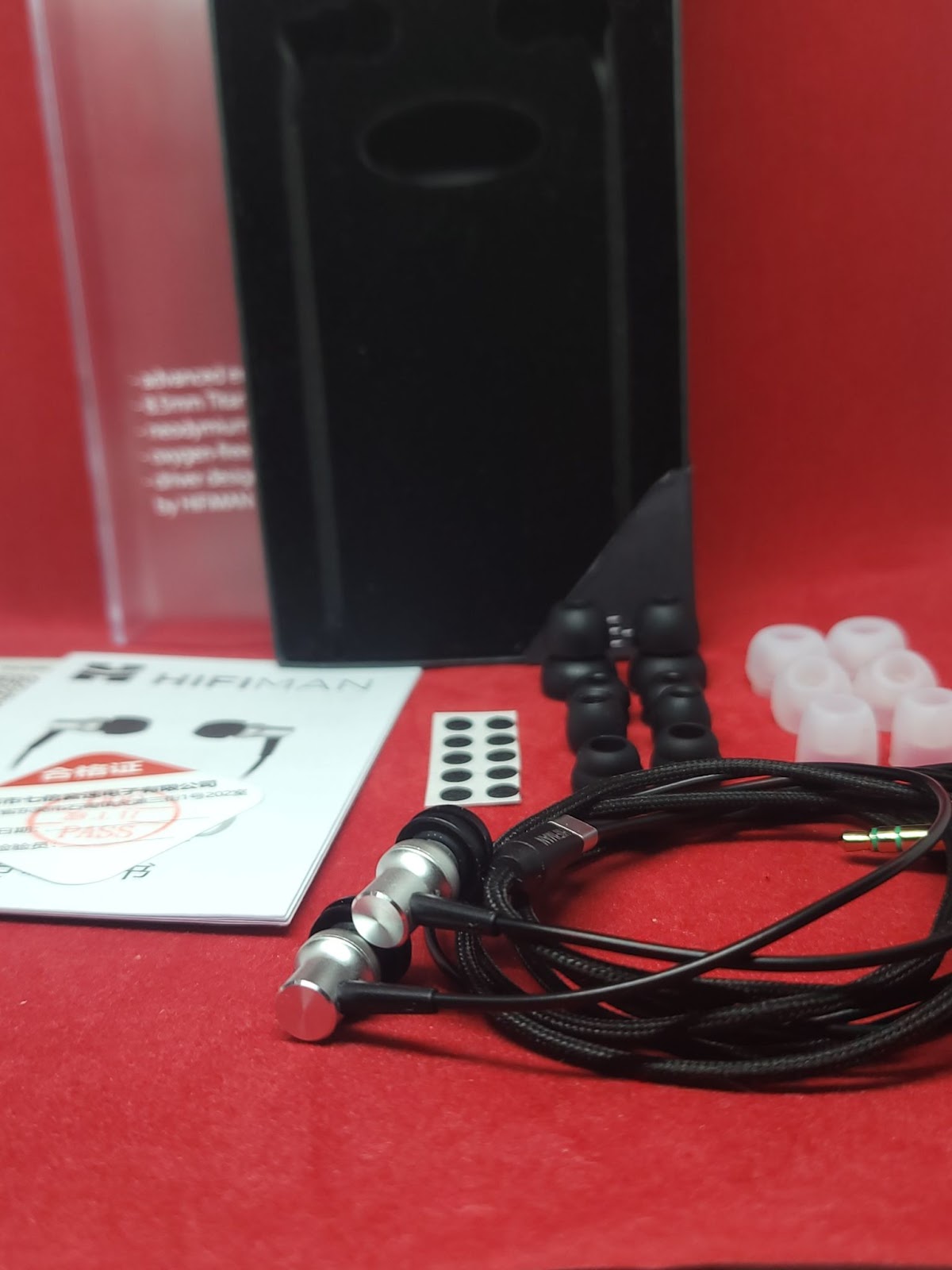
RE-400 comes in a compact plexiglass packaging. It doesn’t look too cheap and they probably decided to increase the contents along the way since there is also a bag of accessories that comes with it. Apart from the IEMs, you get a carrying case and 8 pairs of different eartips. I mostly used double flanged ones in my testing.
RE-400 has a neutral tuning, almost like an average Etymotic. It isn’t particularly devoid of bass but there is not too much of it to speak of. As a character, the bass is relatively fast and tight.
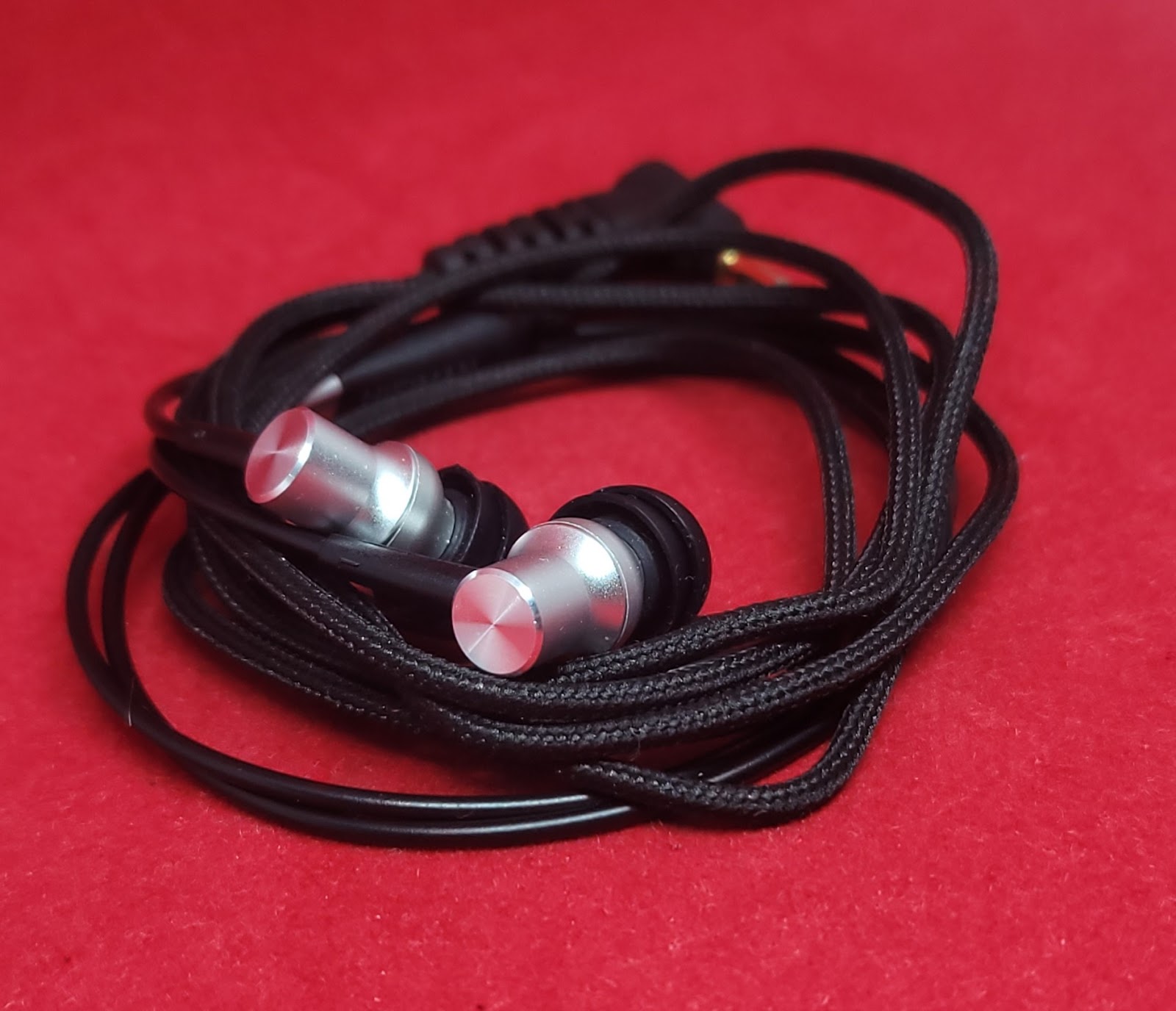
Mids are very clean and clear but also a little lean. Vocals mostly keep their distance. In this sense, RE-400 kind of sounds almost like their open-back planar magnetic headphones.
There is no harshness in the treble region but it also isn’t very smooth. There are narrow peaks you notice occasionally and treble extension isn’t great either.
The most impressive aspect of RE-400 is its staging capability. Stage expands sideways and it creates an interesting hall effect. In fact, it was the first thing I noticed as soon as I put them in my ears. Imaging is also pretty good.
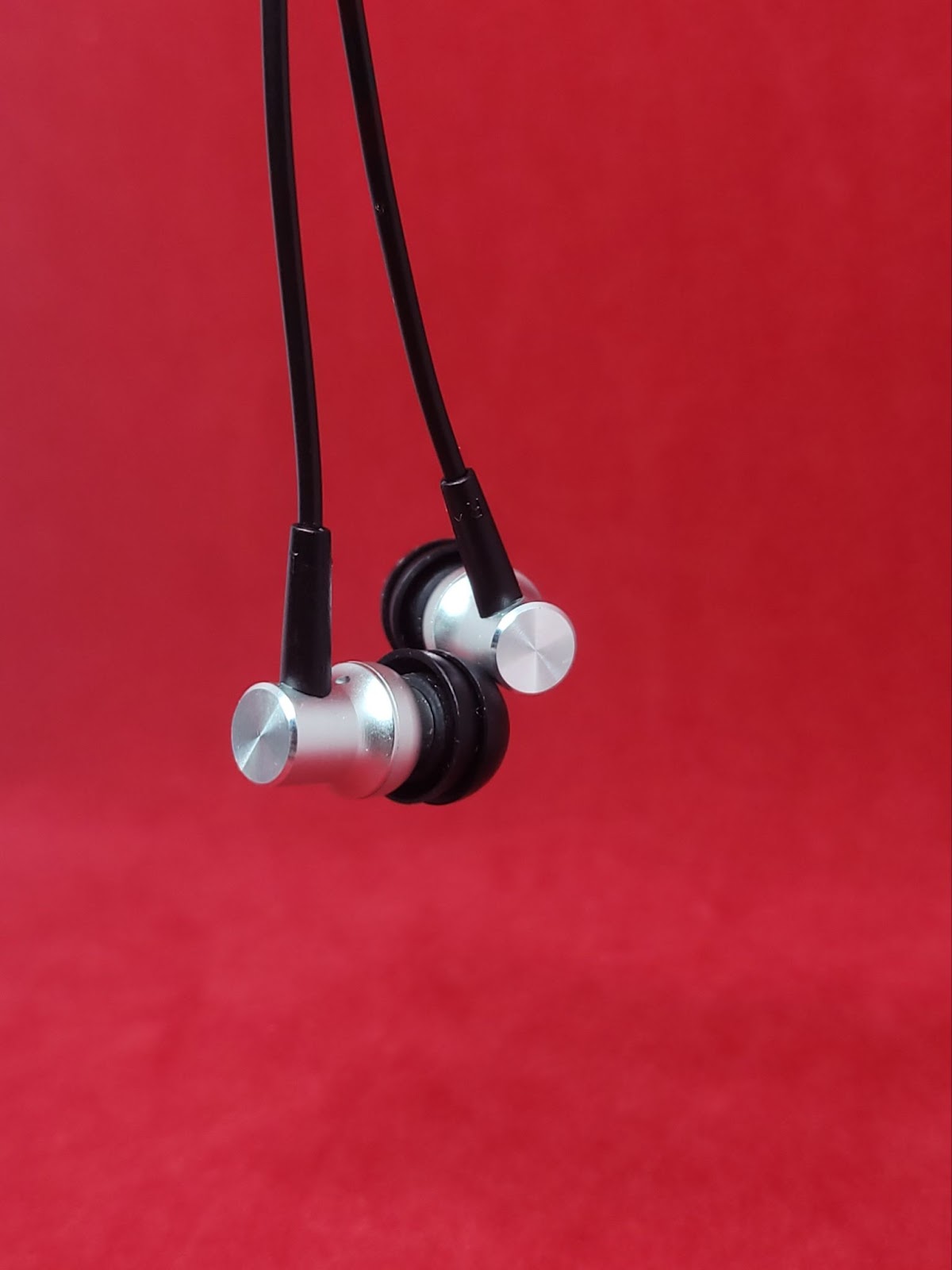
RE-400 sounds kind of dry but other than that timbre is mostly fine, nothing jumps out as unnatural. Lack of extension kind of hampers the rendering capability but at this price, I won’t complain too much. As always comparisons shed more light to how RE-400 sounds.
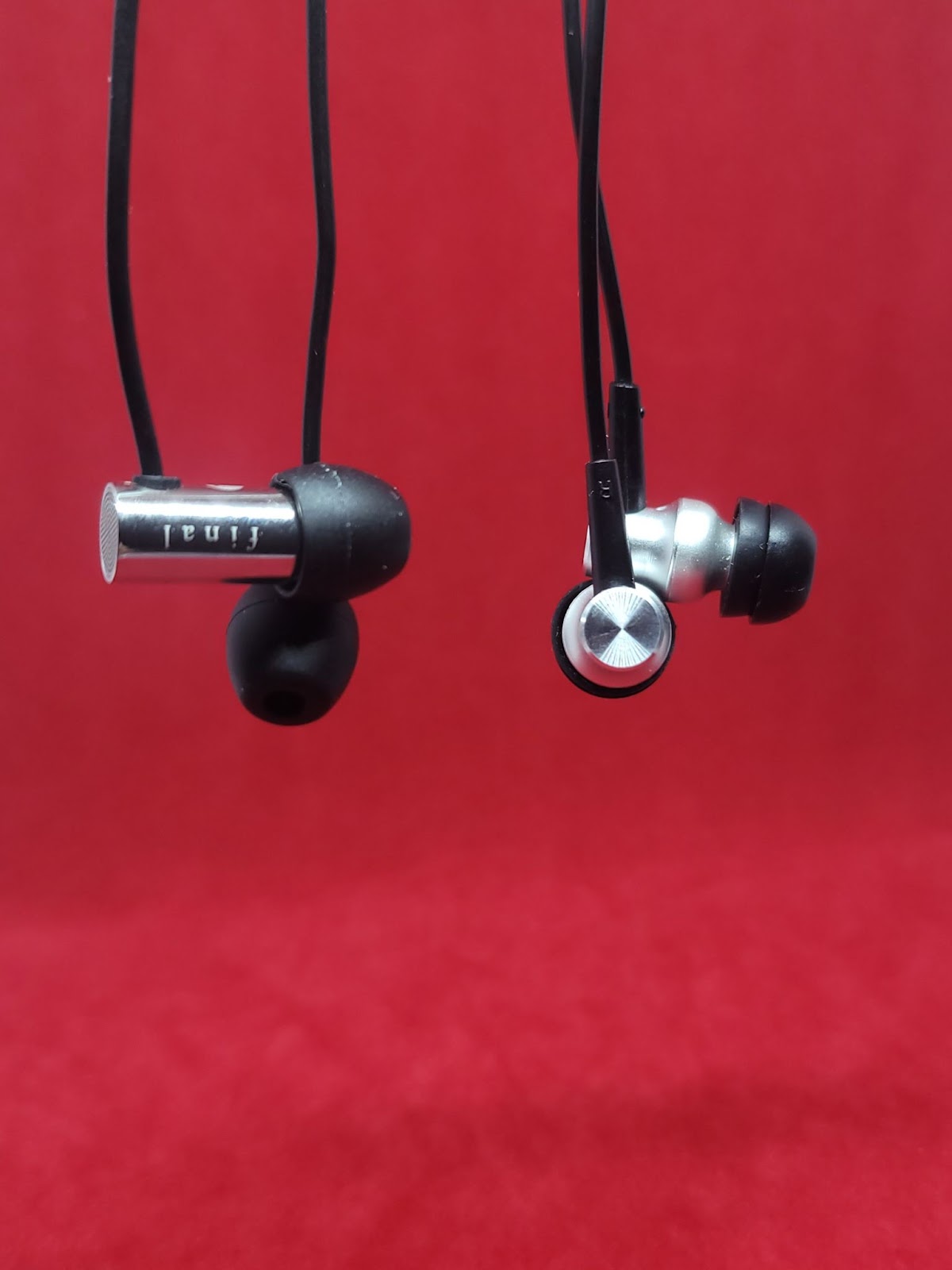
Volume Matched at 1 kHz
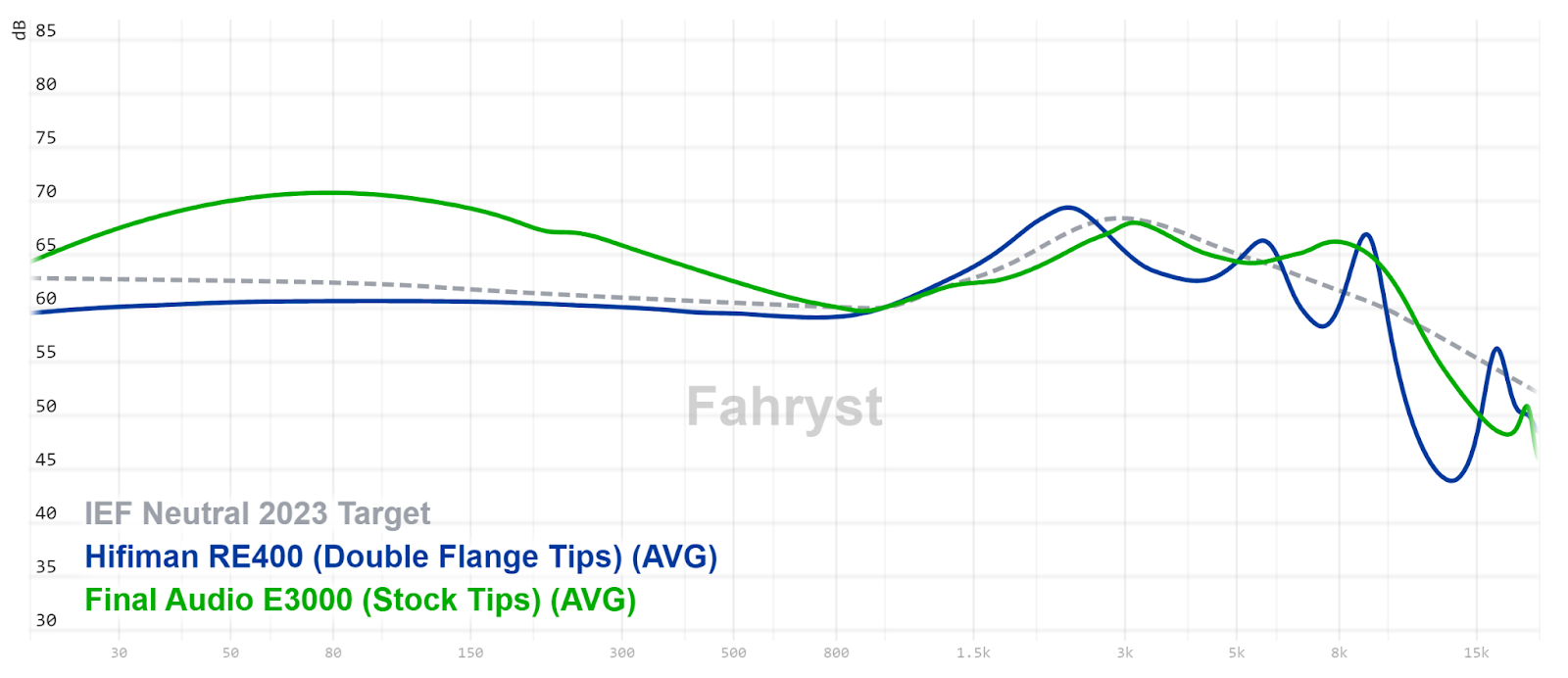
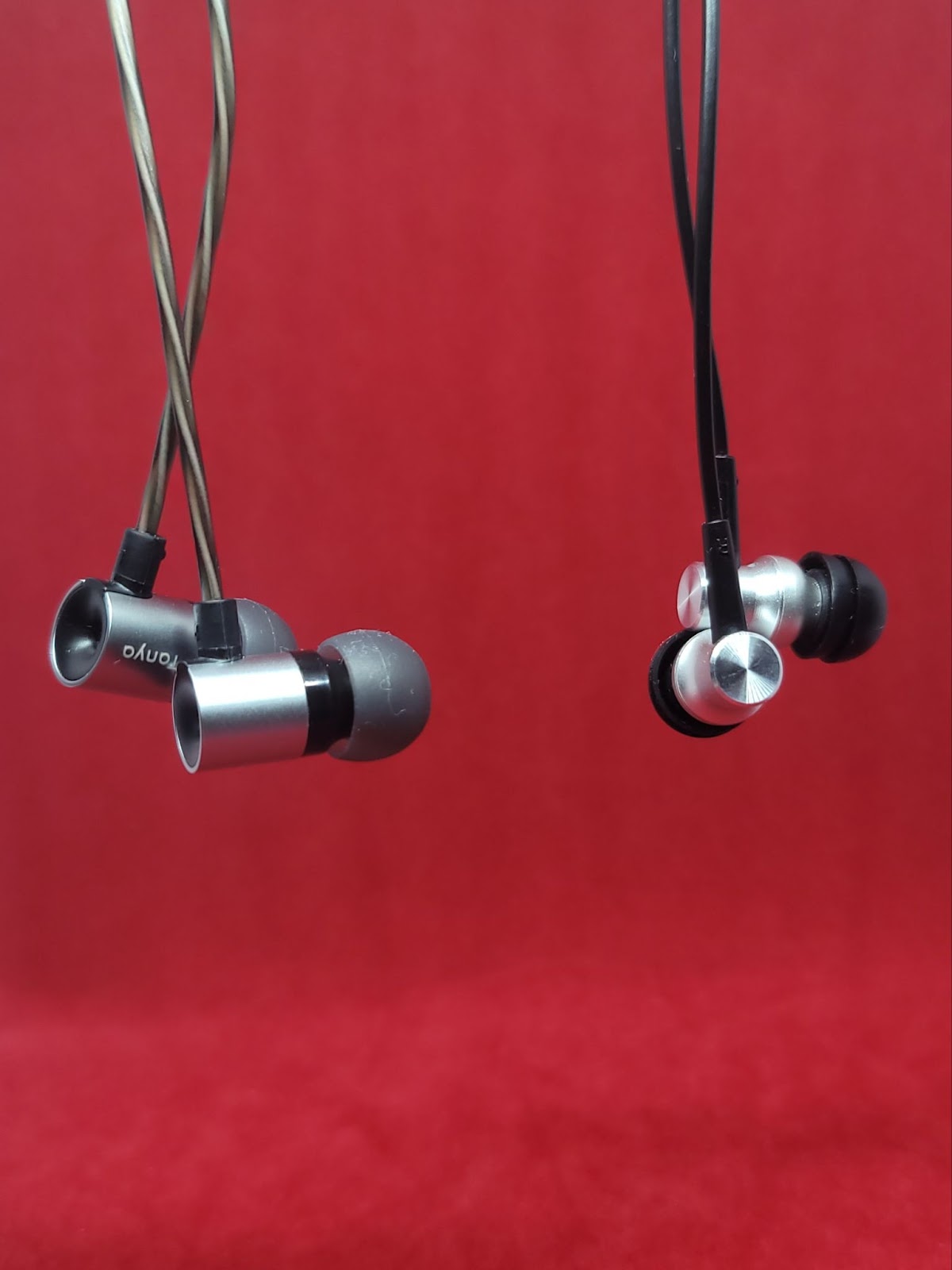
Volume Matched at 500 Hz
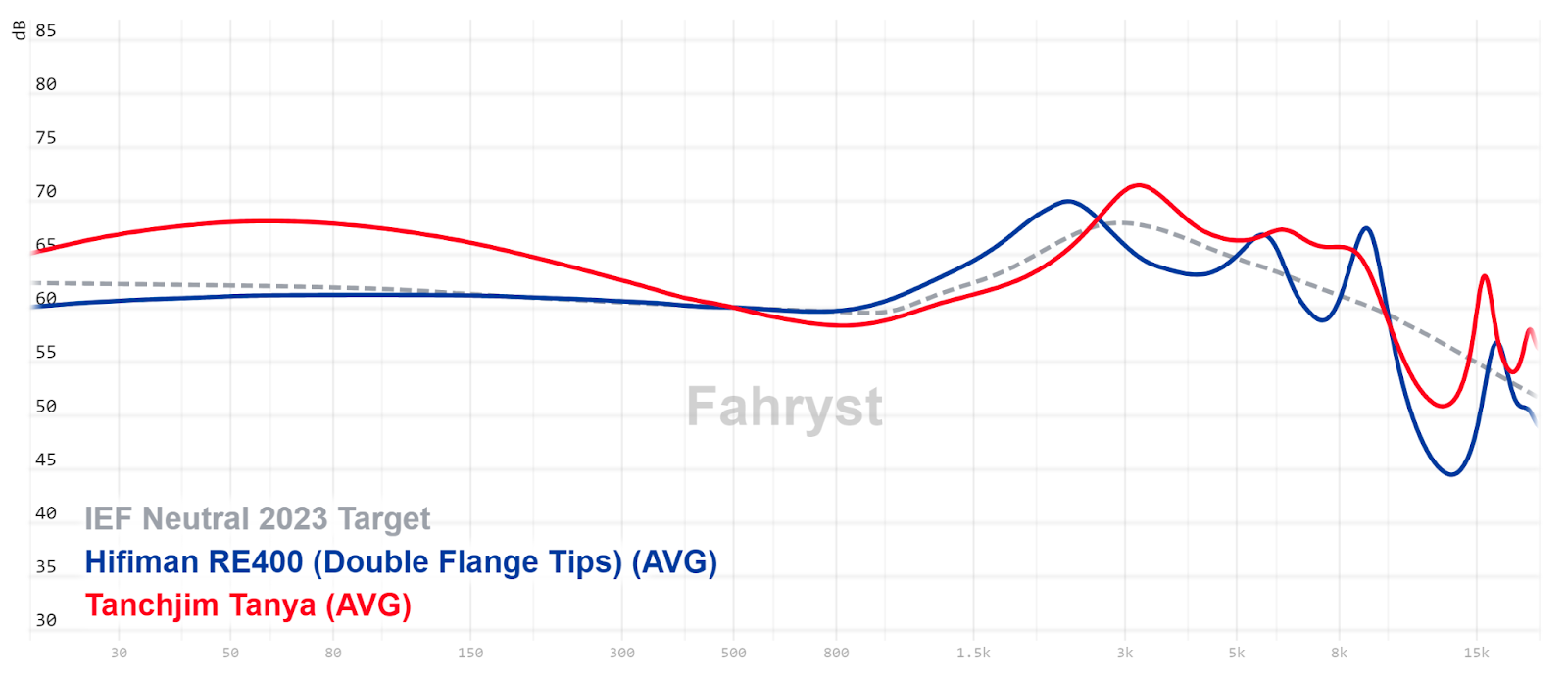
I wasn’t expecting too much from the Hifiman RE-400 but I was pleasantly surprised. It doesn’t set the world on fire, no, however for the price now it sells, it’s hard to make an argument against it. Especially in a market that is flooded with V-Shaped and Harman tuned IEMs, it feels fresh with its clean neutral tuning and the interesting hall effect it creates. All in all, maybe not at the full price, but for 19.99 USD, I think RE-400 deserves a place in everyone’s collection.
RE-400 is their cheapest IEMs as of now and although the original price for it was 79.00 USD when it first came out, now it’s sold for 19.99 USD on their official site and Amazon.
Disclaimers
Hifiman RE-400 was provided to me by Hifiman for free and I only paid for the customs fee. As I always say, everyone is biased one way or another so take everything you read with a grain of salt. Also I will try to be more concise and to the point in my reviews from now on without worrying about the word count etc. If you have any questions, please ask me in the comments and I will try to answer them to the best of my abilities.
Build and Accessories of Hifiman RE-400
Shells of the RE-400 are bullet shaped and relatively small. Not as small as Final Audio E series IEMs, but still very comfortable. As materials used, they are made out of aluminum, not the smoothest aluminum out there, but still feels premium especially for the price.The cable which is fabric coated below the splitter by the way, isn’t replaceable and has some memory unfortunately. Cable termination is 3.5 mm single ended and angled.
RE-400 comes in a compact plexiglass packaging. It doesn’t look too cheap and they probably decided to increase the contents along the way since there is also a bag of accessories that comes with it. Apart from the IEMs, you get a carrying case and 8 pairs of different eartips. I mostly used double flanged ones in my testing.
Sound of Hifiman RE-400
Tonality
RE-400 has a neutral tuning, almost like an average Etymotic. It isn’t particularly devoid of bass but there is not too much of it to speak of. As a character, the bass is relatively fast and tight.
Mids are very clean and clear but also a little lean. Vocals mostly keep their distance. In this sense, RE-400 kind of sounds almost like their open-back planar magnetic headphones.
There is no harshness in the treble region but it also isn’t very smooth. There are narrow peaks you notice occasionally and treble extension isn’t great either.
Technicalities
The most impressive aspect of RE-400 is its staging capability. Stage expands sideways and it creates an interesting hall effect. In fact, it was the first thing I noticed as soon as I put them in my ears. Imaging is also pretty good.
RE-400 sounds kind of dry but other than that timbre is mostly fine, nothing jumps out as unnatural. Lack of extension kind of hampers the rendering capability but at this price, I won’t complain too much. As always comparisons shed more light to how RE-400 sounds.
Comparisons
Hifiman RE-400 vs Final Audio E3000
Volume Matched at 1 kHz
- E3000 is much warmer, has much more bass and subbass than RE-400. However, the E3000's bass is more pillowy. RE-400 isn’t really devoid of bass and it’s tighter.
- RE-400 is much cleaner.
- Vocals are more forward on E3000. RE-400 leaves room to breathe.
- Neither is harsh. E3000 has a better treble extension but that might also be because of the deeper insertion it provides. RE-400 rolls off earlier in the upper treble.
- RE-400 has a wide spacious sound and interesting hall effect. E3000 on the other hand, also has a very tangible staging and it feels like you are in the studio with the artists. Both have their stages expanding to the sides but RE-400 is wider. Imaging is very precise on both.
- Personally I find overly warm iems suffocating. On that note RE-400 feels fresher for me.
- Both have decent timbral qualities but RE-400’s timbre is more lifelike. E3000 warmth skews the balance a little too much.
- E3000 renders more details but warmth drowns a big part of these details so RE-400 might come as more revealing to most.
Hifiman RE-400 vs Tanchjim Tanya
Hifiman RE-400 vs Tanchjim Tanya
Volume Matched at 500 Hz
- Tanya is V-Shaped while RE-400 is neutral. Again Tanya is warmer but it also has upper mids presence so vocals are slightly more forward. Vocals on RE-400, although not too recessed, aren’t too close and personal either.
- Bass on Tanya is also more impactful and extends deeper.
- Although Tanya is shoutier, neither is necessarily harsh.
- Treble on Tanya is noticeably better. It has good energy and is smooth at the same time; pretty much on point and it has better extension too. RE-400’s treble sounds blunted compared to Tanya’s.
- Tanya’s timbre is objectively better but I find RE-400’s timbre somewhat more agreeable. Maybe Tanya's shoutiness affects my perception.
- Tanya is more detailed by a good margin. Staging is extraordinary on RE-400. It expands wider than Tanya’s headstage but Tanya’s stage is deeper. RE-400’s imaging is also better.
Conclusion
I wasn’t expecting too much from the Hifiman RE-400 but I was pleasantly surprised. It doesn’t set the world on fire, no, however for the price now it sells, it’s hard to make an argument against it. Especially in a market that is flooded with V-Shaped and Harman tuned IEMs, it feels fresh with its clean neutral tuning and the interesting hall effect it creates. All in all, maybe not at the full price, but for 19.99 USD, I think RE-400 deserves a place in everyone’s collection.
Last edited:
Jarlaxle
100+ Head-Fier
Pros: Highly technical improved dynamic driver
Fast attack and decay in the bass
Detailed, spacious and airy sound
Surprisingly not fatiguing
Good fit
Angled nozzles
Easily modifiable
Fast attack and decay in the bass
Detailed, spacious and airy sound
Surprisingly not fatiguing
Good fit
Angled nozzles
Easily modifiable
Cons: Tuning nozzles don't make a big difference
Intense tonality that some people may find harsh
Fingerprint magnet
Intense tonality that some people may find harsh
Fingerprint magnet
EA500LM is Simgot's latest release at the date of this review. Just by the name, it promises to continue the legacy of the now legendary EA500. LM name comes from the materials used in the drivers which are Lithium and Magnesium, so it doesn’t stand for “Limited”. Apart from the tuning, the price was also increased to 89.99 USD and they added another pair of tuning nozzles to the package.
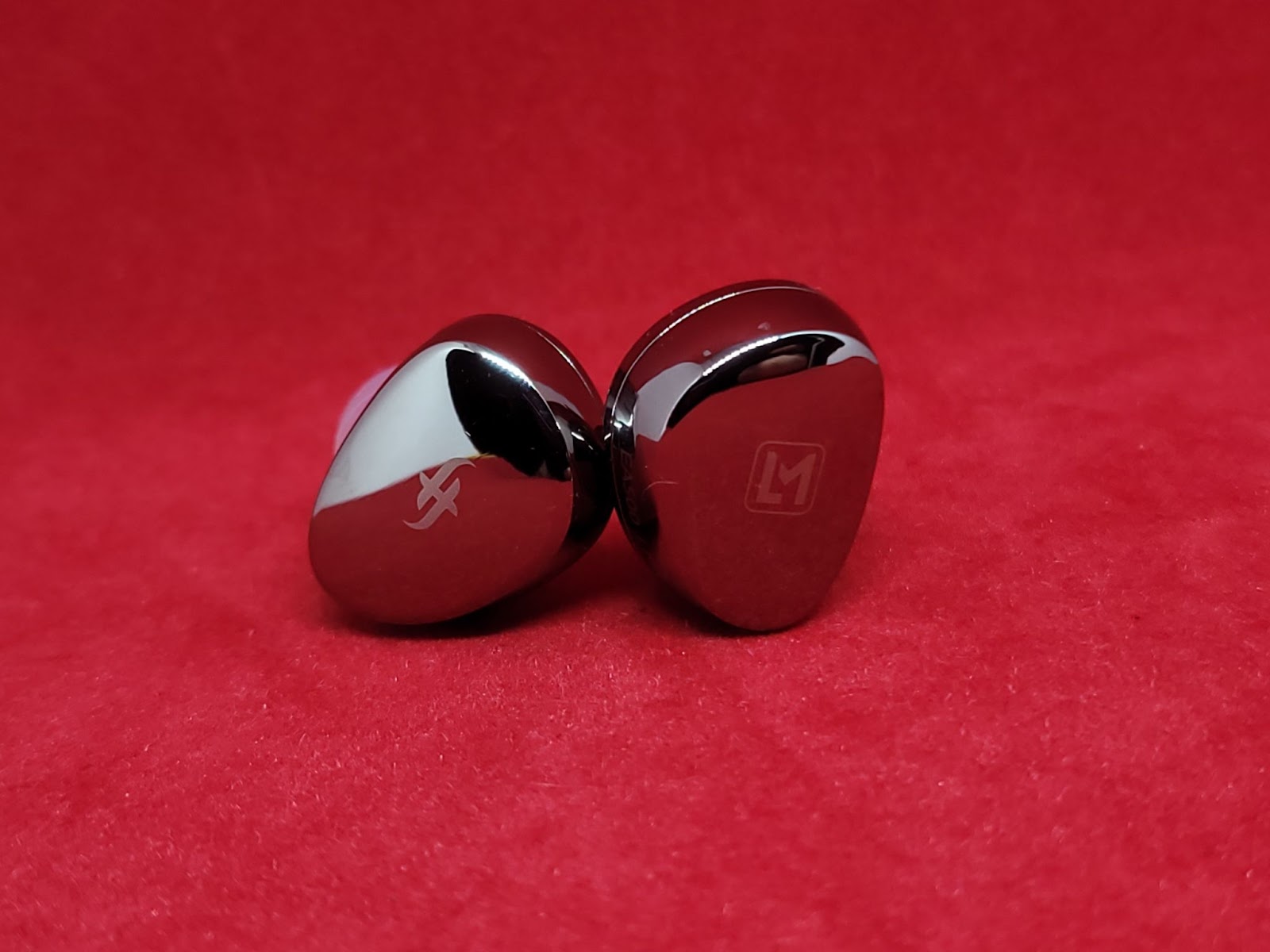
Simgot EA500LM was provided to me by Simgot for free and I only paid for the customs fee. As I always say, everyone is biased one way or another so take everything you read with a grain of salt. Also I will try to be more concise and to the point in my reviews from now on without worrying about the word count etc. If you have any questions, please ask me in the comments and I will try to answer them to the best of my abilities.
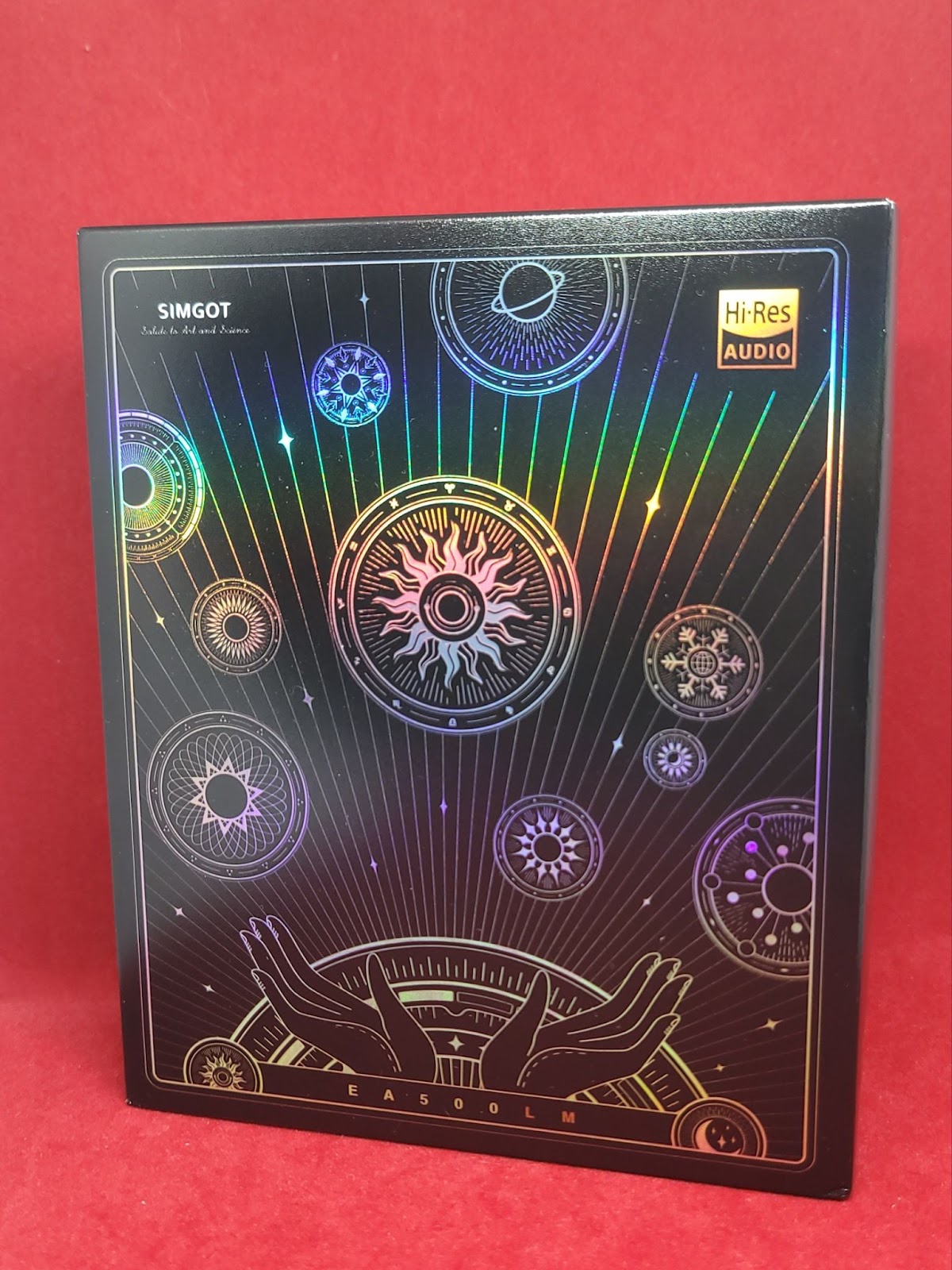
Earpieces of the EA500LM are identical to the original EA500; it’s made fully out of metal, only darker in color. If you like EA500’s fit, then you don’t need to worry at all. Domes of the drivers powering them are, like I said above, made using Lithium and Magnesium.
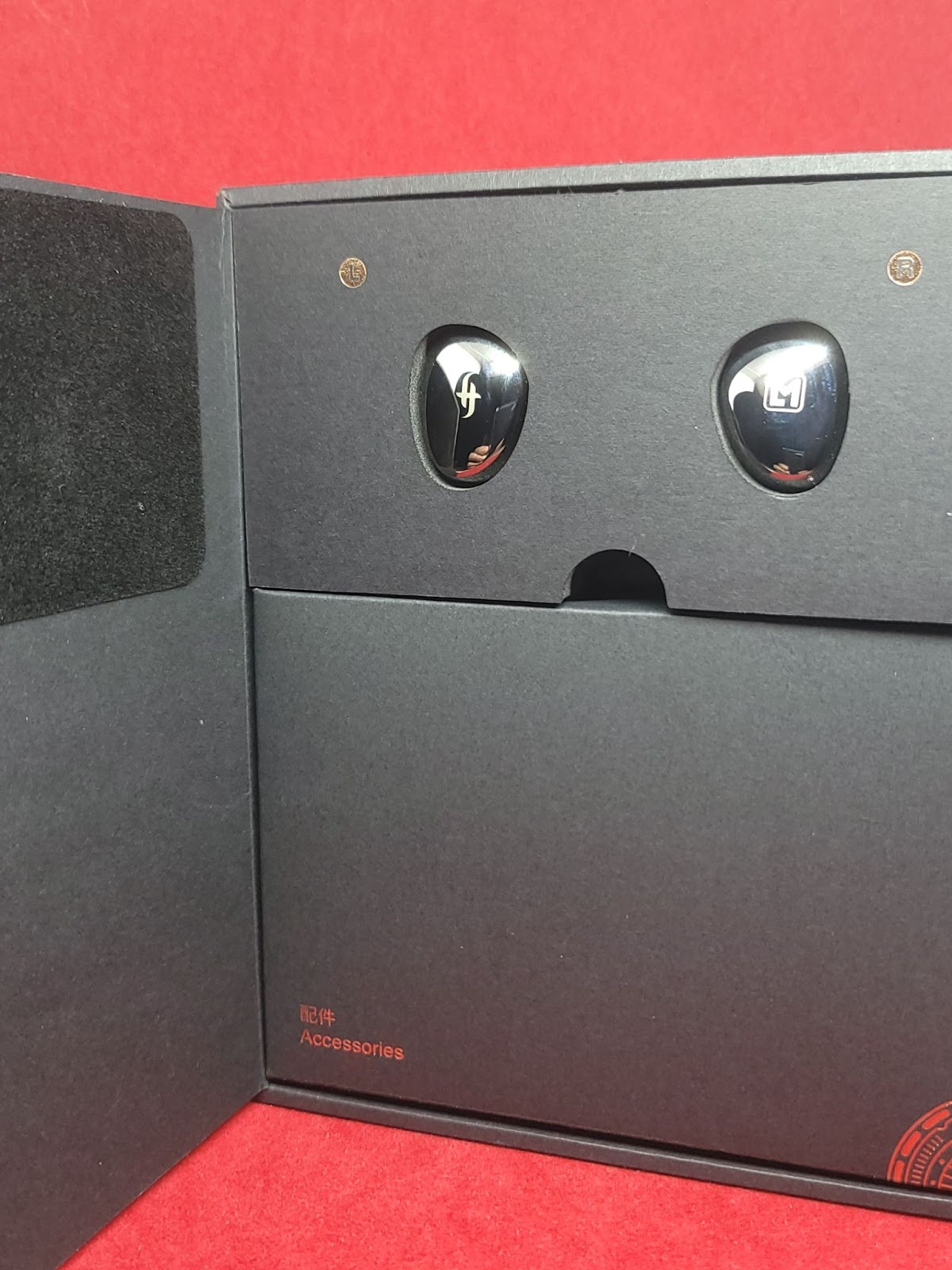
Packaging and its contents are identical to the original EA500 and EM6L. For those who don’t know, EA500LM comes with an unbranded carrying case, a thin but decent cable, 3 pairs of eartips, 3 pairs of tuning nozzles and spare O rings. Well tuning nozzles and O rings are exclusive to EA500 brothers.
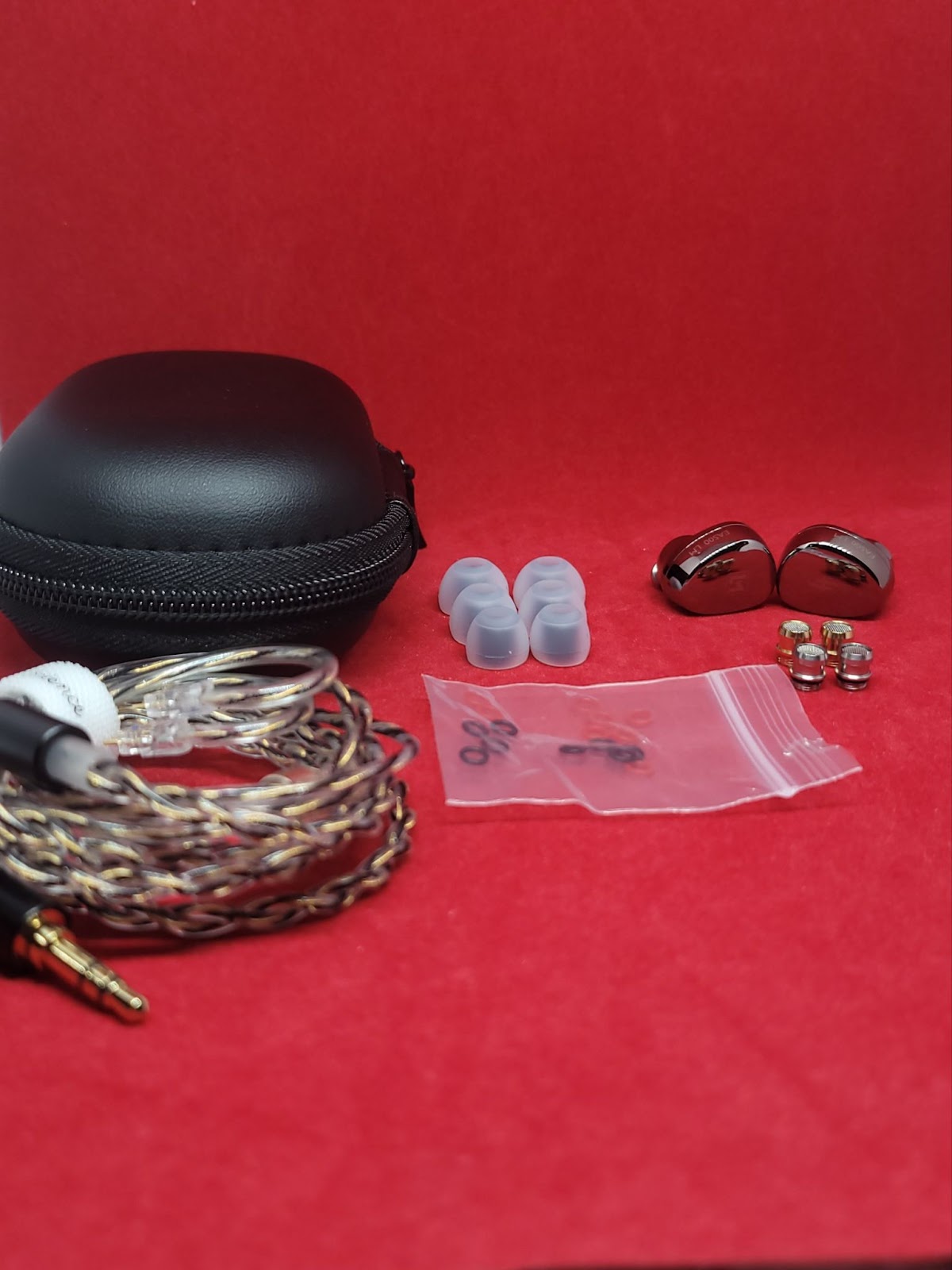
EA500LM didn’t stray far from the usual Simgot sound. Although they come with 3 tuning nozzles, gold and silver with red rings sound very close. Gold nozzles have tuning foams in them and they somewhat soften the sound but don’t alter the peaks too much so I decided to use the silver nozzles with red rings which don’t feel like they are holding back the IEMs. Nozzles with black filters collect dust since even the other nozzles are already very bright. If only gold nozzles made more difference.
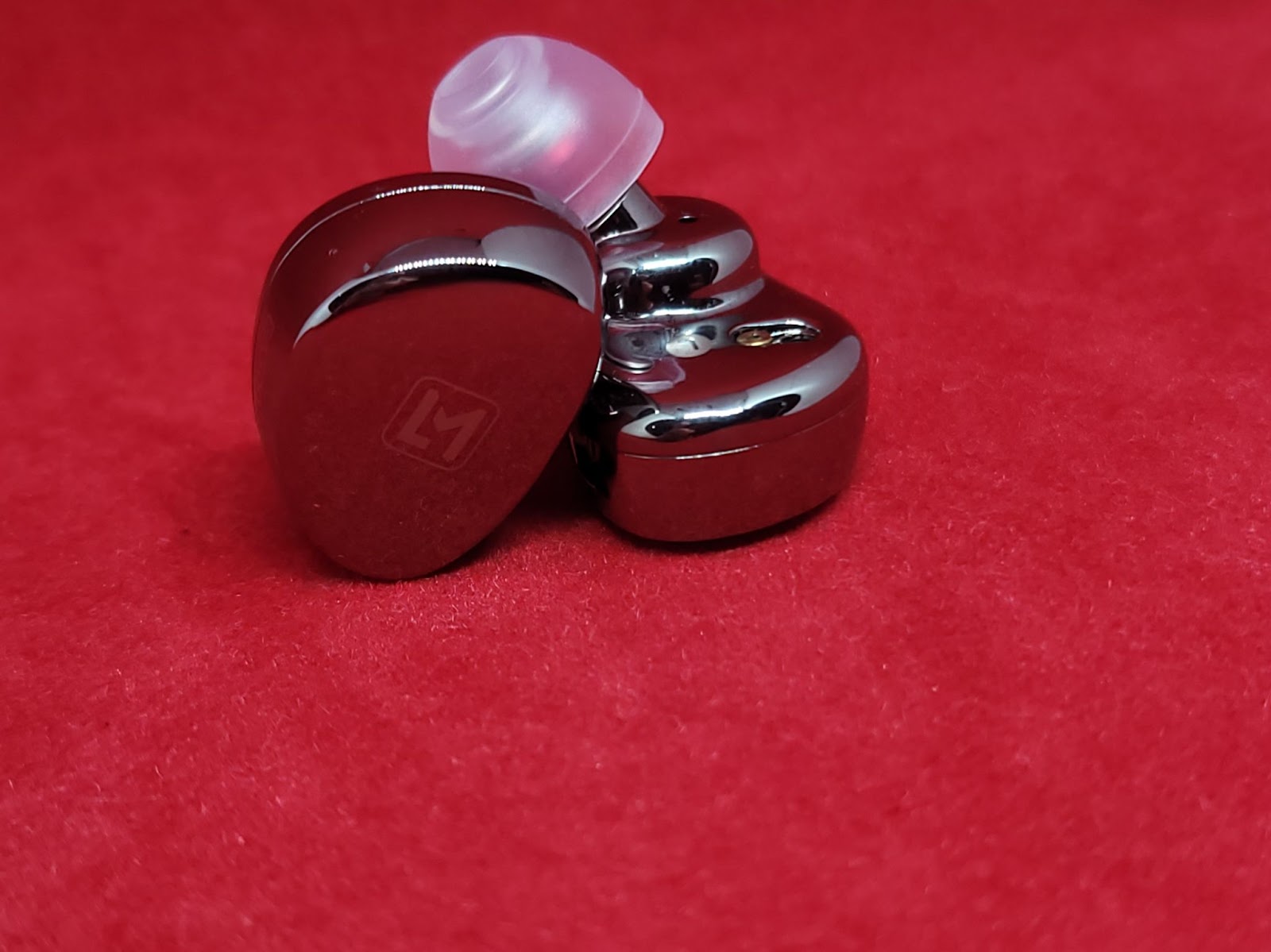
Compared to its predecessor, bass gained some heft and weight. It also extends deeper into the subbass and rumbles more. Attack and decay is very fast and it’s one of the aspects that convinces you that Simgot again used very high quality drivers.
Mids are lovely as always but intensity is somewhat increased. I know some of you find EW200 shouty and harsh and you are probably going to find EA500LM shouty and harsh too. But even in long listening sessions I didn’t feel fatigued at all. Like upper mids, treble is also elevated but unless I cranked up the volume it didn’t feel harsh for me. Instead it sounded very airy and sparkly.
After EA500, I wouldn’t believe they would improve upon it but they actually did. In almost every way they improved subjective experience. I don’t think Simgot achieved it only with the tuning, if that were the case, EW200 would also be superior to the original EA500. EA500LM is highly detailed with great instrument separation. It also feels very spacious and imaging is very precise. I will elaborate in the comparisons section.
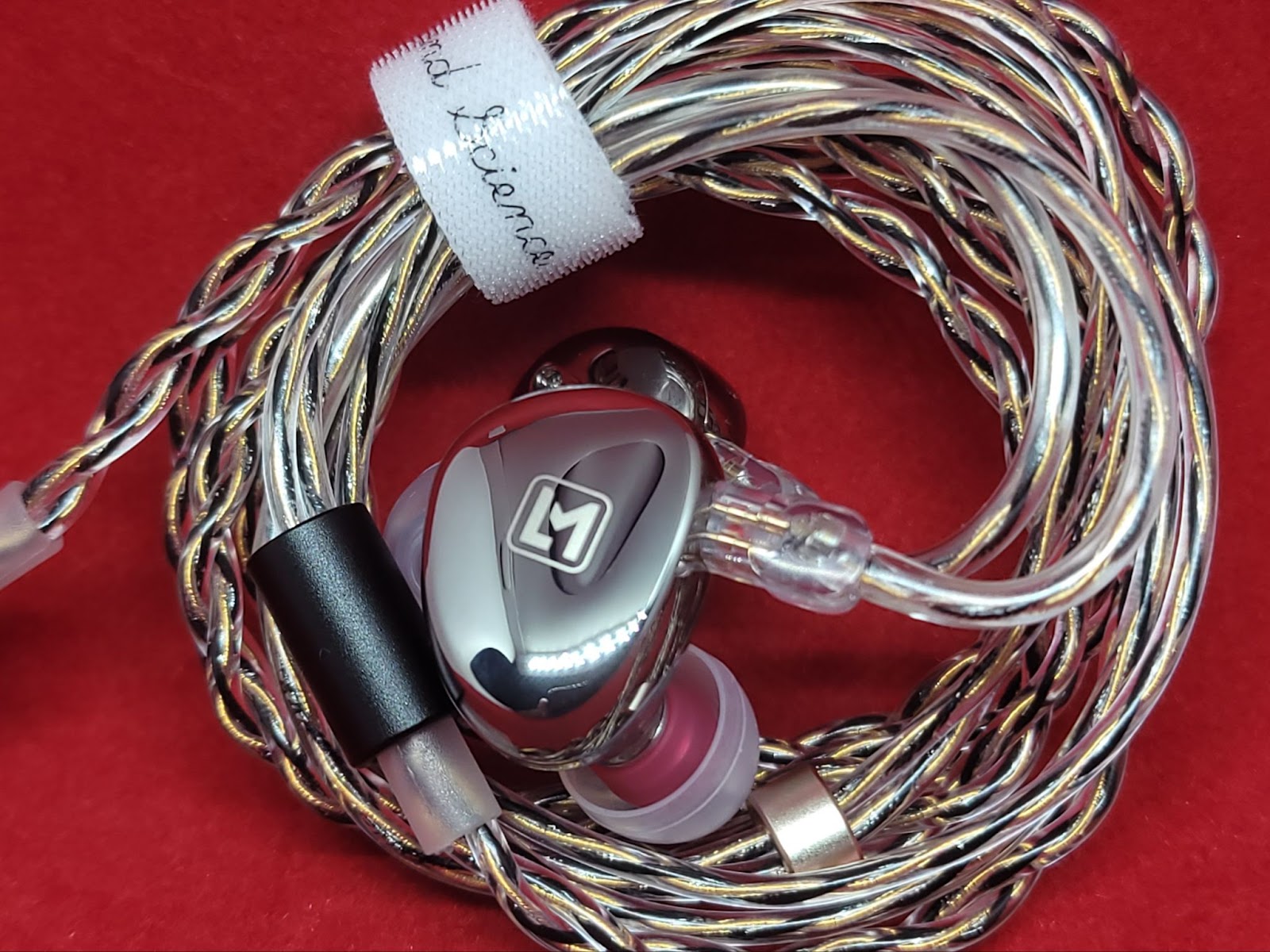
This is the obligatory comparison and I’m not the only one to compare them. However for the sake of convenience I will refer to them as OG and LM in this part.
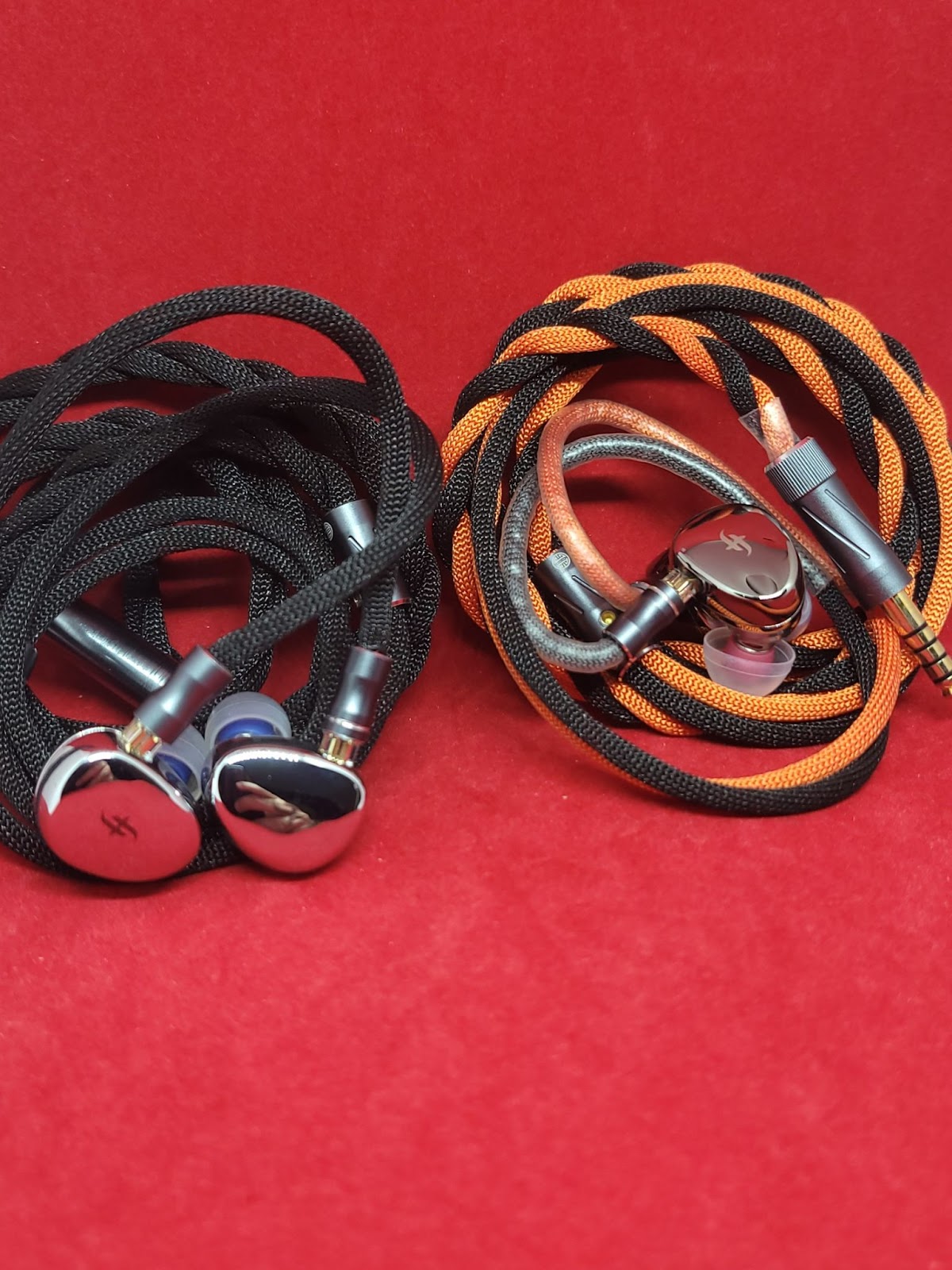
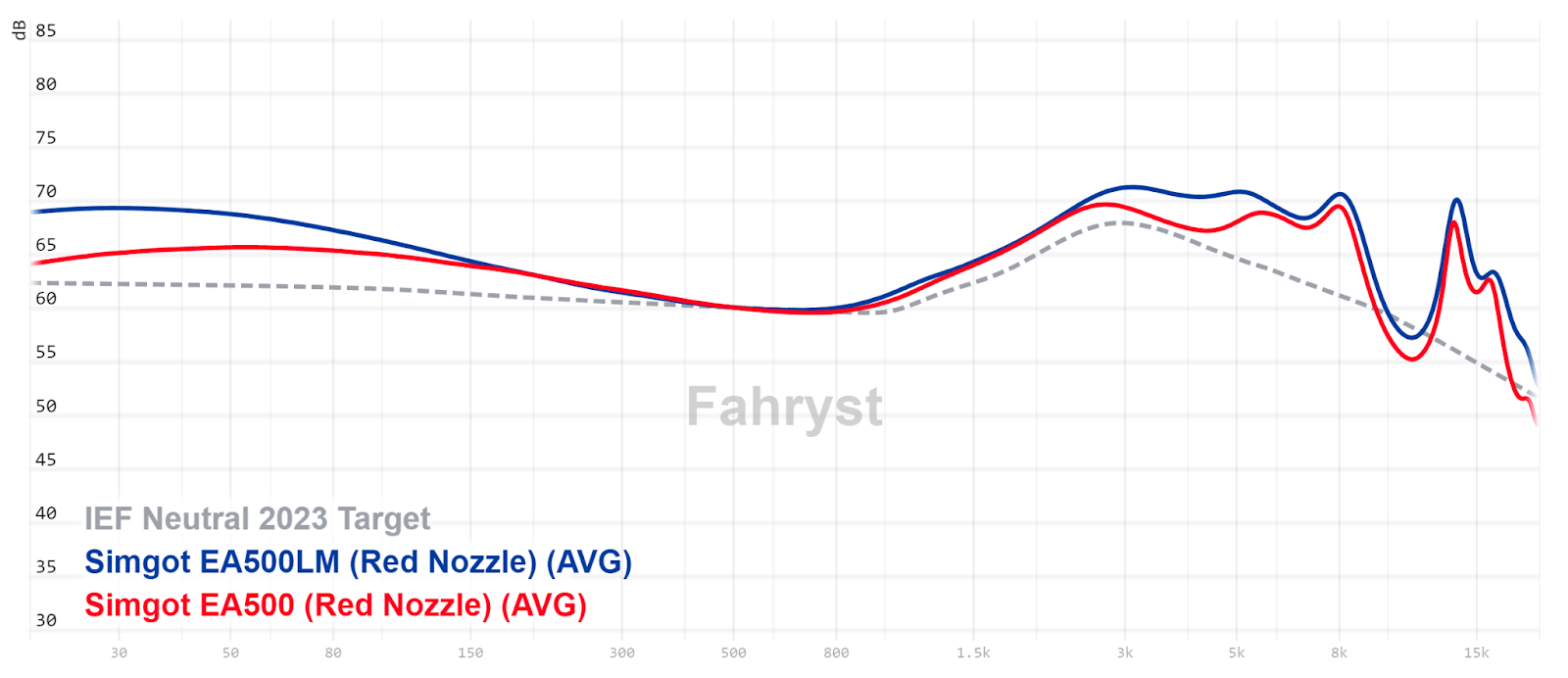
After comparing them for longer than I usually do, I actually couldn’t pick a conclusive winner. LM doesn’t replace the OG for me and OG is still relevant in my opinion. If you want to avoid some shout and treble energy, OG might suit you better. But improvements in technical aspects and bass region cannot be ignored.
Moondrop May has become one the most enjoyable IEMs for me and a default recommendation under 100 USD so I really wanted to put them against each other.
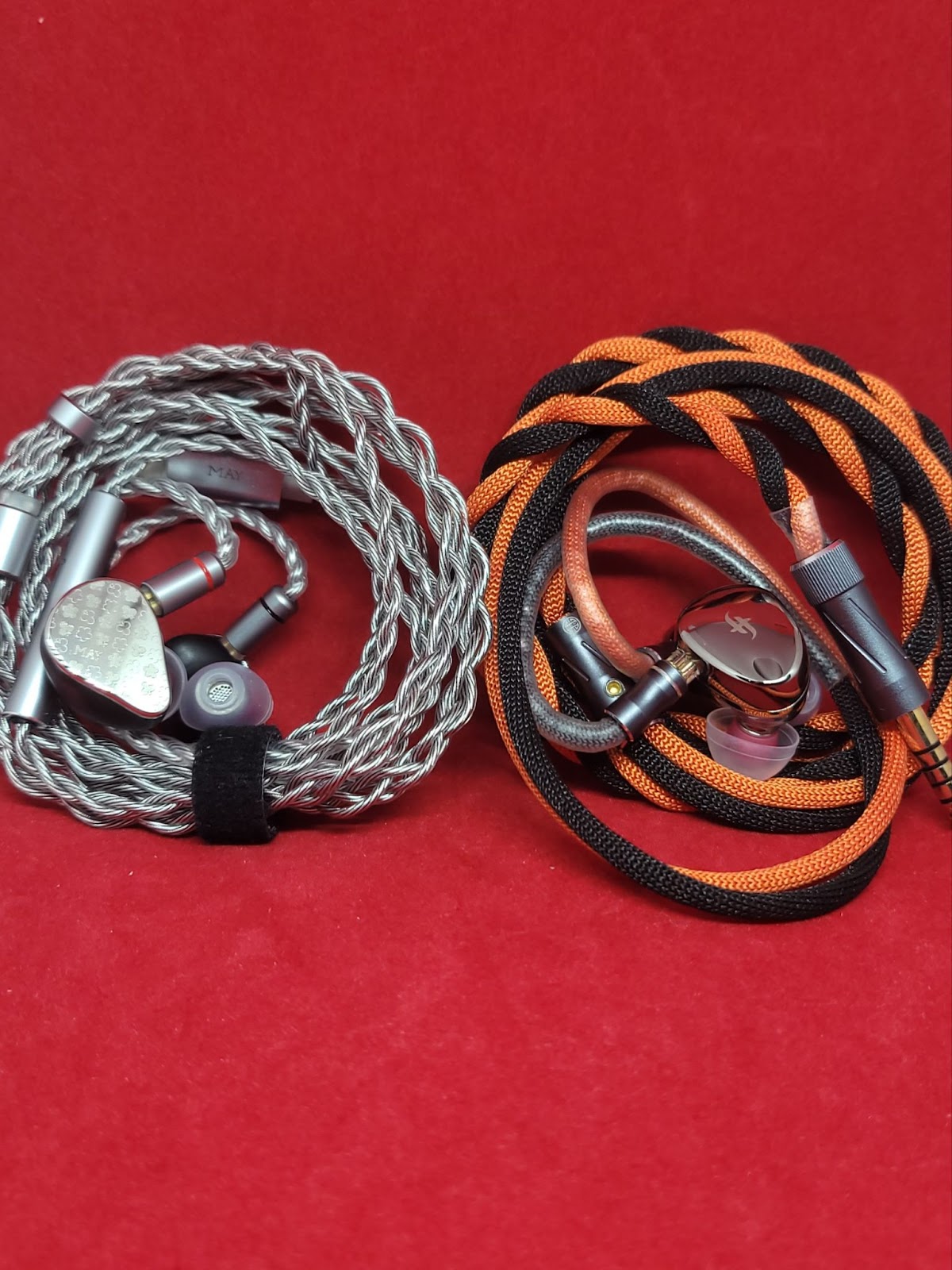
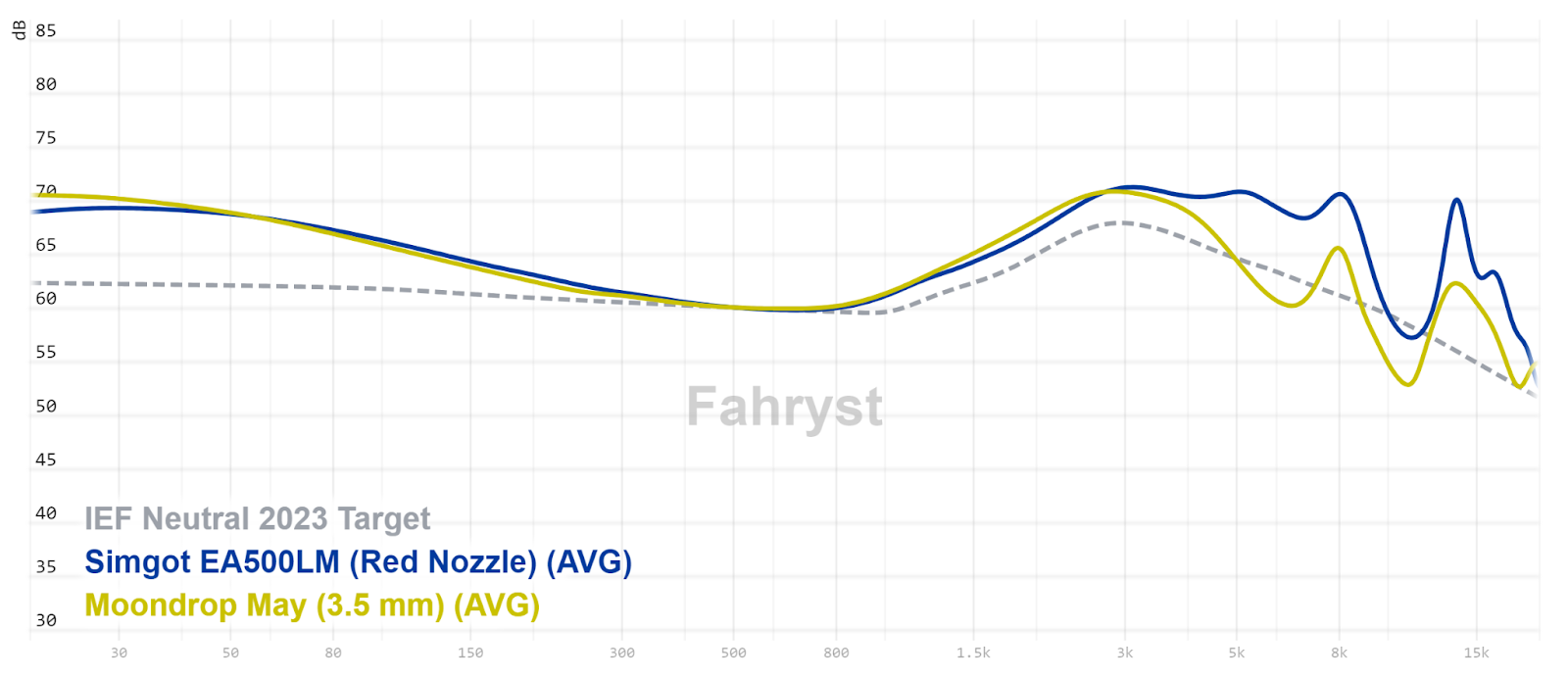
It was fun comparing them and I can definitely say I’m glad to own them both. EA500LM is highly technical with Simgot’s bright tuning, May is very versatile thanks to its cable with less technical capability.
Although Simgot named these EA500LM, like I said in the comparisons section, I don’t think these replace the original EA500. In fact I think EA500LM is the default upgrade if you liked the EW200. Tuning is different enough to keep OG and LM both even though they improved LM technically. EA500 was already a benchmark below 100 USD and LM also became one. The only nitpick I can make is, gold and silver red nozzles aren’t that different. If only one of the nozzles made them closer to the OG EA500. Fine, I will do it myself.
Disclaimers
Simgot EA500LM was provided to me by Simgot for free and I only paid for the customs fee. As I always say, everyone is biased one way or another so take everything you read with a grain of salt. Also I will try to be more concise and to the point in my reviews from now on without worrying about the word count etc. If you have any questions, please ask me in the comments and I will try to answer them to the best of my abilities.
Build and Accessories of Simgot EA500LM
Earpieces of the EA500LM are identical to the original EA500; it’s made fully out of metal, only darker in color. If you like EA500’s fit, then you don’t need to worry at all. Domes of the drivers powering them are, like I said above, made using Lithium and Magnesium.
Packaging and its contents are identical to the original EA500 and EM6L. For those who don’t know, EA500LM comes with an unbranded carrying case, a thin but decent cable, 3 pairs of eartips, 3 pairs of tuning nozzles and spare O rings. Well tuning nozzles and O rings are exclusive to EA500 brothers.
Sound of Simgot EA500LM
Tonality
EA500LM didn’t stray far from the usual Simgot sound. Although they come with 3 tuning nozzles, gold and silver with red rings sound very close. Gold nozzles have tuning foams in them and they somewhat soften the sound but don’t alter the peaks too much so I decided to use the silver nozzles with red rings which don’t feel like they are holding back the IEMs. Nozzles with black filters collect dust since even the other nozzles are already very bright. If only gold nozzles made more difference.
Compared to its predecessor, bass gained some heft and weight. It also extends deeper into the subbass and rumbles more. Attack and decay is very fast and it’s one of the aspects that convinces you that Simgot again used very high quality drivers.
Mids are lovely as always but intensity is somewhat increased. I know some of you find EW200 shouty and harsh and you are probably going to find EA500LM shouty and harsh too. But even in long listening sessions I didn’t feel fatigued at all. Like upper mids, treble is also elevated but unless I cranked up the volume it didn’t feel harsh for me. Instead it sounded very airy and sparkly.
Technicalities
After EA500, I wouldn’t believe they would improve upon it but they actually did. In almost every way they improved subjective experience. I don’t think Simgot achieved it only with the tuning, if that were the case, EW200 would also be superior to the original EA500. EA500LM is highly detailed with great instrument separation. It also feels very spacious and imaging is very precise. I will elaborate in the comparisons section.
Comparisons
Simgot EA500 (original) vs. EA500LM
This is the obligatory comparison and I’m not the only one to compare them. However for the sake of convenience I will refer to them as OG and LM in this part.
- LM is slightly harder to drive.
- Bass on LM has more weight and more power behind it and extends deeper into the subbass. In some songs, bass guitars on the OG sound more prominent but that’s probably caused by the LM having more treble energy.
- Both have incredible mids presentations. OG is slightly cleaner and also less shouty and less intense.
- One is not harsher than the other, surprisingly. Although LM is slightly brighter, shoutier and more intense, they stop at the same line when it comes to harshness and fatigue. In fact LM is slightly more controlled in the treble.
- Timbre is slightly better on the OG but LM is more spacious. LM is more detailed and has more defined notes. Imaging is also sharper on the LM.
After comparing them for longer than I usually do, I actually couldn’t pick a conclusive winner. LM doesn’t replace the OG for me and OG is still relevant in my opinion. If you want to avoid some shout and treble energy, OG might suit you better. But improvements in technical aspects and bass region cannot be ignored.
EA500LM vs Moondrop May
Moondrop May has become one the most enjoyable IEMs for me and a default recommendation under 100 USD so I really wanted to put them against each other.
- May’s bass is more tactile, more impactful and rumblier but EA500LM’s bass is faster in decay and shows its capability in the first attack.
- May’s mids are, although forward, not intrusive. EA500LM is shoutier and more aggressive in the mids, especially in the upper region. Still it is tastefully done in my personal opinion. May has more body in the lower mids. Bass guitars are also more prominent on May.
- EA500LM is more susceptible to sibilance, May is as safe and inoffensive as can be. EA500 is much brighter.
- May has a more agreeable timbre. EA500LM’s timbre is although very good, the treble energy it has sometimes throws off the balance.
- EA500 is technically superior in almost every way. It feels more spacious and detailed. Although May is no slouch, it sounds blunted compared to EA500LM. Imaging is also sharper on EA500LM
It was fun comparing them and I can definitely say I’m glad to own them both. EA500LM is highly technical with Simgot’s bright tuning, May is very versatile thanks to its cable with less technical capability.
Conclusion
Although Simgot named these EA500LM, like I said in the comparisons section, I don’t think these replace the original EA500. In fact I think EA500LM is the default upgrade if you liked the EW200. Tuning is different enough to keep OG and LM both even though they improved LM technically. EA500 was already a benchmark below 100 USD and LM also became one. The only nitpick I can make is, gold and silver red nozzles aren’t that different. If only one of the nozzles made them closer to the OG EA500. Fine, I will do it myself.
Last edited:
Jarlaxle
100+ Head-Fier
Pros: Tactile, nuanced and authoritative bass
Pretty shells
Sounds great with soul, funk and acoustic music
Pretty shells
Sounds great with soul, funk and acoustic music
Cons: Not the most balanced tonality
Shouty
Unnatural timbre
Discrepancy between lower mids and upper mids
Lacks air
Shouty
Unnatural timbre
Discrepancy between lower mids and upper mids
Lacks air
Celest has been on a roll with one successful release after another. For those who don’t know, Celest is Kinera’s sister brand that targets the more budget conscious audience. The most expensive Celest product so far was Phoenix Call which is sold for 129 USD. Plutus beast is the second priciest product Celest has released and sold for 89 USD. Celest also has a number of other successful IEMs like Wyvern, Gumiho and Pandamon and also other accessories like gaming cables with boom mics.
Disclaimers
Celest Plutus Beast was provided to me by Kinera for review. As I always say, everyone is biased one way or another so take everything you read with a grain of salt. Also I will try to be more concise and to the point in my reviews from now on without worrying about the word count etc. If you have any questions, feel free to ask me in the comments and I will try to answer them to the best of my abilities.
Build and Accessories of Celest Plutus Beast
Plutus Beast comes in a simple package like the rest of their line, however it has everything you will need plus a metal bookmark in the usual Celest fashion. Included two sets of tips, the carrying case and the cleaning tool leaves nothing to be desired. Included cable is not very good but it’s serviceable. You can choose either the 3.5 mm or the 4.4 mm option while ordering depending on your needs.
Earpieces of Plutus Beast are made out of resin. Unfortunately I haven’t tried Phoenix Call but from what I gathered, their shell shapes are identical. Art on the faceplates is gorgeous as always. I can’t say they are the best fitting or the most comfortable IEMs I’ve ever used. When I used them with smaller tips, I could insert them deeper in my ears and get the benefit of the Bone Conduction driver inside. Yes, Plutus Beast uses an additional Bone Conduction driver per side, along with their SPD 2.0 and Balanced Armature drivers, again one of each per side. Bone conduction makes a springy sound whenever you touch the shells which might be annoying at first, but when you securely insert them in your ears and play your music, you forget that there was such a thing in the first place.
Sound of Celest Plutus Beast
Tonality
Plutus Beast is not the most balanced IEM tonally, and that’s not the point. It’s more about showing its power and what it is capable of. You can think of it as a technology demo or a prototype maybe. Does it mean it sounds bad? Absolutely not. Let me explain:
Bass on the Plutus Beast might be the sole reason to buy these IEMs. Thanks to the BC driver, Plutus Beast produces one of the most tactile, authoritative and nuanced bass there is, at least close to its price range. The only IEM that performed close to it was BQEYZ Wind, which also utilized a BC driver. Unfortunately I only demoed Wind for a short time a while back and couldn’t compare them head to head.
There is a discrepancy in Plutus Beast’s midrange, lower mids are too recessed compared to upper mids, or rather upper mids are too pronounced and shouty. While female vocals sound intimate and emotional, overall timbre takes a hit and Plutus Beast sounds dry and tinny. Male vocals could use a little bit more body too.
Treble on Plutus Beast is mostly relaxed but there is a very narrow peak between 7k and 8k which shows itself occasionally. Other than that, it lacks air and feels kind of closed in.
Like I said in the beginning, Plutus Beast isn’t exactly tonally balanced, but specific genres sound lovely with these. I especially enjoyed listening to Funk, Soul and Acoustic performances.
Technicalities
Technically, Plutus Beast competes well in its price range. It has fine resolving capability. However timbre isn’t very natural because of the tuning quirks I mentioned. Headstage isn’t particularly big either. Comparisons should shed more light to Plutus Beast’s technical attributes.
Comparisons
Celest Plutus Beast vs. BQEYZ Winter
BQEYZ Winter is another IEM that fashions a Bone Conduction driver, however it works mostly in the midrange and lower treble so each provides different benefits. I wish I had BQEYZ Wind with me for comparison which would make more sense in terms of Bone Conduction utility.
- In the bass region, Plutus Beast beats Winter hands down, it has more impact, more rumble, more nuance and more authority in the bass.Winter doesn’t have a huge bass however, by itself it has a commendable bass response thanks to its 12 mm dynamic driver.
- Winter is more balanced. Plutus Beast is undoubtedly shoutier. While female vocals are mostly close and intimate, male vocals feel distant and lack body on Plutus Beast.
- Neither is particularly harsh or sibilant. Winter has more energy, air and snap in the treble. Plutus Beast’s treble is more relaxed and a little blunted.
- Plutus Beast has a pretty good resolving capability but unfortunately still not as resolving as Winter. Plutus Beast has more details in the bass region, Winter on the other hand, is more detailed in the mids and treble areas.
- Headstage on Winter is wider, deeper and imaging is more precise.
Celest Plutus Beast vs. Audiosense AQ4
Audiosense AQ4 has been one of my go to IEMs for pure bass enjoyment without sacrificing overall tonality too much. Of all the IEMs I have, it made the most sense to compare even though it is a more expensive choice.
- AQ4 has a more boomy and pillowy bass. Plutus Beast’s bass has more authority, a faster decay and better control. Bass on Plutus Beast is also more nuanced.
- Their lower mids tuning is similar but upper mids emphasis on Plutus Beast throws off the balance. As a result AQ4 again has a more natural warmth and body in the lower mids. In the upper mids, again Plutus Beast is much shoutier while AQ4 is more relaxed. Guitars, piano, string instruments and such are also more emphasized on Plutus Beast.
- Both have rather relaxed treble, moreso on AQ4 but it has better treble extension.
- AQ4 has a much better timbre. It’s also more resolving in the mids and treble while Plutus Beast is more resolving in the bass. But AQ4’s more relaxed treble might not highlight some of these details even if it renders them.
- AQ’s headstage is slightly wider and much deeper than Plutus Beast’s. Imaging is also again more precise.
Conclusion
Plutus Beast isn’t an all rounder, that’s for certain. It could have been more balanced. In fact when I tried to EQ it, I got rid of almost all of my gripes. But as it is, it’s more of a genre specific IEM. Bass on these is to die for. Soul and Funk performances sound lovely. So if you want the cheapest IEMs with Bone Conduction drivers, or if you love your bass above all else or you are fine with using EQ, Plutus Beast is an IEM definitely worth a try.
kapsontong
Spectacular review!
Jarlaxle
100+ Head-Fier
Pros: Price!
Great neutral bright tuning
Good comfort
Great neutral bright tuning
Good comfort
Cons: Minor quirks in tonality
Nothing more at this price
Nothing more at this price
Hifiman needs no introduction as they make some of the best headphones in every price category. I have owned several Hifiman headphones and reviewed a couple of them before. In general, they all impressed me and became my benchmarks. HE400se is Hifiman’s entry level planar magnetic headphones that are currently priced at 109 USD but can be bought for even cheaper during sales.
Disclaimers
Hifiman HE400se was provided to me by Mark from Hifiman for free and I only paid the customs fees. As I always say, everyone is biased one way or another so take everything you read with a grain of salt. Also I will try to be more concise and to the point in my reviews from now on without worrying about the word count etc. If you have any questions, please ask me in the comments and I will try to answer them to the best of my abilities.Build and Accessories of Hifiman HE400se
Since HE400se is Hifiman’s entry model, it would be unfair to expect too much from it in terms of construction and accessories. So headphones being presented in an environment friendly cardboard box and only coming with a rubberized cable didn’t bother me too much.
Materials used in its construction are mostly plastic with only yolks being metal and headband being leatherette. In fact the materials are almost identical with Edition XS and HE6se v2. So while I can’t fault the choices in its construction considering the price, it’s more frustrating that higher models don’t offer a more premium experience.
Headband is mostly comfortable since it’s not too heavy. This wasn’t the case with the Edition XS since its headband caused a hot spot on top of my head. In the case of HE6se v2, while it was fairly comfortable, it wasn’t staying firmly on my head so I replaced it’s headband with a Audeze styled one.
HE400se is not exactly easy to drive. I would recommend using an amplifier with a decent power output. Probably something along the lines of 500 mW or 1 Watt should suffice.
Sound of Hifiman HE400se
Tonality
HE400se proudly represents Hifiman’s bright/neutral house sound. Bass is not very emphasized but not exactly linear either. It has a tint of warmth if we consider Diffuse Field as strictly neutral. There is also a slight sub bass roll off due to the leakage in the seal in the pads.Mids tuning is again mostly neutral with slight deviations. HE400se also has Hifiman’s usual 2k dip which helps with the sound stage but also gives a slight unnatural sensation. It’s more true for this one as the voices sound like they are coming through a tunnel ever so slightly. By itself you wouldn’t notice it but it becomes apparent when you change headphones or compare it directly to something more “natural”.
Like other Hifiman planars, HE400se is also bright but I wouldn’t call them harsh. In fact it doesn’t have the tizzy and fatiguing nature even some of the higher models have but you can also say HE400se doesn’t have their treble extension and detail level. It's also not as refined as its bigger brothers but by itself, it’s hard to complain.
Technicalities
HE400se is a cheap planar and this translates to several things. It’s mostly superior to the headphones with dynamic drivers that are even more expensive but doesn’t beat more expensive headphones with planar magnetic drivers and other novel technologies. It has good details and staging capabilities. Timbre is surprisingly good but not exceptional. As always, comparisons will give more context to what I try to convey.Comparisons
Hifiman HE400se vs. Hifiman Sundara
I didn’t expect the HE400se to beat its bigger brother but this comparison should help those you are considering an upgrade in the future or wondering if they should directly jump to Sundara.- Sundara is mostly made out of metal while HE400se is mostly plastic.
- They both have similar sound signatures.
- Sundara immediately sounds clearer and more refined.
- Sundara has more noticeably impact, authority and control in the bass. They both have similar subbass extensions. HE400se is slightly warmer and has a little bit more midbass quantity.
- There is a bigger scoop in the mids on HE400se which makes it sound like voices coming from further away through a tunnel but it doesn’t necessarily sound wider.
- Sundara sounds wider, deeper, more open and spacious.
- HE400se is more likely to get sibilant depending on the volume you are listening to.
- Timbre is more natural on Sundara throughout the frequency spectrum but especially in the mids.
- Sundara is a step up to HE400se in every thinkable technical aspect, it’s more detailed and resolving, has better layering and separation of instruments, sounds more spacious and imaging is better. You simply feel more perceptive of your surroundings with Sundara. But HE400se puts out around 70% of Sundara’s performance, which is considered a modern classic already, for around one third of its price.
Hifiman HE400se vs. Monoprice Monolith M570
Monolith M570 are planar magnetic headphones that are from the family of Sendy Aiva, Sivga P-II, BLON BL20 and Takstar HF580. They cost 300 USD when they were released but sold for less than 150 USD before they were discontinued.- Build quality and materials are much more premium on the M570.
- M570 is even warmer and has a thicker note weight. Bass is again more impactful and it has more authority and power behind it, but M570 also has more detail and texture in the bass. M570 extends much better into the subbass and rumbles more.
- Mids, especially lower mids up to 1-1.5 kHz are emphasized on M570. Vocals are pretty much neutral on HE400se, on M570 on the other hand, they are close and personal and sometimes honky. This makes presentation on M570 more emotional while HE400se sounds more natural.
- HE400 is brighter, it’s also again more likely to get sibilant with the volume but, M570 is not particularly dark either.
- Upper mids and lower treble are similar on both but M570 has more treble sizzle and snap. Still tonal balance skewed more toward low frequencies on M570 so overall they are warmer headphones.
- Timbre on HE400se is more natural. M570, although sounds enjoyable, has tuning quirks and is not exactly natural.
- Their imaging capabilities are similar, M570’s headstage isn’t particularly wider but it’s deeper than HE400se. M570 is more resolving and has better separation and layering capability.
Conclusion
I will be honest, I missed reviewing full size headphones so I had a great time reviewing HE400se. My comparisons were all with higher tier headphones because I was already impressed with them from the start. They are very well tuned, especially at their price. They didn’t outright beat any of them, true, but around 100 USD I can’t think of any headphones that’s better. So probably the lesson you should learn from this review is that HE400se is probably the best headphones around 100 USD but if you decide to spend more, you can definitely get more.
Last edited:
Jarlaxle
100+ Head-Fier
Pros: Price
Planar technicalities
Great fit and comfort
Nice cable
Planar technicalities
Great fit and comfort
Nice cable
Cons: Planar timbre
It could use a little more midbass
Slightly intense
It could use a little more midbass
Slightly intense
Evaluating Artti T10 was rather easy for me. Because I’m pretty familiar with the planar sound, especially on the IEMs that came after 7Hz Timeless. But before spoiling the review too much, I should introduce T10.
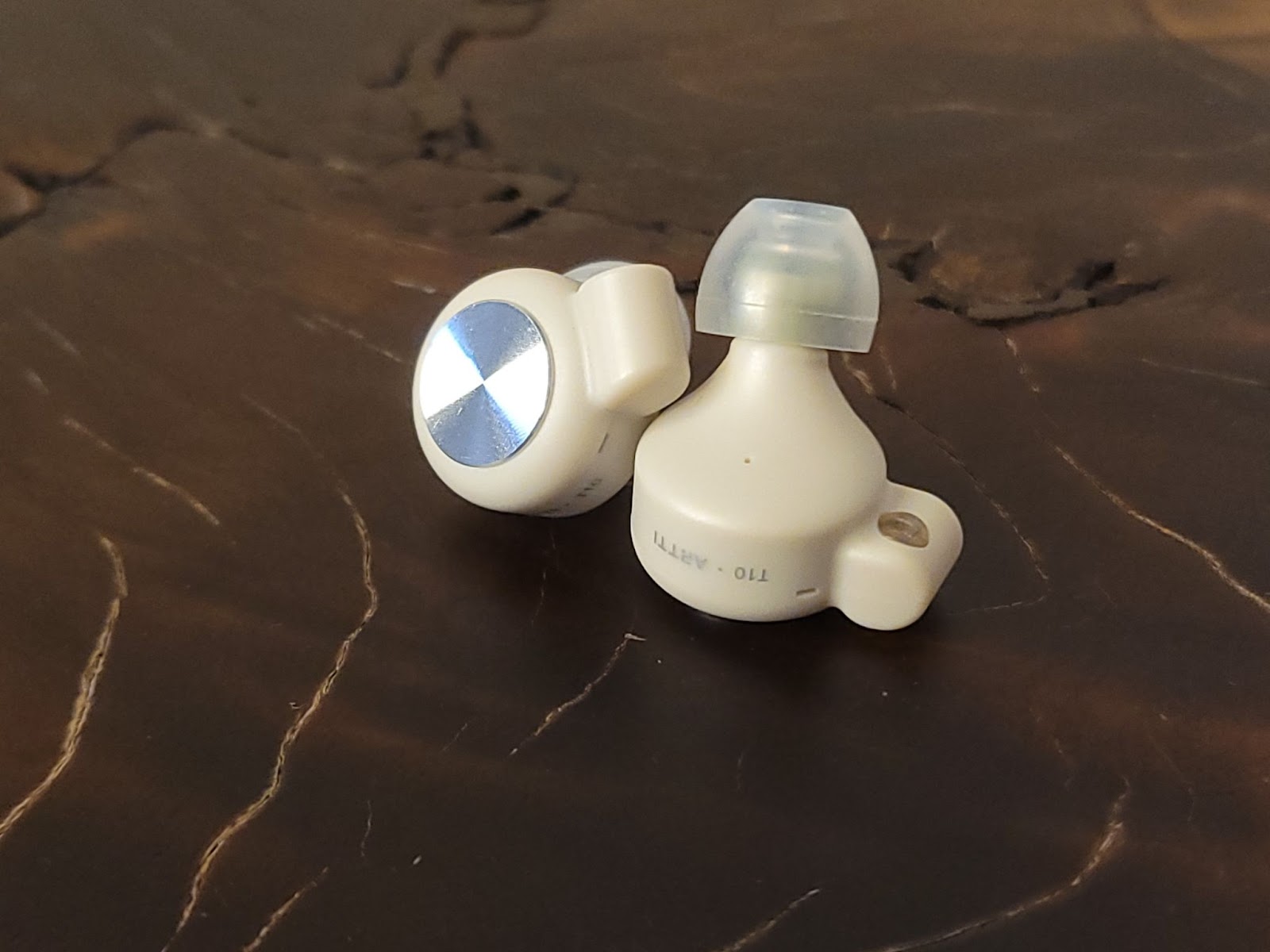
Artti T10 is the first IEM Artti has released. Before T10, I reviewed their R1, which was a 3 Dynamic Driver IEM. While it was tuned very well, it didn’t exactly suit my taste. I was expecting the T10 to be better for me because of how it measured pretty much the same as the other planars in the market with a cheaper price tag. Coming at 69 USD MSRP, is T10 the cheapest “good” planar?
I bought the Artti T10 with a discount in exchange for a review. As I always say, everyone is biased one way or another so take everything you read with a grain of salt. Also I will try to be more concise and to the point in my reviews from now on without worrying about the word count etc. If you have any questions, please ask me in the comments and I will try to answer them to the best of my abilities.
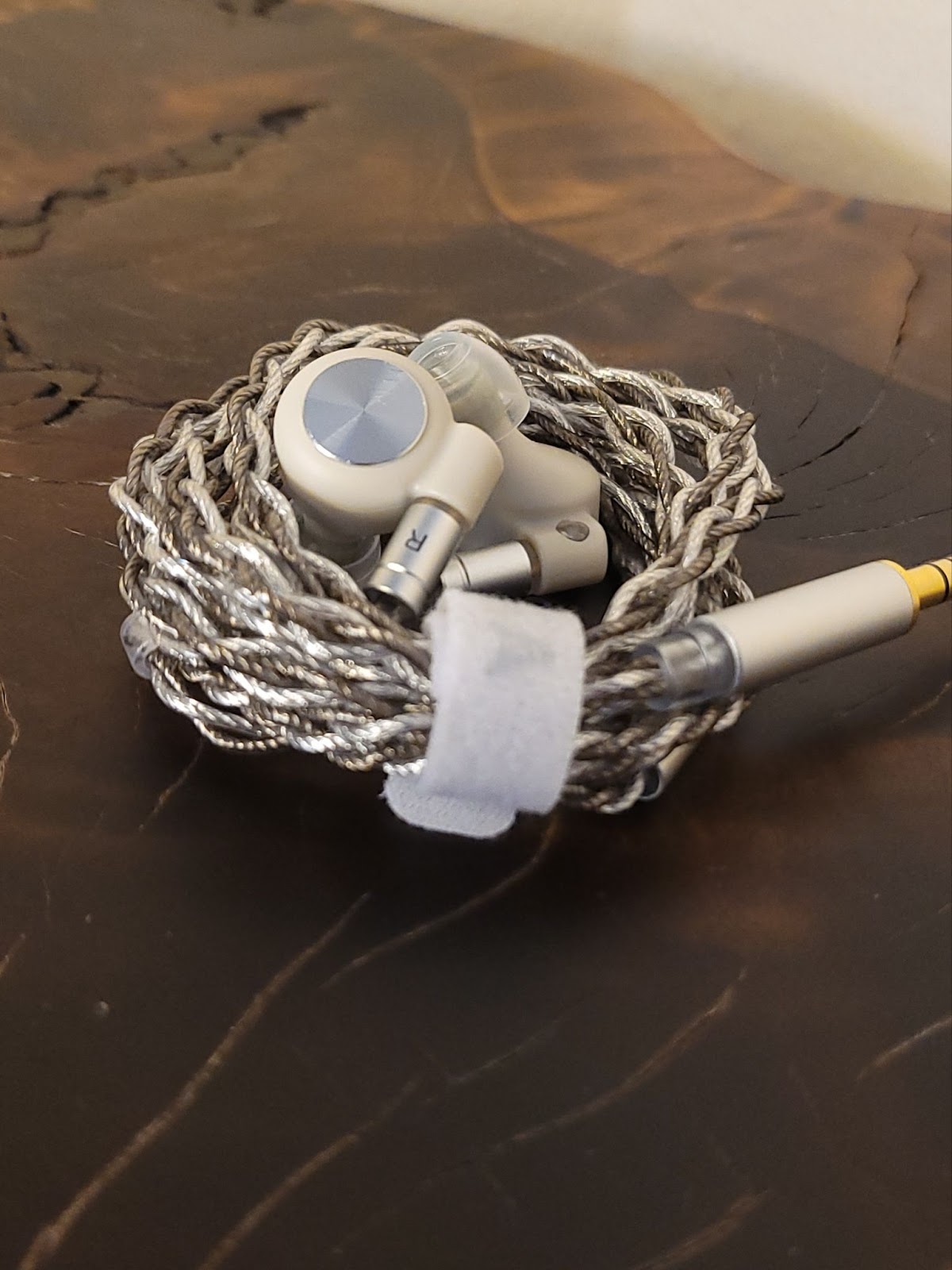
Artti T10 uses a 14.2 mm planar magnetic driver. This driver is probably the same that has been extensively used by the other manufacturers including LetShuoer in their S12, S12 Pro and Z12. One thing however, the T10 is harder to drive than my S12. It’s not impossible to drive but you should get better results with a decent dongle, DAP or something like that.
Packaging and accessories is again similar to the LetShuoer offerings just like R1. Actually everything is identical with R1 except the shell material, tip and cable colors.
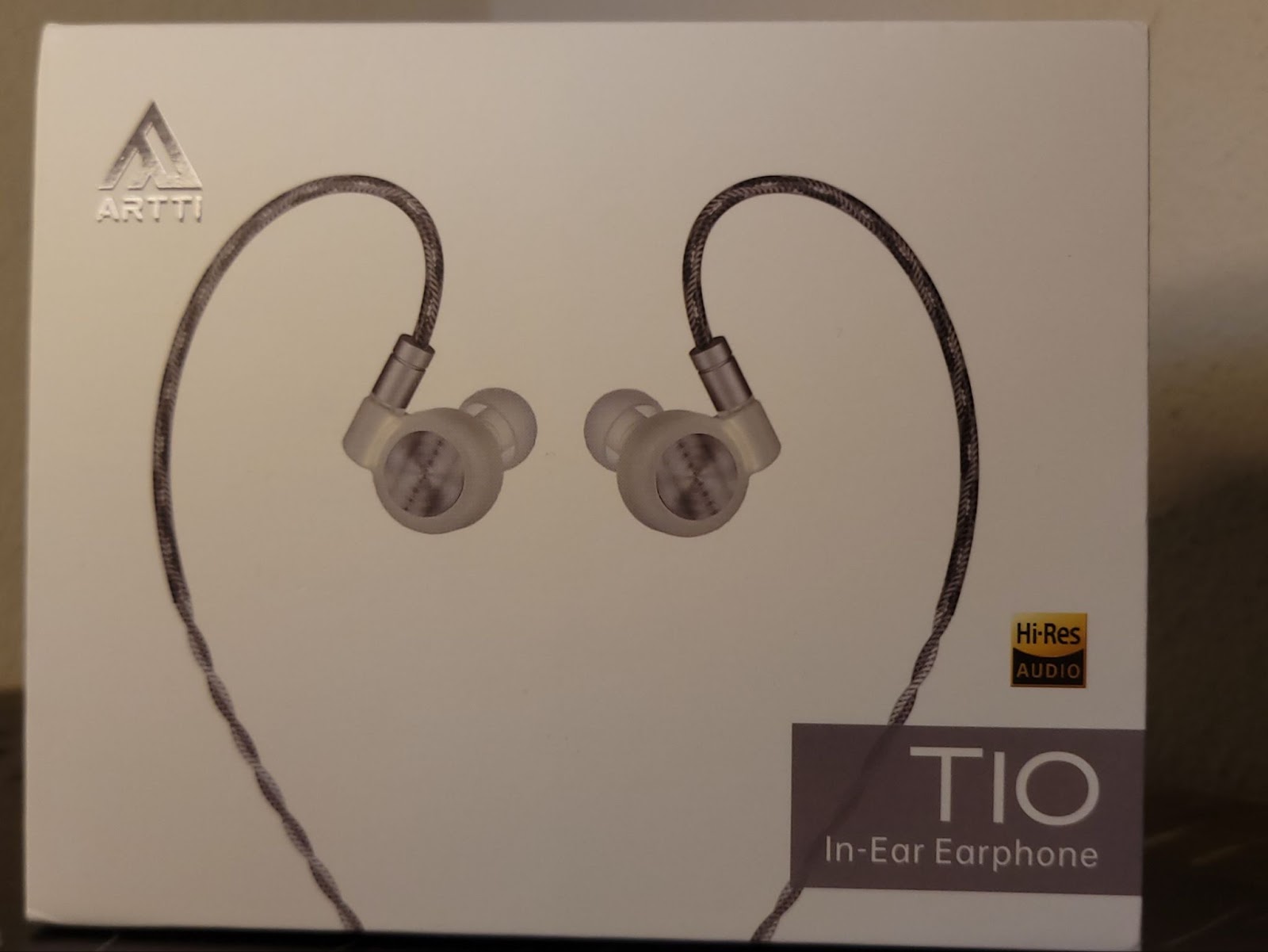
The Shells of the T10 are plastic, and a very cheap one at that. It might be the cheapest feeling plastic on an IEM I’ve ever seen. At least it is light and very comfortable. Nozzles are angled and rather long allowing a deeper insertion.
Cable that comes with T10 is probably the same one that comes with LetShuoer’s DZ4, a 4 core silver plated copper with 4.4 mm and 3.5 mm options. I can say that it’s one of the better stock cables I’ve got. Both LetShuoer and Artti deliver in that regard.
Apart from the cable, T10 again comes with two sets of tips, one wide bore and one regular. Included case is a fabric one identical to the one that came with the R1.
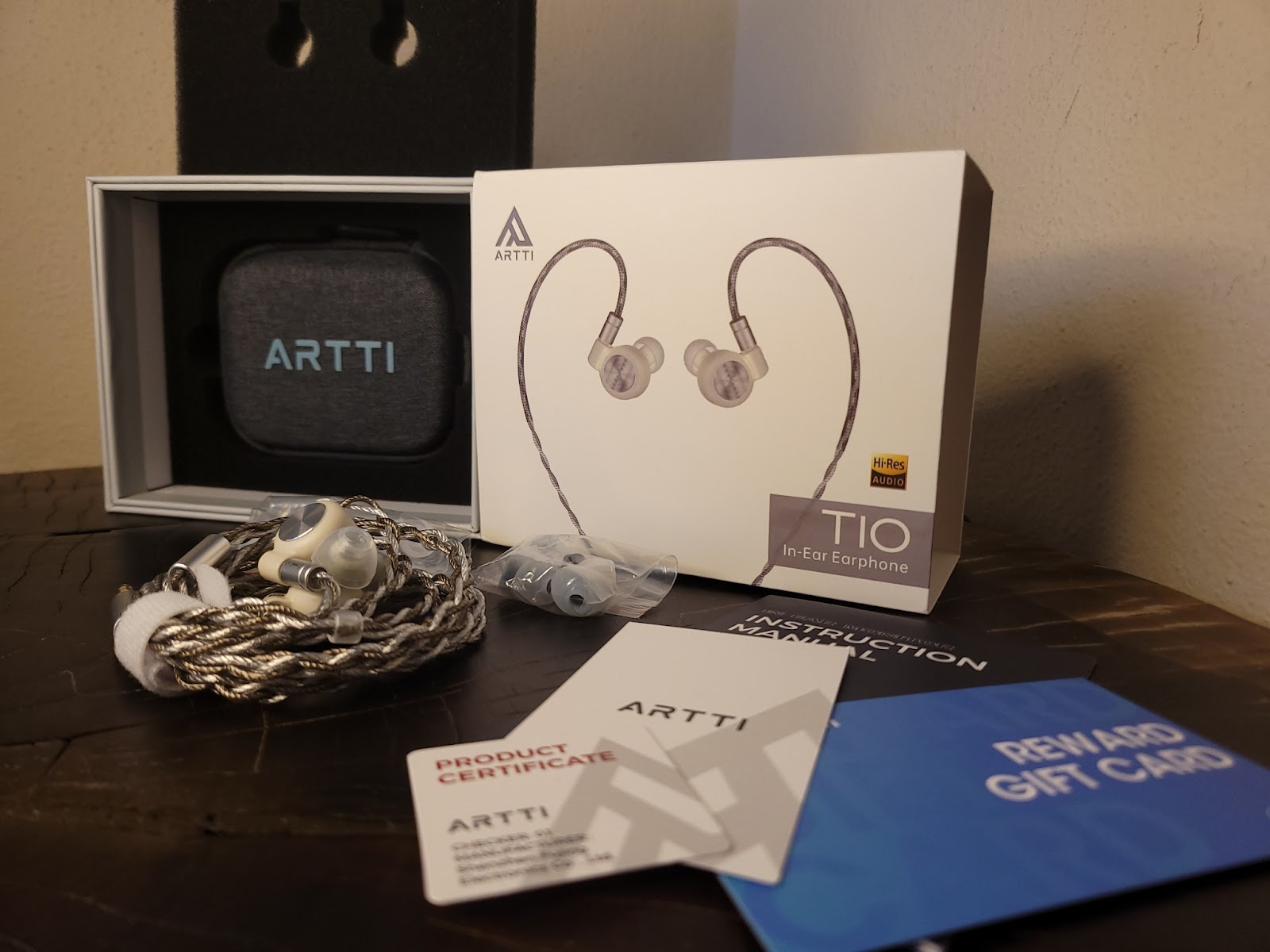
If you have used planar magnetic IEMs before, Artti T10 would come very familiar with a few refinements. Like the usual planar fashion, bass decay is fast and the feeling is rather dry. Tuning is subbass focused with nice grunt and rumble. Still I can see some people left wanting for a little more quantity.
Mids on the T10 again well tuned and mostly on point, upper mids however, are forward and borderline shouty. Newest planar IEMs moved away from this approach but T10 followed its predecessors in that regard.
Treble, like S12 and others, is emphasized. However it mostly stays on the safe side without getting too sizzly and splashy. I didn’t feel fatigued even after hours of listening.
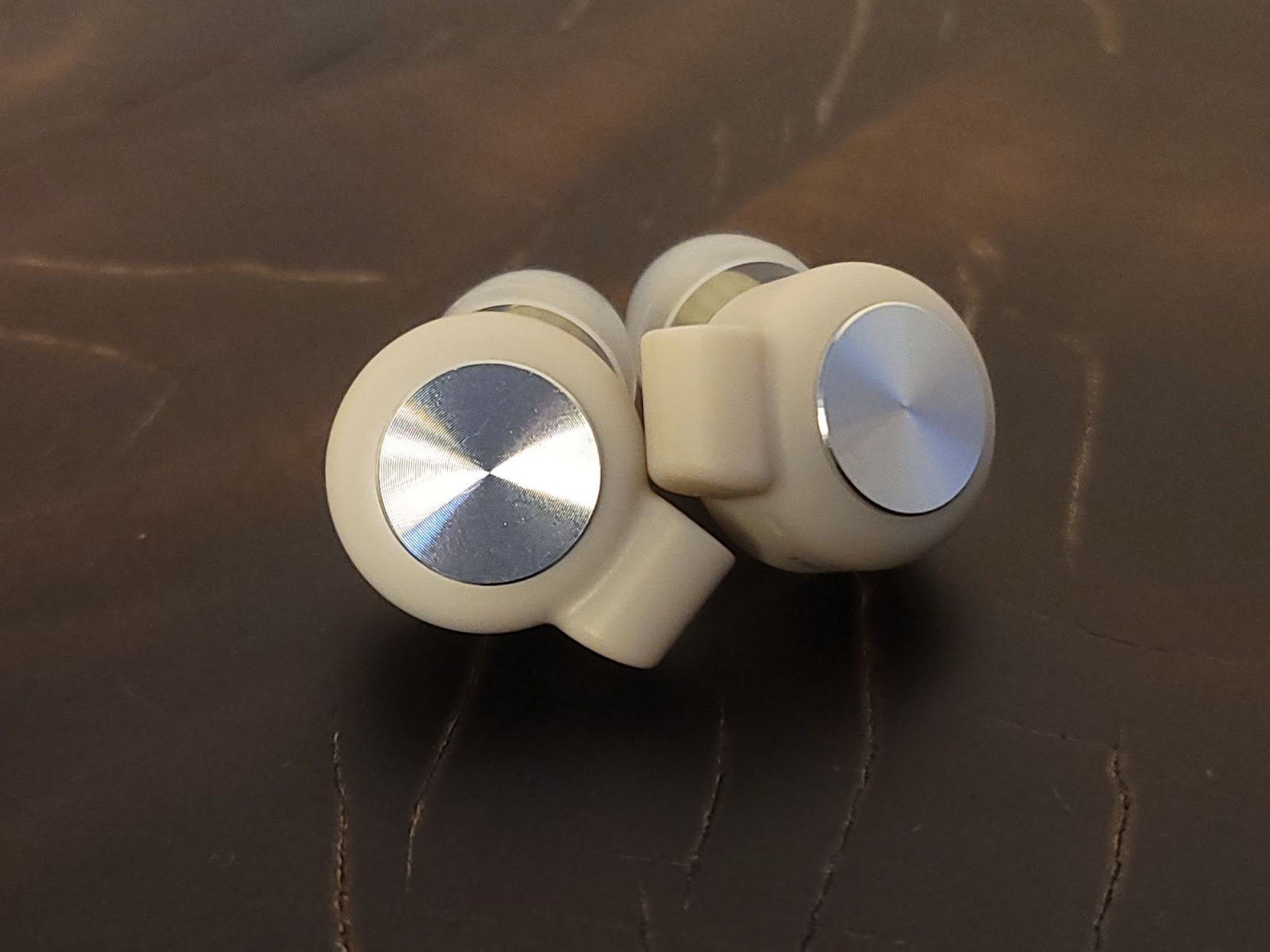
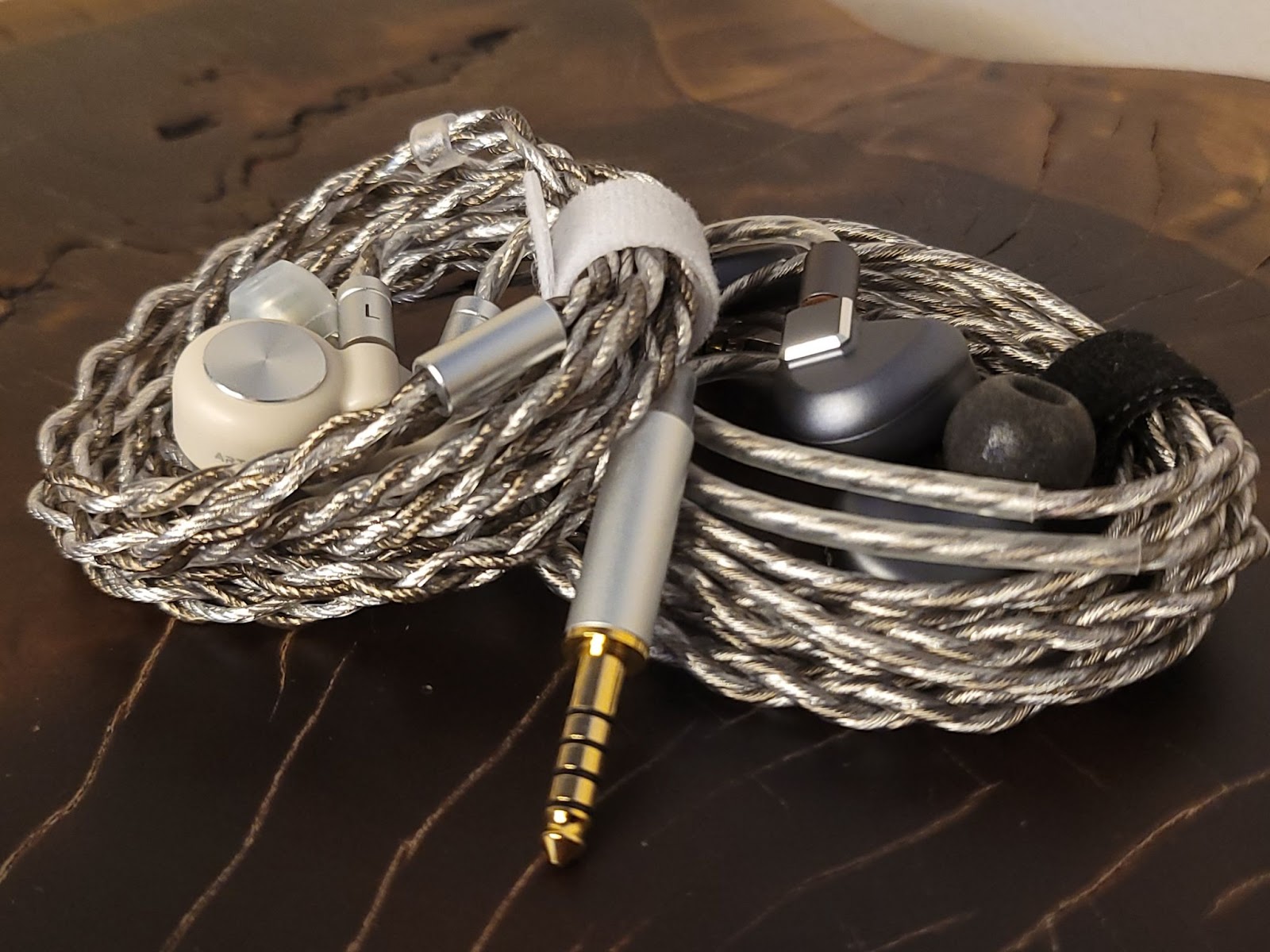
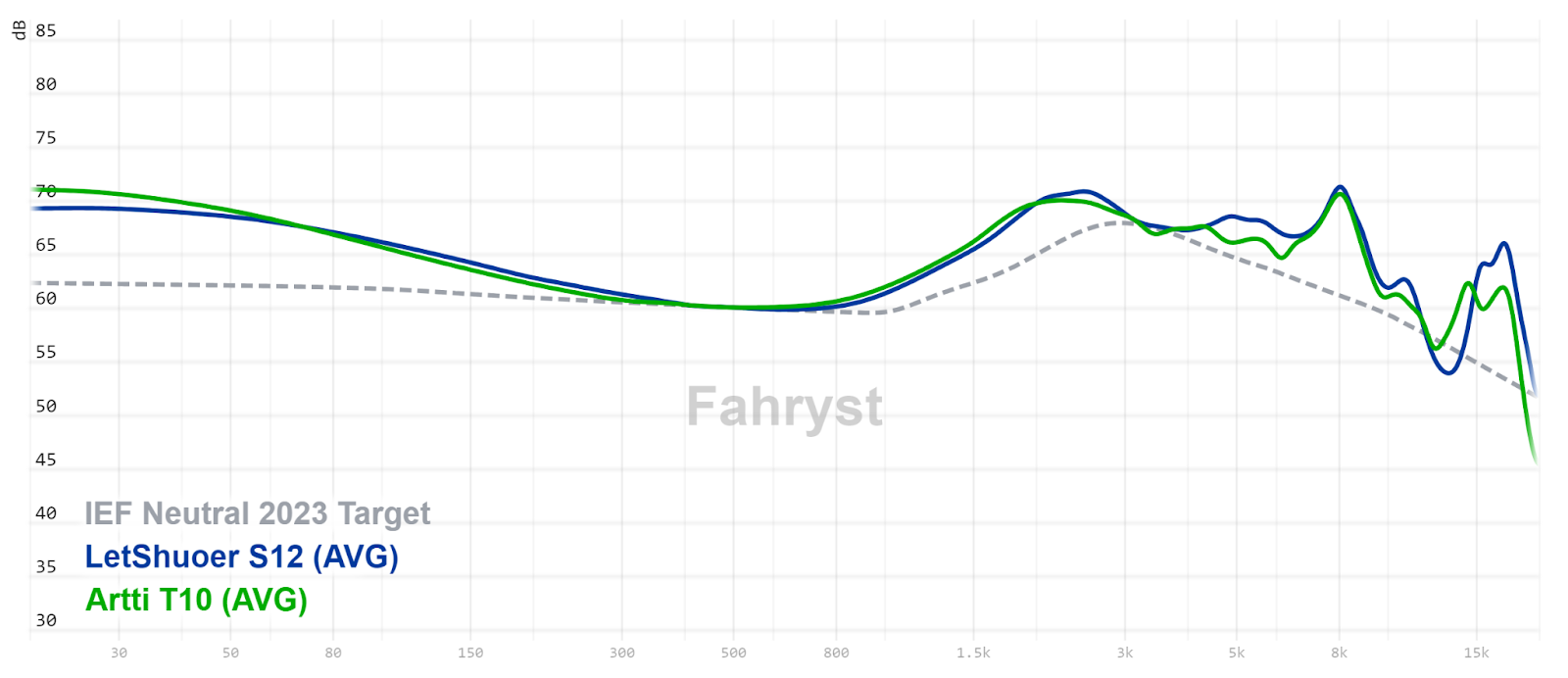
I’m not gonna lie, I had high expectations for T10. If it was just a cheaper S12, that would already be a win but surpassing that? I wasn’t expecting that at all. These last few weeks, I didn’t have much time to listen to my other planar IEMs and headphones and while reviewing T10 I noticed how much I missed this sound. It could easily be a 5-star review at the price T10 is offered. However that would imply that T10 is a perfect IEM, which it isn’t. It still has some quirks that other planar IEMs have, like sounding a little dry and intense. But for 70 USD (actually it can usually be found for less than 50 USD on aliexpress) I don’t know why someone looking for technicalities would buy anything else below 100 USD.
Artti T10 is the first IEM Artti has released. Before T10, I reviewed their R1, which was a 3 Dynamic Driver IEM. While it was tuned very well, it didn’t exactly suit my taste. I was expecting the T10 to be better for me because of how it measured pretty much the same as the other planars in the market with a cheaper price tag. Coming at 69 USD MSRP, is T10 the cheapest “good” planar?
Disclaimers
I bought the Artti T10 with a discount in exchange for a review. As I always say, everyone is biased one way or another so take everything you read with a grain of salt. Also I will try to be more concise and to the point in my reviews from now on without worrying about the word count etc. If you have any questions, please ask me in the comments and I will try to answer them to the best of my abilities.
Configuration, Build and Accessories of Artti T10
Artti T10 uses a 14.2 mm planar magnetic driver. This driver is probably the same that has been extensively used by the other manufacturers including LetShuoer in their S12, S12 Pro and Z12. One thing however, the T10 is harder to drive than my S12. It’s not impossible to drive but you should get better results with a decent dongle, DAP or something like that.
Packaging and accessories is again similar to the LetShuoer offerings just like R1. Actually everything is identical with R1 except the shell material, tip and cable colors.
The Shells of the T10 are plastic, and a very cheap one at that. It might be the cheapest feeling plastic on an IEM I’ve ever seen. At least it is light and very comfortable. Nozzles are angled and rather long allowing a deeper insertion.
Cable that comes with T10 is probably the same one that comes with LetShuoer’s DZ4, a 4 core silver plated copper with 4.4 mm and 3.5 mm options. I can say that it’s one of the better stock cables I’ve got. Both LetShuoer and Artti deliver in that regard.
Apart from the cable, T10 again comes with two sets of tips, one wide bore and one regular. Included case is a fabric one identical to the one that came with the R1.
Sound of Artti T10
Tonality
If you have used planar magnetic IEMs before, Artti T10 would come very familiar with a few refinements. Like the usual planar fashion, bass decay is fast and the feeling is rather dry. Tuning is subbass focused with nice grunt and rumble. Still I can see some people left wanting for a little more quantity.
Mids on the T10 again well tuned and mostly on point, upper mids however, are forward and borderline shouty. Newest planar IEMs moved away from this approach but T10 followed its predecessors in that regard.
Treble, like S12 and others, is emphasized. However it mostly stays on the safe side without getting too sizzly and splashy. I didn’t feel fatigued even after hours of listening.
Technicalities
Planar magnetic IEMs always impress with their technicalities. Personally, I think you can’t get something technically better than planars below 500 USD if you don’t mind the timbre of course. T10 is no different in that regard, it is as resolving and detailed as its predecessors. It also has a very sharp imaging and feels decently spacious. Again like other planars, timbre is not exactly the best but there is an improvement here too. If you listen to T10 after a good single DD, you notice it sounds off but in a vacuum it does a good job. As always, a comparison will give more context to what I tried to describe.Comparisons
Artti T10 vs LetShuoer S12
The similarity in the graphs is uncanny. So much so that I thought T10 is just a recycled S12. But A/B comparison proved otherwise.- T10 is harder to drive.
- Graphs may look almost identical but differences are more substantial than the graphs indicate, probably because of the insertion depth of the nozzles. Shell materials and other differences also might be the cause.
- S12 has slightly more body. Bass impact is similar. T10 extends better into the subbass with more rumble.
- Tuning in mid frequencies is more or less the same. They are both forward in the upper mids. Vocals are intimate and borderline shouty. Moreso on the S12.
- Both have some treble emphasis and intensity. S12 is harsher, more intense and more prone to sibilance. I usually use my S12 with foam tips and after a while get fatigued. I didn’t have such an issue with T10.
- Timbre is better on T10 although it still has the metallic sizzly planar timbre. S12 has more air and sounds slightly more open.
- Both are very resolving and detailed.That is the trademark of planars. But S12 feels like it spoon feeds you the details with more treble emphasis, T10 not so much.
- They both have laser sharp imaging. Staging is also pretty good on both. They sound open and wide. S12’s headstage might be slightly wider.
Conclusion
I’m not gonna lie, I had high expectations for T10. If it was just a cheaper S12, that would already be a win but surpassing that? I wasn’t expecting that at all. These last few weeks, I didn’t have much time to listen to my other planar IEMs and headphones and while reviewing T10 I noticed how much I missed this sound. It could easily be a 5-star review at the price T10 is offered. However that would imply that T10 is a perfect IEM, which it isn’t. It still has some quirks that other planar IEMs have, like sounding a little dry and intense. But for 70 USD (actually it can usually be found for less than 50 USD on aliexpress) I don’t know why someone looking for technicalities would buy anything else below 100 USD.
Jarlaxle
100+ Head-Fier
Pros: Good build
Great Price
Included accessories (modular cable, tuning nozzles, 7 pair of tips, case)
Balanced tuning with great mids and impactful bass
Great Price
Included accessories (modular cable, tuning nozzles, 7 pair of tips, case)
Balanced tuning with great mids and impactful bass
Cons: Fatiguing
Mediocre technicalities
Tuning nozzles should have been implemented better
Occasional harshness
Mediocre technicalities
Tuning nozzles should have been implemented better
Occasional harshness
TRN is one of the Chinese IEM makers that are better known for their budget offerings. They haven’t released a noticeable product for a while and seemed to have been left behind by their competition as other companies also released some bangers in their territory. But then they dropped Conch. For 35 USD, an IEM with metal shells, a cable with interchangeable terminations, 3 pairs of different tuning nozzles, decent selection of tips and an aluminum carrying case is still unthinkable below 100 USD.
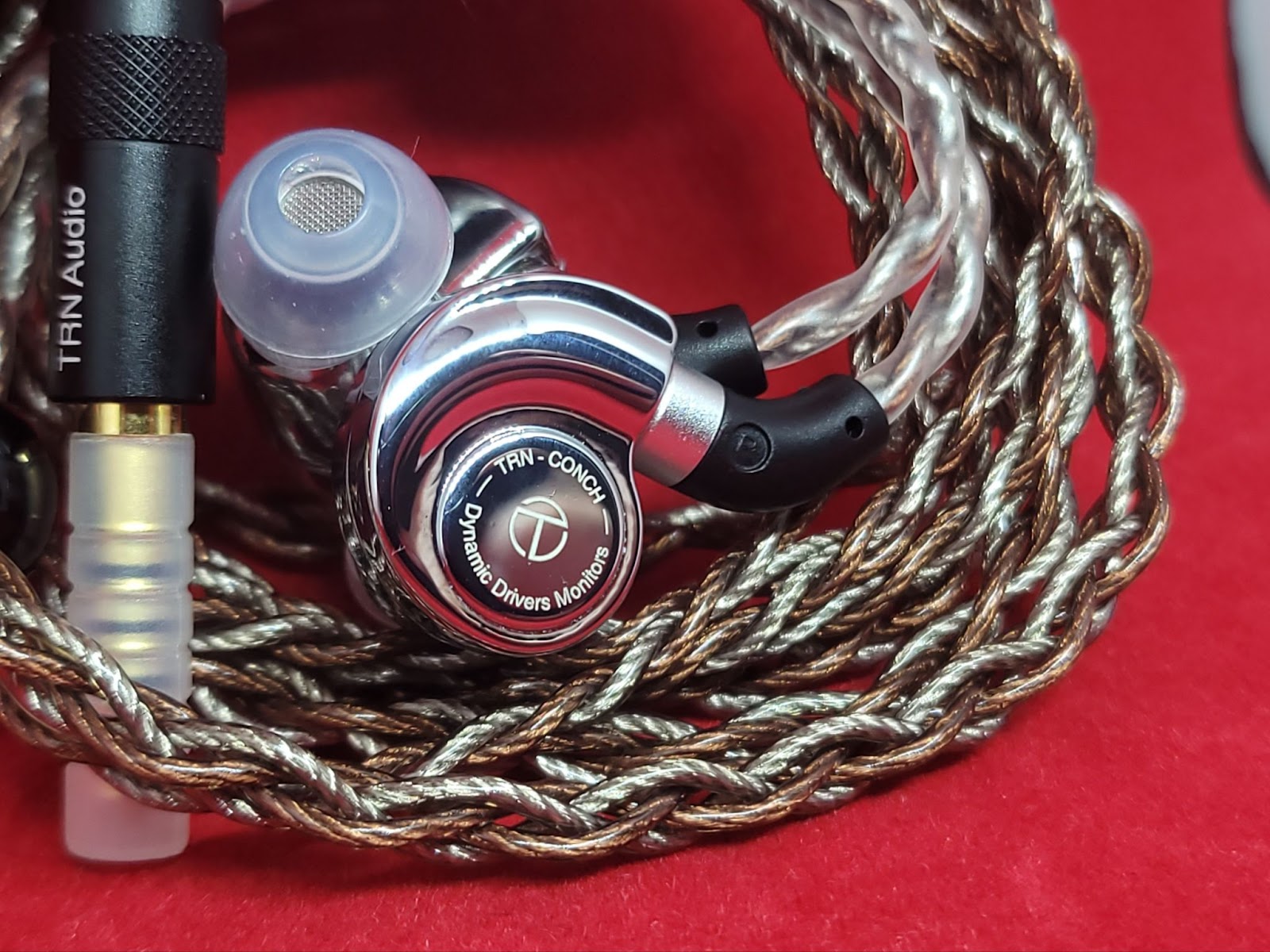
TRN Conch was provided to me by Cloris from shenzhenaudio.com for free. As I always say, everyone is biased one way or another so take everything you read with a grain of salt. Also I will try to be more concise and to the point in my reviews from now on without worrying about the word count etc. If you have any questions, please ask me in the comments and I will try to answer them to the best of my abilities.
With my enthusiasm above, I kind of spoiled this part. Yes earpieces of conch are fully made out of metal, and a heavy one at that. They are heavier than Simgot EW200 for example. Although they are fairly comfortable, weight causes some fatigue for me after a while.
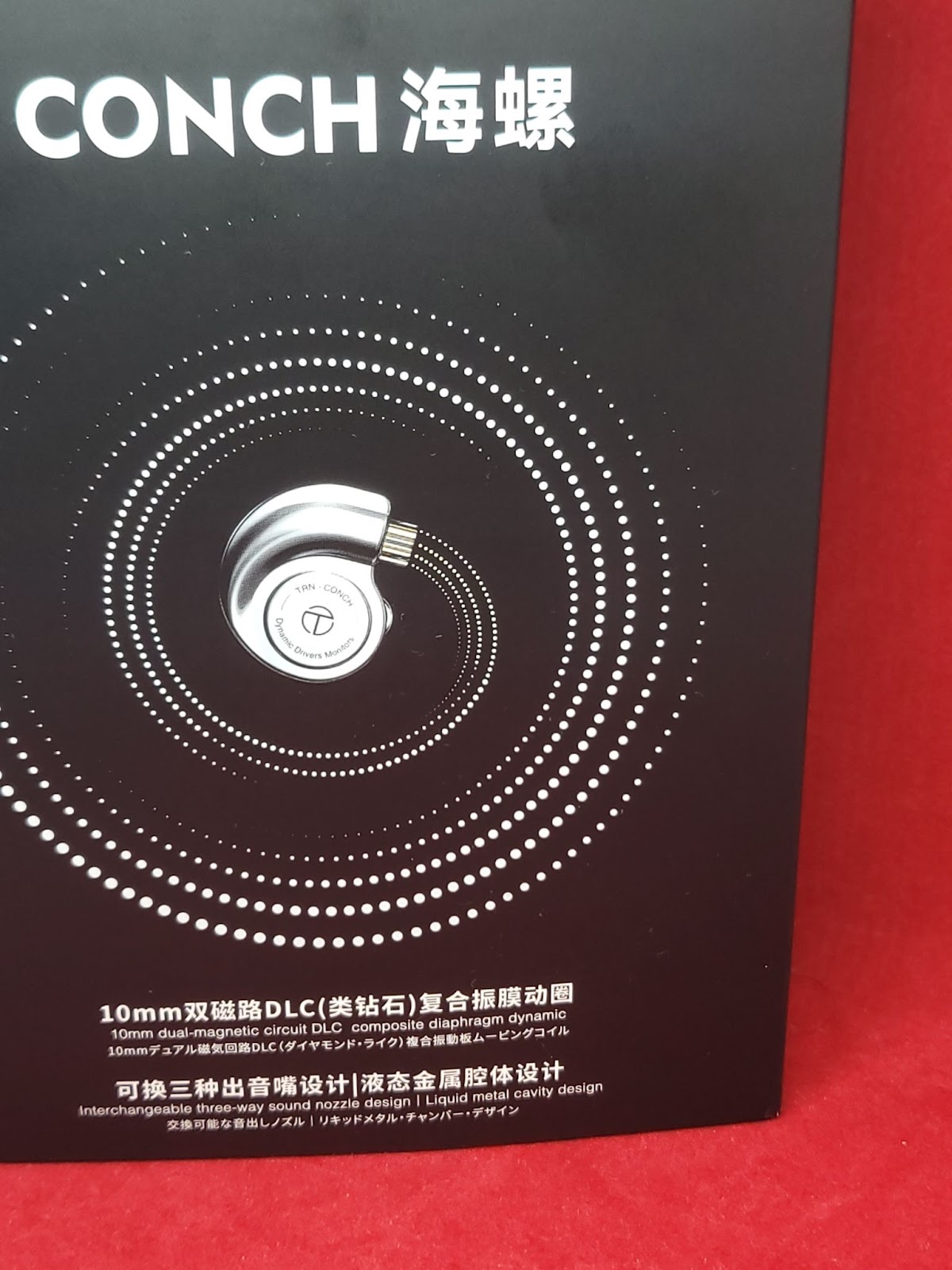
Conch uses a QDC or C-pin type of connector. Cable provided with the IEMs is a silver plated OFC one. It’s nothing too impressive but definitely better than probably anything that comes with an IEM at this price. Furthermore, TRN usually only sends one termination with their modular cables but they included all three (3.5 mm, 2.5 mm and 4.4 mm) terminations in the packaging.
Tip inclusion is also very generous. There are a total of two sets of silicon and a pair of memory foam tips. I should mention that one of the sets is theirT-Ear tips which I used throughout all of my listening. Aluminum case is also identical to the cases that come with Whizzer Kylin IEMs.
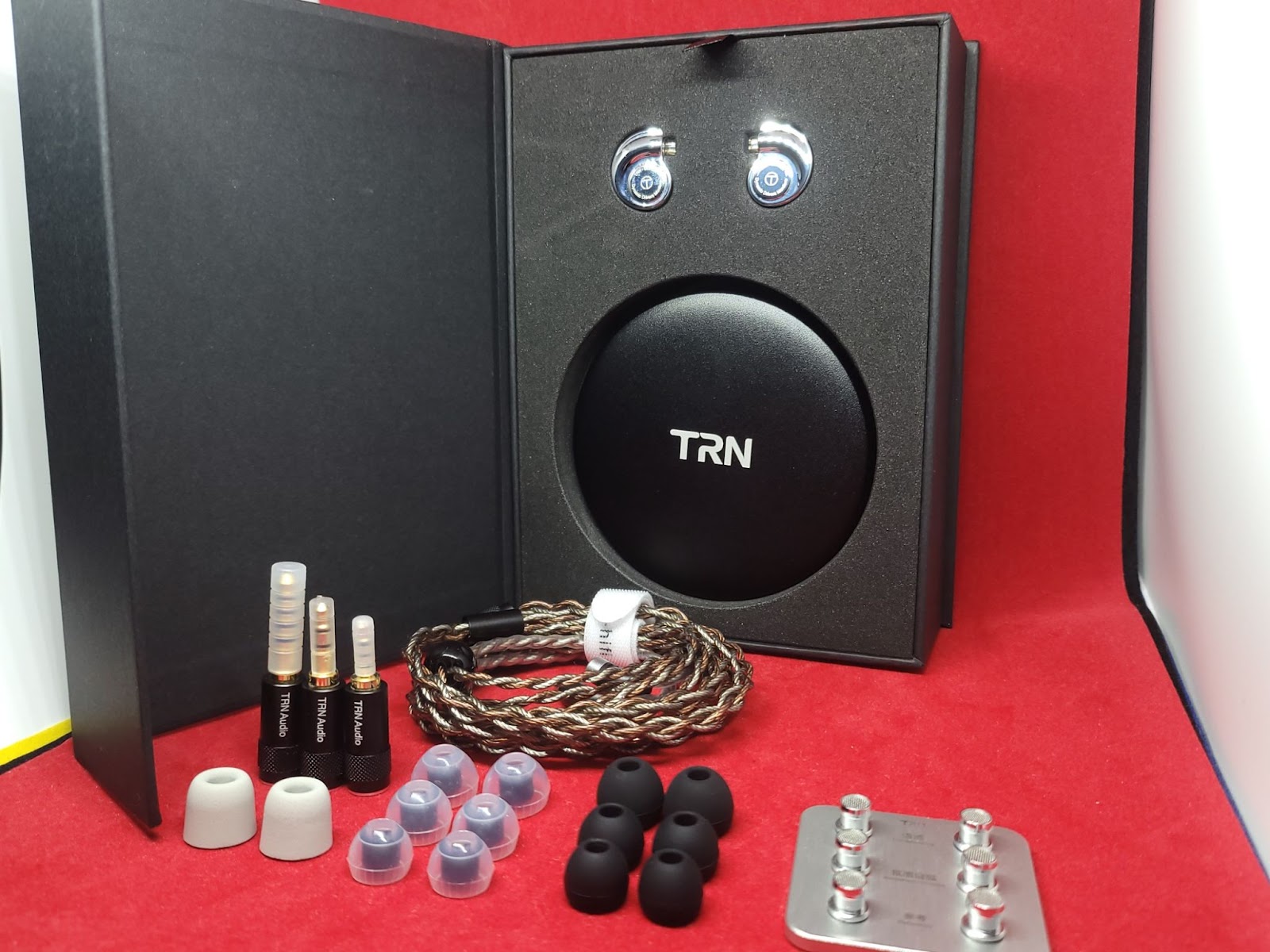
Balanced could be the best word to describe Conch’s tonality but there is more to it than that. First of all there are tuning nozzles. Unfortunately, only the red nozzles were usable for me. Even the black nozzles were too shouty, bright and harsh so I couldn’t even dare to try the blue ones. While red nozzles sounded good, they kind of held back the IEMs a little so something in between red and black nozzles would have been great. Modders?
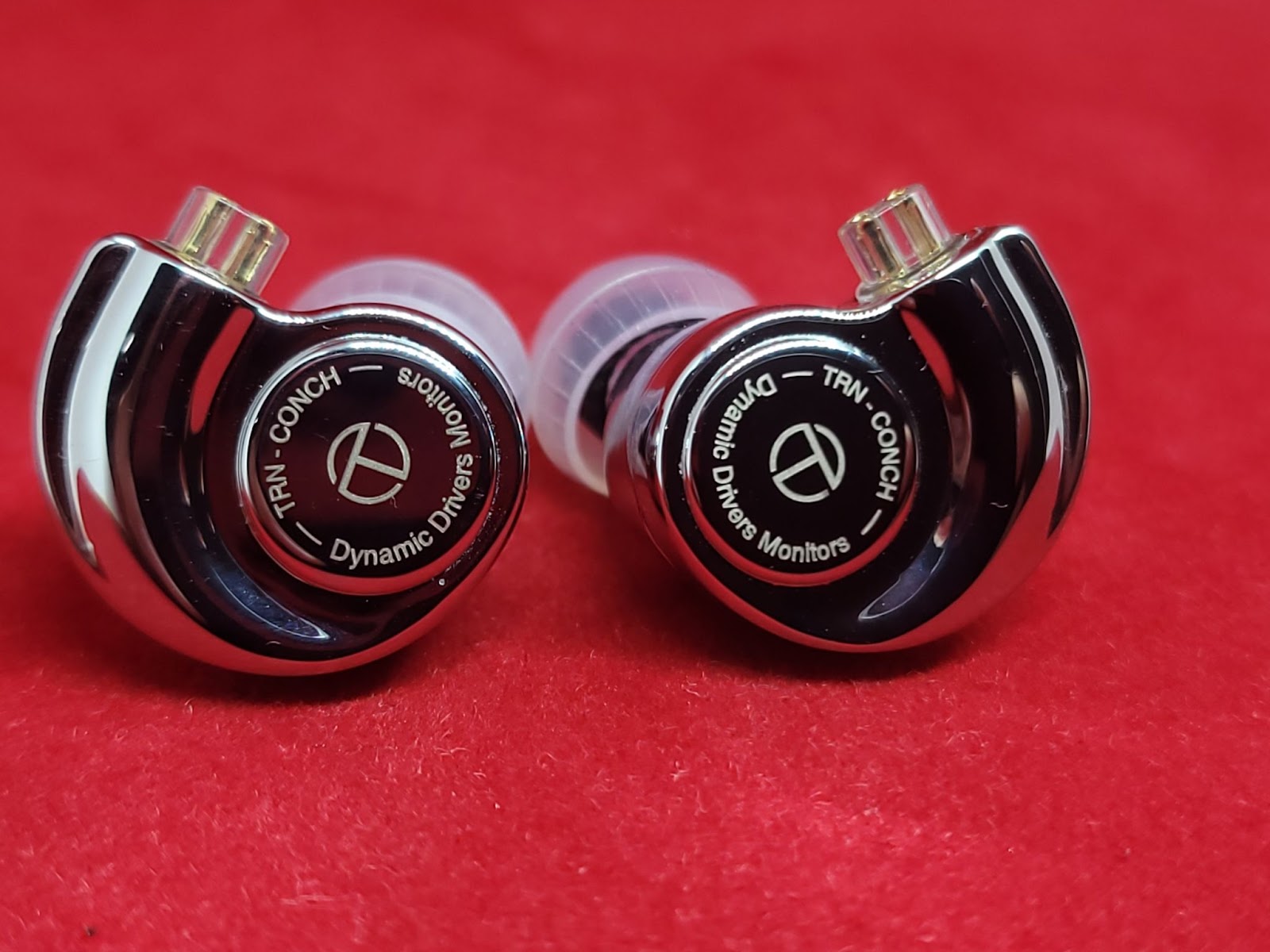
Bass of Conch has a good impact and rumble. Bass quality isn’t something special but at this price I wasn’t expecting too much anyway. Mids were also on point. Bass doesn’t overwhelm mids and mids doesn’t overshadow bass. However treble on Conch is kind of a mixed bag. While it isn’t exactly bright with red nozzles, there is excess upper energy in the upper treble which gets to you after listening for a while. The 8k peak seen on the graph isn’t just a coupler artifact, I think there exists a peak around 7k or 8k to some degree. Conch doesn’t sound piercing mind you, but rather grating. Other than that Conch sounds sparkly and splashy in the treble, maybe a little too much.
Unfortunately Conch doesn’t impress with its technical capabilities. While it is sufficiently revealing, the head stage it creates is rather narrow. Timbre is also takes a hit because of the treble quirk I mentioned. These parameters should make more sense in the comparisons section where I give more context.
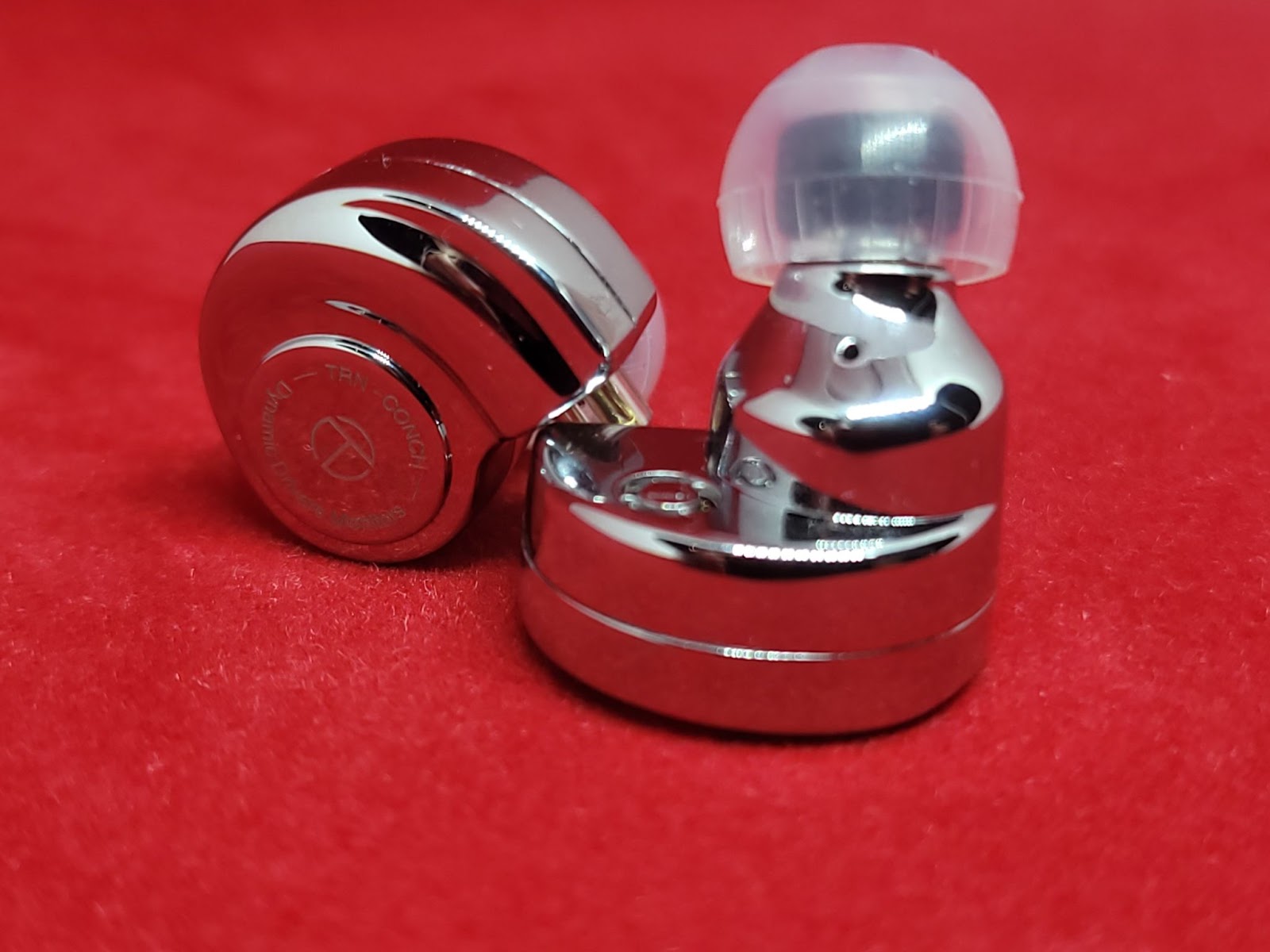
EW200 for me, is the benchmark below 50 USD. So comparing Conch to EW200 is a given to determine the place of Conch in the market.
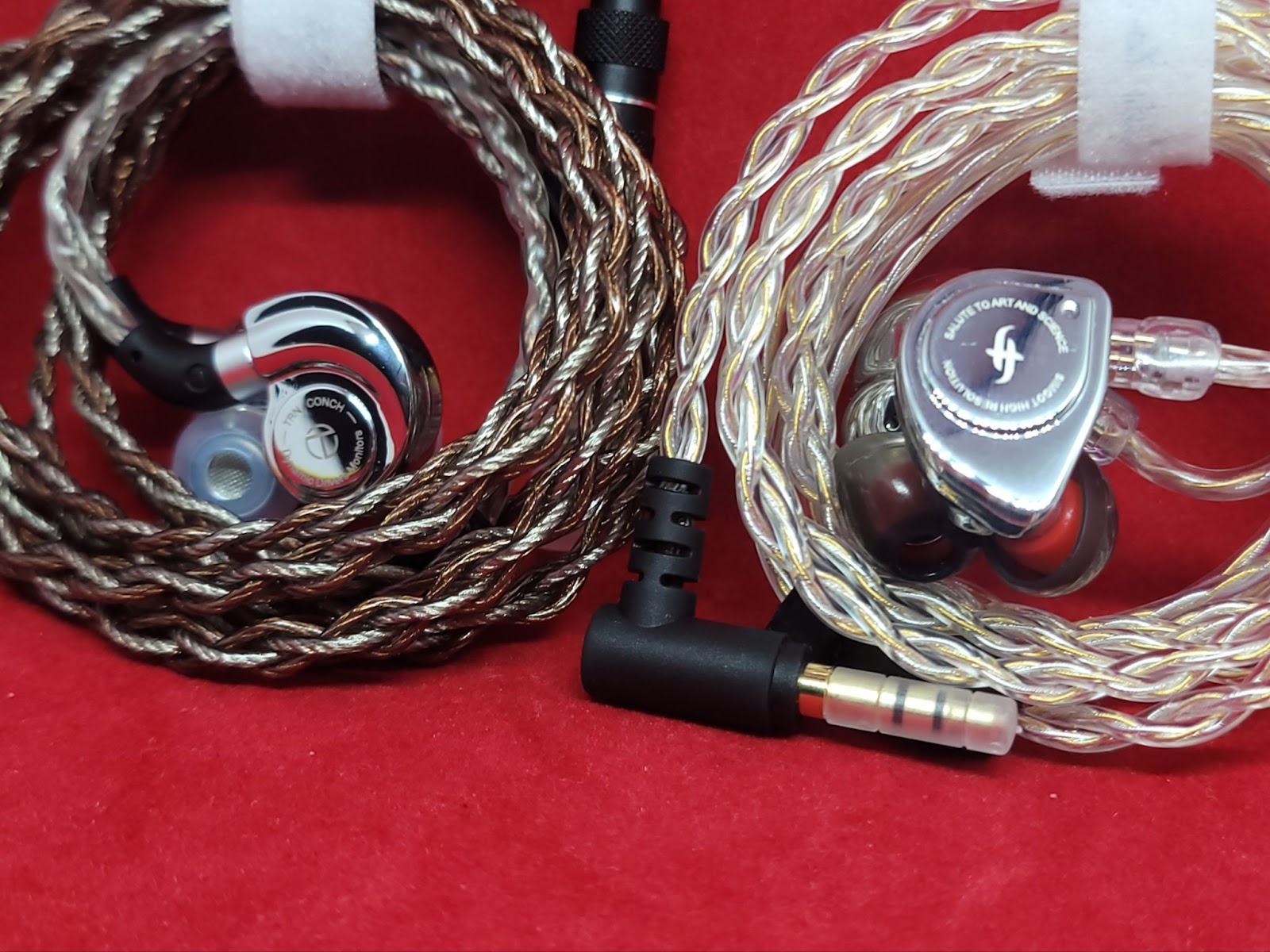
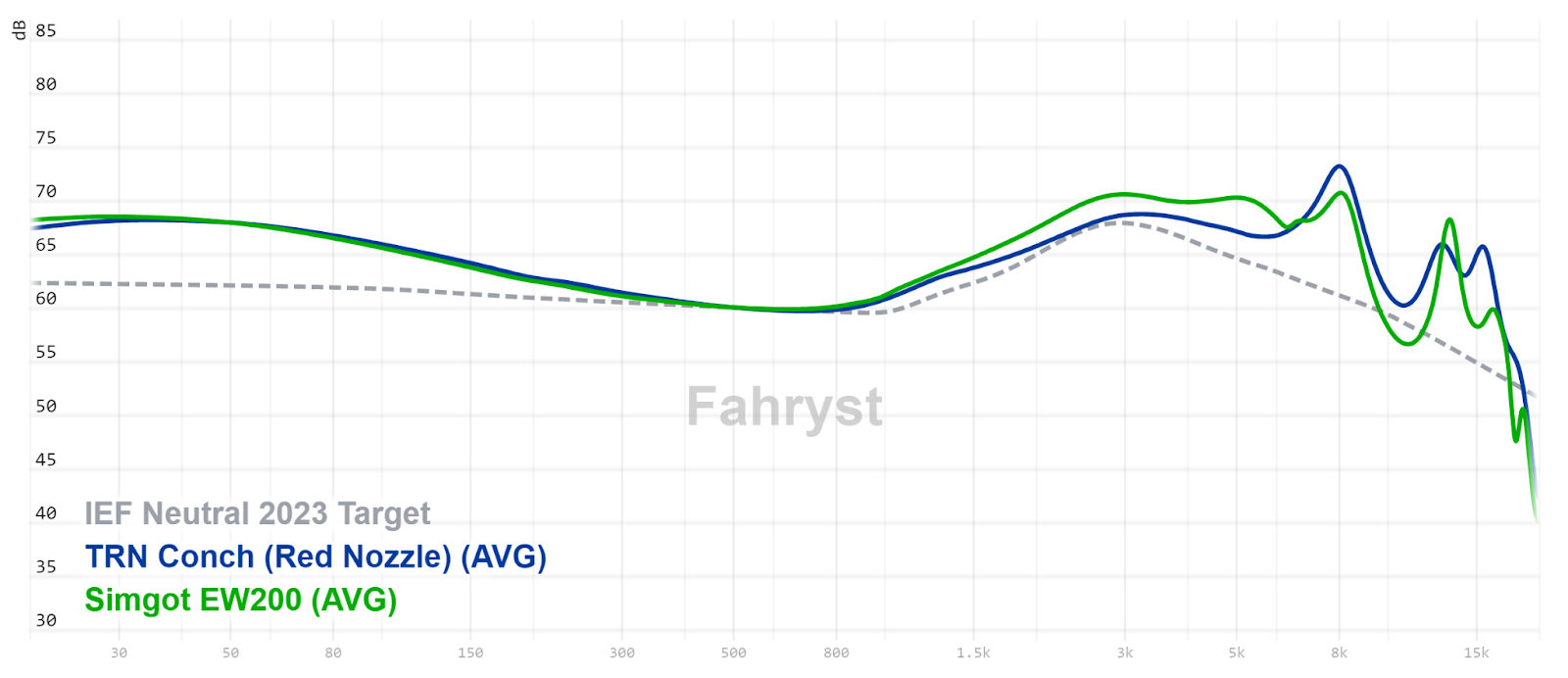
Z300 has been one of my favorite IEMs below 50 USD for some time with its build quality and nice cable as much as sound quality. Also they have somewhat similar sound signatures.
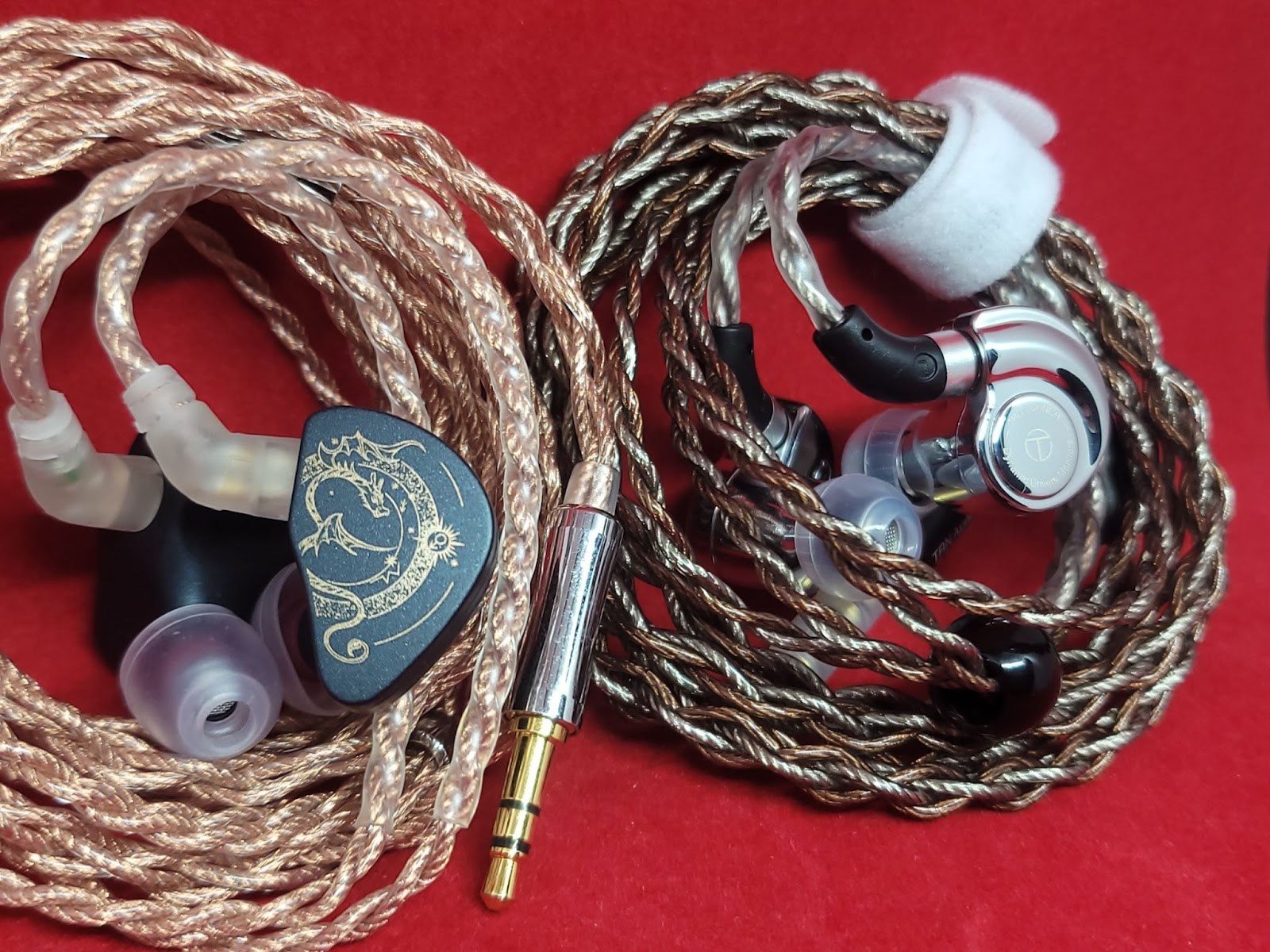
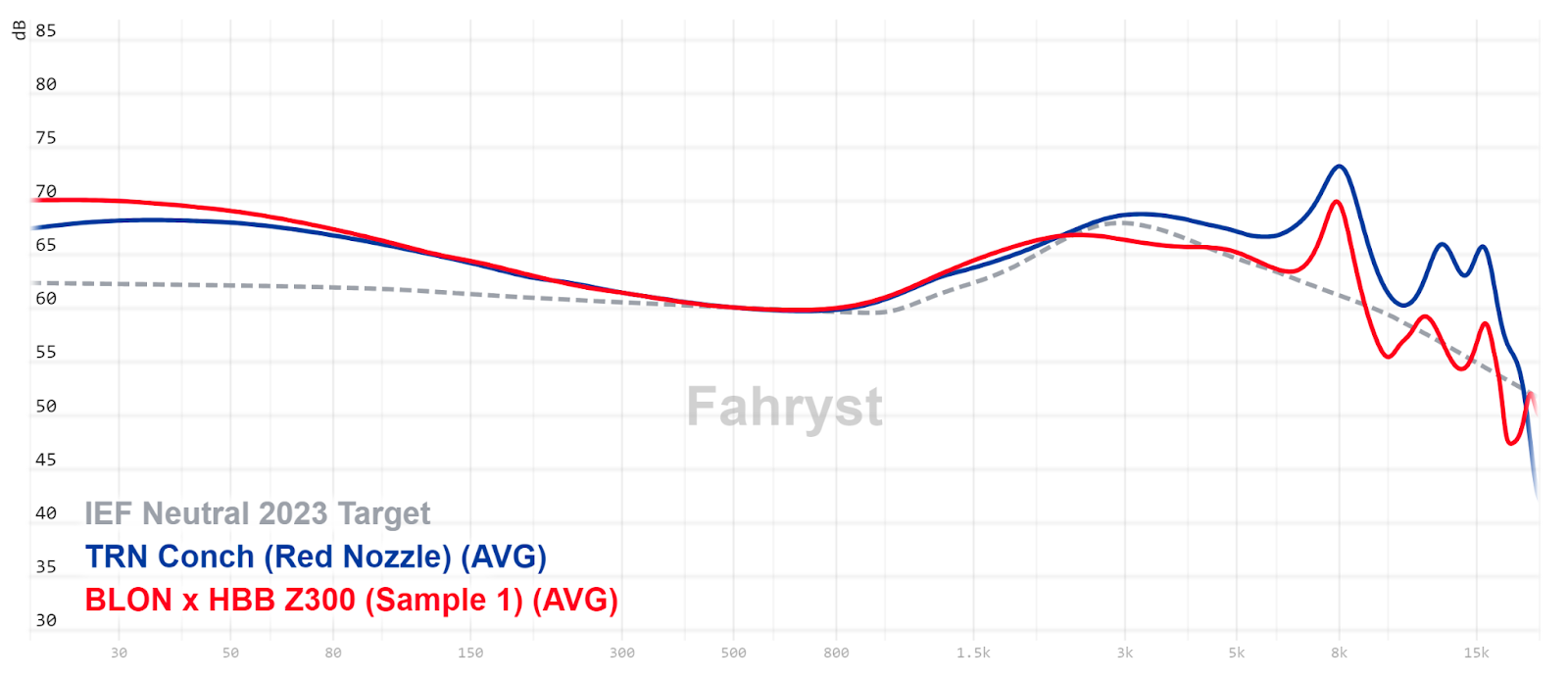
While TRN Conch isn’t the best performer in its price range, the value proposition it offers is hard to ignore. I have seen many people happy with their purchases. It has a balanced tuning that is enjoyable to listen to most of the time. But after long listening sessions, fatigue was inevitable for me. If you use EQ or like modding or aren’t sensitive to upper treble, there is definitely a big potential here. Other than that, the cable and accessories probably would cost you more if you tried to buy them separately. For the price, I think EW200 is still a better performer but Conch is a very good second alternative with a better package.
Disclaimers
TRN Conch was provided to me by Cloris from shenzhenaudio.com for free. As I always say, everyone is biased one way or another so take everything you read with a grain of salt. Also I will try to be more concise and to the point in my reviews from now on without worrying about the word count etc. If you have any questions, please ask me in the comments and I will try to answer them to the best of my abilities.
Build and Accessories of TRN Conch
With my enthusiasm above, I kind of spoiled this part. Yes earpieces of conch are fully made out of metal, and a heavy one at that. They are heavier than Simgot EW200 for example. Although they are fairly comfortable, weight causes some fatigue for me after a while.
Conch uses a QDC or C-pin type of connector. Cable provided with the IEMs is a silver plated OFC one. It’s nothing too impressive but definitely better than probably anything that comes with an IEM at this price. Furthermore, TRN usually only sends one termination with their modular cables but they included all three (3.5 mm, 2.5 mm and 4.4 mm) terminations in the packaging.
Tip inclusion is also very generous. There are a total of two sets of silicon and a pair of memory foam tips. I should mention that one of the sets is theirT-Ear tips which I used throughout all of my listening. Aluminum case is also identical to the cases that come with Whizzer Kylin IEMs.
Sound of TRN Conch
Tonality
Balanced could be the best word to describe Conch’s tonality but there is more to it than that. First of all there are tuning nozzles. Unfortunately, only the red nozzles were usable for me. Even the black nozzles were too shouty, bright and harsh so I couldn’t even dare to try the blue ones. While red nozzles sounded good, they kind of held back the IEMs a little so something in between red and black nozzles would have been great. Modders?
Bass of Conch has a good impact and rumble. Bass quality isn’t something special but at this price I wasn’t expecting too much anyway. Mids were also on point. Bass doesn’t overwhelm mids and mids doesn’t overshadow bass. However treble on Conch is kind of a mixed bag. While it isn’t exactly bright with red nozzles, there is excess upper energy in the upper treble which gets to you after listening for a while. The 8k peak seen on the graph isn’t just a coupler artifact, I think there exists a peak around 7k or 8k to some degree. Conch doesn’t sound piercing mind you, but rather grating. Other than that Conch sounds sparkly and splashy in the treble, maybe a little too much.
Technicalities
Unfortunately Conch doesn’t impress with its technical capabilities. While it is sufficiently revealing, the head stage it creates is rather narrow. Timbre is also takes a hit because of the treble quirk I mentioned. These parameters should make more sense in the comparisons section where I give more context.
Comparisons
TRN Conch (Red Nozzles) vs. Simgot EW200
EW200 for me, is the benchmark below 50 USD. So comparing Conch to EW200 is a given to determine the place of Conch in the market.
- Bass quantity is similar on both, but Conch is more powerful and impactful. It also has more body since balance skews towards lower frequencies with red nozzles. EW200, on the other hand extends deeper into the subbass.
- Vocals are more forward on EW200, they are borderline shouty. With red nozzles Conch’s mids and vocal performance are pretty much on point.
- EW200 is brighter and sounds more open. Conch however, has more upper treble energy. It is sparklier but also harsher. Compared to EW200, Conch is splashy and tends to get sibilant. With red nozzles it’s not really piercing but it gets grating the more you listen to.
- Staging is better on EW200. It extends further in all three dimensions and is more believable. Conch’s headstage feels cramped compared to EW200.
- EW200 is more resolving but Conch is no slouch either. Imaging, layering and separation however is much better on EW200. Timbre is also much more lifelike on EW200.
TRN Conch vs. Blon x HBB Z300
Z300 has been one of my favorite IEMs below 50 USD for some time with its build quality and nice cable as much as sound quality. Also they have somewhat similar sound signatures.
- Bass is more prominent on Z300, it also rumbles more but slightly more pillowy. Conch’s bass is tighter.
- Vocals are richer and more intimate on Z300.
- Conch is brighter and also more susceptible to sibilance.
- Timbre is better on Z300 as it doesn’t have the metallic shimmer that Conch has.
- Conch is more revealing but not necessarily more resolving. They are pretty much on par in terms of resolution.
- Z300’s headstage is slightly wider and deeper. It’s also slightly better at imaging.
Conclusion
While TRN Conch isn’t the best performer in its price range, the value proposition it offers is hard to ignore. I have seen many people happy with their purchases. It has a balanced tuning that is enjoyable to listen to most of the time. But after long listening sessions, fatigue was inevitable for me. If you use EQ or like modding or aren’t sensitive to upper treble, there is definitely a big potential here. Other than that, the cable and accessories probably would cost you more if you tried to buy them separately. For the price, I think EW200 is still a better performer but Conch is a very good second alternative with a better package.
Jarlaxle
100+ Head-Fier
Pros: Highly detailed and technical
Bright but balanced tuning with no real harshness
Very comfortable
Great price to performance ratio
Bright but balanced tuning with no real harshness
Very comfortable
Great price to performance ratio
Cons: QDC connector (doesn't bother me)
Timbre is slightly off
Can be fatiguing in long listening sessions
Tips come off from the nozzles easily
A little bass light or rather dry
Timbre is slightly off
Can be fatiguing in long listening sessions
Tips come off from the nozzles easily
A little bass light or rather dry
Simgot’s single DD IEMs got countless praises but when they released a 1+4 hybrid, everyone was curious to see how they would perform, myself included. Not only that, with their 109 USD price, they would be one of the cheaper 1+4 hybrids out there. There is no need to raise the hype here since EM6L has been out for a while and some people already named it one of the best releases of 2023.
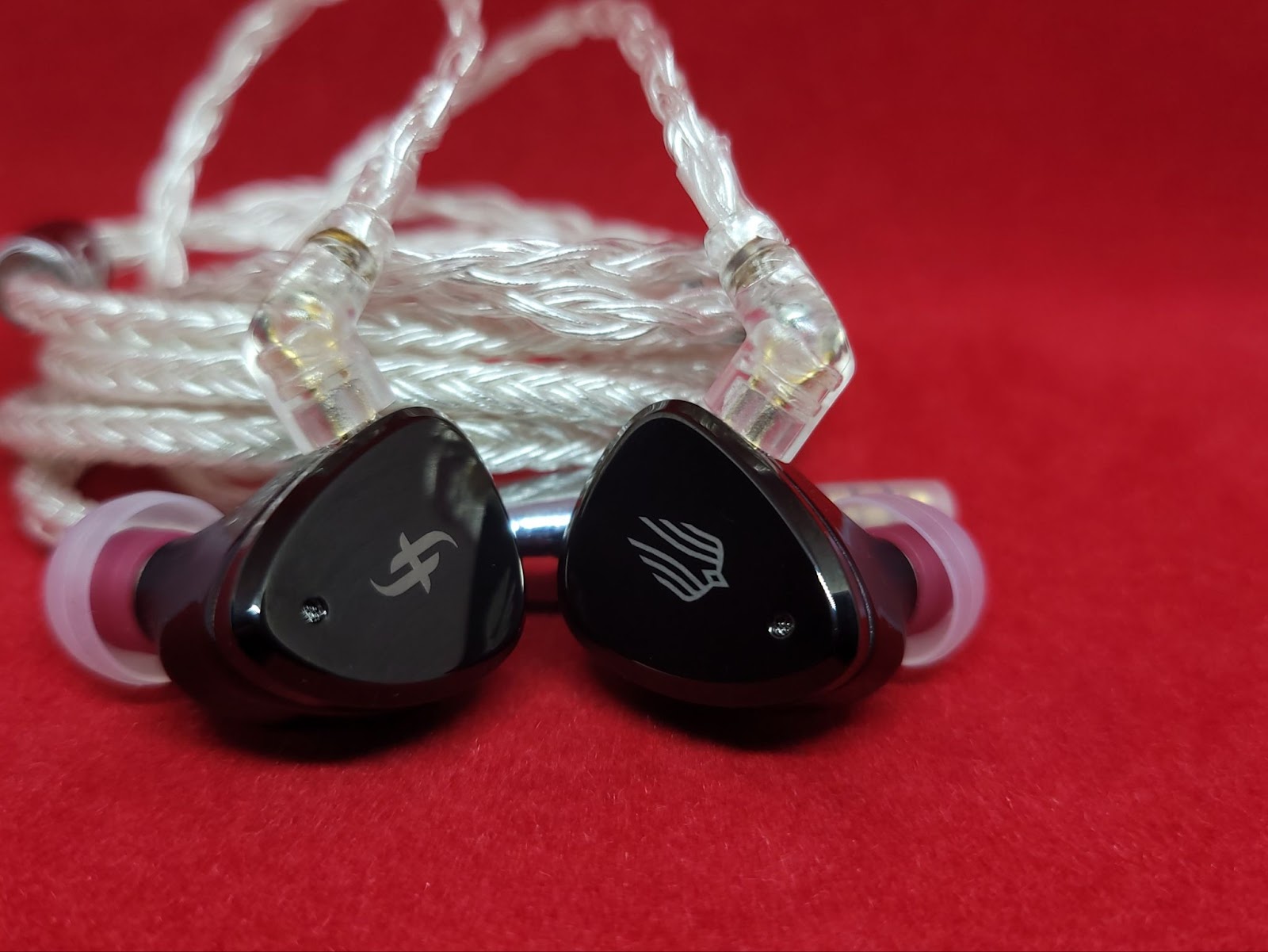
Simgot EM6L Phoenix was provided to me by Simgot for free and I only paid for the customs fee. As I always say, everyone is biased one way or another so take everything you read with a grain of salt. Also I will try to be more concise and to the point in my reviews from now on without worrying about the word count etc. If you have any questions, please ask me in the comments and I will try to answer them to the best of my abilities.
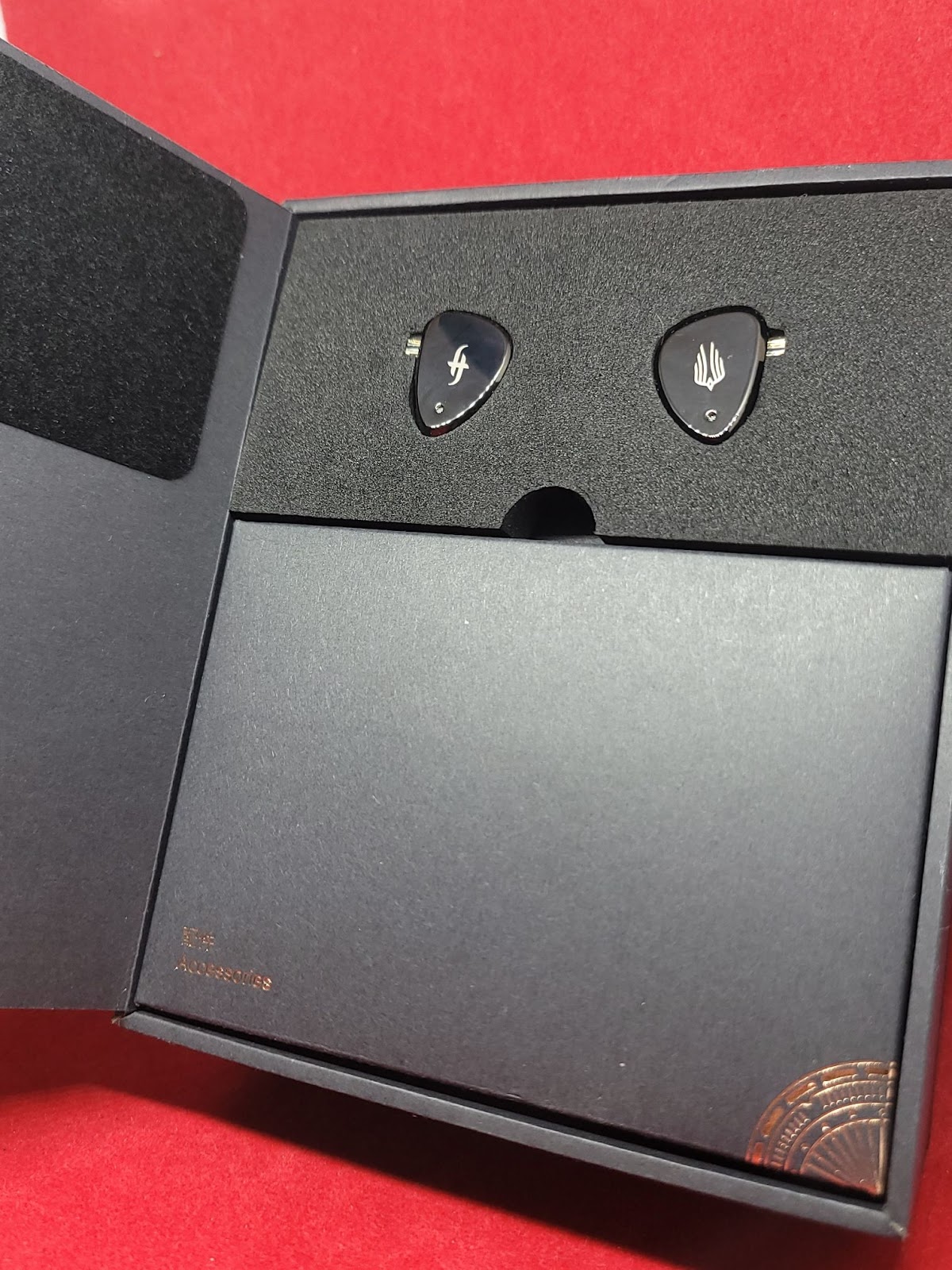
EM6L a.k.a Phoenix is kind of an experimental product from Simgot, at least that is the impression it gave me with some of its aspects. First of all, it is a hybrid, and a 1+4 one at that. It uses a 3-way crossover and has a 3D printed resin shell instead of a metal one Simgot usually uses. Apart from these, connectors used on EM6L are the ones known as QDC or C-pin type which we are familiar with from brands like KZ. They almost make EM6L look cheap but understated dark metal faceplates look gorgeous so I don’t really mind them.
The thing I loved about the build of EM6L is the shell size; they are not huge like other hybrids I used. Ear pieces are light and very comfortable which is a huge plus. Size and shape aren’t much different to usual single DD IEMs but nozzles aren’t angled like other Simgots. A minor gripe of mine here is that nozzles don’t have any contour or lip so some tips easily slips out of the nozzles.
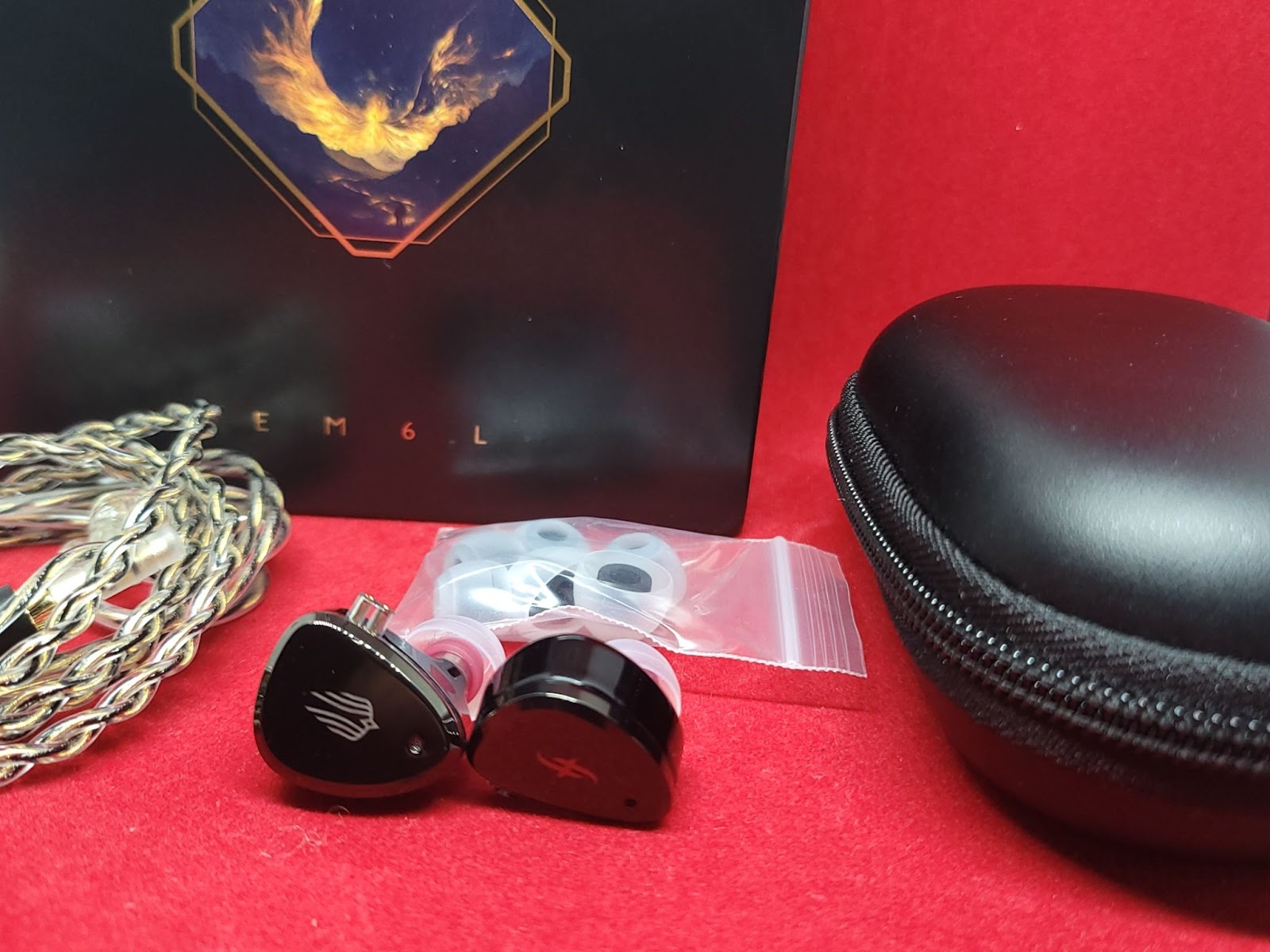
Box and presentation is simple yet well thought out. I loved how Simgot placed an extra piece of felt on the cover where faceplates touch. Not that they needed because faceplates already had protective film on them. Unfortunately though, the box wasn’t abundant with accessories as usual. There was only an unbranded case, a cable and a decent set of tips.
EM6L, like most of the other Simgot IEMs, aims for the Harman 2019 Target and for the most part hugs the line very closely. There are, however, some quirks which may or may not be welcome depending on your tastes or what you think about Harman tuning style.
EM6L Phoenix is bright, there is no denying that, all the Simgot IEMs I have tried are bright. But the balance on EM6L is a little different. Bass on EM6L isn’t very prominent, some may even say they are light in note weight. For me they are just a smidge dry, that’s all. For those who love EA500’s richness, EM6L might not satisfy you, after all EW200 didn’t satisfy them either. Still bass quality is pretty good, that’s what we would expect from Simgot.
Mids are forward and have a fine presence, no surprises there. But again other Simgot IEMs do a little better here tonally. EM6L has a late peaking ear gain, which I’m not a big fan of. Piano, brass instruments and electric guitars have more energy than I’m used to.
Like I said earlier, EM6L is bright, especially the upper treble is very pronounced. This makes them very technical and Simgot somehow managed it without them being too harsh. They can get fatiguing in long listening sessions for some, but I wasn’t too bothered by them. Frequency response graphs don't show the usual 8k resonance peak because there is actually a dip there. While it negates the piercing effect that occurs with drivers of inferior quality, it also makes them lack a certain snap I got accustomed too. Still I prefer this over the piercing effect.
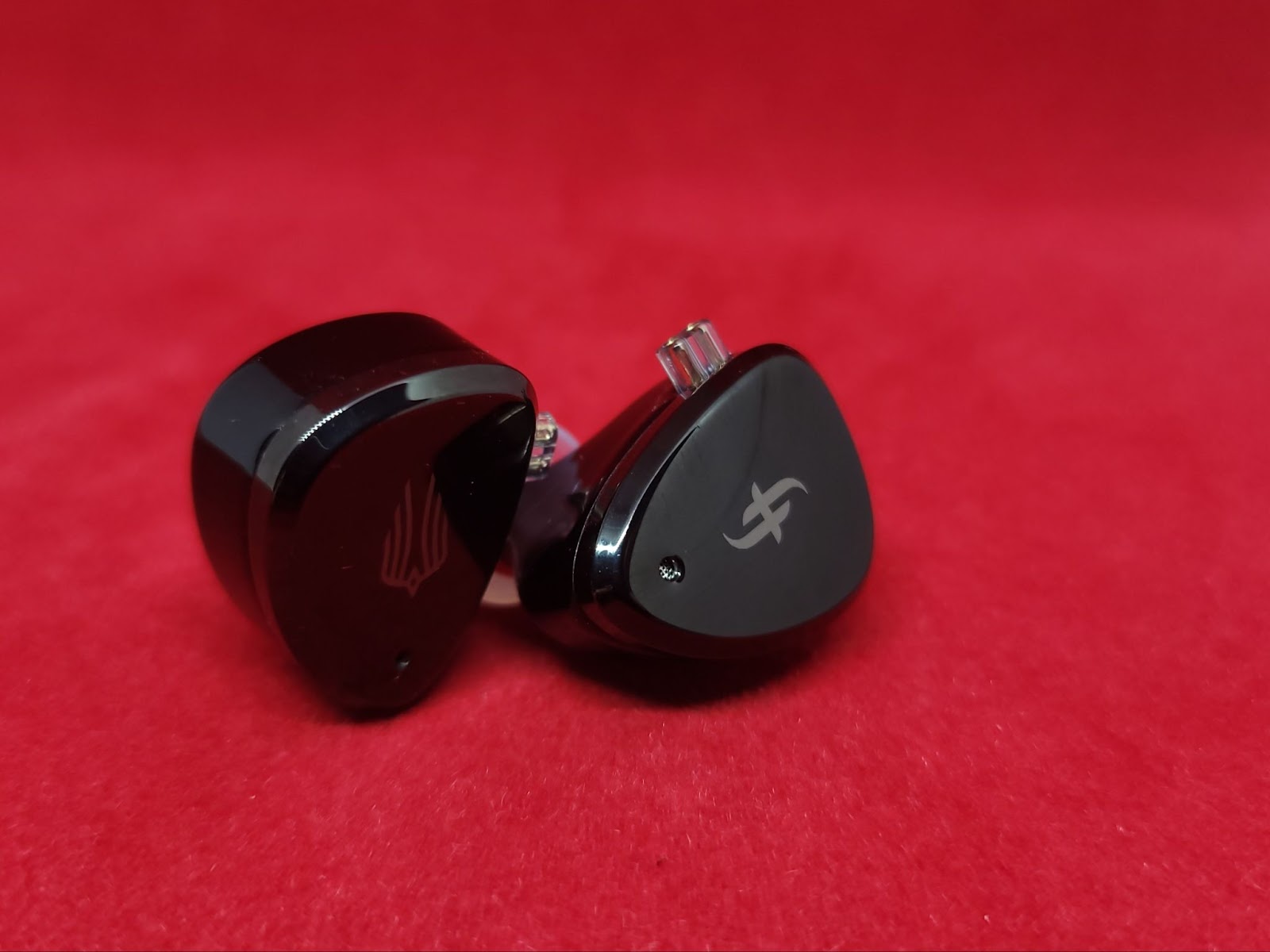
It might have come as I had a lot of negative things to say about EM6L so far, but those were nitpicks at best. They are well tuned but a little quirky, that’s all and they more than make up for those with their technical capability.
First of all, they let me hear lots of nuances I haven’t heard at this price point. They are very detailed and resolving. Like I said earlier, this is mostly attributed to the tuning which is kind of common among the high end sets. Drivers might not be of the highest quality but Simgot managed to get the best out of them. Unfortunately the timbre is slightly off. In fact it was the first thing I noticed when I put them in my ears for the first time. It’s not off putting but noticeable if you come from a very natural sounding set. Staging capabilities are fine but imaging and layering is quite good.
Hexa has been one of the benchmarks below 100 USD and also being a hybrid, it was the most sensible choice for me to do a comparison.
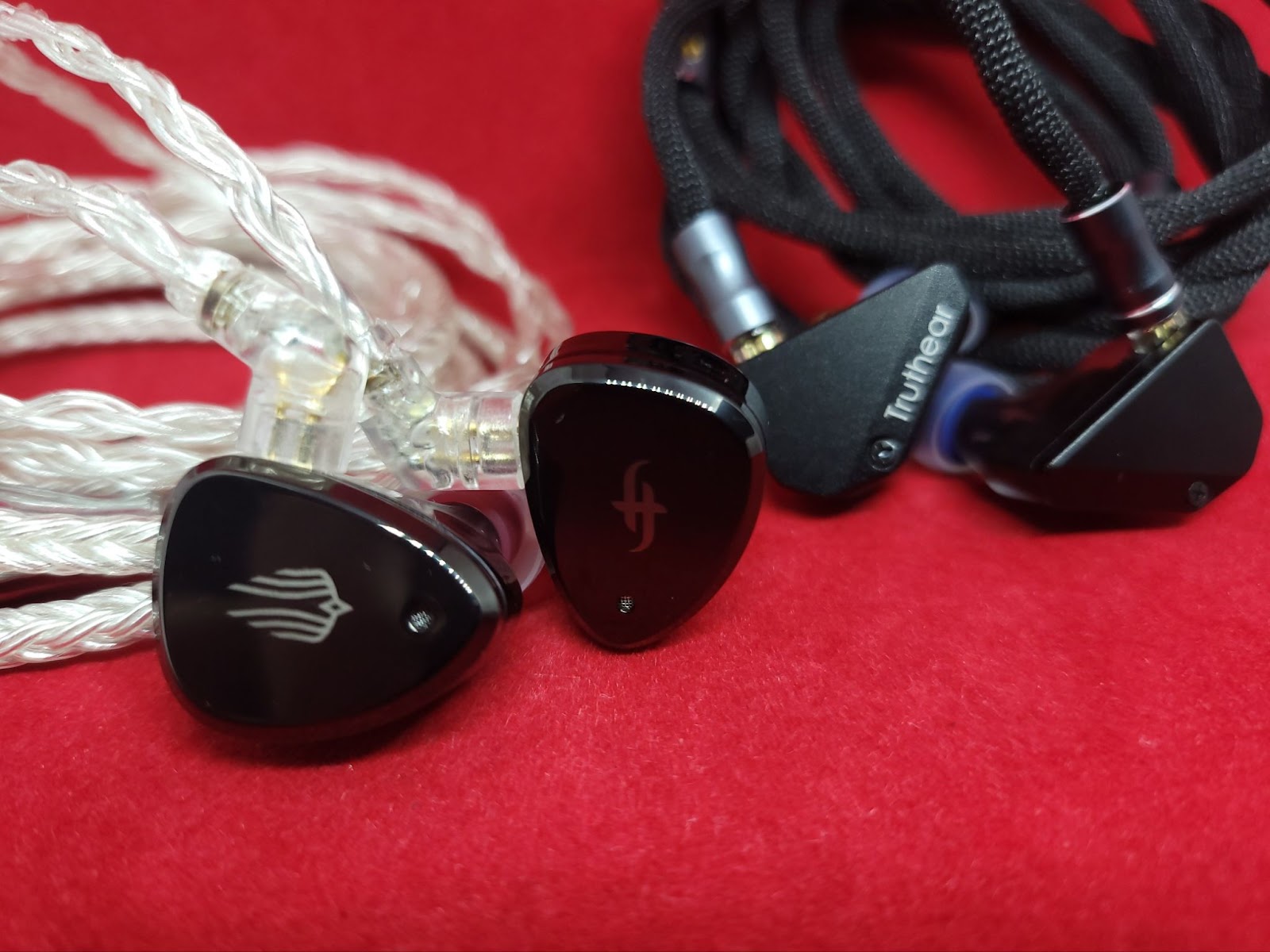
Considering how Hexa is one of the top choices below 100 usd, EM6L trading blows with Hexa is a compliment on its own.
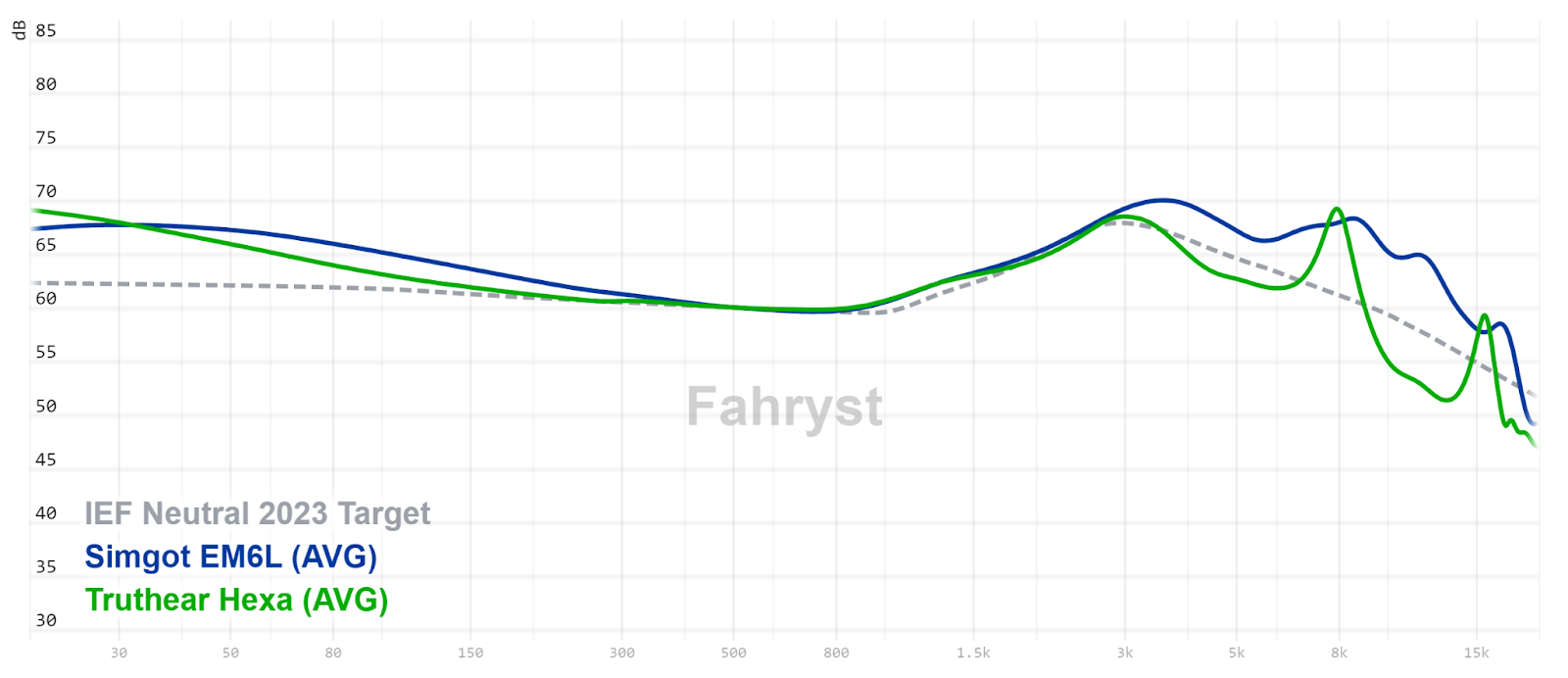
EM6L was another IEM that I enjoyed reviewing. They are very technical, especially for their price but also have some quirks. While tonally there are better IEMs in its price range including Simgot’s own offerings, I think technically they outcompete others I have heard so far. So it really depends on what you value more.
Disclaimers
Simgot EM6L Phoenix was provided to me by Simgot for free and I only paid for the customs fee. As I always say, everyone is biased one way or another so take everything you read with a grain of salt. Also I will try to be more concise and to the point in my reviews from now on without worrying about the word count etc. If you have any questions, please ask me in the comments and I will try to answer them to the best of my abilities.
Build and Accessories of Simgot EM6L
EM6L a.k.a Phoenix is kind of an experimental product from Simgot, at least that is the impression it gave me with some of its aspects. First of all, it is a hybrid, and a 1+4 one at that. It uses a 3-way crossover and has a 3D printed resin shell instead of a metal one Simgot usually uses. Apart from these, connectors used on EM6L are the ones known as QDC or C-pin type which we are familiar with from brands like KZ. They almost make EM6L look cheap but understated dark metal faceplates look gorgeous so I don’t really mind them.
The thing I loved about the build of EM6L is the shell size; they are not huge like other hybrids I used. Ear pieces are light and very comfortable which is a huge plus. Size and shape aren’t much different to usual single DD IEMs but nozzles aren’t angled like other Simgots. A minor gripe of mine here is that nozzles don’t have any contour or lip so some tips easily slips out of the nozzles.
Box and presentation is simple yet well thought out. I loved how Simgot placed an extra piece of felt on the cover where faceplates touch. Not that they needed because faceplates already had protective film on them. Unfortunately though, the box wasn’t abundant with accessories as usual. There was only an unbranded case, a cable and a decent set of tips.
Sound of Simgot EM6L
Tonality
EM6L, like most of the other Simgot IEMs, aims for the Harman 2019 Target and for the most part hugs the line very closely. There are, however, some quirks which may or may not be welcome depending on your tastes or what you think about Harman tuning style.
EM6L Phoenix is bright, there is no denying that, all the Simgot IEMs I have tried are bright. But the balance on EM6L is a little different. Bass on EM6L isn’t very prominent, some may even say they are light in note weight. For me they are just a smidge dry, that’s all. For those who love EA500’s richness, EM6L might not satisfy you, after all EW200 didn’t satisfy them either. Still bass quality is pretty good, that’s what we would expect from Simgot.
Mids are forward and have a fine presence, no surprises there. But again other Simgot IEMs do a little better here tonally. EM6L has a late peaking ear gain, which I’m not a big fan of. Piano, brass instruments and electric guitars have more energy than I’m used to.
Like I said earlier, EM6L is bright, especially the upper treble is very pronounced. This makes them very technical and Simgot somehow managed it without them being too harsh. They can get fatiguing in long listening sessions for some, but I wasn’t too bothered by them. Frequency response graphs don't show the usual 8k resonance peak because there is actually a dip there. While it negates the piercing effect that occurs with drivers of inferior quality, it also makes them lack a certain snap I got accustomed too. Still I prefer this over the piercing effect.
Technicalities
It might have come as I had a lot of negative things to say about EM6L so far, but those were nitpicks at best. They are well tuned but a little quirky, that’s all and they more than make up for those with their technical capability.
First of all, they let me hear lots of nuances I haven’t heard at this price point. They are very detailed and resolving. Like I said earlier, this is mostly attributed to the tuning which is kind of common among the high end sets. Drivers might not be of the highest quality but Simgot managed to get the best out of them. Unfortunately the timbre is slightly off. In fact it was the first thing I noticed when I put them in my ears for the first time. It’s not off putting but noticeable if you come from a very natural sounding set. Staging capabilities are fine but imaging and layering is quite good.
Comparison
Simgot EM6L vs. Truthear Hexa
Hexa has been one of the benchmarks below 100 USD and also being a hybrid, it was the most sensible choice for me to do a comparison.
- Hexa is mostly bass light except subbass. EM6L has more body and bass impact. Bass guitars are also more prominent on EM6L. EM6L slightly extends better in the subbass.
- EM6L is significantly brighter, and also has more vocal presence but not particularly harsh. In fact, it could be said that Hexa’s tuning is too safe. Hi-hats have a more satisfying energy on EM6L; there is also an occasional glare. Also EM6L has a dip at 8k which makes it lack a certain snap which Hexa and most other IEMs have. EM6L might get fatiguing in longer listening sessions.
- While not perfect, timbre is better and more believable on Hexa. EM6L is slightly off and nasally. EM6L is technically more capable than Hexa. It is more resolving and detailed. Also EM6L has better staging and imaging, it feels wider and deeper.
Considering how Hexa is one of the top choices below 100 usd, EM6L trading blows with Hexa is a compliment on its own.
Conclusion
EM6L was another IEM that I enjoyed reviewing. They are very technical, especially for their price but also have some quirks. While tonally there are better IEMs in its price range including Simgot’s own offerings, I think technically they outcompete others I have heard so far. So it really depends on what you value more.
kapsontong
Simgot is on a roll!
Jarlaxle
100+ Head-Fier
Pros: Nice timbre
Lush and rich presentation
Satisfying bass amount
Not harsh
Suitable for loud level listeners
Lush and rich presentation
Satisfying bass amount
Not harsh
Suitable for loud level listeners
Cons: Too bassy for most genres
Too warm
Bass quality is not the best, it is loose and pillowy
Not particularly technical
Details get lost
Too warm
Bass quality is not the best, it is loose and pillowy
Not particularly technical
Details get lost
Artti is a relatively new brand and R1 is their second IEM in the market. They are priced at 79 USD but can usually be bought for cheaper through their Aliexpress store. Although newly established, some things might look very familiar because they are manufactured by LetShuoer, at least that’s what it says on the back of the box.
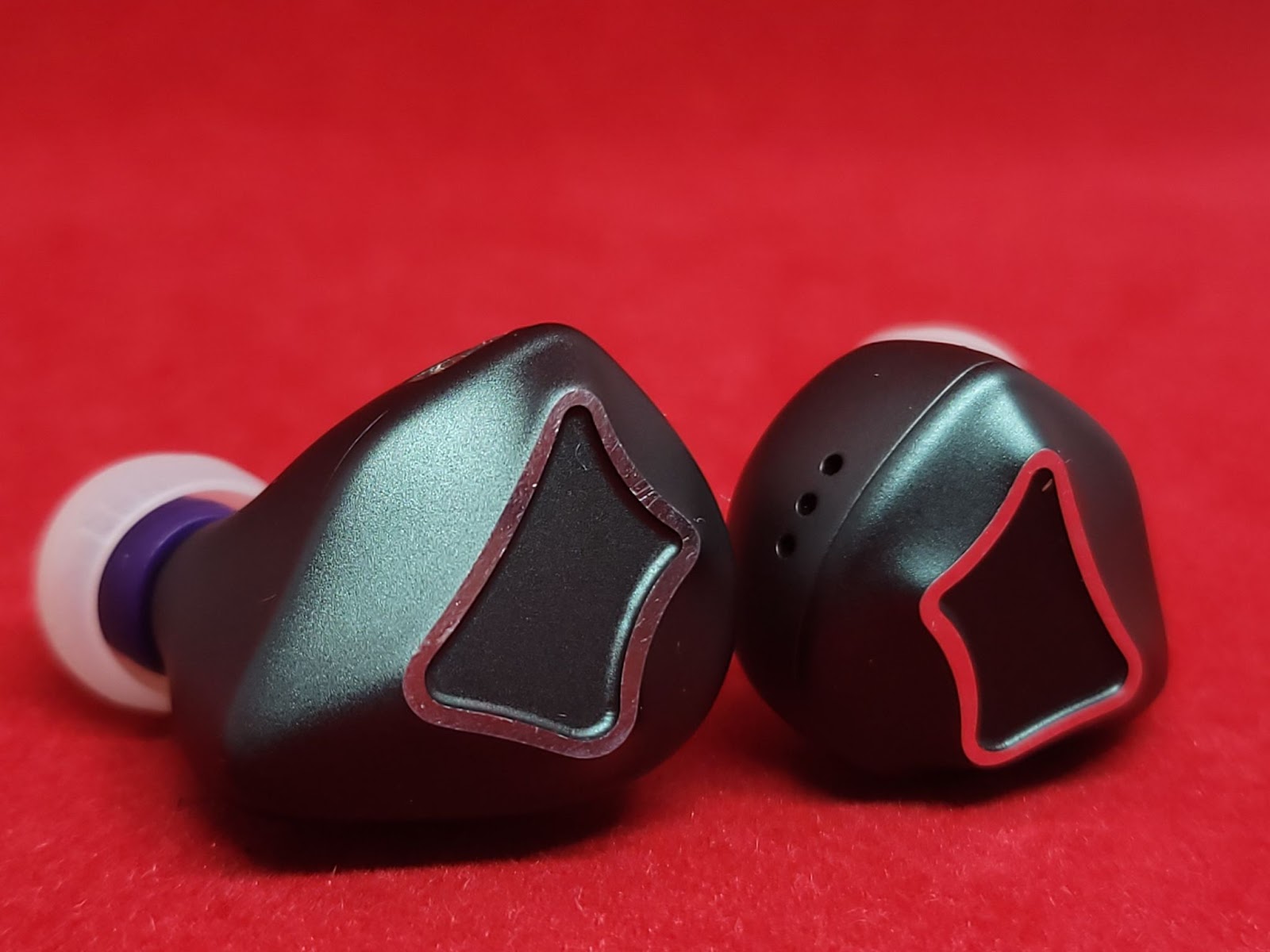
I bought Artti R1 with a discount in exchange for a review. As I always say, everyone is biased one way or another so take everything you read with a grain of salt. Also I will try to be more concise and to the point in my reviews from now on without worrying about the word count etc. If you have any questions, please ask me in the comments and I will try to answer them to the best of my abilities.
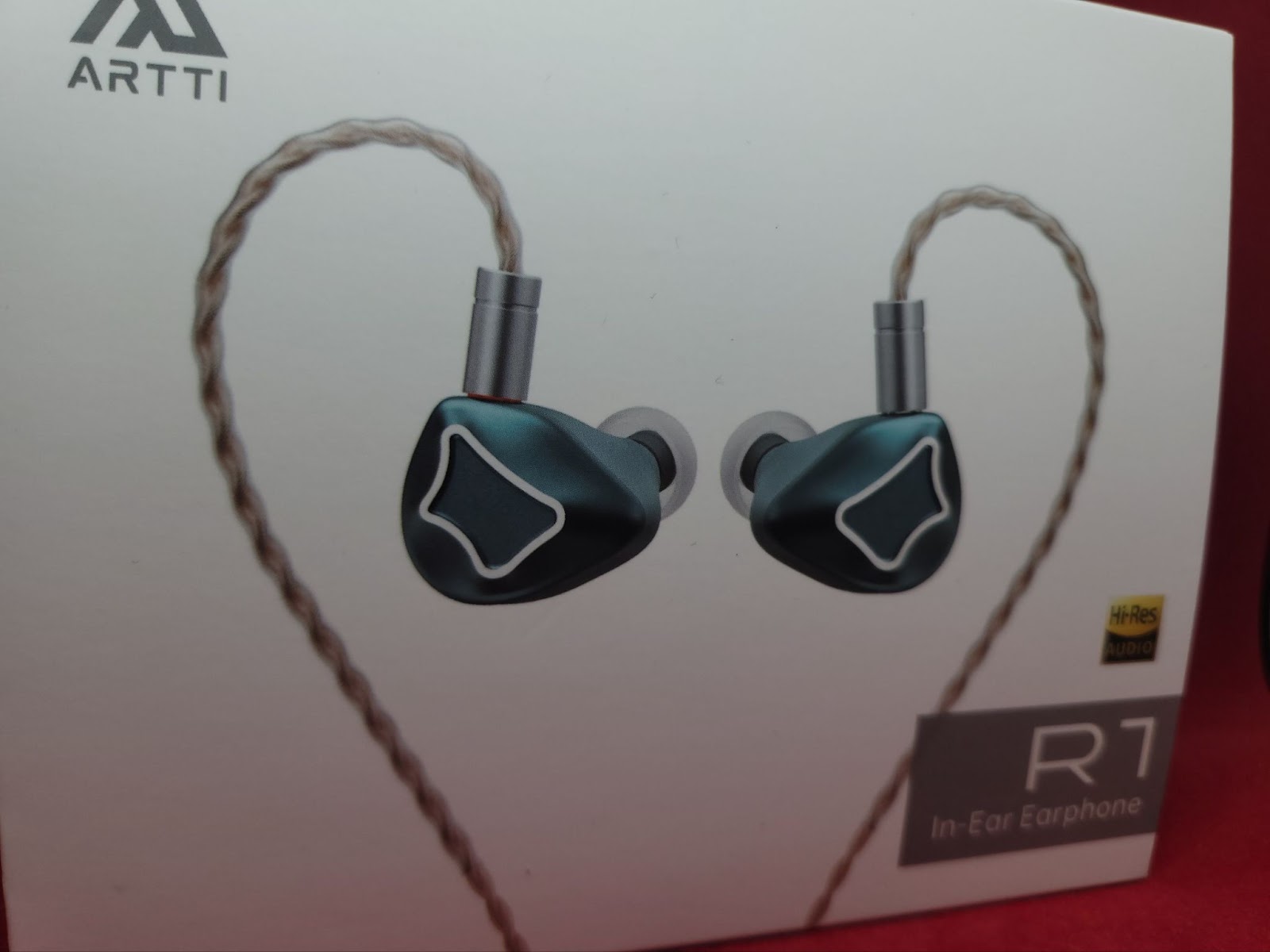
Shells of R1 made out of aluminum. They are relatively light and moderately comfortable. In fact, the shell shape is pretty much identical with LetShuoer’s DZ4, except DZ4 uses a resin shell.
Cable that the Artti R1 comes with is nothing extraordinary. They have both 3.5 mm and 4.4 mm options and I opted for 4.4 mm. Apart from the cable, R1 comes with two sets of generic tips and a case made out of fabric. All the accessories were placed in the case to save space in the box so the set provides a modest unboxing experience.
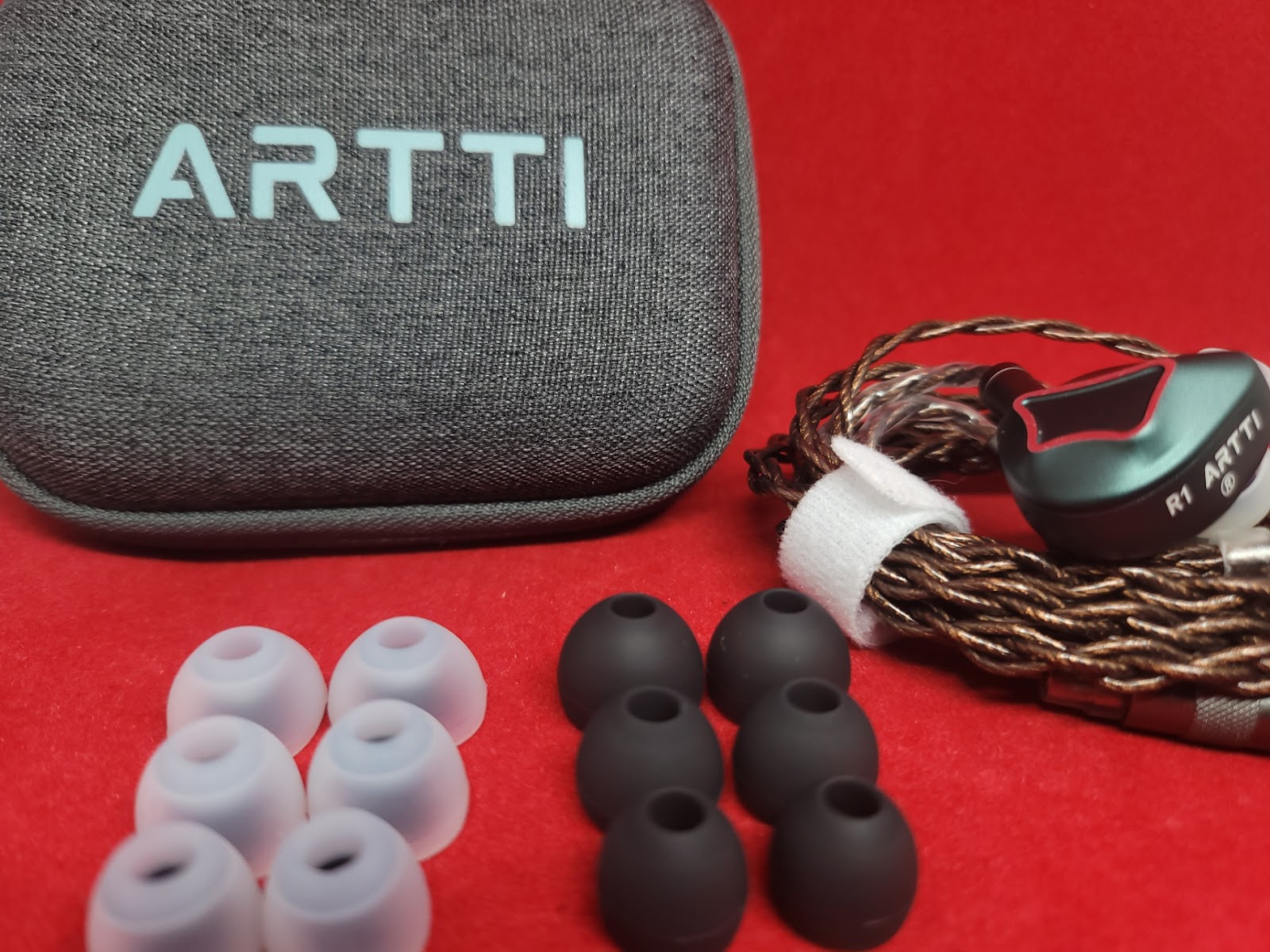
Bass on R1 is overpowering but also kind of loose. It bleeds into the mids, making the whole presentation warm, lush, rich and fuzzy.
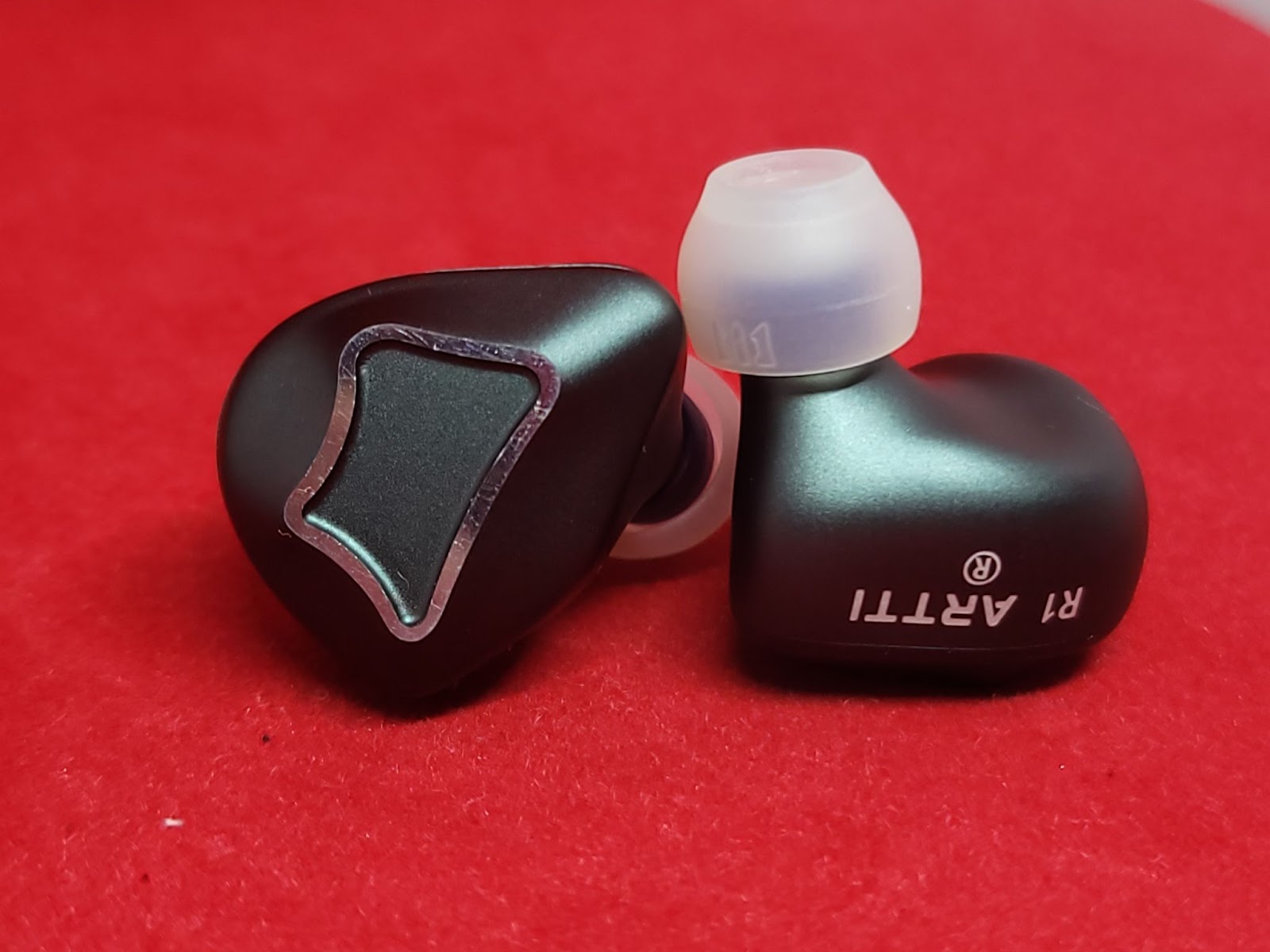
Mids aren’t particularly recessed but since bass is too overpowering, they usually get overshadowed. Upper mids however are emphasized so that they can still shine through with female vocals and electric guitars. When there aren't overpowering bass notes, this warm tonality makes them sound lush and romantic.
Treble is present but not overemphasized. Hi-hats have decent sparkle and don’t sound very blunted.
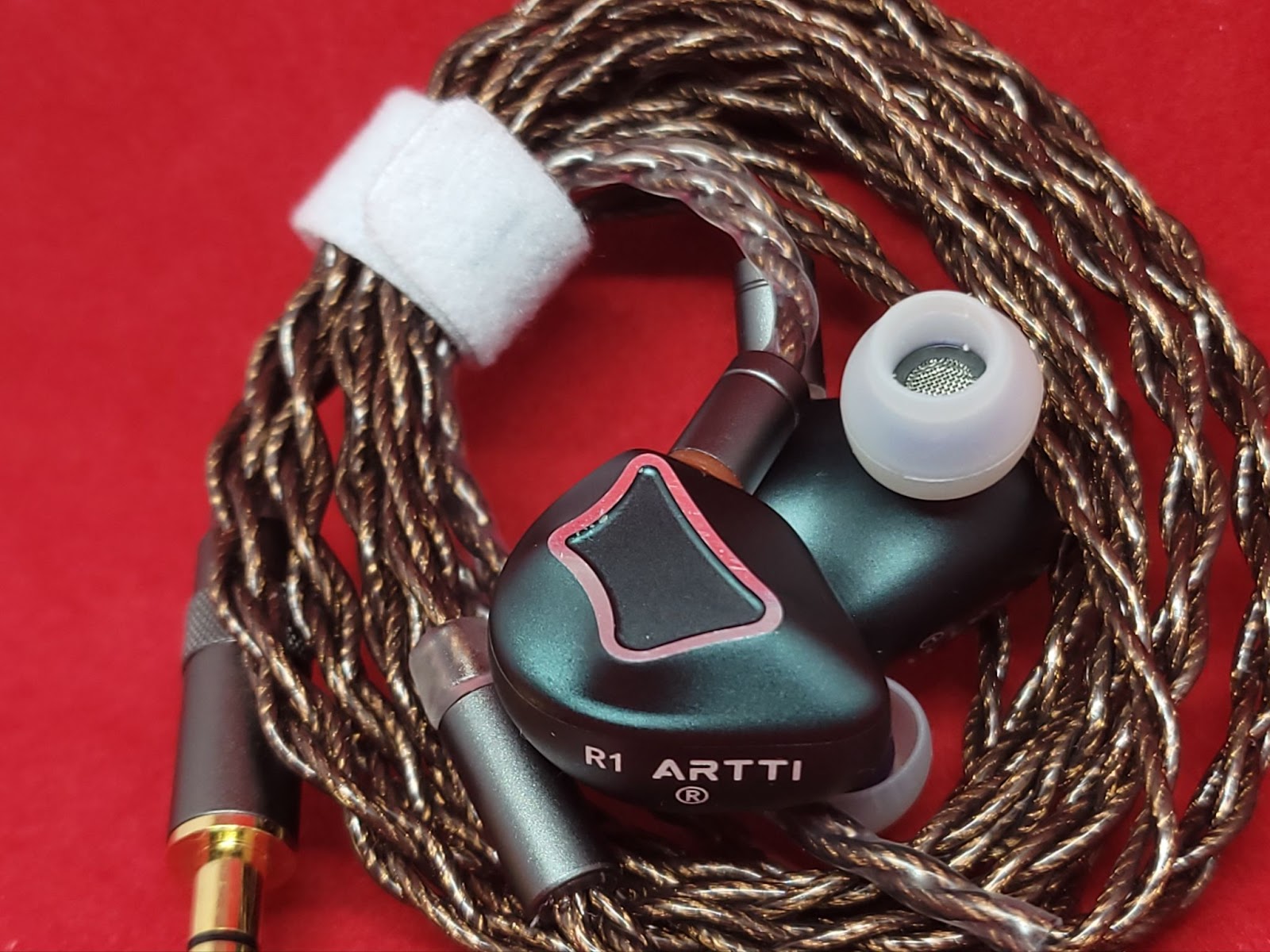
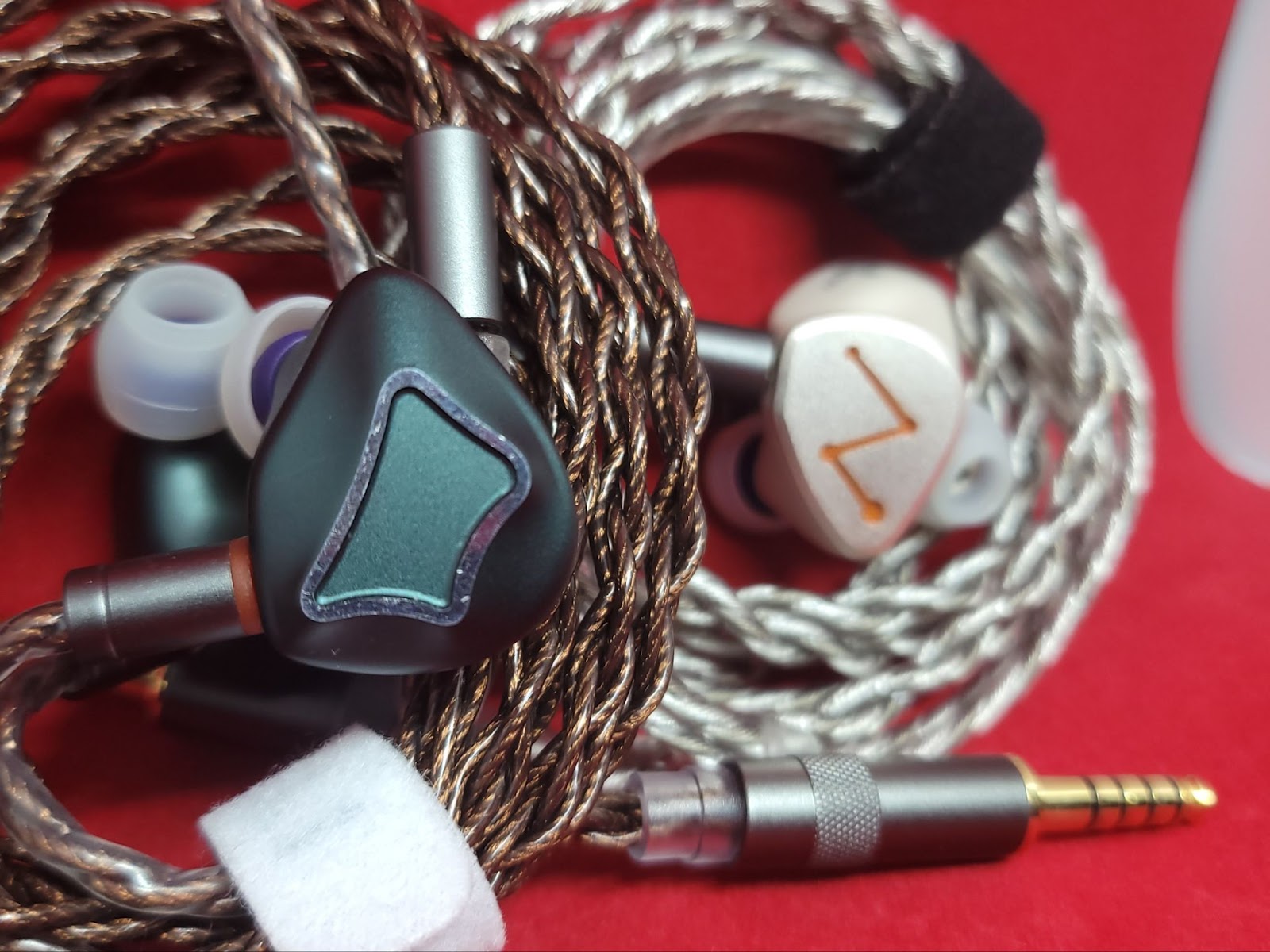
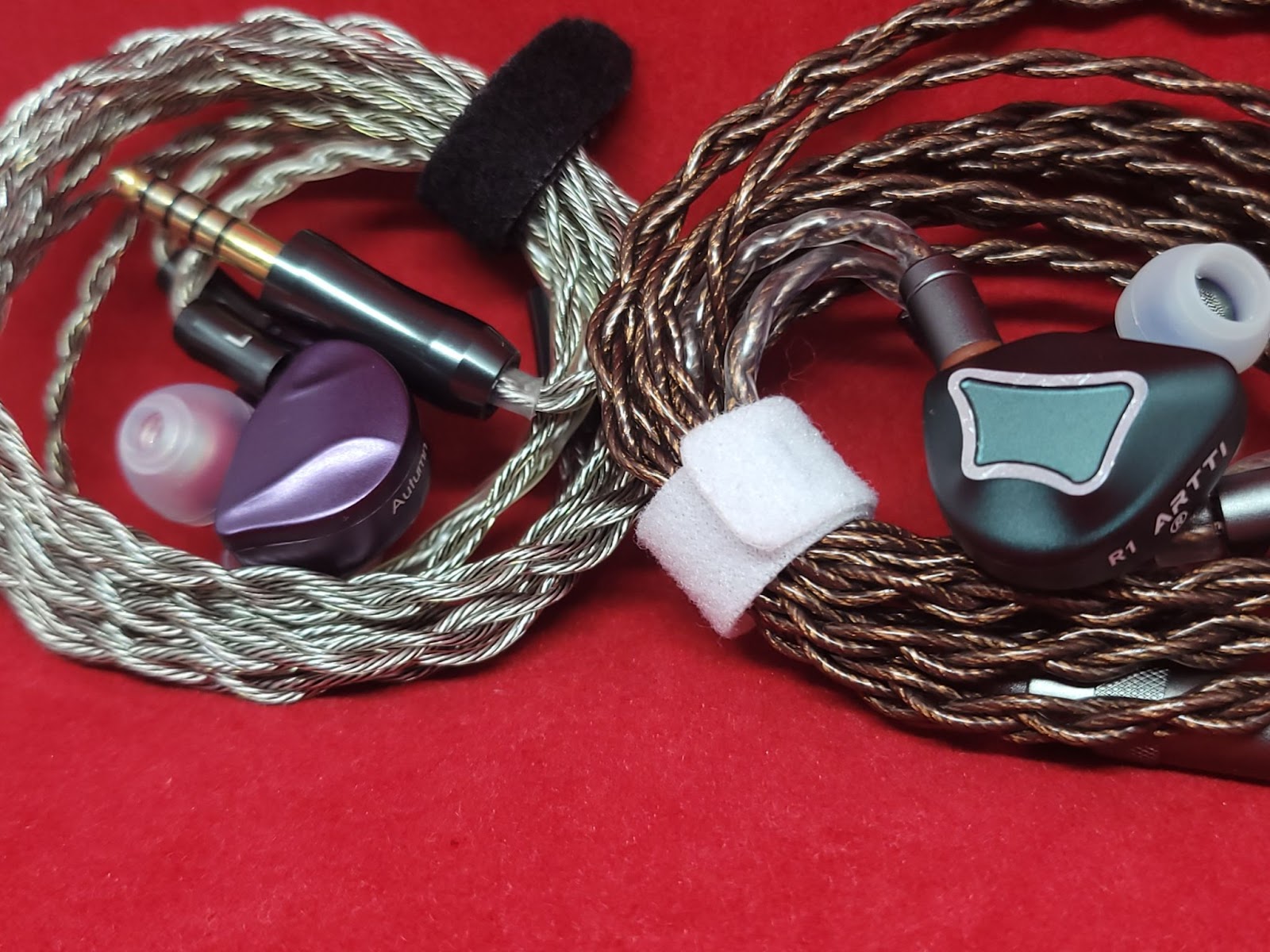
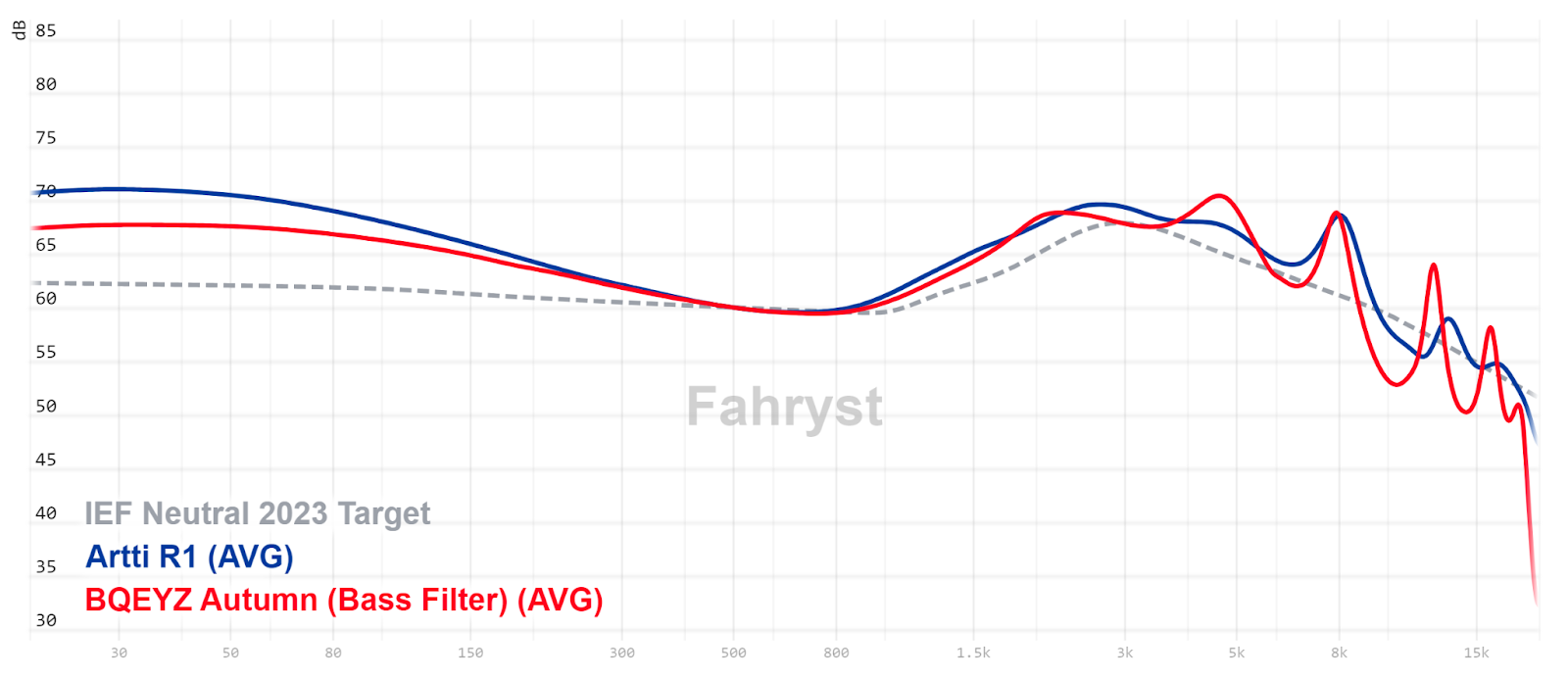
Disclaimers
I bought Artti R1 with a discount in exchange for a review. As I always say, everyone is biased one way or another so take everything you read with a grain of salt. Also I will try to be more concise and to the point in my reviews from now on without worrying about the word count etc. If you have any questions, please ask me in the comments and I will try to answer them to the best of my abilities.
Configuration, Build and Accessories of Artti R1
R1 uses three dynamic drivers per side, one being an 8 mm beryllium composite diaphragm driver for bass and two 6 mm PU suspension edge and titanium dome drivers for the rest of the frequency range. There is a crossover but no info about its design or whether it’s two or three way.Shells of R1 made out of aluminum. They are relatively light and moderately comfortable. In fact, the shell shape is pretty much identical with LetShuoer’s DZ4, except DZ4 uses a resin shell.
Cable that the Artti R1 comes with is nothing extraordinary. They have both 3.5 mm and 4.4 mm options and I opted for 4.4 mm. Apart from the cable, R1 comes with two sets of generic tips and a case made out of fabric. All the accessories were placed in the case to save space in the box so the set provides a modest unboxing experience.
Sound of Artti R1
Tonality
Artti R1 has a V-shaped tonality with the emphasis on the bass region.Bass on R1 is overpowering but also kind of loose. It bleeds into the mids, making the whole presentation warm, lush, rich and fuzzy.
Mids aren’t particularly recessed but since bass is too overpowering, they usually get overshadowed. Upper mids however are emphasized so that they can still shine through with female vocals and electric guitars. When there aren't overpowering bass notes, this warm tonality makes them sound lush and romantic.
Treble is present but not overemphasized. Hi-hats have decent sparkle and don’t sound very blunted.
Technicalities
Artti R1 doesn’t impress too much with its technical capabilities. Although having separate drivers helps a little, being a bassy IEM, the details can get lost in the mix. They don’t particularly feel wide either but depth is decent. Imaging is OK but nothing exceptional. All in all, technically they represent the price bracket they belong to.Comparisons
Artti R1 vs. LetShuoer DZ4
Comparing Artti R1 to LetShuoer DZ4 made sense because their prices are similar and DZ4 also uses 3 drivers plus a passive radiator.- R1 is much warmer, bassier, rumblier and richer. Bass guitars are especially pretty much absent in DZ4. Bass quality is slightly better on DZ4, R1’s bass feels pillowy. Both have good bass extensions.
- Although upper mids are similar, the warmth on R1 skews the balance towards darkness. DZ4 is clearer and sounds more neutral.
- Neither is exactly shouty, but both have more than enough energy in the upper mids, maybe R1 slightly more pronounced.
- R1 has slightly more bite in the treble but neither is harsh.
- R1 is technically more capable. Imaging is sharper and it resolves more nuances but unfortunately excess bass amount masks most of these nuances so DZ4 may come as more detailed. Both have moderate stage size. Timbre is slightly metallic on DZ4. R1 sounds lush, not the most natural but more natural than DZ4.
Artti R1 vs. BQEYZ Autumn (with Bass Filter)
I use Autumn in comparisons a lot because it is one of my favorite iems. In this case I believe Autumn’s bass implementation is what R1 could have used in my personal opinion.- R1 is again bassier, rumblier and warmer. Autumn’s bass is just right for me, it is also tighter and more textured.
- Bass bleed is also minimal on Autumn with just enough richness while remaining clean and clear. R1 is overly rich and lush compared to that.
- Upper mids are just a smidge shoutier and electric guitars have more energy on R1
- Autumn’s biggest flaw is the 5k peak. While it adds presence to the recordings, in some cases it gets sibilant and harsh. However spinfit tips reduce this peak and only the hint of harshness remains. Artti does not have such a problem. Autumn is airier in the upper treble.
- Staging is better on Autumn as it feels much larger. Imaging is also sharper than R1. R1 resolves nuances as much as Autumn if not more but the bass amount just overwhelms and masks the details.
Conclusion
Artti R1 is a fine IEM and a very good one for bass lovers. For me, the bass amount was just too much and it did more bad than good. It sounded great with EDM and Lo-Fi music, decent with rock and metal but I just couldn’t connect to my music with R1 as much as I like. So my rating is very personal and I’m sure others will like it more than I did. One thing is for sure though, now I have another IEM to recommend to basshead friends.
Last edited:





















